Life in Korea: Navigating Free Travel Opportunities for Foreigners
Discover the incredible opportunities to travel for free in Korea. From long-term programs to short promotional trips, explore Korea like never before!
Living in a new country offers an exhilarating adventure of discovering hidden gems and iconic landmarks. For foreigners residing in Korea, many fantastic tourism programs await, specially designed to promote the Korean peninsula's rich heritage and diverse culture.
Having lived here for a while, I've come across various free travel opportunities exclusively for foreigners. What sets Korea apart is the scale and organization of these programs, unparalleled by what I've seen in other countries. However, before we delve into the details, it's essential to understand Korea's emphasis on social media influence. The success of these programs primarily hinges on promoting Korean tourism on platforms like Youtube, Instagram, and TikTok. To participate, one typically needs a following on these platforms, with the bare minimum usually being 500 followers on Instagram.

Long-term Commitment: The Major Leagues
Numerous programs cater to different interests and durations. Institutions like the Korea Tourism Organization, the Ministry of Foreign Affairs, and the Seoul City government sponsor some of the most prestigious. These programs can stretch over 8-9 months and are highly competitive due to their comprehensive coverage.
Large programs always prepare gifts for participants
View this post on Instagram A post shared by 사샤 ~Sasha in Korea~ Travel, Expat Tips, Life (@sasha.in.korea)
Every year, around April, applications begin. These programs are more than mere sightseeing; they're about immersing oneself in diverse cultures, relishing authentic cuisine, and conversing with locals. Once you've submitted your application, watch out for updates from the respective travel agencies. Often, an interview is the next step in the selection process.
Once accepted, the real adventure unfolds. Depending on the program, you might be on group trips or assigned individual missions. Despite some programs sharing sponsors, each offers a distinct experience, ensuring there's always something new to discover.
Example of a group activity and content I created for that trip
Most of these initiatives are managed by travel agencies under governmental sponsorship. Therefore, there's no singular point of reference to stay updated. But fear not; on my Instagram @sasha.in.korea , I consistently spotlight these golden opportunities, ensuring you never miss out.
Another more flexible option is the promotional trips, often spanning one or two days, organized specifically for bloggers and influencers. These trips are perfect for creating content about Korea's beauty and charm. Some even compensate for your time and content, although the eligibility criteria might be higher.
Photos from one of the sponsored trips
Staying updated is the key. Following multiple travel agencies catering to foreigners is crucial to ensure you don't miss these opportunities. Here are my favorite profiles; I traveled with each numerous times.
- @funday.korea.networks
- @gshuttlebus
- @plus_planner
Enjoying the content and want to support my journey?
Consider dropping a few bucks in the ' Coffee Fund ' tip jar 😃 Treat me to a coffee today, and let's keep exploring together!
Seoul Housing 101: Where to Rent and How to Navigate the Market
How to get around in south korea: essential public transport tips, planning your dream korean adventure: travel tips you need to know.
In My Korea
Complete South Korea Travel Guide 2024: Korean Travel Tips
Planning a trip to Korea but not sure where to start? First-time traveller who isn’t sure if Korea is the right country for your next trip? Worried about travelling to Korea and facing problems with the Korean language, culture, money, Internet, transportation, hotels, food, or etiquette? Then this complete South Korea travel guide is packed full of tips that you’ll certainly need.
You’ll find all the best Korean travel tips and advice in this article. Whether you’re a first-time traveller to Korea, or you’ve visited before, this South Korea travel guide will show what to see, when to travel, and which places to visit, as well as help you avoid any difficult situations or surprising culture shocks.
This guide is designed to walk you through everything you need to know to prepare for your trip to Korea. You can use it to plan your itinerary, to pre-book travel essentials, to learn about what festivals and seasonal events are on, and to find more reasons to want to travel to Korea right now.
Table of Contents
Affiliate Disclaimer : This site contains affiliate links and I may earn commission for purchases made after clicking these links.
What’s In This South Korea Travel Guide
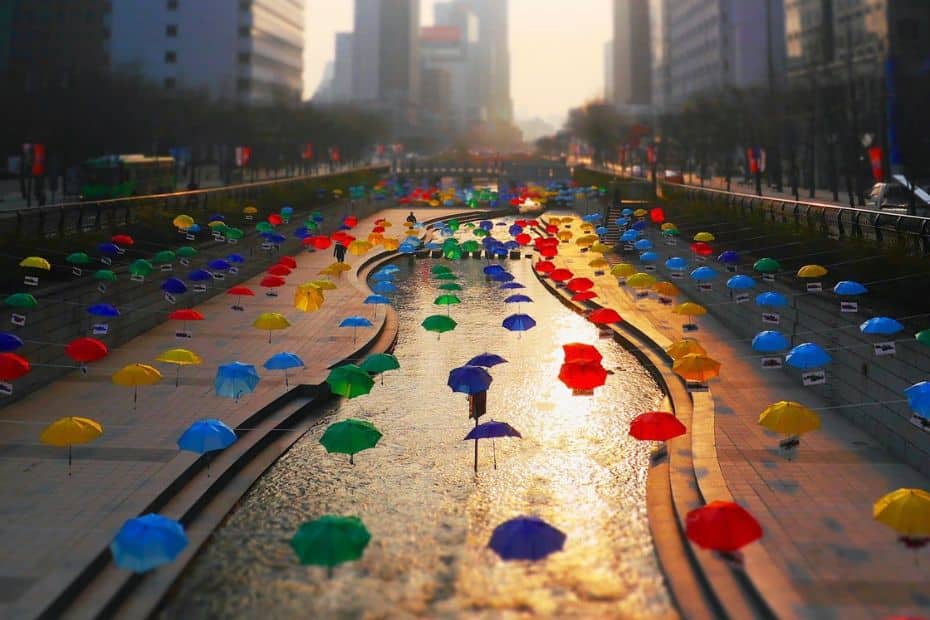
This South Korea travel guide covers all the essential information you need to plan a trip to Korea. This is useful for first-time travellers to Korea who might not be aware of uniquely Korean cultural and travel issues. Even if you’ve visited Korea before, I’m sure you can learn a lot from this travel guide.
This article contains lots of insights and knowledge about travelling to Korea and is quite long. I’ve added links in each section to articles that provide more information about each topic. Therefore, I suggest viewing this South Korea travel guide on a desktop computer as it will be easier to read.
What Are You Looking For?
To help make it easier for you to find what you’re looking for, I’ve broken this article into the following sections. Click the quick links below to jump straight there or keep reading through all parts.
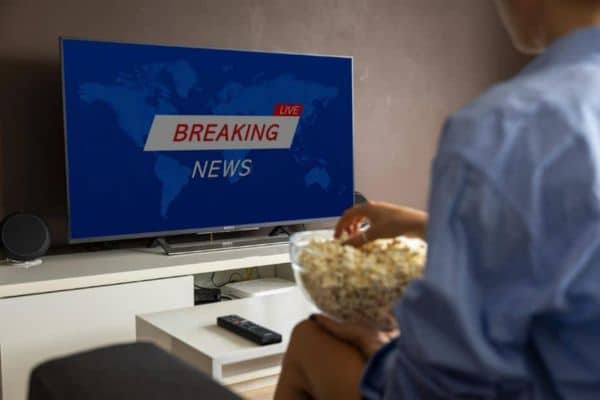
Latest Travel News
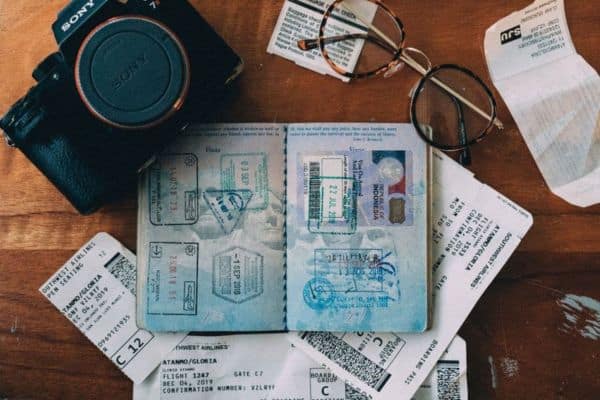
Entry Requirements
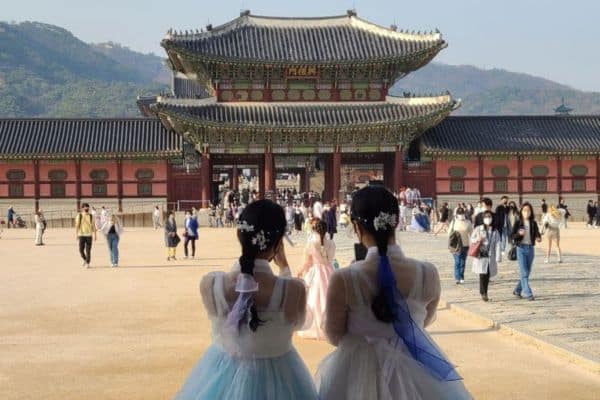
Why Visit Korea
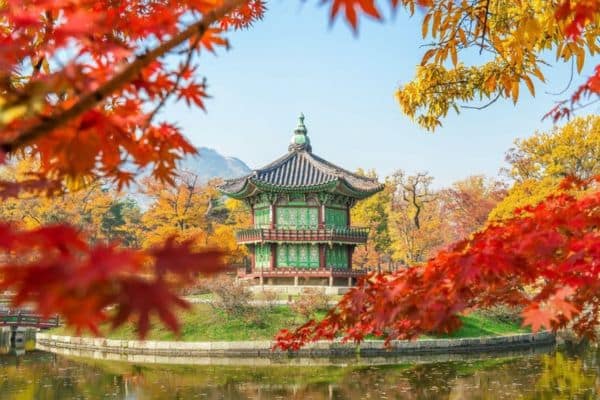
When To Visit
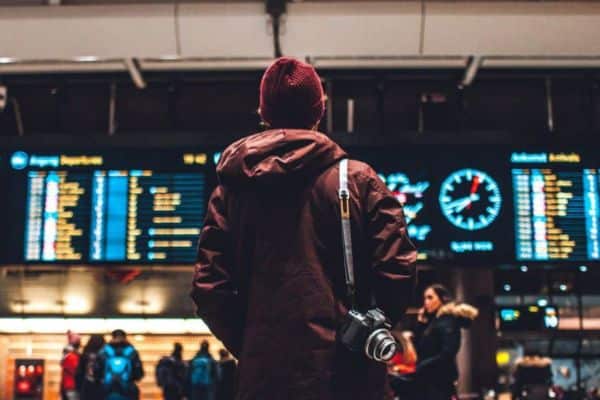
Flights To Korea
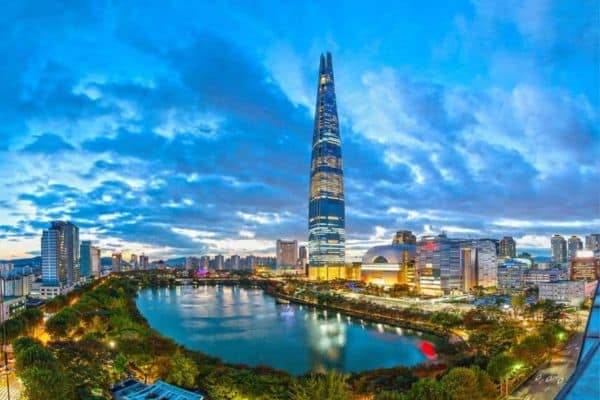
Where To Stay

Korea Travel Costs
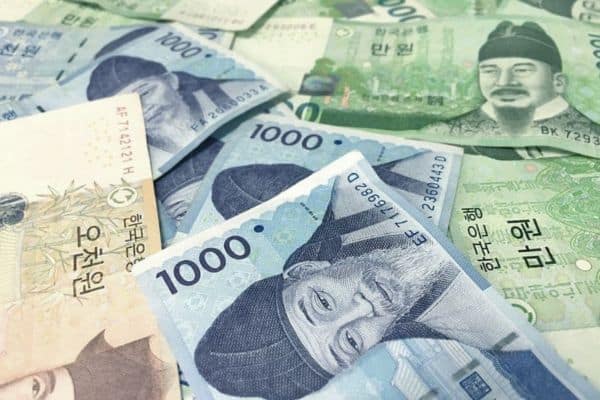
Travel Money
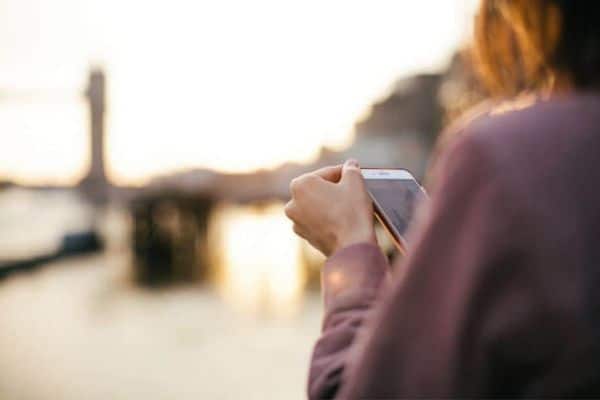
Phones & Internet
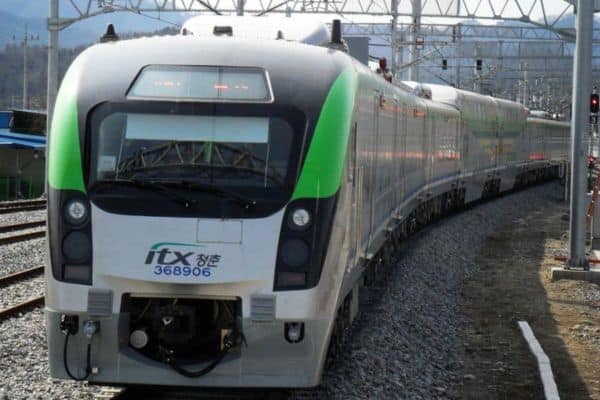
Public Transport
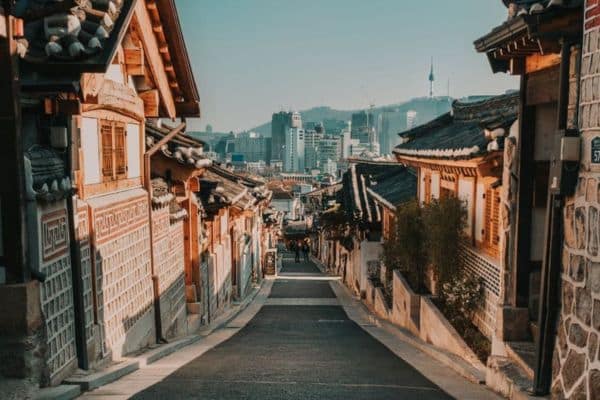
Where To Visit
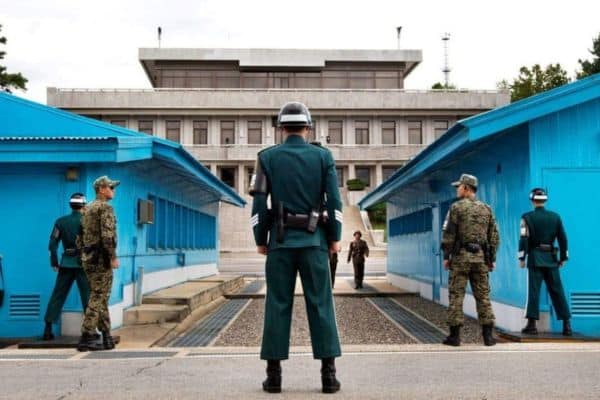
Seoul Day Tours
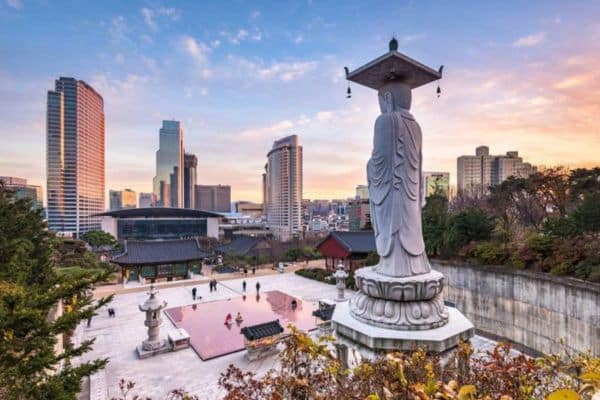
Sightseeing Spots
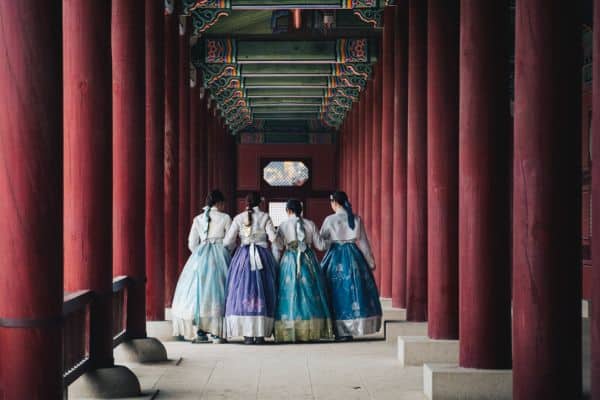
Korean Activities
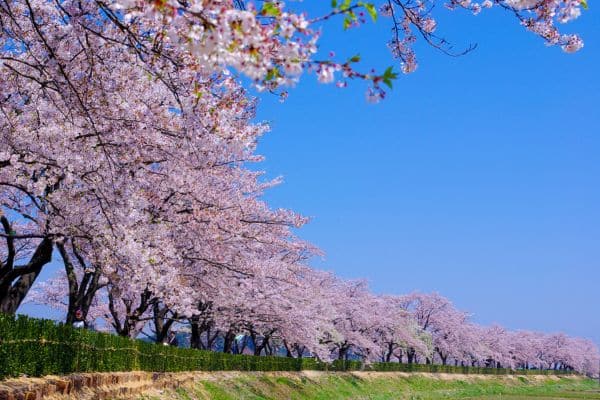
Korean Festivals
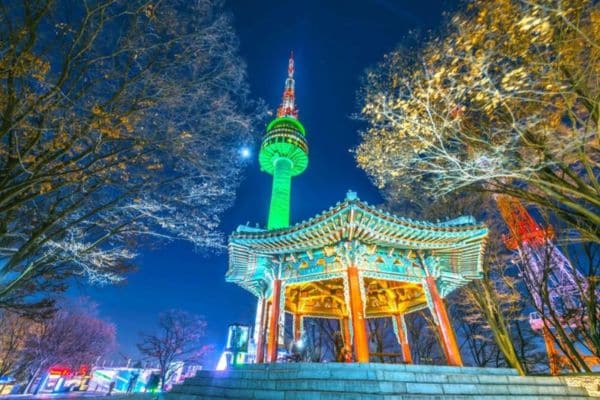
1-Week Itinerary
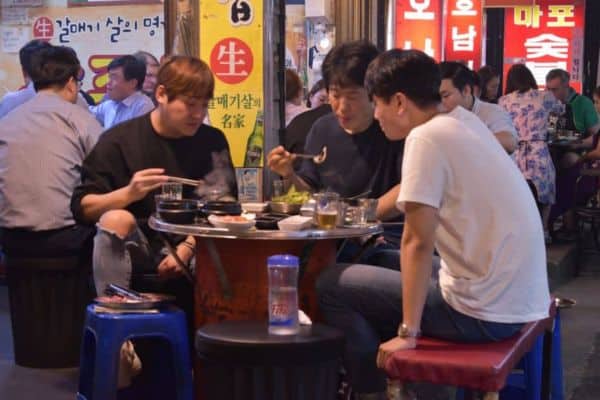
Culture Issues
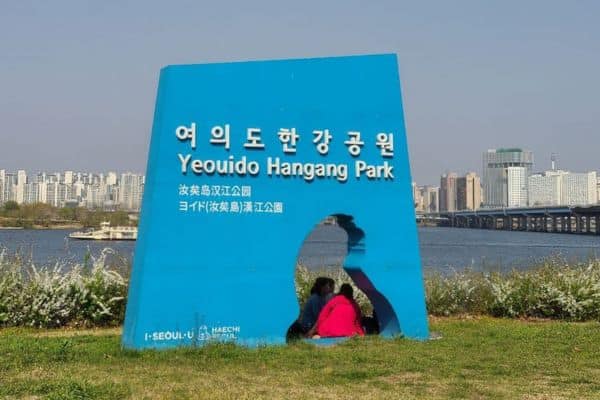
Language Issues
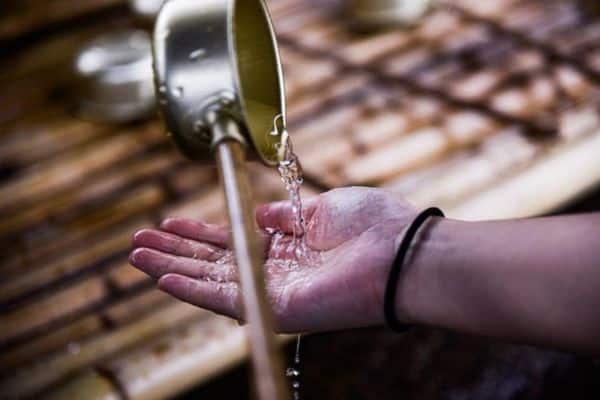
Health & Safety

Korean Travel Tips
Korean Travel News And Travel Restrictions 2024
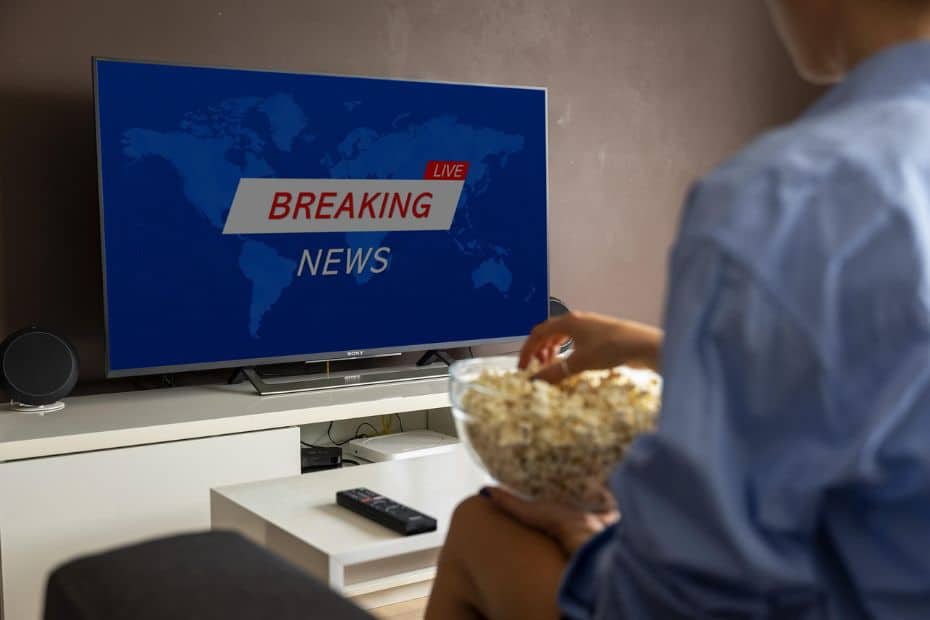
This section of the South Korea travel guide will show you the latest travel news and restriction updates, including any temporary or permanent changes to the entry process, visa changes, and other things that might affect travel to Korea. COVID-related updates will also be posted here.
Latest Korean Travel News In 2024
This section will detail any interesting or important travel news that could affect travellers to Korea, such as price increases in public transport, travel changes, new services, or closures.
The Korean government is aiming to boost tourism to Korea by doubling the amount travellers can claim back in tax when shopping in Korea. From 2024, travellers will be able to claim up to 5,000,000 KRW on eligible purchases with a limit of 1,000,000 KRW tax back per transaction. Source : Korea Herald
From August 2023, the price to travel on buses in Seoul is set to rise. Bus fares will rise to 1,500 KRW per journey. From October 7th, 2023, Seoul’s subway fares will rise to 1,400 KRW per journey. Other cities in Korea will enact similar rises throughout 2023 to cover higher costs of public transportation. Source : Korea Herald
From July 15th, 2023, the requirement to register your health condition through the Q-Code portal will be scrapped. Source : Korea Times
From July 3rd, 2023, children aged 17 years and younger, as well as adults aged 65 and older, will no longer need to apply for a K-ETA to travel to Korea. Furthermore, the validity period has been increased from 2 years to 3 years to make travelling to Korea easier. Source: K-ETA website .
From June 2023, Korea will end almost all pandemic-related restrictions for tourists and locals. Masks will no longer be necessary except in hospitals and infected people no longer face mandatory self-isolation (although the government still recommends 5 days self-isolation). Q-Code requirements haven’t been mentioned, however. Source : Korea Herald .
From April 2023 until December 2024, travellers from 22 countries won’t have to complete a K-ETA when visiting Korea, saving time and money for citizens of those countries. People from other countries still need a K-ETA. Source : K-ETA
The 22 countries temporarily excluded from the K-ETA requirement are Australia, Austria, Belgium, Canada, Denmark, Finland, France, Germany, Hong Kong, Italy, Japan, Macao, Netherlands, New Zealand, Norway, Poland, Singapore, Spain, Sweden, Taiwan, UK, US (including Guam).
From April 2023, all foreigners under 19 years old (18 and under) can now enter major royal palaces and tombs, including Seoul’s Gyeongbokgung Palace, for free. Previously, all foreigners were made to pay a fee to enter. Source : Korea Herald
From March 2023, a quarter of all buses in Seoul will refuse cash payments and allow only card payments using transportation cards, such as the T-Money card. Seoul’s night buses won’t be included for now, and 262 of Seoul’s 370 bus routes will still accept cash. Expect further increases in cash-free buses in the future. Source : Korea Herald
From February 2023, the base fare for a taxi journey in Korea has increased by 1,000 won to a minimum of 4,800 won. The distance that the base fare applies has also been shortened from 2km to 1.6km, which will make fares more expensive. Source : Korea Times
What Are the Current COVID Restrictions In Korea In 2024?
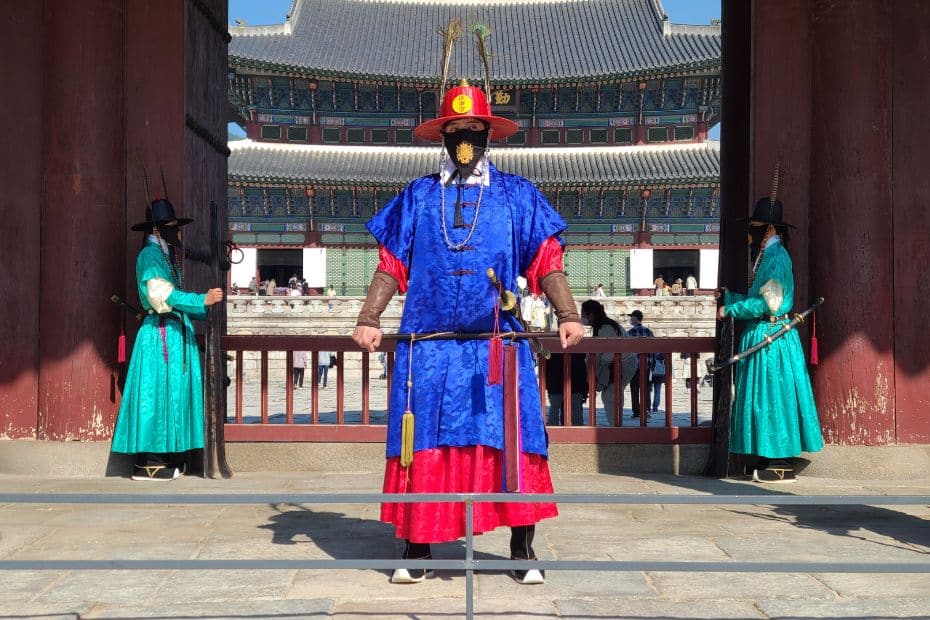
Korea has been removing COVID-related restrictions in the country throughout 2022 and 2023. It is no longer necessary to show a QR code to enter a building and restrictions involving masks and health checks have mostly gone. The latest COVID-related rules for Korea are as follows .
Masks : From Monday, March 20th, Korea has removed the mandatory mask rule for public transport, one of the final places that masks were required for the general public. The only places that require a face mask (from June 1st) are in medical facilities (hospitals). Masks are not mandatory elsewhere, including in schools, shops, restaurants or anywhere outside. Source : Korea Herald
Self-Quarantine : From June 1st, Korea will no longer impose a mandatory self-isolation period on infected people. The government instead ‘recommends’ a period of self-isolation for 5 days to reduce the chance of transmission to other people. Source : Korea Herald
For further details about the latest COVID requirements for entering or travelling in Korea, check out the second section of this South Korea travel guide, which has a list of all the updated entry requirements, including visas, tests, and other considerations.
Planning to visit Korea? These travel essentials will help you plan your trip, get the best deals, and save you time and money before and during your Korean adventure.
Visas & K-ETA: Some travellers to Korea need a Tourist Visa , but most can travel with a Korean Electronic Travel Authorisation (K-ETA). Currently 22 Countries don’t need either one.
How To Stay Connected : Pre-order a Korean Sim Card or a WiFi Router to collect on-arrival at Incheon Airport (desks open 24-hours). Alternatively, download a Korean eSIM for you travels.
Where To Stay : For Seoul, I recommend Myeongdong (convenient), Hongdae (cool culture) or Gangnam (shopping). For Busan, Haeundae (Beach) or Seomyeon (Downtown).
Incheon Airport To Seoul : Take the Airport Express (AREX) to Seoul Station or a Limo Bus across Seoul. Book an Incheon Airport Private Transfer and relax to or from the airport.
Korean Tour Operators : Tour companies that have a big presence in Korea include Klook , Trazy , Viator , and Get Your Guide . These sites offer discounted entry tickets for top attractions.
Seoul City Passes : Visit Seoul’s top attractions for free with a Discover Seoul Pass or Go City Seoul Pass . These passes are great for families and couples visiting Seoul – you can save lots.
How To Get Around : For public transport, grab a T-Money Card . Save money on Korea’s high speed trains with a Korea Rail Pass . To see more of Korea, there are many rental car options from Klook , EconomyBookings , and RentalCars .
Travel Money : Use money exchanges near Myeongdong and Hongdae subway stations for the best exchange rates. Order a Wise Card or WOWPASS to pay by card across Korea.
Flights To Korea : I use flight comparison sites such as Expedia and Skyscanner to find the best flights to Korea from any country. Air Asia is a good option for budget flights from Asia.
Travel Insurance : It is important to insure your trips to protect yourself against the unexpected. World Nomad is a specialized travel insurance provider with options for different coverage for travellers from around the world. You can also purchase cover when you are already travelling.
How To Learn Korean : The language course from 90 Day Korean or Korean Class 101 both have well-structured lessons and lots of useful resources to help you learn Korean.
Current Requirements To Travel To Korea In 2024
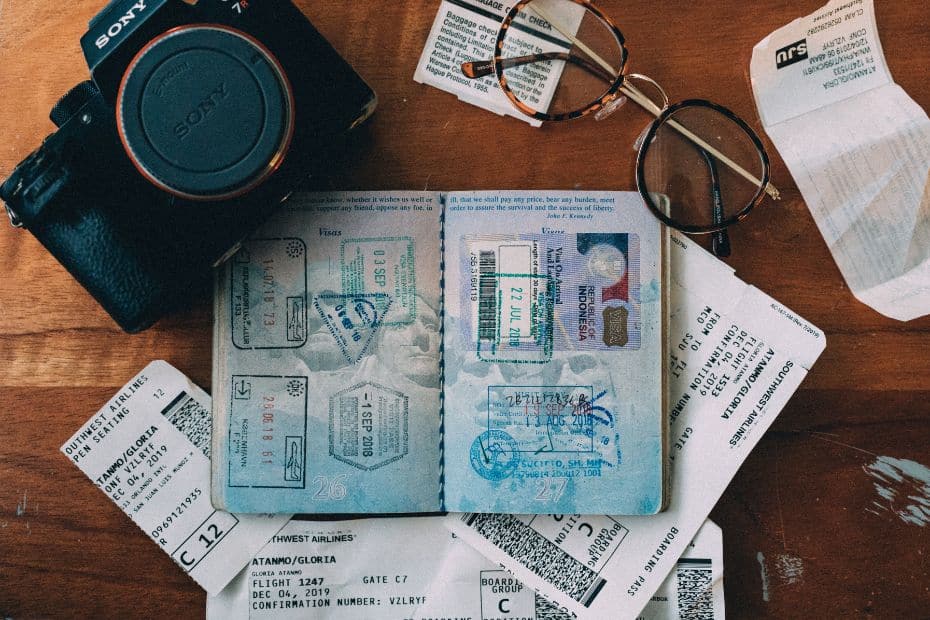
This part of the South Korea travel guide is for tourists . If you plan to travel for business, employment, or other reasons, check your nearest Korean embassy for the latest travel requirements.
Most of the restrictions and requirements for travelling to Korea have now been scrapped. You can see what entry and travel rules are in place for Korea in the table below:
The following section provides more information and exceptions about these requirements:
COVID-positive travellers should avoid travelling to Korea : To avoid infecting others on the way to Korea, as well as in Korea, the Korean government recommends that you shouldn’t travel to Korea if you exhibit COVID-symptoms or have tested positive. Self-quarantine is mandatory in Korea.
There are no PCR or other testing requirements : It is not necessary to take a PCR or other test before travelling to Korea. However, you will be asked to take a test if you show symptoms of COVID or similar illnesses when travelling to or arriving in Korea.
There is no quarantine on arrival : Travellers to Korea no longer need to quarantine when entering Korea. From June 1st, there is only a ‘recommended’ 5 day self-isolation period for infected travellers, but this is not enforced.
Complete the self-health check before or on arrival : From July 15th, 2023, travellers to Korea no longer need to complete a Q-Code self-health check or declare their health status on arrival.
Apply for a K-ETA or tourist visa before travelling : You need to apply for either a K-ETA or tourist visa for South Korea before flying to the country. Entry will be prohibited without the correct one. From April 1st, 2023 until December 31st, 2024, 22 countries are excluded from the K-ETA.
If you’re not sure which of these you need to apply for, more information is provided in the next section of this South Korea travel guide about the K-ETA and tourist visa for Korea.
K-ETA (Korean Electronic Travel Authorisation)
The K-ETA (Korean Electronic Travel Authorisation) is an online travel authorisation that visa-free foreign visitors aged 18 to 65 must obtain before entering the Korea for tourism, visiting relatives, participating in events or meetings, and for business purposes other than profitable activities.
Tourists from 112 eligible countries need to apply for a K-ETA before travelling to Korea and won’t be allowed to board a flight to Korea without it. The approval process isn’t difficult, but requires accommodation details, travel dates, and personal details such as passport number, etc.
From April 1st, 2023 until December 31st, 2024, the Korean government has decided to suspend the K-ETA requirement for travellers from the following 22 countries:
Australia, Austria, Belgium, Canada, Denmark, Finland, France, Germany, Hong Kong, Italy, Japan, Macao, Netherlands, New Zealand, Norway, Poland, Singapore, Spain, Sweden, Taiwan, UK, US (including Guam).
The aim is to reduce the burden of travellers coming to Korea and to encourage more people to visit Korea during the ‘Visit Korea Year’, which runs during 2023 and 2024.
Source : K-ETA website news .
From July 3rd, 2023, the Korean government will no longer ask for travellers who are 17 years and younger, or 65 years and older, to apply for a K-ETA when visiting Korea. These are ages based on the time you travel to Korea, not the age when you apply to travel.
Furthermore, the validity period of the K-ETA is now 3 years, not 2 years. The Korean government has decided to extend the validity period to make it easier for people to travel to Korea.
The K-ETA is based on your nationality , not the country you’re travelling from. That means, if you require a tourist visa from your home country (e.g. the Philippines), but are travelling from a country that requires a K-ETA (e.g. the USA), you can’t use the K-ETA to travel to Korea.
Tourists should apply as far in advance as possible at the official K-ETA website. If you would like to know more about the K-ETA, check out my article explaining what is the K-ETA . The K-ETA costs 10,000 KRW (about $9.00 USD). If you are charged more than this, you’re on the wrong site.
Official K-ETA website
Not sure if you need a K-ETA? Check out this infographic to find out.
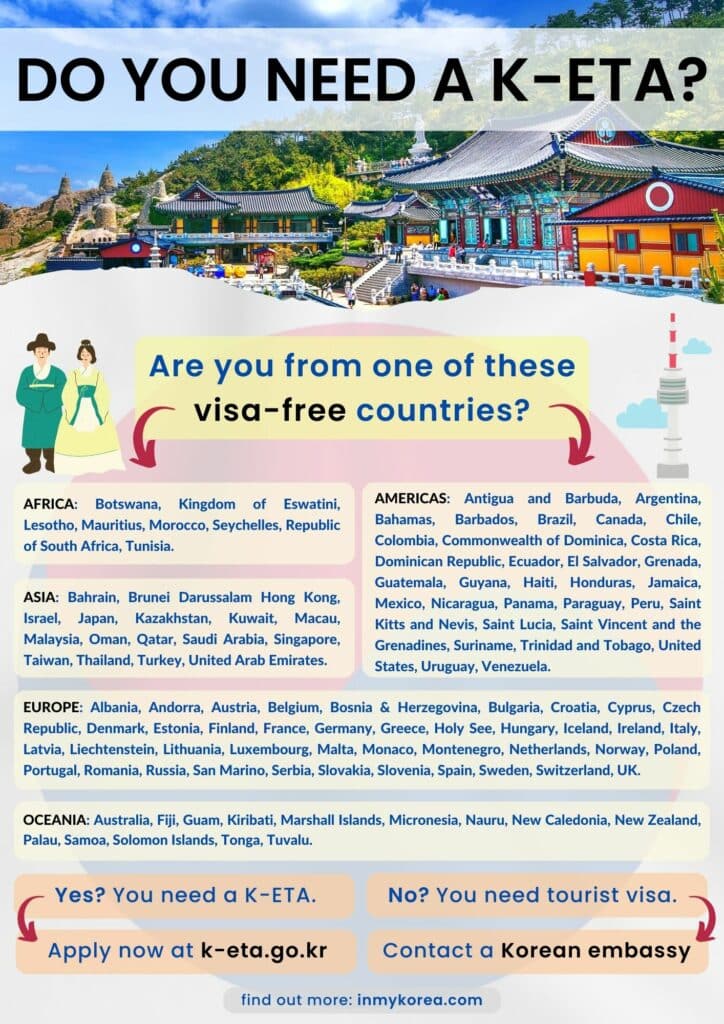
Will The K-ETA End In The Future?
The K-ETA will continue for the indefinite future. It is not a pandemic-related travel restriction but a permanent feature that just happened to start in 2021. The Korean government have stated that the K-ETA will be ongoing and other countries and areas, such as the EU, are planning similar ETAs.
Update : In July 2023, the Korean government stopped requiring children 17 years and younger and adults 65 years and older to apply for a K-ETA. The validity period was also increased to 3 years.
Update : In April 2023, the Korean government suspended the K-ETA for travellers from 22 countries (listed previously). This is in an effort to reduce the burden on travellers visiting Korea during the ‘Visit Korea Years’ of 2023 and 2024. This lasts until December 2024, but could possibly go on longer.
Tourist Visas For South Korea
Tourists that aren’t from one of the 112 countries that require a K-ETA to travel to Korea will need to apply for a tourist visa. This includes nationals from countries such India, Indonesia, Pakistan, and the Philippines. Tourist visas are based on nationality (passport), not country of residence.
The process to apply for a tourist visa differs depending on the country and may be as simple as submitting an application at the Korean embassy in the country you live in. For other countries, it may be necessary to submit extra information like bank statements and a full itinerary.
If you need a tourist visa for South Korea, contact your nearest Korean embassy as soon as you can to start the process. Tourist visas may be rejected, delayed, or take longer than expected. For some countries, such as the Philippines, it is necessary to apply through a specialist visa agency.
Transit Tour Visas For South Korea
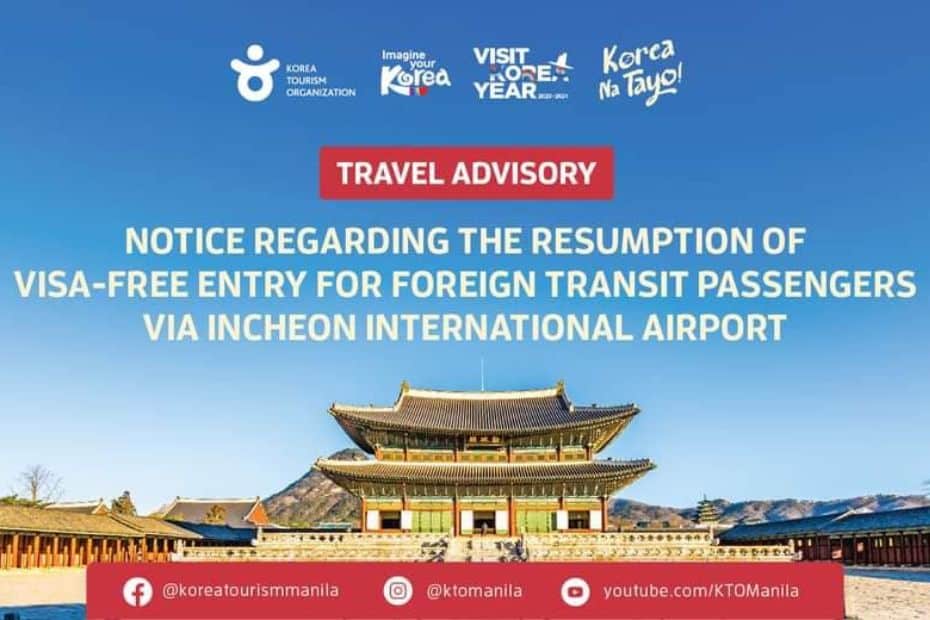
Visa-free entry for foreign transit passengers at Incheon Airport will resume from May 2023 after being suspended for 3 years during the pandemic. There are two types of visa-free transit entry methods for travellers to Korea, they differ in length, requirements, and eligibility.
The first type of visa-free entry for transit passengers is open to all travellers to Korea and allows entry for 3 days, as long as they take a transit tour from Incheon Airport. The second type of visa-free entry for transit passengers is available for 30 days, but only from travellers from 36 select countries.
Visa-Free Entry For Transit Passengers (3 Days)
From May 15, 2023, travellers from any country can travel from Incheon Airport to the Seoul Metropolitan area for up to 3 days, as long as they book at least 1 transit tour from Incheon Airport. If Korea is not their final destination, they’re free to explore more of Seoul after the tour.
There are a wide range of transit tours available from Incheon Airport, including cultural, historic, food, shopping, and entertainment tours. See the sights of Seoul’s most popular places in a few hours, or stay for longer and see more. You can find out more about transit tours from the Visit Korea website .
Requirements : To be eligible for a transit tour visa, travellers must:
- Have an onward flight to their home country or a 3rd country after Korea.
- Participate in a transit tour program by a designated travel agency.
- Stay within the Seoul Metropolitan area only.
- Have more than 2 hours between connecting flights.
Eligible countries : Visa-free entry with a transit tour is open to passengers of all countries, as long as they meet the above requirements.
Tip : If you have a transit tour in Korea, I recommend staying in Hongdae , as there is a direct train from Incheon Airport to Hongdae called the All-Stop Airport Line. Hongdae is also a really fun place where you can see lots of culture, try Korean dishes, and pack your suitcase with Korean souvenirs.
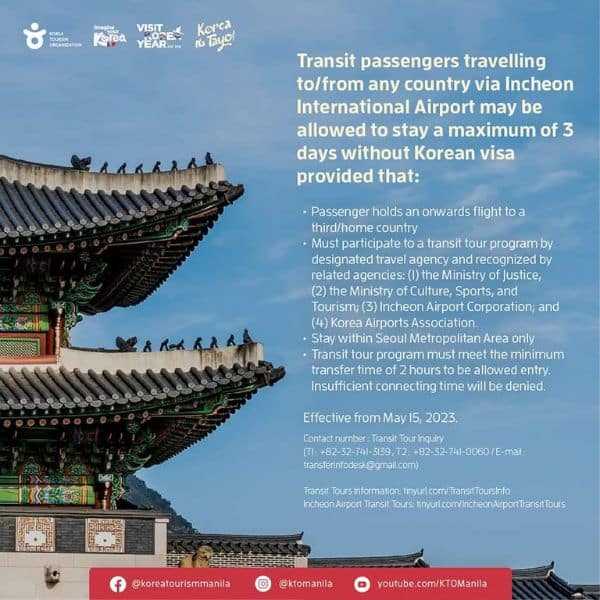
Visa-Free Entry For Transit Passengers (30 Days)
This will allow travellers from 36 countries to enter and stay in Korea for up to 30 days without a Korean visa. Travellers must be travelling to or from one of these 36 countries to be eligible to stay in Korea without a visa. This includes passengers who are not citizens of those countries.
Requirements : To be eligible for a visa-free entry as a transit passenger, travellers must:
- Hold an onward flight to any of the 36 countries mentioned below.
- Have no illegal stay records of any kind, nor have been denied entry to Korea.
- Not have exceeded a maximum of 3 days stay in any other transit airport.
Eligible countries : Travellers from the USA, Canada, Australia, New Zealand, and 32 EU countries (see picture below) can stay for up to 30 days, as long as the above-mentioned requirements are met.
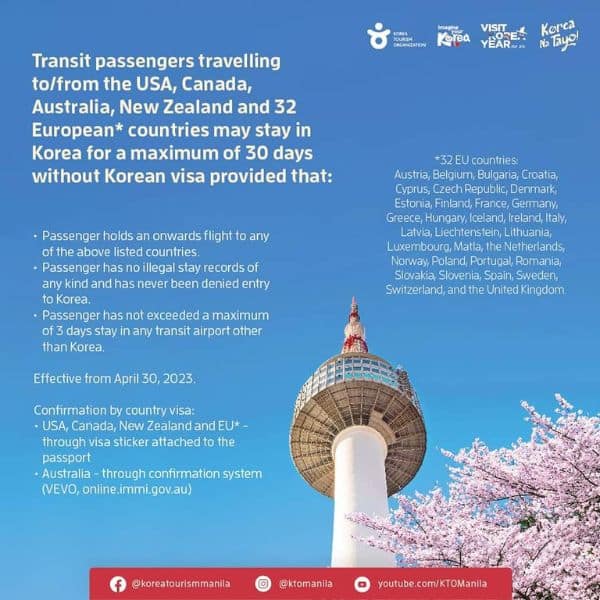
Why You Should Travel To Korea In 2024
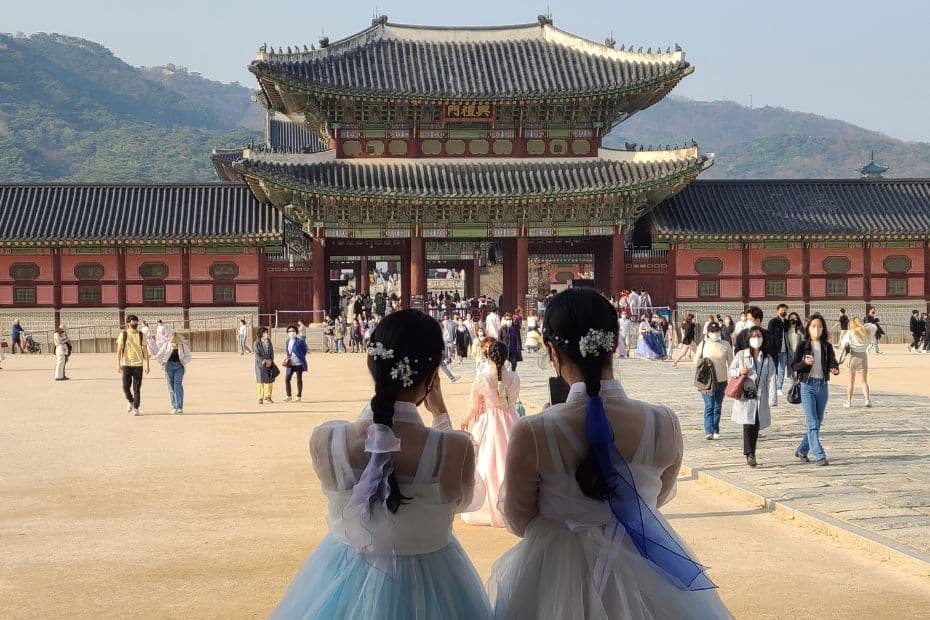
There’s not enough space in this South Korea travel guide to write down all of the reasons why you should travel to South Korea. Korea is an under-appreciated gem that has so much to discover and experience that’s completely different from what you’ll find in other countries.
Much the way that Japan has a very distinct culture and history, Korea has lots of unique, appealing places to see, people to meet, history to learn about, and natural sights to appreciate. Many people only see a small slice of Korean culture and beauty through modern media, but there’s a lot more.
Here are some of the reasons you should travel to Korea:
- Delicious foods and tasty seasonal dishes.
- Four distinct seasons that offer a variety of views.
- Fascinating history to learn about and explore.
- Stunning mountains and beaches for outdoor lovers.
- Unique and unusual festivals throughout the year.
- Friendly locals and a safe country to travel around.
- Modern, high-tech cities that are clean and efficient.
- Welcoming Buddhist temples and temple stays.
- Cheaper than most other developed countries.
- A shopper’s paradise with many markets and malls .
- Korea really wants you to come and visit.
Korea wants you to visit so much that they declared 2023-2024 the Visit Korea Year . This two-year period, confusingly referred to as a single year, is set to feature loads of events and activities to draw tourists to Korea, and includes promotions for discounted flights, accommodation, and food.
Some of the events you can expect to see during the Visit Korea Year(s) include K-Pop concerts, e-sports competitions, food festivals, and cultural celebrations. There’ll be K-Cultural stars involved, too, including your favourite K-Pop and K-Drama stars. Get ready to travel to Korea soon!
Want to know what you can do in Korea that you can’t do in other countries? Check out these amazing unique Korean experiences that should definitely be on your Korean bucket list.
The Best Time To Visit Korea
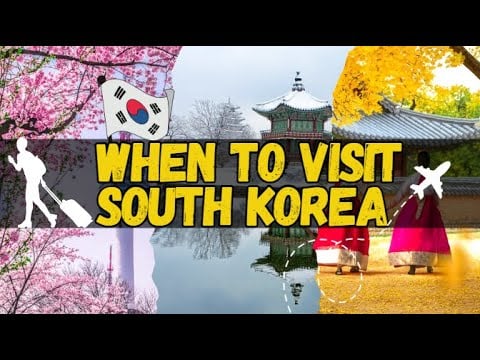
The best time to visit Korea is in spring (late-March to May) or autumn (mid-September until mid-November). These seasons have the most comfortable weather, ranging from 10 to 30 degrees Celsius, an average amount of rain, and also have the most festivals and events.
My favourite months to travel in Korea are April and October . Early-April is when cherry blossoms come out and the weather warms up enough to stop wearing a jacket. October in Korea is a beautiful month when autumn foliage sweeps across the country and the weather is warm and calm.
When you travel to Korea, the season you travel in can have a big impact on what you can see, eat, and do. This section of the South Korea travel guide is one of the most important and if you want to travel to Korea in the future, I recommend learning about Korea’s seasons before making plans.
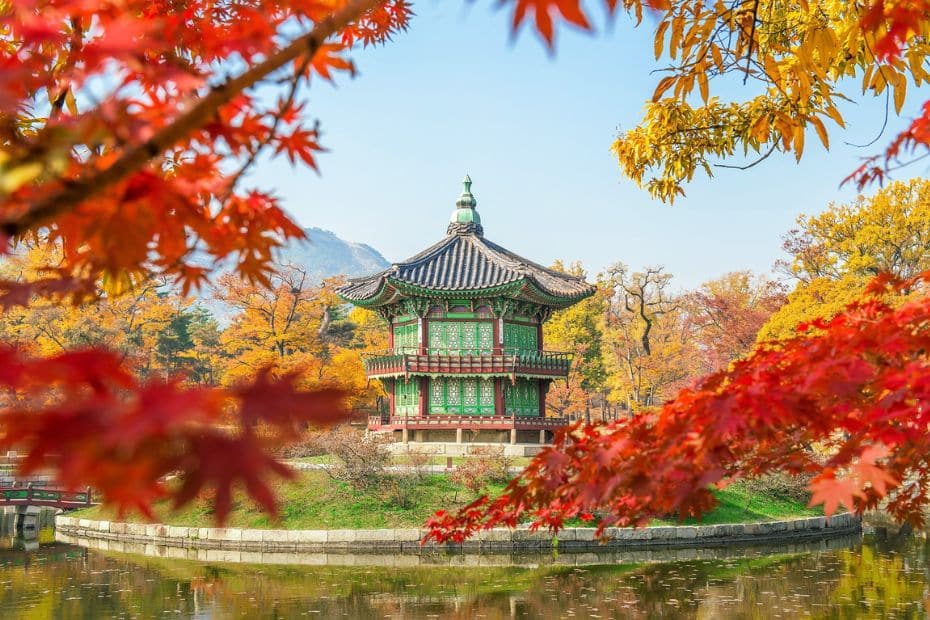
What Can You See In Korea Each Season?
Although spring and autumn are undoubtedly the best time to visit Korea, there are plenty of reasons to visit in other seasons, too. Visitors to Korea who are restricted to travelling during certain times, such as during school or work holidays, needn’t be put off by travelling in summer or winter.
Here’s a summary of what you can see and do in each season in Korea:
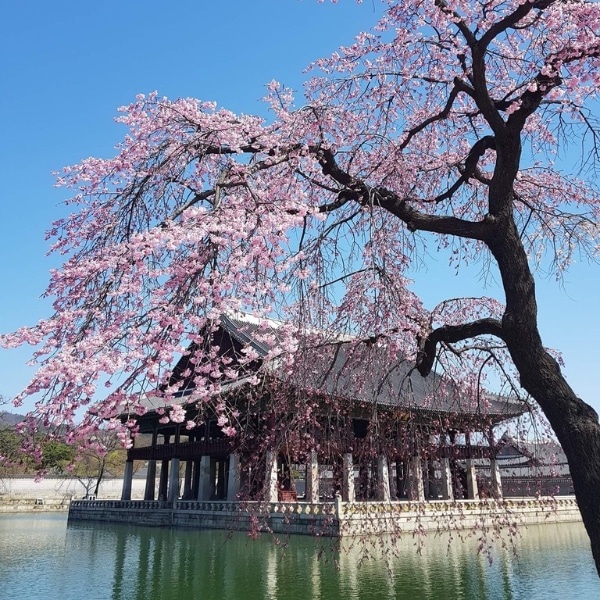
Spring: Cherry Blossoms, Blooming Nature, Culture Festivals
Spring is an amazing season to travel in Korea as you can see colourful plum blossoms (Mar), cherry blossoms (Mar-Apr), and many other bright sights. The warm weather allows people go out more to enjoy cultural activities and spring festivals , such as the Lotus Lantern Festival and Jindo Sea-Parting Festival, and also trekking, hiking, and cycling. Spring is one of the most popular times to travel in Korea for locals, so expect places to be busy, especially around cherry blossom season.
Check out my cherry blossom guide for the best places to see cherry blossoms in Korea.

Summer: Beaches, Korean Desserts, Water Sports, Camping
Summer is a difficult season for travellers due to the high humidity and heat. June and July are rainy season in Korea and it may rain for days on end, causing people to change travel plans to indoor activities. In late July and August it gets very hot, which is good for going to the beach and enjoying water sports or water parks, which Korea has many of. Evening activities like hiking, drinking in rooftop bars, and visiting night markets are great ways to get out in summer when it’s not as hot.
Check out my guide to Korean summer activities for the best places to have fun during summer and rainy day activities in Busan in case the weather isn’t so good.
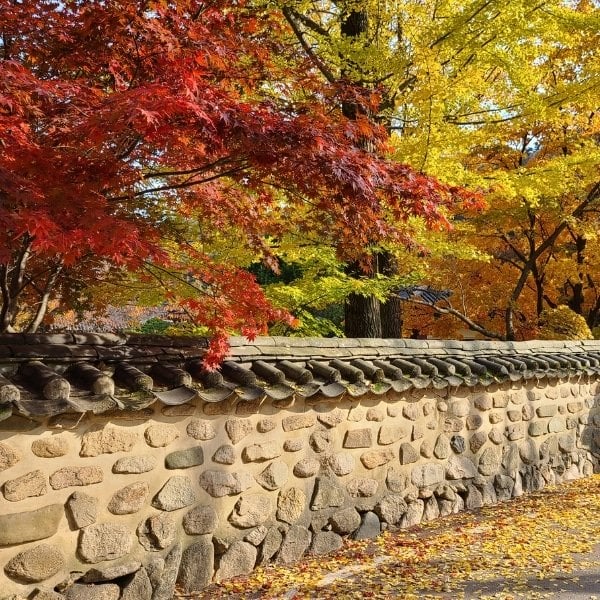
Autumn: Foliage, Festivals, Fresh Foods, Harvest Festivals
Autumn is another incredibly popular time to travel in Korea, especially in October when the autumn foliage is at its best. The foliage really brings everything to life, adding shades of colour to plain palace walls, mountains, and parks. The calm weather is warm with clear skies, making it perfect for going into nature to see the fresh fruits and other harvest goods, as well as join in harvest and cultural festivals. Enjoy local Korean dishes, fresh from the farm to your table.
Check out my guide to autumn foliage in Korea for the best places to see the leaves.
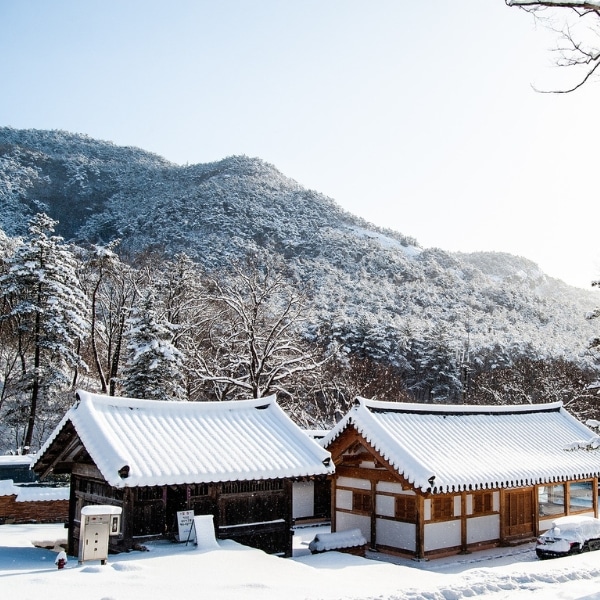
Winter: Snow, Winter Sports, Ice Fishing, Light Festivals
Winter in Korea is often neglected due to the cold weather, but is actually a very nice time to travel with delicious winter foods to try. It’s the driest time of year with blue skies making everything bright and beautiful. When it snows, sights look even more incredible. Jeju Island is a great place to visit during winter as it has fresh citrus and colourful camellia flowers to see. You can enjoy winter sports, festivals and activities, such as ice fishing, ice skating, sledding, and more.
Check out my guide to Korean winter activities for the best places to have fun during winter.
What Is The Weather Like In Korea?
The weather in Korea follows a similar pattern each year, spread over five distinct seasons. As well as spring, summer, autumn, and winter, Korea also has a rainy season, which starts around mid-June and finishes mid-July. It doesn’t constantly rain during rainy season, but may do for several days.
There’s always something to do in Korea, no matter what the season. Even rainy season in Korea is fine for travelling, as long as you plan lots of indoor activities and can be flexible with your schedule. Don’t let the weather in Korea put you off visiting, you’ll find plenty to do in each season.
Here’s a summary of the weather in Korea each season:
The graph below shows you the average temperature each month in Seoul. This is an average temperature, so some days will be much hotter and others much colder. I’ve experienced summer temperatures of over 35 degrees and winter nights of -20, so be prepared for both.
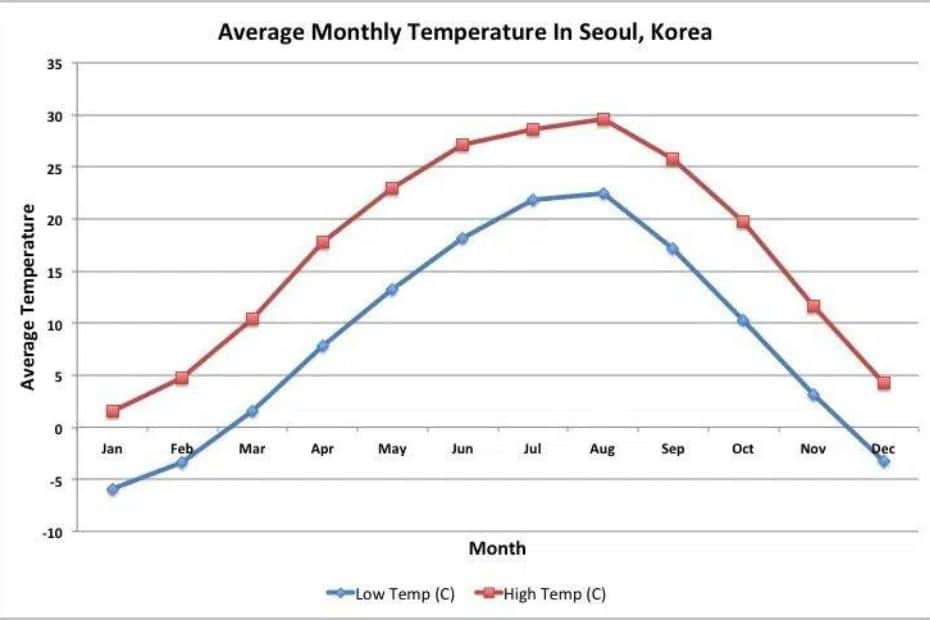
The table below shows the average rainfall for each month in Korea, based on records from climate-data.org . The summer months have the most, while winter in Korea is very dry. The rainfall in the winter months can turn to snow when it’s cold enough, too.
There will be more information about the sights, festivals, and events you can enjoy in Korea in later parts of this South Korea travel guide. Check them out for travel ideas for your trip to Korea.
How To Book Flights To Korea
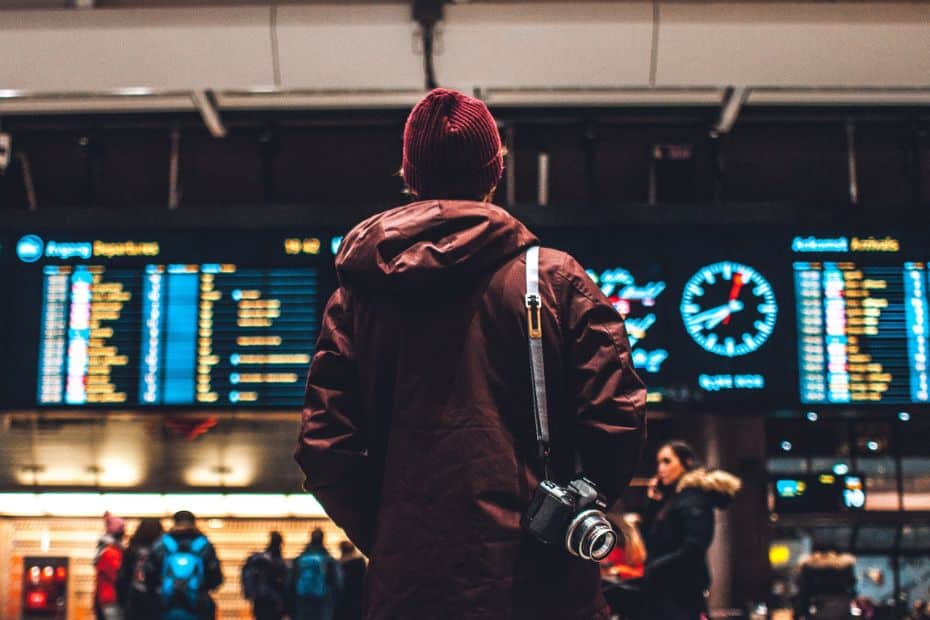
Flying to Korea in 2024 is getting easier with more airlines offering direct or connecting flights to Korea and budget airlines adding more routes to Korea from other parts of Asia and as far away as the USA. There aren’t as many routes as there were in 2019, but they are returning month by month.
Booking a flight to Korea is one of the first things most people do and finding the right flight can really affect your travels. Choosing the right flight not only affects how much money you need to spend, but also when you’ll arrive, how you’ll get to your hotel, and where you’ll arrive in Korea.
Check out my guide to booking flights to Korea to discover the best ways to book a flight to Korea, including the best time to book (21 to 127 days before travel), where to get cheap flights, the various airlines that offer flights to Korea, and lots more.
Arriving At Incheon Airport
Most flights to Korea arrive at Incheon Airport, which is near Seoul. It takes about an hour to get to the centre of Seoul from Incheon Airport and there are various transportation options including a high-speed train, subway, limo buses, taxis, and private transfers.
The best option for transferring from Incheon Airport to your hotel is usually a limo bus as these run to popular areas of Seoul, such as Myeongdong, Hongdae, Gangnam, and Insadong. There’s also a direct train to Seoul Station and a subway that goes to Seoul Station via Hongdae.
Arriving during the daytime gives you the best options for getting from Incheon Airport into Seoul, while nighttime flights will leave you fewer options. There are a few night buses that run, but late arrivals will either need to stay at the airport or book a private transfer or taxi instead. More details about taking a taxi from Incheon Airport can be found in my guide to taxis in Korea .
If you want to book a private transfer direct to your hotel from Incheon Airport, contact Jerry Heng , a freelance driver. I want to recommend Jerry as he has years of experience organising airport pick-ups and drop-offs, as well as personalised tours around Korea. He’s also a friendly guy.
Recommended Flight Comparison Sites
I suggest checking at least one flight comparison website before booking any flights. You can alter the arrival and departure times, flight duration, choose direct or indirect flights, and sort by price to find the perfect flight for you. Skyscanner is my preferred comparison site, but they’re all useful.
Take time to change the dates and flight times to find the most suitable flights for you. Cheaper flights often have inconvenient arrival times, so you should decide whether it’s worth the hassle to save a bit of money. Sometimes spending more for the right flight is worth it, especially when time is limited.
I try to go for a balance of convenience and savings and avoid flights that arrive late at night or leave too early in the morning. These flights require you to book an extra night at the airport or make you lose time when you could be travelling and doing more interesting things.
Here are 4 of the best flight comparison sites for booking flights to Korea:

Skyscanner is one of the most popular flight aggregators and offers flights, hotels, and other travel bookings for all major destinations. Skyscanner shows airline environmental ratings and which flights are practical or difficult.

Expedia is a large US travel company that offers tours, flights, hotels, and other services around the world. You can book hotel and flights together, to save you time and effort when travelling. A good place to start your flight search.
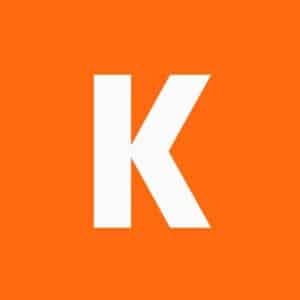
Kayak is great for people looking for cheap flights to Korea. You can see price trends for your flight to Korea to see when the best prices are available. There are also lots of budget travel options on the site that can save you more.

WayAway is a flight comparison site for the modern generation, with Instagram tips & travel advice as well as a good selection of cheap flights. You can get cashback on bookings with their premium service.
Where To Stay In Seoul
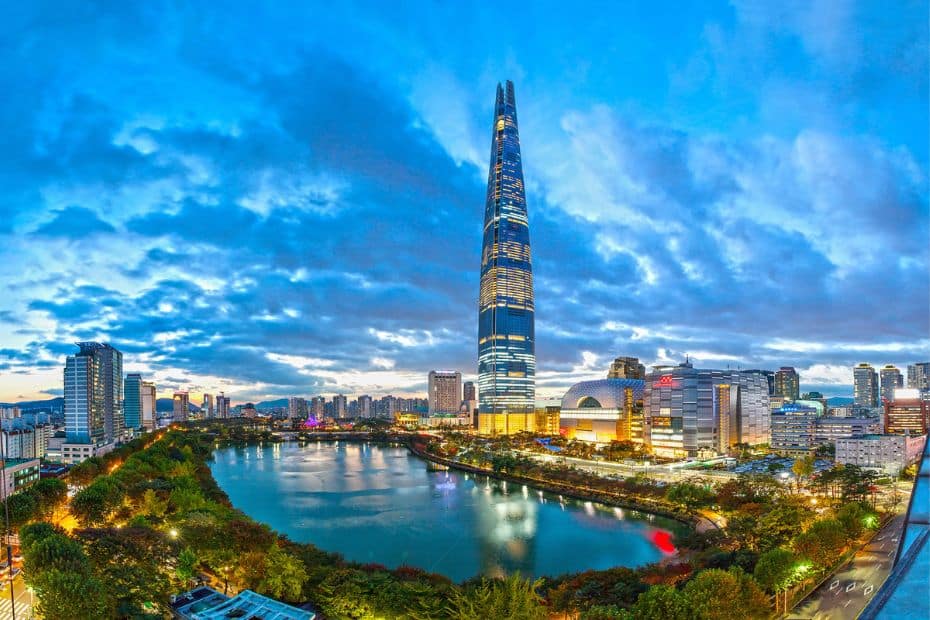
Incheon Airport is the main arrival destination for most travellers visiting Korea, with more than 71 million travellers passing through the airport in 2019, making it the world’s 14th busiest airport . It’s close to Seoul and has lots of transportation options to get into Korea’s capital.
Seoul is the first place people visit, not only because it’s close to Incheon Airport, but because it’s undeniably the heart and soul of Korea. The greater Seoul area includes about 50% of Korea’s population (25 million people) and is by far the biggest, most vibrant, and fun city in Korea.
To travel to Korea you need either a K-ETA or tourist visa . One of the requirements to apply for these is the address of the first place you’ll be staying in Korea. Therefore, you should book at least your first hotel in Korea so you can begin those applications. Seoul is an ideal first place to stay.
Best Neighbourhoods To Stay In Seoul
Deciding where to stay in Seoul can be difficult because there are so many unique neighbourhoods, each offering something interesting for travellers to experience. Knowing which has the best sights, entertainment, culture, shopping, transport, markets, restaurants, cafes, etc., is useful.
Seoul’s neighbourhoods typically contain a mixture of several of these elements and will appeal to different types of travellers. Below is a very rough guide for which neighbourhood each type of traveller might enjoy. Of course, there are plenty of other things to do in each area.
As you can see from the list above, both Hongdae and Myeongdong have a lot to offer and I would definitely recommend either of these neighbourhoods for first time travellers to Seoul. Even people who have travelled to Korea before will find lots of reasons to stay there. They’re where I usually stay.
I have detailed guides to hotels in the two best districts for staying in Seoul – Hongdae and Myeongdong. My guide to hotels in Hongdae includes a range of hotels for all types of travellers, while my guide to hotels in Myeongdong highlights Myeongdong’s best budget to mid-range hotels.
Each neighbourhood feels unique and offers something to discover, from traditional markets and eateries, modern Insta-worthy cafe districts, peaceful parks and lakes, world-class skyscrapers, and many fun activities. Wherever you choose to stay, you’re sure to find something you enjoy.
I’ve included the 8 best neighbourhoods in Seoul in this South Korea travel guide, along with a small summary about what you can expect in each area. These are the most popular areas for tourists to stay in, but certainly not the only places to stay. There are also links to hotels in these areas.
Here are the 8 best neighbourhoods in Seoul:
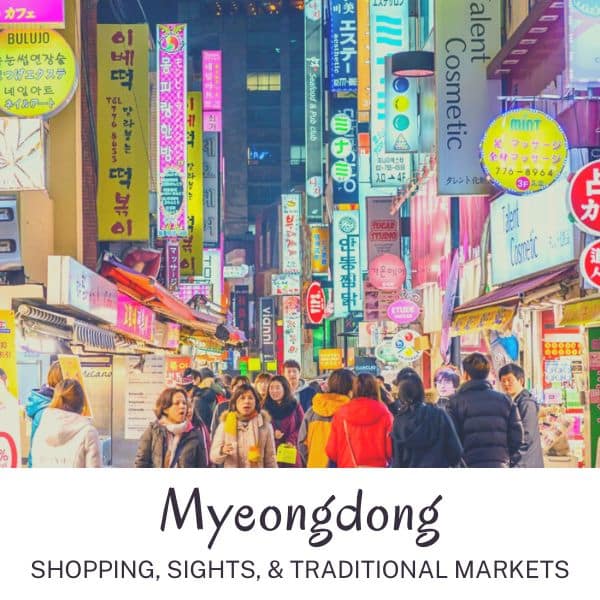
Myeongdong is arguably one of the best places to stay in Seoul for any traveller. It has the best range of budget and mid-range hotels in Seoul and is conveniently located for sights, activities, and public transport. It’s close to popular tourist sites, such as the N Seoul Tower and royal palaces. There are traditional markets and Myeongdong’s famous street food alley to check out. As Myeongdong is popular with tourists, you’ll find more people that can speak English and places to exchange money.
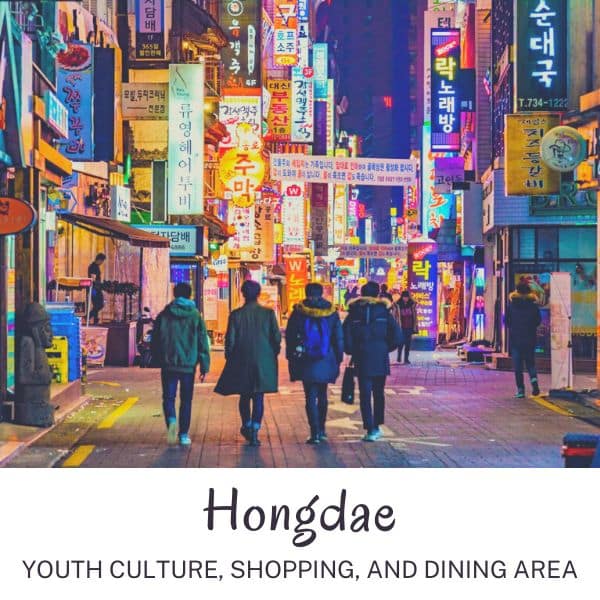
Hongdae is one of the coolest neighbourhoods in Seoul and a must-see for any traveller to the city. This area has emerged as a creative hotbed for the latest Korean fashion, art, food, and culture, thanks to innovations from students of nearby universities. Youth culture is on display in Hongdae’s main and side streets, with boutique shops, trendy bars and cafes, inventive restaurants, street art, and live performances. If you want to see a vibrant, colourful side of Seoul, then Hongdae is the place for you.
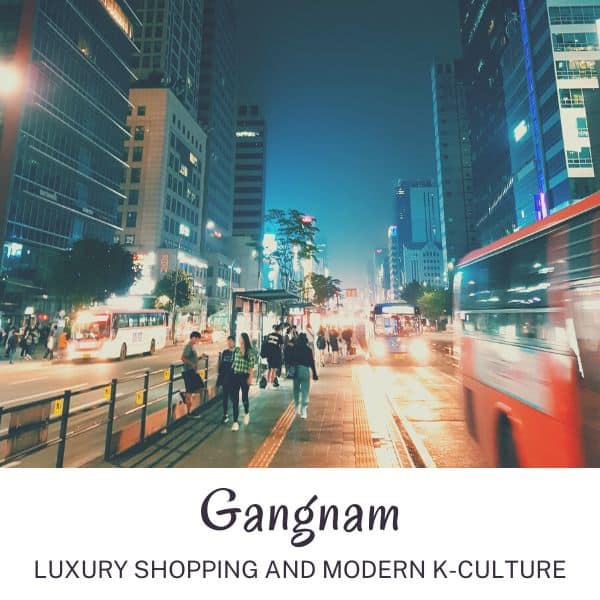
Gangnam is an upscale area of Seoul that’s home to some of Korea’s biggest stars. This area was where K-Pop was invented, as can be seen by the golden Gangnam Style statue outside COEX Mall. Gangnam is a lot more than that, and is a powerful business area with Seoul’s best shopping and dining experiences, as well as some of the city’s finest cafes and bars. Gangnam has a host of upmarket hotels that provide outstanding luxury, but also has a selection of budget and mid-range hotels making it accessible for all travellers.
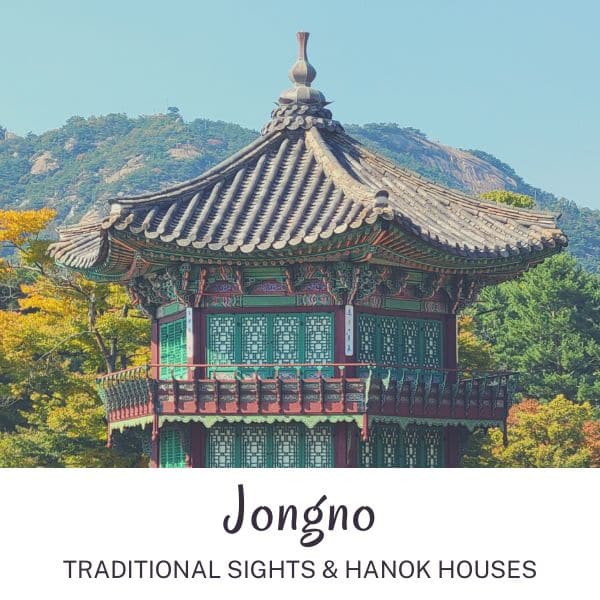
Jongno is the area north of Myeongdong that includes Insadong, Bukchon Hanok Village, Ikseongdong Hanok Village, Jogyesa Temple, 4 of Seoul’s royal palaces, the presidential Blue House, and lots more. This area is packed full of interesting sights and traditional restaurants and tea houses to explore. You can find a good range of hotels in Insadong, Seoul’s artistic area that is home to artists and tourist-friendly attractions. There are also guesthouses and apartments to rent in the residential areas of Jongno that offer a more homely stay.
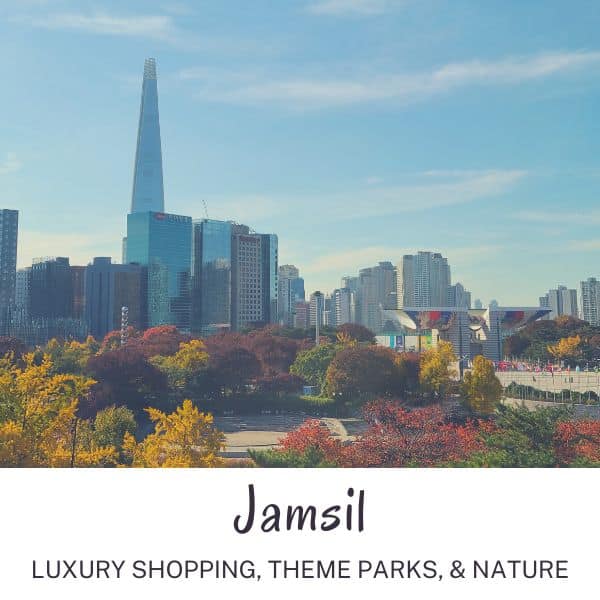
Jamsil is an upmarket residential neigbourhood close to Gangnam that’s home to one of Korea’s largest companies, Lotte. You’ll find the Lotte World Tower, Lotte World Theme Park, and Lotte Aquarium in this area, as well as the beautiful Seokchon Lake and leafy Olympic Park. Jamsil is a great base for people visiting for cherry blossoms in spring as the Seokchon Lake Cherry Blossom Festival is one of Seoul’s best. There are lots of trendy cafes and bars near the lake and it’s a relaxed part of the city to stay in.
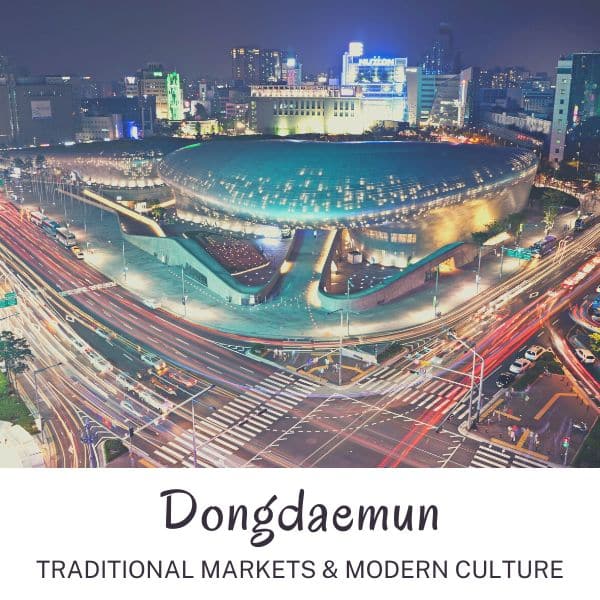
Dongdaemun is known for both its traditional markets, where you can buy a range of goods, as well as the futuristic Dongdaemun Design Plaza (DDP). The area is an unusual mix of traditional Seoul, with Gwangjang Market offering some of Seoul’s best Korean street food, and modern culture, displayed by the night markets and art installations at the DDP. There are lots of cheap eats and bargain markets and malls in this area, making it a great place to stay if you plan to do a lot of bargain shopping in Seoul.
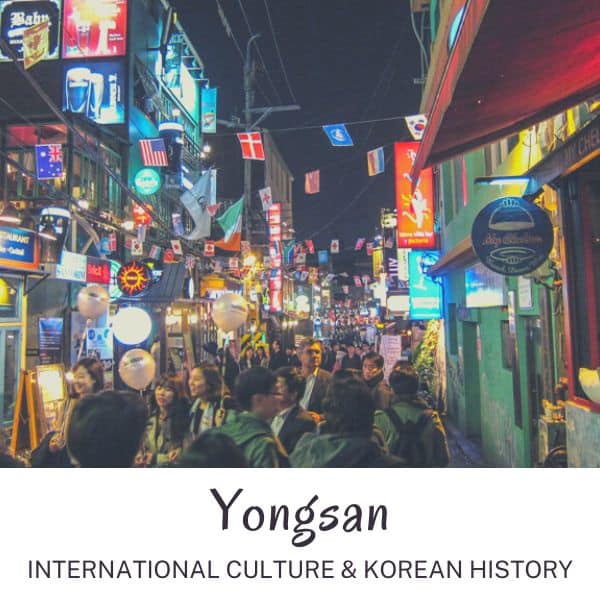
Yongsan is the area encompassing the N Seoul Tower, the popular international area of Itaewon, the trendy hilltop area of Haebangchon (HBC), Seoul Station, the National Museum of Seoul, and many riverside parks. Yongsan has a busy train station with towering skyscrapers and hotels around it catering to business and luxury travellers, as well as shoppers. This quiet business and residential area has good transport links and fewer crowds than other parts of Seoul, as well as interesting cultural attractions.
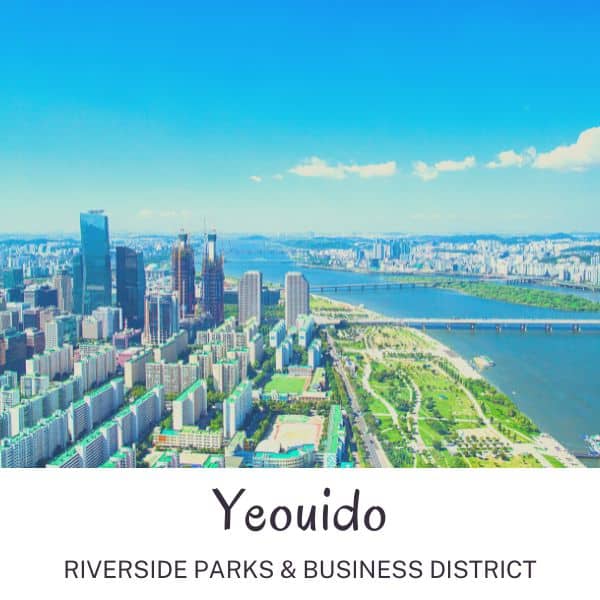
Yeouido is a large island that rests in the Han River, overlooking Hongdae and Yongsan. It has some of the best parks in Seoul and is a popular place for locals to walk along the river on weekends and at night. These parks are home to Seoul’s biggest cherry blossom festivals, as well as summer night markets, fireworks performances, live music, and people enjoying life outside of work. Yeouido is the upmarket financial centre of Seoul, making it an ideal base for business, luxury, and family travellers.
Seoul’s neighbourhoods are informal designations, not necessarily the official district name. For example, Hongdae is a neighbourhood in the Mapo-gu district and Myeongdong a neighbourhood in the Jung-gu district. Whereas Jongno is both the neighbourhood and district name (Jongno-gu).
You might see some areas referred to differently. However, the terms I’ve used in this section are the names most commonly used to describe these areas by tourists and expats. Koreans will certainly know which area of Seoul you’re talking about when you use these names.
Learn more : If you want to know more about Seoul’s best districts and figure out where the best place to stay for your trip to Korea, then check out my detailed guide about where to stay in Seoul . It’s packed with useful info about each neighbourhood, hotel recommendations for different budgets, and tips about booking accommodation in Seoul. Also learn more about the Han River Boat Service launching in 2024 to connect Yeoudio, Jamsil and other riverside destinations.
Hotel Recommendations For Seoul

There are hundreds (maybe thousands) of hotels in Seoul to choose from ranging from multi-person dorm rooms to the height of luxury looking down over Seoul from a 5-star hotel room in the Lotte World Tower . Whatever your budget or requirements, there’ll be somewhere to stay in Seoul for you.
To save you time searching for the best places to stay in Seoul, I’ve created a list of the 9 best luxury, mid-range, and budget hotels in Seoul, as well as 6 long-stay serviced apartments. This list has been created based on customer reviews, location, facilities, amenities, reputation, and quality.
I live outside of Seoul, so often book hotels when I’m visiting Seoul for the weekend . I’ve stayed at quite a few of these, so can personally recommend them based on my own experience. I’ve had both good and bad hotel experiences in Seoul and only want to recommend the best to you.
Recommended Luxury Hotels
Seoul has some incredible luxury hotels to enjoy, each with a true 5-star service, excellent amenities, and delectable restaurants. Many of Seoul’s best luxury hotels are located in Gangnam, Seoul’s wealthiest district, where you can find top restaurants and designer brand shopping.
Recommended Mid-Range Hotels
If you want to experience a luxurious stay in Seoul without breaking the bank, then these mid-range hotels will be perfect for you. These unique, 4-star hotels are reasonably priced and provide stylish, comfortable rooms that you’ll sleep easily in after a busy day exploring Seoul.
Recommended Budget Hotels
Seoul has a wide range of excellent budget hotels with prices that might surprise you for a large city. These are some of my favourite places to stay in Seoul when I visit for the weekend and are popular with travellers due to their convenient location, facilities, and comfortable beds.
Recommended Serviced Apartments
If you plan to stay in Seoul for a month or more, these serviced apartments will provide you all the comforts of home with the benefits of staying at a hotel. These excellent serviced apartments come with cleaning services, health facilities, cooking facilities, and are value for money.
Cost To Travel In South Korea In 2024

This part of the South Korea travel guide will help you understand some of your expected costs to travel to Korea. The costs to travel to Korea include flights, accommodation, food, drinks, transportation, activities, sim cards, visas, souvenirs, travel insurance, and lots more.
The costs you will pay when you travel vary massively depending on what type of traveller you are and what style of travel you can afford. If you want 5-star luxury and fine-dining, your budget will be very different from someone eating ramyeon from 7-11 and staying in a budget guesthouse.
Therefore, I will try to provide expected costs for 3 different types of traveller – budget , mid-range , and luxury . These aren’t exact figures, but should give you a rough idea of how much you’ll spend.
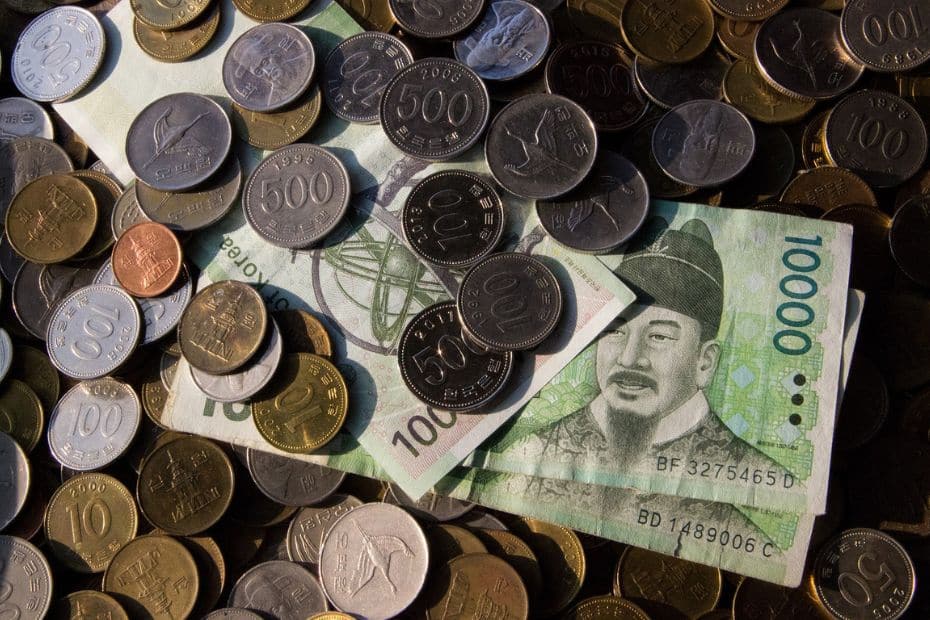
Daily Costs To Travel In Korea
There are costs that you will pay each day when travelling in Korea that can be averaged out to give you a daily cost. Knowing these figures will help you plan your budget for Korea and to see where you can afford to spend more for the one-off costs to travel, which will be covered next.
The daily costs are accommodation, food & drinks, transportation, attractions & tours, and miscellaneous expenses that can pop up unexpectedly. These miscellaneous costs might include getting a street food snack, an unexpected entrance fee, or a few extra drinks in the evening.
Transportation will be covered later in this South Korea travel guide and there are some useful tips to reduce your transportation costs. You will also be able to see some of the best attractions, tours, and activities in Korea and you’ll be able to work out how much you’ll spend on those.
Here are the daily costs per person to travel in Korea:
Please note : These are costs per day, per person . Couples and families sharing a room will have lower costs as double rooms aren’t much more expensive than single rooms. Some days will be cheaper, some much more expensive, especially if you take day trips or visit premium attractions.
There are also one-off costs not included in these daily costs. These can be pre-travel costs, such as flights and a K-ETA or tourist visa (already covered), travel insurance, vaccinations, and such like. Pre-travel costs are different for each traveller and depend on your country of residence.
Other one-off costs during travel in Korea may include day tours, souvenirs, shopping, celebrations, medical costs, and expenses that you don’t normally pay each day. Again, these vary for each traveller and are difficult to calculate as people’s budgets are so different.
Is Korea A Cheap Country To Travel In?
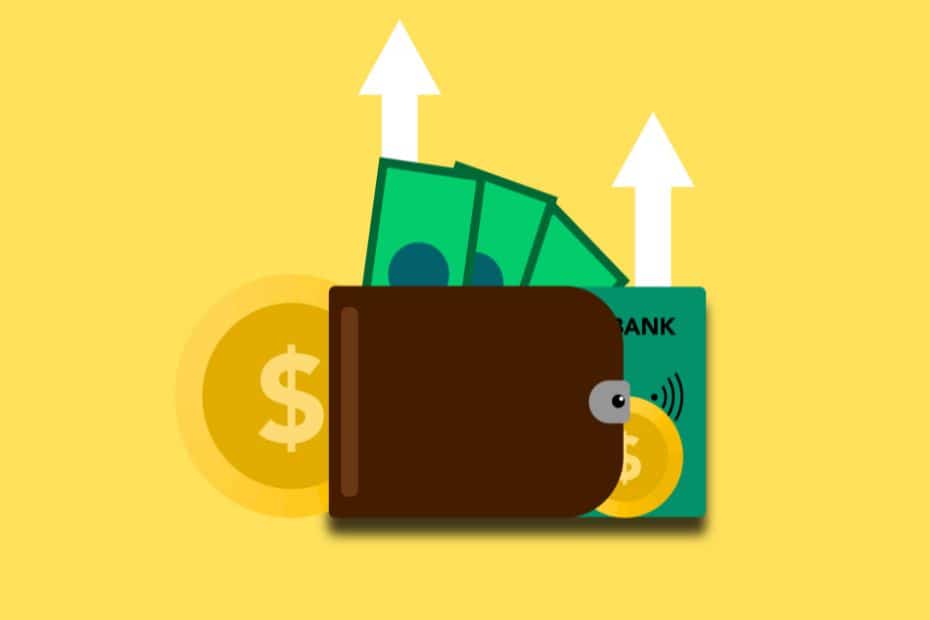
Korea is relatively cheap country to visit, but certainly isn’t always a budget destination. The cost to travel to Korea has risen over the last few years and might be more expensive than you think, even if you’ve previously visited Korea. Flying to Korea is certainly more expensive now.
Food costs rose by 7.5% in 2022 alone and these costs have been passed on to restaurants, which now charge higher prices for meals. Transportation costs rose by about 20% in 2023 for buses and subways, although these are still relatively cheap compared to some countries.
Despite these price increases, travelling in Korea is still cheaper than travelling in most other high-income industrialised countries such as Japan, the USA, and Western Europe. If you’re from countries such as the Philippines, Thailand, Indonesia, or Malaysia, Korea may seem expensive.
City Passes That Save You Money In Seoul
There are a number of city passes that can save you money when visiting Seoul by offering free or discounted entry to some of the best attractions in the city for a single price. The original city pass for Seoul is the Discover Seoul Pass, but now there is also the Go City Pass and Klook Pass Seoul.
Here’s a summary of each of these Seoul city passes:
Discover Seoul Pass : Available in 24 | 48 | 72 hour periods, allows entry to top attractions in Seoul such as Lotte World Adventure, N Seoul Tower, COEX Aquarium, Alive Museum, Zoolung Zoolung, Sealala Sauna, Gyeongbokgung Palace, and more. Prices start at 50,000 KRW .
Go City Seoul Pass : Available as 1 – 5 day passes or a flexible pass for up to 7 attractions. Covers a wider amount of attractions than the DSP, including a DMZ Tour, Nanta Cookin’ Musical, Seoul Land, Seoul Pub Crawl, Seoul Ghost Tour, and more. Prices start at 68,000 KRW .
Klook Pass Seoul : Available for use 2 – 5 attractions, including Everland or Lotte World Adventure theme parks. The Klook Pass Seoul allows free entry to selected attractions within a 30 day period. Attractions include the N Seoul Tower and Lotte World Aquarium. Prices start at 44,000 KRW .
If you’d like to know more about these passes, be sure to check out my article about the Klook Pass Seoul , as well as my suggested Discover Seoul Pass itineraries . I’ll have a review article of the Go City Seoul Pass soon, too.
How To Save Money In Korea
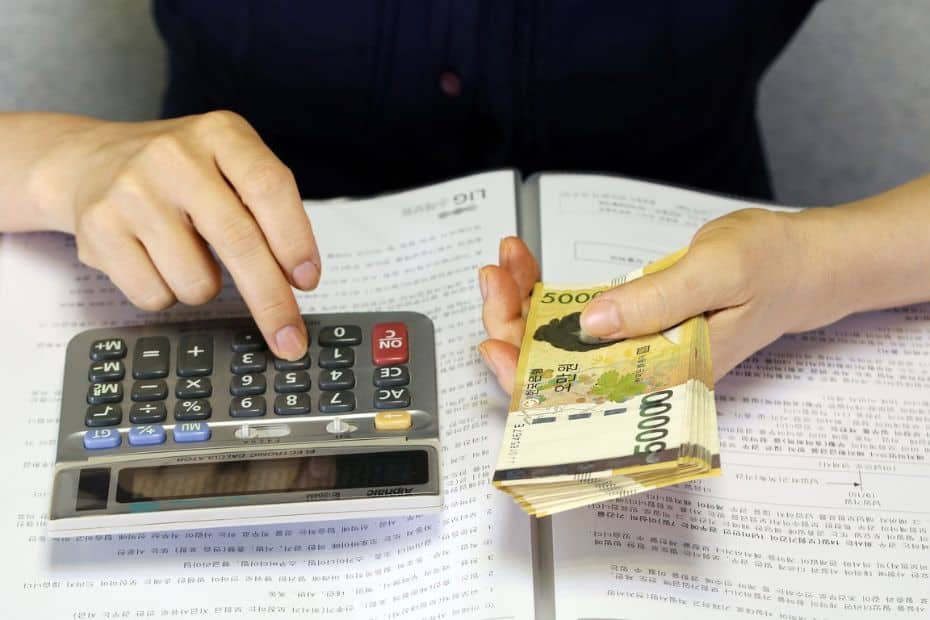
There are always ways to save money and spend less in Korea. Budget options exist for travellers and you can travel in Korea for less than 150,000 KRW per day, even as little as 50,000 KRW per day. Here are some of the ways you can save money in Korea and travel more for less:
Eat like a local : Visit the traditional markets, food stalls, and traditional Korean restaurants. These are much cheaper than eating foreign foods in Korea. University areas are usually cheap, too.
Spend less on coffee : Coffee in Korea can be expensive, but it doesn’t have to be. A latte could cost you 5,000 KRW in a chain store, but there are cheap hole-in-the-wall cafes where it’s half that.
Shop in the markets : From designer goods (possibly fake) to souvenirs, the markets of Seoul and other cities usually have the best prices. Don’t be afraid to haggle.
Use public transport : Korea has a fantastic public transport network both in cities and between cities. Don’t waste money on taxis and private transfers when you can use a bus or subway.
Book everything online : You can find discounted entry and tour tickets online that are much cheaper than the regular price. Use Klook , Get Your Guide , and Viator for the best prices.
Stay in guesthouses and hostels : You can find rooms for as little as 10,000 KRW per night in shared dorms and 20,000 KRW in guesthouses. Book ahead to find the best prices.
Take advantage of free things : There are lots of places you can visit for free in Seoul and free services, such as walking tours in Seoul, 30-minute hanbok rentals, and even free entry to the palaces.
Get your tax back : Korea makes it really easy to recover tax you’ve paid when shopping. Stores in Seoul will process tax returns for you or you can claim a refund at the airport when you leave.
You will see tips and links in this South Korea travel guide that are designed to help you save money when you visit Korea. Booking tours, attractions, and sim cards in advance can save you a lot of money, as can using a T-Money card and Wise travel card. Keep reading for more money-saving tips.
Travel Money And Money Exchanges In Korea
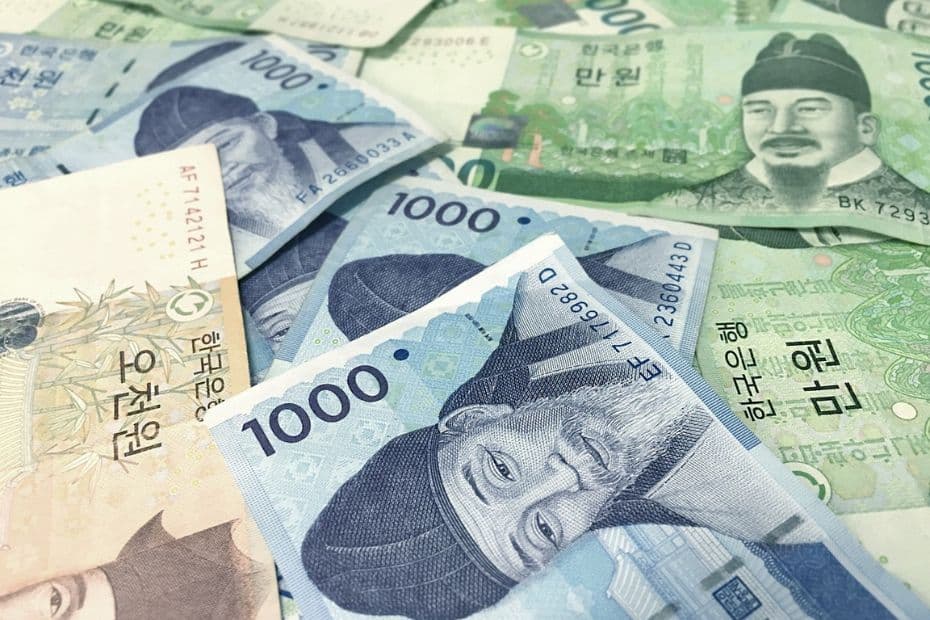
If you follow the tips in this section of this South Korea travel guide, you can certainly save yourself a lot of money and avoid unnecessary fees when spending in Korea. Learn where and how to exchange money, how to avoid ATM and card fees, and how to get tax back before you leave.
Because this section covers a lot of the common questions people ask about travel money in Korea, it will be broken down into a question and answer format. This should make it easier for you to find the information you’re looking for and discover answers you didn’t know you were looking for.
Can You Use A Foreign Card In Korea?
Almost all foreign credit cards with Visa or Mastercard will be accepted in Korea and it is possible to use these cards to pay across the country. American Express is also accepted in popular tourist areas, but not as widely as Visa or Mastercard and may have problems outside of big cities.
Foreign debit cards should work if they use Visa or Mastercard, but there may be restrictions in place with your bank when using them abroad. It is recommended that you call your bank to check before travelling. For both credit and debit cards, check your bank for any fees you’ll pay overseas.
Can You Withdraw Cash From An ATM In Korea?

You can withdraw cash from ATMs in Korea using a debit card, but not all ATMs will accept international cards. Look for a sign saying ‘Global ATM’ or ‘Foreign Currency ATM’ to withdraw cash in Korea with a debit card. You can also withdraw cash using a credit card, but it’s more expensive.
Whether you use a debit or credit card, an ATM is likely to charge a fee to withdraw money using a foreign card. Your bank or credit card company may also charge a fee or give a bad exchange rate. These costs can add up a lot if you withdraw regularly, so try to make fewer withdrawals.
Learn more : Should you use cash or card when you visit Korea? This article about the how to pay in Korea has lots of useful information about payment methods in Korea, including alternatives to the usual mix of cash and a credit card.
How Can You Save Money When Paying By Card In Korea?
Instead of using a foreign debit or credit card in Korea, which might have expensive fees or not work in places, here are two better options. The first is the WOWPASS travel card , which offers tourist-friendly card services in Korea. The other is to apply for a travel card that can be used globally.
Both the WOWPASS and the two other travel cards offer the ability to pay by card in Korea and to withdraw cash in Korean won. They also offer better exchange rates than you’ll find in airport or local money exchanges in Korea. They each have some unique features, which will be illustrated below.
Pay Like A Local With WOWPASS
The WOWPASS is a new way to pay in Korea that combines the essential functions of a T-Money transportation card with the benefits of a local debit card. This is a prepaid card you can top up at more than 90 locations in KRW or your own currency. Just look for the bright orange WOW machines.
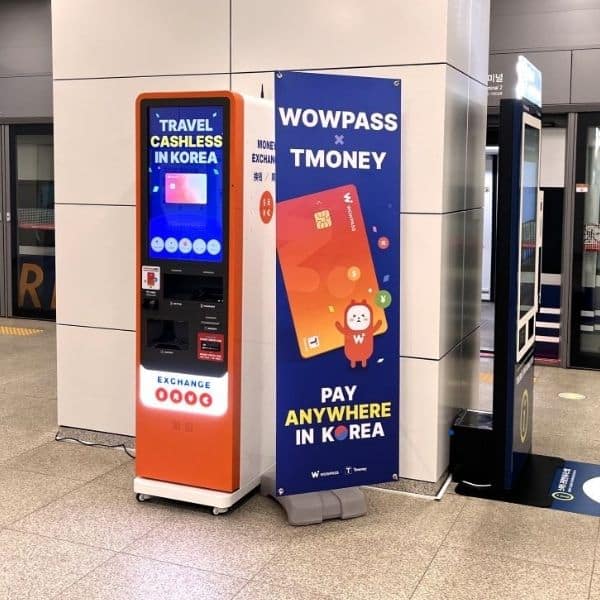
The T-Money function in the WOWPASS means it’s more useful than other travel cards as you don’t need to carry two separate cards when you travel. Please note, you still need to charge the T-Money balance of WOWPASS with cash, just like a regular T-Money card.
The WOWPASS travel card allows you to add up to 1,000,000 KRW to your card and can be used to pay for almost anything in Korea without any fees. The card is issued by a Korean company, so you can use it to withdraw cash at any WOWPASS machine located in Seoul & other cities in Korea.
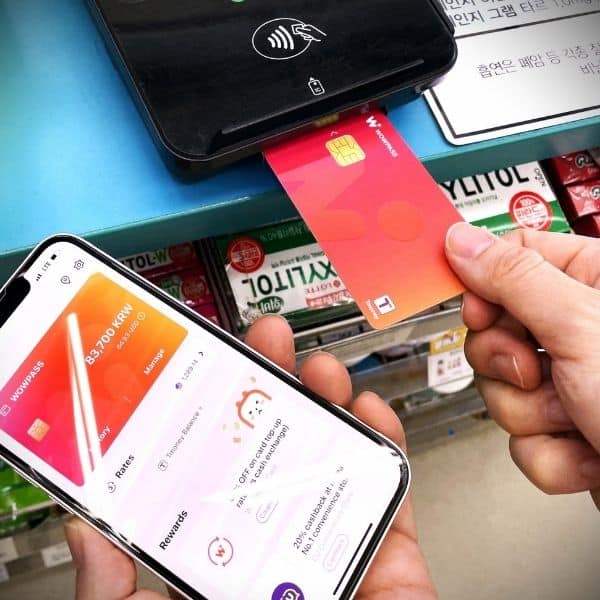
Thanks to the user-friendly WOWPASS app, users can freeze or replace their card, check their spending, add funds, and check exchange rates. Because the WOWPASS isn’t tied to your home bank account, it also reduces the damage by card fraud, in case the worst was to happen.
As well as a regular WOWPASS, you can also reserve the All-In-One Airport Package , which includes the WOWPASS, 10,000 KRW T-Money balance, and a discounted Korean sim card. This is really useful for those who want to get connected and travelling as soon as they arrive in Korea. Get the WOWPASS app for Android or Apple .
Tip : Use the invitation code INMYKOR1 to get cashback on WOWPASS top-ups in foreign currency.
Overseas Travel Cards You Can Use In Korea
Overseas travel cards are another option for spending in Korea and I use them myself to spend money from my UK bank account in Korea, as well as when travelling in other countries. They’re really simple to use and are much cheaper than paying with my foreign card or exchanging money.
Two of the leading travel card companies are Wise and Revolut . I use both of these to pay for things in Korea and have written an article about how to use the Wise card in Korea . You can use them to pay for hotels, food, drinks, transportation, taxis, attractions, and lots more. They’re really useful.
Here’s a summary of the main features of these travel cards:

The Wise travel card allows you to easily transfer and convert money from your home bank account into dozens of other currencies and use this money to pay when you’re travelling. You only need to transfer as much as you plan to spend and can easily transfer back anything you haven’t. The exchange rate will be better than your bank or a money exchange offers, too.
A versatile, easy to use app breaks down what you’ve spent by category so you can track your travel spending. You can withdraw cash from ATMs, pay by QR code, use it for Google Pay, and pay by contactless. Even if you lose your card, you can still spend money. It’s also really safe as you can freeze your card, set spending limits, and limit how much money you transfer.
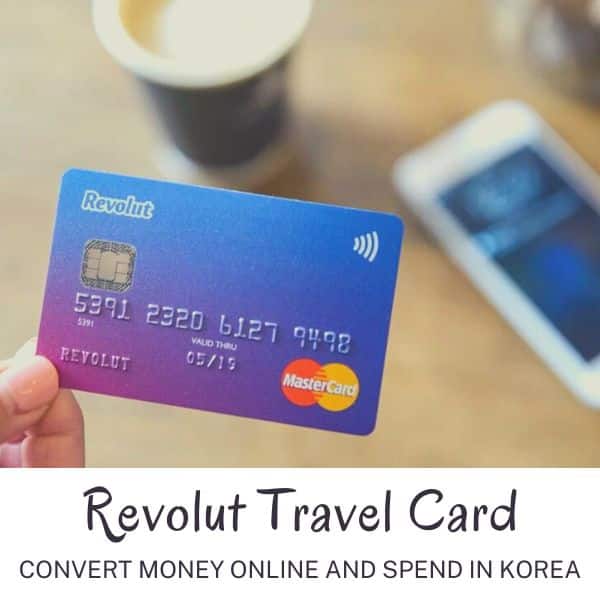
The Revolut travel card can be used in Korea to pay for a wide range of goods and services without expensive fees for spending your home currency overseas. Unlike the Wise travel card, which lets you transfer money into different currencies and then spend in a local currency, such as Korean won, the Revolut travel card lets you pay fee-free with your home currency.
The Revolut travel card comes with an easy to use app that can be used to manage your money both at home and when travelling in Korea. You can check your spending with categories and reports and set budgets for your spending. The Revolut travel card also offers cashback in the US, stock and crypto investments, and the same security features as the Wise travel card.
Can You Use Apple Pay In Korea?
Apple Pay wasn’t previously available in Korea due to a lack of approval by Korea’s financial regulator. However, in February 2023, Apple Pay received approval to begin operating in Korea through the Hyundai Card Co., allowing payments with Apple devices from March 2023 onwards.
The Apple Pay payment system has been available in Korea since March 21st , 2023 and allows Apple Pay members to pay for goods and services at NFC-enabled payment terminals. However, on the launch date of Apple Pay, there were only 70,000 NFC-enabled payment terminals in Korea.
The lack of NFC-enabled payment terminals will be a big issue for Apple Pay users in Korea as there are around 2,900,000 shops in Korea and most won’t accept Apple Pay. Franchises like Starbucks can’t accept Apple Pay and it can’t be used to pay for public transport. You’ll need a T-Money card.
Samsung Pay, which uses MST technology, not NFC, currently dominates the Korean market. NFC-enabled terminals should grow, especially in tourist areas and city-centres from 2023 onwards. This will be good news for Google Pay, which also uses NFC technology and also isn’t in use in Korea yet.
Should You Exchange Money Before Travelling To Korea?
It is not necessary to exchange money into Korean won before travelling to Korea, but it can certainly be useful to have a small amount of money. Exchange rates for Korean won outside Korea may not be as good as within Korea and changing large amounts of cash before you travel isn’t essential.
It might be hard to get Korean won from your local bank or money exchange as it’s not one of the most commonly exchanged currencies. Therefore, you might find exchange rates less favourable and extra fees applied to exchange money. Using travel cards like Wise or Revolut is a better option.
Should You Change Money At Incheon Airport?
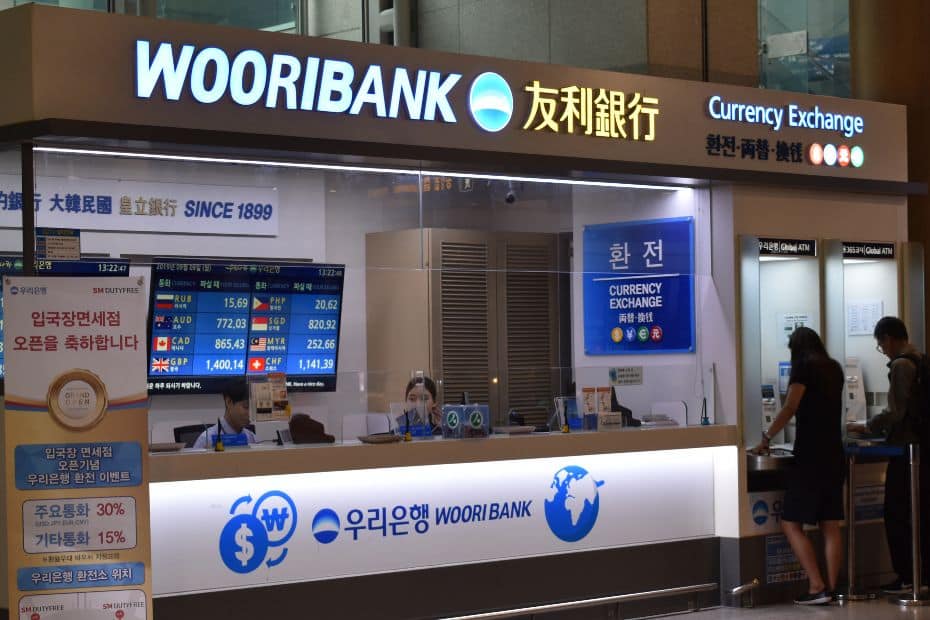
I’ve travelled around the world and always avoid exchanging money at the airport if I can help it. Airports often have the worst rates for money exchange as they know people need to get local cash, there aren’t many other options, and you need at least a bit of money to travel to your hotel.
Incheon Airport is an exception to this rule and I’ve compared travel exchange rates at several times when flying into and out of the airport. The foreign currency exchange rates at Incheon Airport aren’t that bad and are just slightly higher than what you’d find in Seoul. Not the best, but not bad.
There are also Global ATMs at Incheon Airport, so you can withdraw cash here. If you have a Wise or Revolut travel card, you can withdraw up to $200 fee-free from an ATM in Korea. However, Korean banks will charge a withdrawal fee (about 3,000 KRW), which applies to any foreign card used.
Where Can You Exchange Money In Seoul?
Seoul is the first destination for most travellers to Korea and if you want to save money on exchange rate fees, I recommend exchanging money in the capital. There are two main options for exchanging money easily and quickly in Seoul – WOW money exchange machines and money exchanges.
Here’s a summary about the two main ways to exchange money in Seoul:
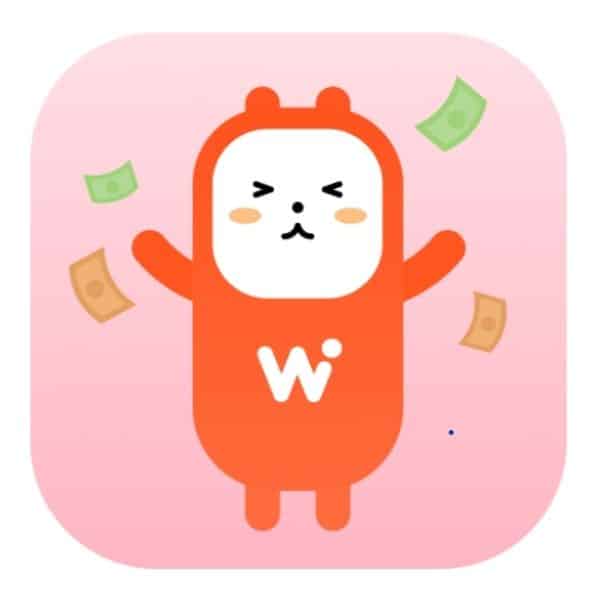
The cheapest and most convenient option for exchanging money in Seoul is through a WOW money exchange machine. This automated machine gives the best exchange rates and can quickly and easily exchange foreign cash for Korean won. It doesn’t accept card payments, only cash. All you need to do is scan your passport and deposit your cash and it will convert it into Korean won immediately. There are dozens of these machines in Seoul, as well as in other cities like Busan and Daejeon.
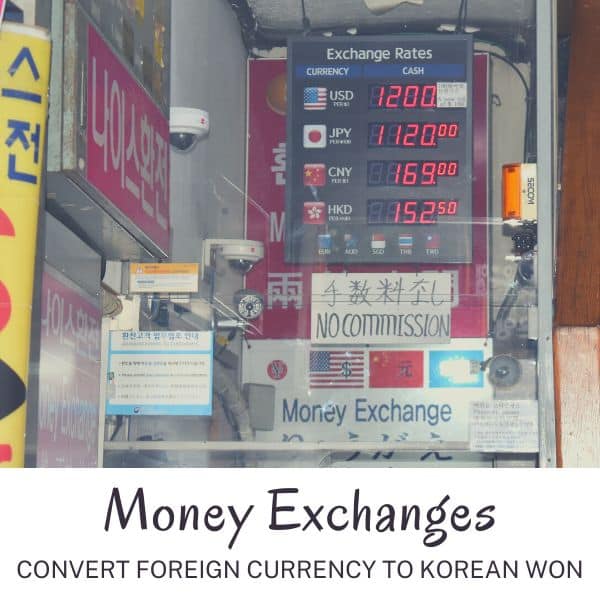
The traditional way to exchange foreign currency in Seoul was through a money exchange. You can find these in Myeongdong, where many tourists stay and visit in Seoul. There are also money exchanges inside banks and in other tourist hotspots. These used to be the best place to exchange money, until the WOW money exchanges were introduced and travel cards like Wise and Revolut made it easier to use a card. If you want to use a money exchange in Seoul, Myeongdong is the best place to do it.
Can You Get Tax Back When Shopping In Korea?
Travellers to Korea can claim tax back on eligible purchases during their trip. This can be done immediately after you purchase an item (if the shop offers the service) or at Incheon Airport or other airports in Korea before you depart.
Instant tax refunds are available at certain locations in Seoul and other big cities. These are usually department stores and large chain stores. You are able to claim tax refunds for goods up to a total value of 2,500,000 KRW (incl. tax). There is a tax refund limit of 500,000 KRW per transaction.
2024 Tax Refund Changes : From 2024, the tax refund limits will be doubled, so you will be able to claim up to 5,000,000 KRW of tax back and claim up to 1,000,000 KRW back per transaction. Source: Korea Herald .
To claim a tax refund you need:
- To show your passport
- To be a tourist in Korea
- To spend between 30,000 to 300,000 KRW in one place
- To be leaving Korea within 3 months
Tax isn’t refundable on all purchases, so be sure to check when shopping. Tax refunds can also be claimed at the airport as long as you have the receipt and the goods you’ve purchased.
Mobile Phones And Internet In Korea
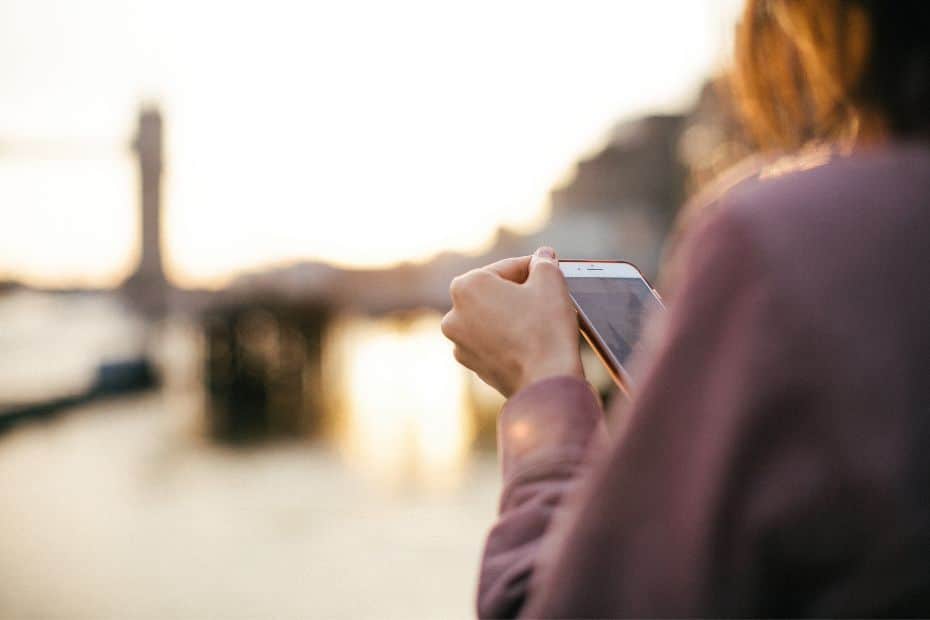
Staying connected to the Internet when visiting Korea is becoming more and more essential these days. Keeping your mobile phone, tablet, or computer connected to the web is useful not only to stay in touch with people back home, but also to help you save money and travel Korea more easily.
There are several options to stay connected in Korea when you travel. The main options for travellers are tourist SIM cards, either physical or eSIMs, portable WiFi routers, and relying on free WiFi provided in public places and hotels. All of these are good options, but there are other considerations, too.
This South Korea travel guide will cover the main differences between Korean SIM cards and portable WiFi routers and which will be most suitable for you. There are also details about why you might want a Korean phone number and which apps to use to help you travel in Korea.
Don’t forget, if you bring your phone or other mobile devices to Korea, you’ll need a travel adapter .
Should You Get A Korean SIM Card Or WiFi Router?
Both a Korean SIM card or portable WiFi router will provide access to Korea’s high-speed mobile networks and keep you connected to the Internet. They provide a secure internet connection, but do so in a different way and with different available features. Find out about the best Korean SIM card for tourists in this SK SIM card review .
Here are the main features of Korean SIM cards and WiFi routers:
Costs : SIM cards and WiFi routers are similarly priced when using them for a two week period, but they are charged in different ways. SIM cards are fixed-price and can be bought for set time periods, whereas WiFi routers are charged daily. WiFi routers are cheaper in the short-term.
Ease of use : If you purchase or pre-order a SIM card or portable WiFi router at Incheon Airport, which I highly recommend, the staff will install or setup everything for you. Once they’re activated, it’s very simple to use either one. Cancelling and returning them at the airport is also easy for both.
Here are the reasons you should get a Korean SIM card or portable WiFi router in Korea:
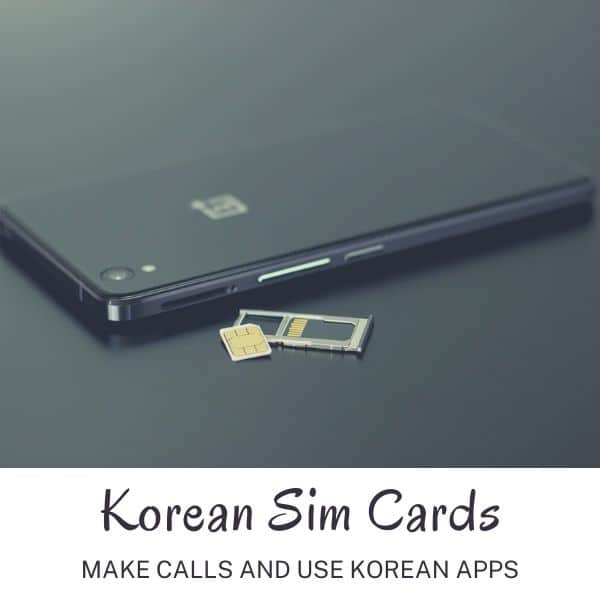
You should get a Korean SIM card when visiting Korea to get a Korean phone number. The benefits of having a Korean phone number are mainly to make calls and use Korean apps. SIM cards are also useful if you want a secure connection everywhere you go and plan to make calls or send texts. When you have a SIM card, you can tether your network connection to connect other devices you own. Korean phone coverage is amazing and you’ll get service everywhere. SIM cards don’t require you to carry any extra devices and are cheaper over the long-run than WiFi routers.
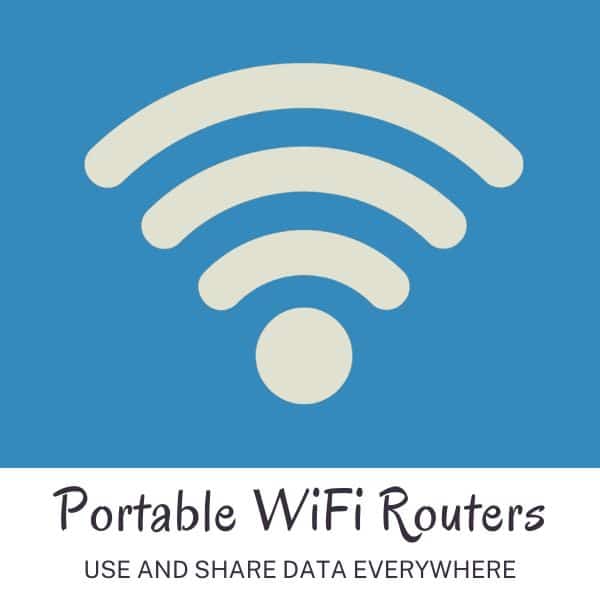
You should get a portable WiFi router if you’re travelling in a group or as a family as you can connect multiple devices to one router. This is much cheaper than getting separate SIM cards for all travellers, but also requires people stay close together. WiFi routers are charged per day and if you need additional days, they’ll be automatically added and charged when you return the router. This means you’ll never have to worry about your service suddenly ending. The main downside to using a WiFi router is the lack of Korean phone number, but that might not be an issue if you don’t need one.
Where Can You Get Korean SIM Cards Or WiFi Routers?
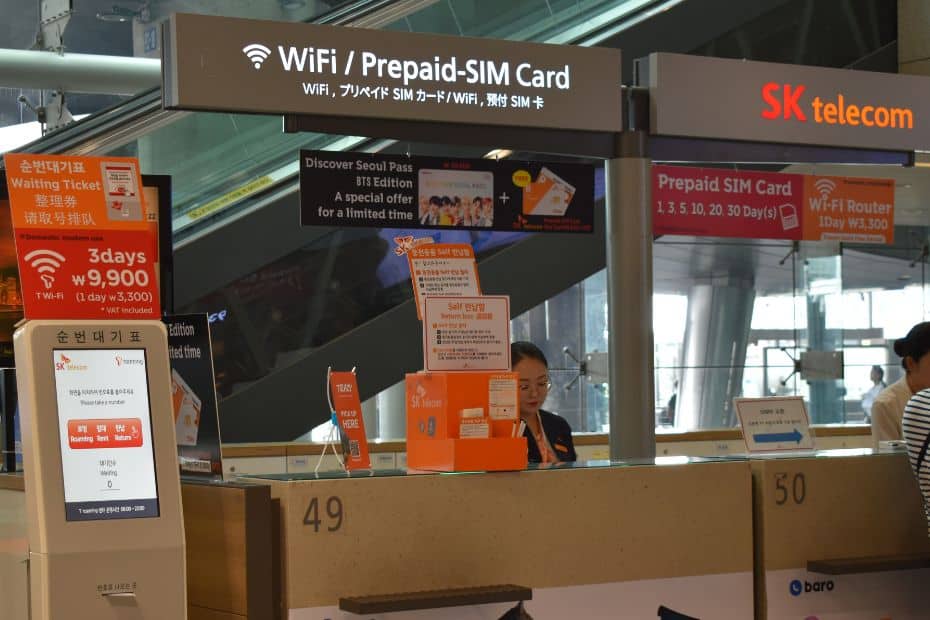
You can get a Korean SIM card or portable WiFi router in several ways. The easiest way, and one that I definitely recommend, is to purchase online through a tour company such as Klook , Viator , or Get Your Guide , and get a SIM card at Incheon Airport or other entry point into Korea when you arrive..
The main reason I recommend this method is that you can guarantee you will get a SIM card or router and it will be waiting for you when you arrive. The collection desks at Incheon Airport are open 24-hours a day and they will help you install everything you need to get started immediately.
You can also get SIM cards and WiFi routers when you arrive at the airport and you should find similar rates. However, you won’t be guaranteed a device and you will need to pay in person. When you book online, you can pay in your home currency and avoid those issues.
I don’t recommend getting a SIM card or WiFi router in Seoul or other cities. It is possible, but you may run into language issues and find less tourist-friendly options. Phone shops outside the airport usually cater to Koreans, not tourists. Airport rentals are the easiest options for visitors to Korea.
What’s The Benefit Of A Korean Phone Number For Tourists?
There are two main benefits of having a Korean phone number for tourists. The first benefit is the ability to call people when you’re in Korea. This can be useful for making reservations, keeping in touch with people, and in case of emergencies.
The second benefit of having a Korean phone number is the ability to use Korean apps . It isn’t mandatory to have a Korean phone number to use Korean apps, but most won’t let you use their services unless you sign up with a phone number. Using Korean apps makes travelling easier.
A phone number is like a form of identity in Korea, which is why you need your passport to register a SIM card. Once you have a phone number, many more services are available, including food delivery, ordering taxis, making reservations (such as for the Busan Sky Capsule ), and online messaging.
What Apps Do I Need For Travelling In Korea?
If you have a Korean phone number, you can use Korean apps. Even without a Korean number, you can still download these apps and use some of their services. Full features typically require a phone number though. There are other, non-Korean apps that will help you when travelling, too.
Here are the most useful apps to use when travelling in Korea:
Papago : This is the essential translation tool for visiting Korea. Papago’s translation services are the best and you can use the app to take pictures and translate Korean signs, menus, and other pictures.
Naver Maps : To find your way around Korea, use Naver Maps or Kakao Maps. Their systems are much more accurate in Korea than Google Maps. Use them to plan travel routes and transport times.
Kakao Taxi : Uber and Grab don’t really exist in Korea, so if you plan to take a taxi, you’ll need to use Kakao Taxi. Simple to use and takes the hassle out of trying to use Korean to give directions.
Kakao Talk : This is Korea’s most popular messaging app and is useful for keeping in touch with Korean friends, contacting businesses in Korea, and even calling abroad.
Seoul Subway : Use this app to travel around Seoul’s underground more easily. Plan your route, see when the next train is due to arrive, check connections, and see how late the trains run.
Korail Talk : This app allows you to book trains on Korea’s high-speed train network and regular train routes. This app has an English setting, so you can check train times and prices easily.
Coupang Eats : This is a food-delivery app that allows you to order almost anything edible and get it sent directly to you. You can even order convenience store goods. Useful for rainy days.
Mango Plate : Find restaurants in Korea with this app and discover the best places to go out and eat. You can also see restaurant details and get directions in Naver Maps and Kakao Maps.
WOWPASS : To use the WOWPASS to pay like a local in Korea and for T-Money functions, you’ll need the WOWPASS app. This will let you check your balances and spending and control your card.
Wise & Revolut : As mentioned in this South Korea travel guide, using a travel card to pay for items in Korea will save you money when you travel. If you use Wise or Revolut, make sure you have the app.
Klook : This company provides some of the best tours in Korea and if you make bookings through their website, you can easily manage them with the Klook app.
Intercity Bus by T-Money : This app is great for booking buses between cities in Korea. There is an English version that allows you to book tickets, check times, and see available seats.
These apps should be available on both Android and Apple. Some of these apps might default to Korean, but you should be able to change them to English in the side menu.
Is There Free WiFi In Korea?
Travellers in Korea have the option to not get a sim card or portable WiFi but still stay connected. This is thanks to the excellent Free Wifi in Korea that is provided in public transport, government buildings, restaurants, cafes, and many other places. This is mostly in the cities, however.
Hotels also provide free WiFi in most cities in Korea. If you plan to rely on free WiFi, I recommend using the hotel’s WiFi to plan routes, check opening times, and research places you want to visit. Take screenshots of these details so you can see them later, even if you don’t have Internet access.
The only warning I would give about relying on free WiFi when travelling in Korea is the increased use of mobile-dependent apps and passes in Korea. Physical tickets and passes are being phased out in favour of digital versions, which often need an active Internet connection to use.
I’ve noticed in recent years that services that impact travellers have moved to digital versions. This includes the T-Money card, Discover Seoul Pass, train and coach tickets, attraction tickets and event tickets. I believe that having a reliable net connection will be a must for most travellers soon.
Using Public Transport In Korea In 2024

This section of the South Korea travel guide looks at Korea’s public transport system and how to navigate it as a traveller. Korea has arguably one of the best public transport systems in the world. It’s cheap, well-connected, frequent, and runs on time. Other countries could learn a lot from Korea.
The great news for tourists is that Korea’s public transport is very foreigner friendly and information is provided in English in almost all places, as well as Chinese and Japanese in popular areas such as Seoul and Busan. Travelling by public transport in Korea is cheap, easy, and convenient.
How Much Does Public Transport Cost In Korea?
The cost of public transportation in Korea is fixed, no matter what day you purchase tickets on. If you buy one month in advance, or last minute, you will pay the same price for the journey. Journeys within a city are a single price and not dependent on how far you travel, unless you leave the city limits.
All journeys are single fares and you can’t buy return tickets. You will need to buy two singles when you want to travel somewhere and back again. The cost of a single fare depends on how you pay for the ticket – by cash or with a transportation card.
Here are the costs for public transport in Korea by payment method, type and user:
Please note : The cost of subway rides is set to rise to 1,400 / 1,500 KRW in October 2023. These prices will be adjusted when this occurs.
How Do You Pay For Public Transport In Korea?
The cost of public transport in Korea depends on whether you pay with a transportation card, such as T-Money, a Korea Tour Card , or Cashbee, or in cash. This applies to both subways and buses. If you use a transportation card, you should add credit to it, then touch it to the card reader at the subway or bus to pay.
To use cash to buy a subway ticket, you will need to buy a ticket at the station. For buses, you should pay the correct fare to the driver when boarding the bus. However, since 2022, buses across Korea have started to end the use of cash and some will insist on payment by transportation card only.
In the future, bus payments are expected to become simpler with fares deducted via bluetooth-enabled phones that have the relevant app downloaded. This system has already been in place in Gyeonggi Province since March 2022 and is likely to spread to more bus routes in the future.
I highly recommend getting a T-Money card when you travel to Korea. You can use it to pay for public transportation (at a discounted rate), and it will work almost everywhere in Korea. It can also be used to buy goods from shops, cafes, and restaurants. It’s really convenient and a must-have for Korea.
Using T-Money To Pay For Public Transport In Korea
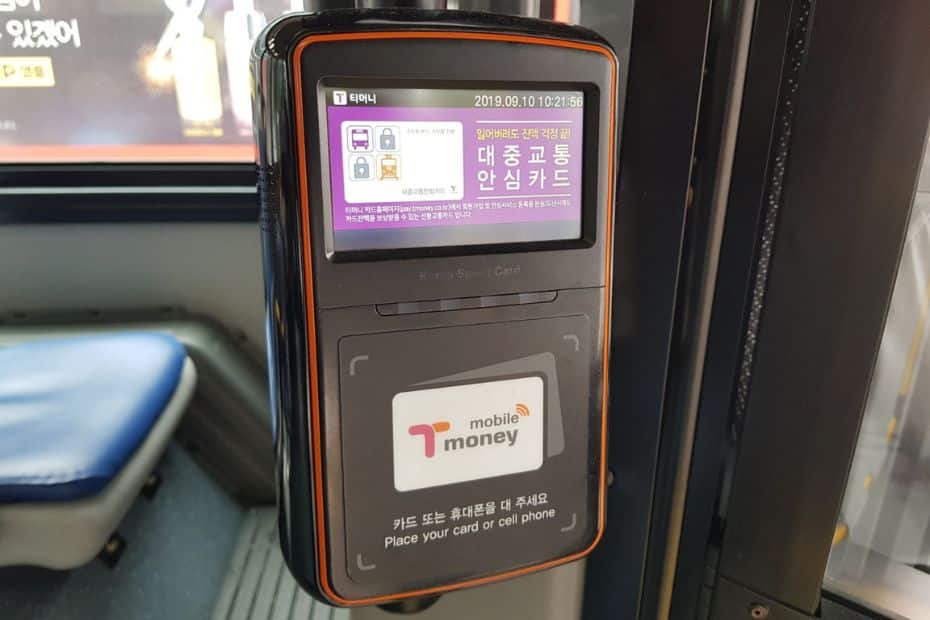
A T-Money card is the essential transportation card for using public transport in Korea. You can purchase one at Incheon Airport, subway and train stations, and convenience stores across Korea. The card can be used in many places. It never expires, so you can use it on different trips, too.
Here is how to use a T-Money card in Korea:
- Purchase a T-Money card (2,500 KRW)
- Add money to the card (cash top-up only)
- Enter the bus or subway station
- Tap the T-Money card against the card reader (see pic above)
- Tap the T-Money card again when you get off (for transfer discount)
- Recharge when necessary
I recommend adding about 10,000 KRW for each day you plan to travel in Korea. That means about 70,000 KRW for a week. You can add more money later if necessary. You can top up at convenience stores and transport stations. There is also an app version of T-Money, but the card version is better.
How Do You Use Trains In Korea?
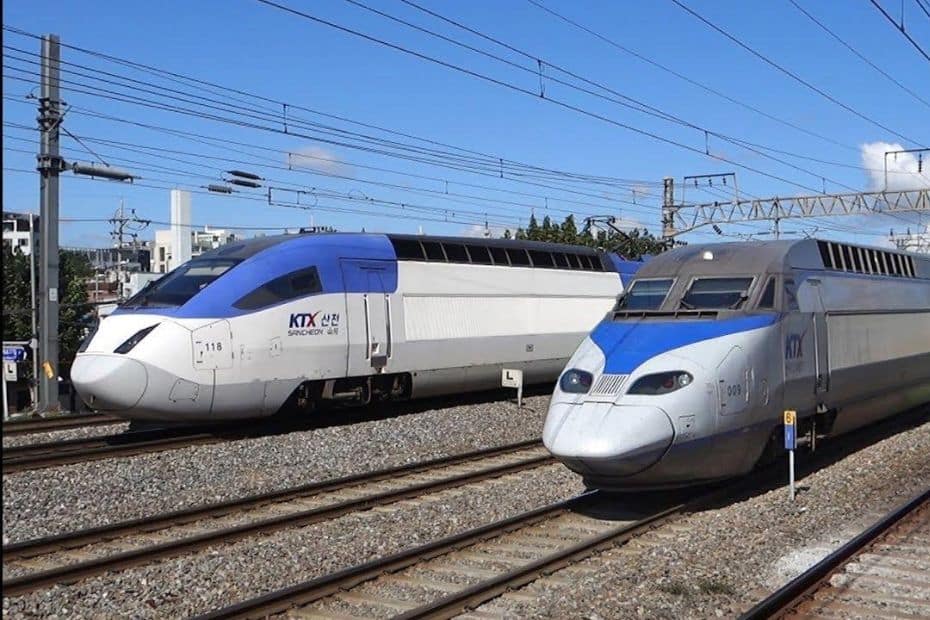
The train network in Korea is divided into high-speed trains (KTX) and regular trains (ITX and Mugunghwa). The KTX network connects major cities in Korea and is convenient for travelling around Korea quickly and cheaply. The carriages are comfortable and come with modern facilities.
Unlike other forms of public transport in Korea, transportation cards like T-Money aren’t accepted for trains. You will need to buy a train ticket to travel and all tickets are single tickets. The price to buy a ticket doesn’t change and you can refund a ticket up to the last minute for only a small fee.
You can book tickets within 30 days of travel through the official Korail website or app, or at a train station in Korea. Unfortunately, buying a train ticket online in Korea can be difficult as Korean payment systems often reject cards issued outside of Korea. Buying in person is recommended.
How To Book Korean Rail Tickets Outside Of Korea
If you want to book Korean train tickets outside of Korea, you can do it online with Trip.com , which is Korail’s exclusive overseas distributor. The price is slightly higher (about 5%) than the price you’ll pay in Korea, but it will allow you to book tickets online and secure your seat in advance.
If you plan to travel on the main KTX route between Seoul and Busan, I highly recommend booking tickets in advance. There are three types of tickets available – first class, regular, and standing. The journey takes 2:34 and you don’t want to be standing for all that time. Book ahead for comfort.
Is The Korea Rail Pass Worth The Price?
The Korea Rail Pass is a good option for tourists who plan to travel long distances by train in Korea, such as between Seoul and Busan or Seoul and Jeonju. The pass has two main options – flexible and consecutive. These mean you can use it any time (flexible) or within consecutive days.
The flexible pass is more expensive, but offers more freedom to travel around Korea over a longer period. You can use the pass to only cover big journeys and won’t feel pressured to use it again until you’re ready. The extra cost is more than worth the inconvenience of having to rush travel plans.
Will you save money with the Korea Rail Pass? That depends on your travel plans, how often you’ll be travelling by train, and how many people are travelling. If there are 2 people or more, purchase the group saver pass and save 10,000 KRW each on the pass. Group tours make it better value.
The Korea Rail Pass does not allow you to ride on the subway for free, which would make it better value. It can also be complicated to reserve tickets online using the pass and buying tickets in the regular way is more convenient. Overall, the pass isn’t essential, but might save you money.
How Do You Use Taxis In Korea?
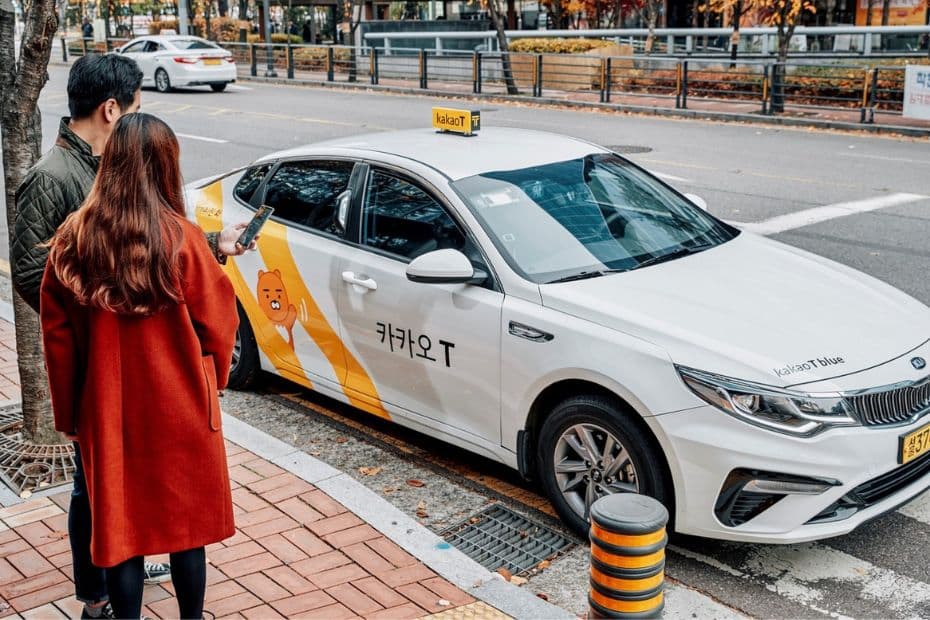
Taxis in Korea can be hailed from the street or called directly to you using apps such as Kakao Taxi . Companies like Uber and Grab don’t have a large presence in Korea and operate the same way as Kakao Taxi, by helping you find an official taxi driver. Private taxi services aren’t common.
The big issue facing the Korean taxi industry in 2024 is the lack of taxi drivers. This can make it hard to get a taxi, even when using an app like Kakao Taxi. Late night taxis are particularly difficult to find. Read this guide about how to use Kakao Taxi to help you learn how to call a taxi in Korea.
Taxi prices in Korea are reasonable, especially compared to countries like Japan and the UK. Although base taxi fares rose in 2023 to 4,800 KRW, the price is still low and relatively affordable to travel by taxi if you need to. It’s a good option if there are no direct public transport routes.
Taking a taxi to and from Incheon Airport is a convenient option if you have a lot of bags or you are travelling in a group. For solo travellers or couples, I would recommend using public transport or a limo bus, as it’s significantly cheaper and won’t take much longer than a taxi.
How Do You Use Intercity Buses In Korea?
Intercity buses in Korea operate in a similar way to trains. You can only book tickets within 30 days of travel and can only buy single tickets. Book tickets online through websites such as T-Money Bus or Bustago , through app versions of these sites, or at the bus terminal you will depart from.
You can’t walk onto intercity buses without a ticket, nor can you use transportation cards like T-Money to pay on entry. You will need to pay for and receive your ticket (physical or digital) before you can enter the bus. Ticket machines usually (but not always) have English options for buying tickets.
There are no return bus tickets in Korea and you can only buy tickets from your point of departure, unless you book online or via an app. If you’re travelling from Seoul to Gangneung, for example, you will need to buy a ticket in Seoul and then a ticket in Gangneung. You can’t buy both in Seoul.
How Can You Hire A Car In Korea?
Renting a car is a great way to see parts of Korea that aren’t covered by the train network and gives you the freedom to explore at your leisure. If you plan to travel to Jeju Island, which doesn’t have any trains, hiring a car will be a lot more convenient and is almost a must if you plan to travel inland.
Car rental in Korea isn’t that expensive and you can rent a modern car for as little as 75,000 KRW per day. I recommend booking car rentals through Klook , they will deal with the Korean car rental companies and reserve a car for you. This is easier than trying to do it in Korean.
To hire a car in Korea, you will need:
- Driver’s license (must have had it for at least 1 or 2 years)
- International Driving Permit (in some cases)
- Credit card (in the name of the main driver)
- Valid photo ID (passport)
- Printed voucher for rental (if booked online)
Here’s some more information about the International Driving Permit and rules you should follow when driving in Korea, such as the legal requirement to wear seatbelts, booster seats for under 6s, and not using your phone while driving. Be sure to read up on local rules before driving in Korea.
Best Places To Visit In Korea In 2024
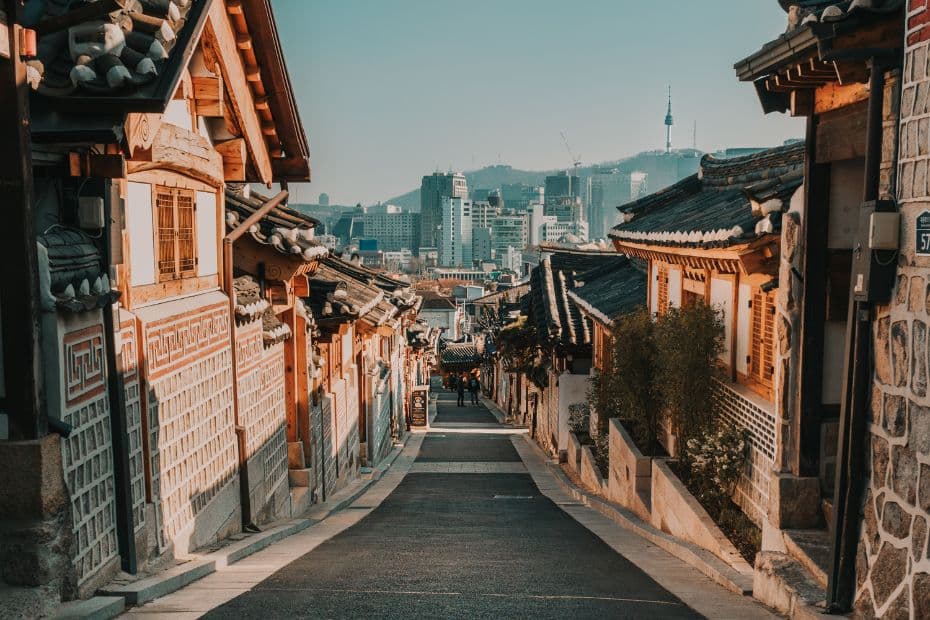
The next few sections of this South Korea travel guide will help you figure out what you want to do and see on your travels. This first section will give you a brief introduction to the best places to visit in Korea, including the major cities, tourist hotspots, and unique areas that you’re sure to love.
Here are the best places to visit in Korea:

Seoul: Korea’s Capital
Seoul is Korea’s vibrant, bustling capital and truly a must-see for any first-time visitor to Korea. There is so much to see and do in Seoul that you could easily spend a week or more exploring the city and not get bored. You will find yourself falling in love with the city for different reasons. Maybe it’s the friendly people, the deliciously cheap street eats, the way things just work, the hidden murals on old buildings down side streets, the feeling of safety even in a big city, or the historic sights creeping out from modern buildings. Seoul includes everything Korea has to offer, plus a lot more you won’t find elsewhere.
What To See In Seoul
Here are 10 great places to visit in Seoul:
- Gyeongbokgung Palace
- Bukchon Hanok Village
- Myeongdong Street Markets
- Lotte World Tower & Seokchon Lake
- Dongdaemun Design Plaza & Markets
- Yeouido Han River Park & Cruise
- Secret Garden (Changdeokgung Palace)
- N Seoul Tower & Namsan Mountain
- COEX Mall & Bongeunsa Temple
- Bukhansan National Park
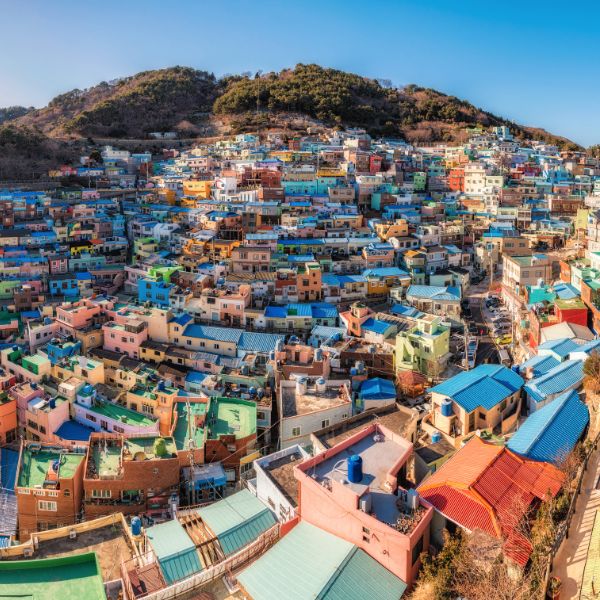
Busan: Big Coastal City
While Seoul is a showcase of all things Korean, Busan is unashamedly its own city and a celebration of coastal life and local culture. Busan is famous for fresh seafood, traditional markets, great beaches, big festivals, movies, temples, and places to explore the coast. Beaches are popular places to visit in Busan, along with cliff-side walkways with views over the ocean. Central Busan is a lively spot with lots of entertainment and markets to enjoy, including a famous fish market where you can choose your own lunch and then eat it. Busan is spread out and deserves several days to explore it properly.
What To See In Busan
Here are 10 great places to visit in Busan:
- Haeundae Beach & Beach Train
- Jagalchi Fish Market
- Gamcheon Culture Village
- Haedong Yonggungsa Temple
- Songdo Beach & Cable Car
- Huinnyeoul Culture Village
- BIFF Square & Centum City Mall
- Oryukdo Skywalk & Coastal Paths
- Lotte World Busan
- Busan X The Sky Observatory
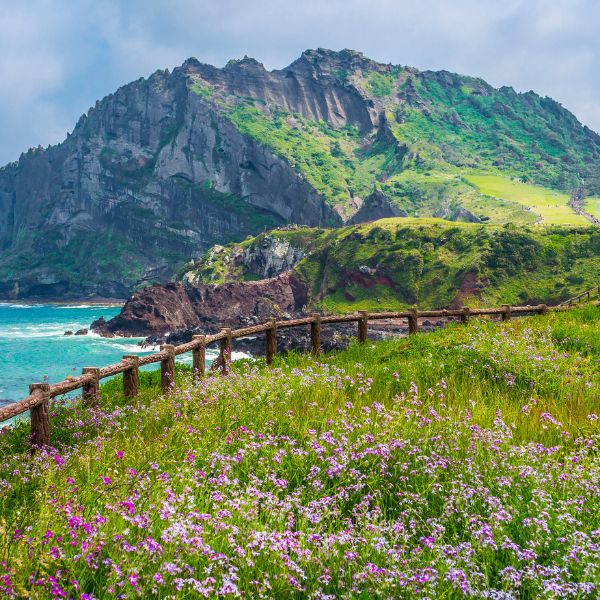
Jeju Island: Natural Wonder
Jeju Island is a gorgeous island created from a volcano rising out of the ocean 2 million years ago. Today it’s one of the New 7 Natural Wonders of Nature and deservedly so. The lush island is packed with pine trees, tangerines, rolling hills and fields, cacti, and jet black volcanic rock tumbled all around. You can relax on a beach, go horse riding, explore ancient lava tubes, scuba dive, climb to the volcano’s peak, chill in a beach-side cafe, explore traditional markets, learn about local culture, and lots more. The island has two main cities, but the attractions are spread out along the coast.
What to See On Jeju Island
Here are 10 great places to visit on Jeju Island:
- Hallasan Mountain (Volcano)
- Seongsan Ilchulbong Sunrise Peak
- Hyeopjae & Hamdeok Beaches
- Seogwipo Maeil Olle Market
- Jeju Folk Village
- Yakcheonsa Coastal Buddhist Temple
- Jungmun Beach & Jusangjeolli Cliff
- O’Sulloc Green Tea Museum
- Cheonjiyeon & Jeongbang Waterfalls
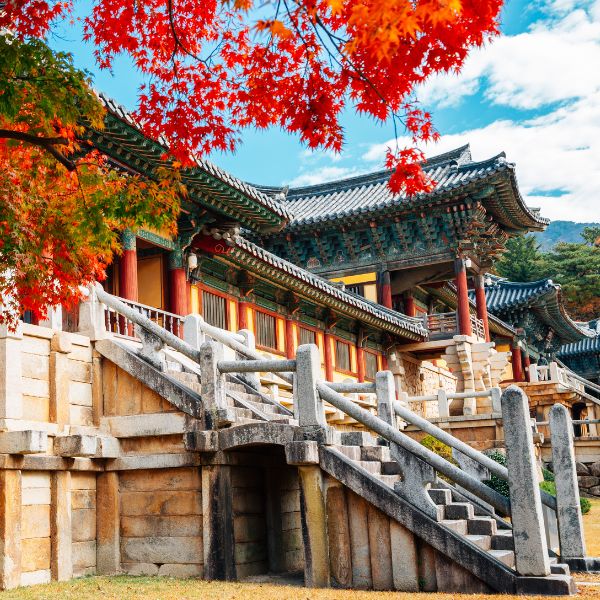
Gyeongju: Historic Capital
Gyeongju , the former capital of the Shilla Kingdom in ancient Korea, is a true treasure trove of UNESCO World Heritage sites, as well as local culture, history, and natural beauty. Described as an outdoor museum, you can see many of the big attractions in the Gyeongju Historic Area, including the 1,400 year Cheomseongdae Observatory . There’s so much to see in Gyeongju outside this area though, including the impressive Bulguksa Temple, one of the best Buddhist temples in Korea. There’s also the Bomun Lake Tourist District, a dreamy sight during cherry blossom season.
What To See In Gyeongju
Here are 10 great places to visit in Gyeongju:
- Bulguksa Temple & Seokguram Shrine
- Cheomseongdae Observatory
- Donggung Palace & Wolji Pond
- Yangdong Folk Village
- Hwangnidangil Hanok Street
- Daereungwon Tomb Complex
- Bomun Lake Tourist Complex
- Woljeonggyo Bridge
- Gyeongju National Museum
- Gyochon Traditional Hanok Village
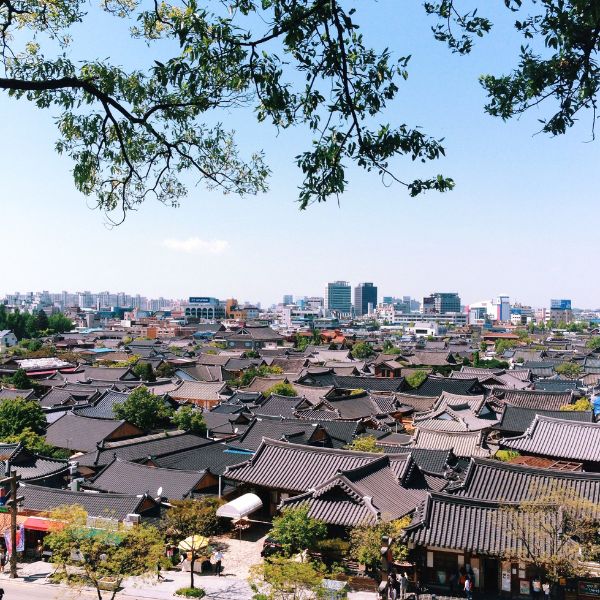
Jeonju: Traditional Views & Food
Jeonju is the perfect destination for a day trip from Seoul and has most of its main attractions in one area of the city. What can you see in Jeonju? The main attraction is the gigantic Jeonju Hanok Village , featuring more than 700 traditional hanok houses. You can dress up in Korean hanbok, dine on Jeonju’s famous bibimbap in an old restaurant, and see how life in Korea used to be. There are plenty of other sights nearby, including a traditional market, pretty river, and the rather unusual Jaman Mural Village.
What To See In Jeonju
Here are 5 great places to visit in Jeonju:
- Jeonju Hanok Village
- Jeongdong Catholic Church
- Gyeonggijeon Shrine
- Nambu Traditional Market
- Jaman Mural Village
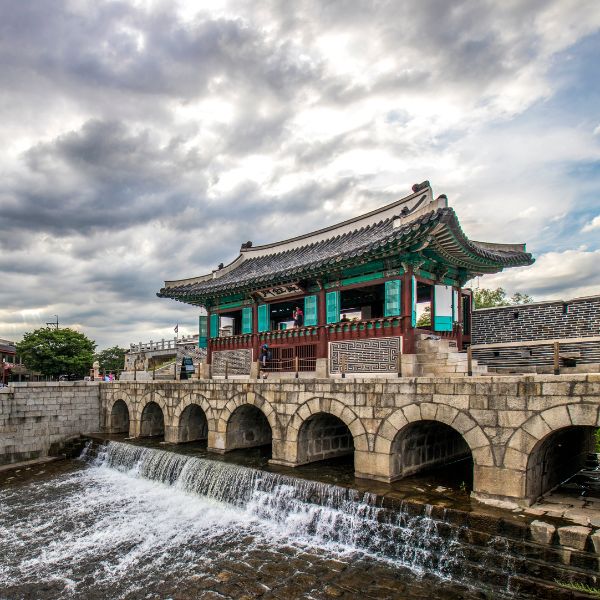
Suwon: Fortress City
Suwon is another city close to Seoul that you can visit in a day and see many interesting and unique sights. The main draw of Suwon is the Hwaseong Fortress and the fortress walls, which are still intact and run for 6km around the city. Inside this fortress you’ll find lots of museums, historic buildings, parks, and activities, such as archery. There are often cultural festivals in this area, too. Surprisingly, Suwon is the best place to get KFC (Korean Fried Chicken). There’s a whole street dedicated to making it.
What to See In Suwon
Here are 5 great places to visit in Suwon:
- Hwaseong Fortress & Fortress Walls
- Hwaseong Haenggung & Haengridan Gil
- Fried Chicken Street
- Korean Folk Village
- Gwanggyo Lake Park
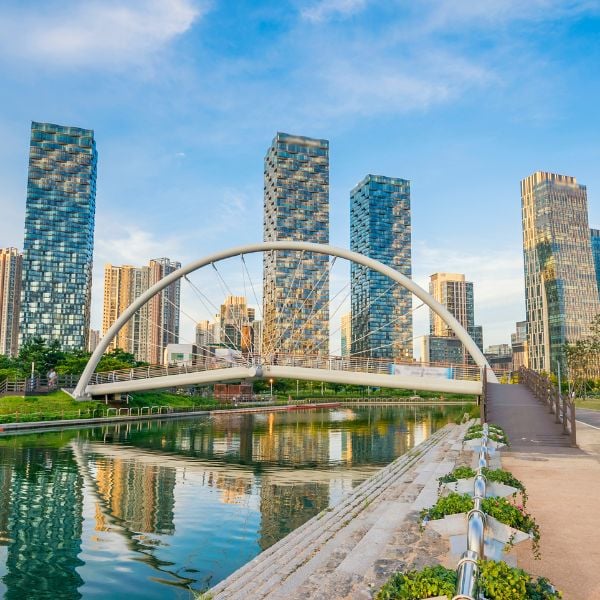
Incheon: Modern City With Islands
Incheon is one of Korea’s largest cities, but is sadly ignored as it’s right next to Seoul and most people think it’s just there for the airport. That’s not true at all and there’s plenty to see and do in Incheon. Described as a futuristic city, Incheon is at the front of Korea’s push to become an ultra-modern country and nowhere shows that more than Songdo Central Park . The traditional side of Incheon is also worth exploring, including the Chinatown, which is home to Korea’s most popular student food – jajangmyeon . If you want to explore a lesser-seen side of Korea, check out the islands near Incheon to see ancient fortresses, temples, and charming sights.
What to See In Incheon
Here are 5 great places to visit in Incheon:
- Songdo Central Park
- Incheon Chinatown
- Wolmido Island
- Incheon Grand Park
- Ganghwa Jeondeungsa Temple
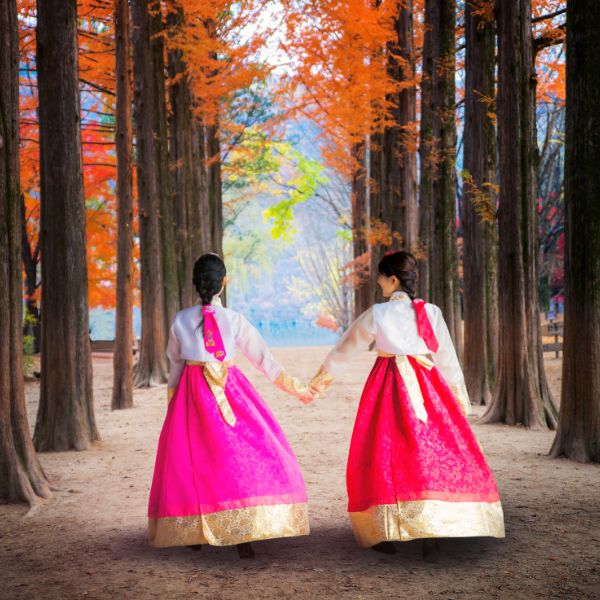
Gapyeong County: Tourists Treats
Gapyeong County is a rural part of Korea just outside Seoul that is one of the most popular day trip destinations for visitors and locals alike. Inside Gapyeong County is the lovely Garden of Morning Calm , a beautiful sculpted garden that showcases traditional Korean buildings set amongst thousands of different plants and trees. There’s also Nami Island , an ever-popular attraction that has long tree-lined streets to explore, woodland animals, bike paths, and even a zip line to the island. You can also visit Petite France, a recreation of a French village, Gapyeong Rail Bike Park, and Cheongpyeong Lake, and many other attractions in Gapyeong.
What To See In Gapyeong
Here are 5 great places to visit in Gapyeong:
- Nami Island
- Garden of Morning Calm
- Petite France
- Gapyeong Rail Bike Park
- Cheongpyeong Lake
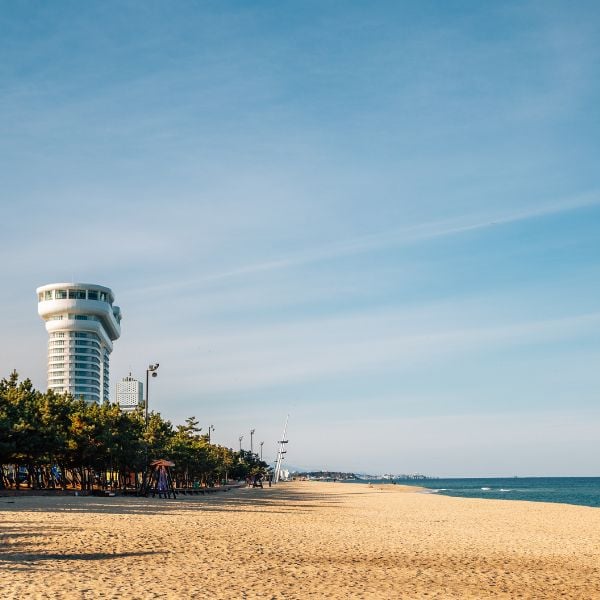
North-East Coast: Amazing Beaches
The north-east coastal region of Korea, spreading between Sokcho and Gangneung , features some of Korea’s most popular summer seaside resorts and beaches. The wide, sandy beaches are perfect for water sports, working on your tan, and sitting at night listening to local musicians perform BTS covers and their own tunes. Sokcho deserves at least two days to explore, more if you plan to visit nearby Seoraksan National Park , one of Korea’s best places to see autumn foliage. Gangneung is where to see cherry blossoms in spring, sit and relax at a seaside cafe at Gangneung Coffee Street , and enjoy beach life.
What To See On The North-East
Here are 5 great places in north-east Korea:
- Sokcho Beach
- Gangneung Beach
- Seoraksan National Park
- Yangyang Surfyy Beach
- Gangneung Coffee Street
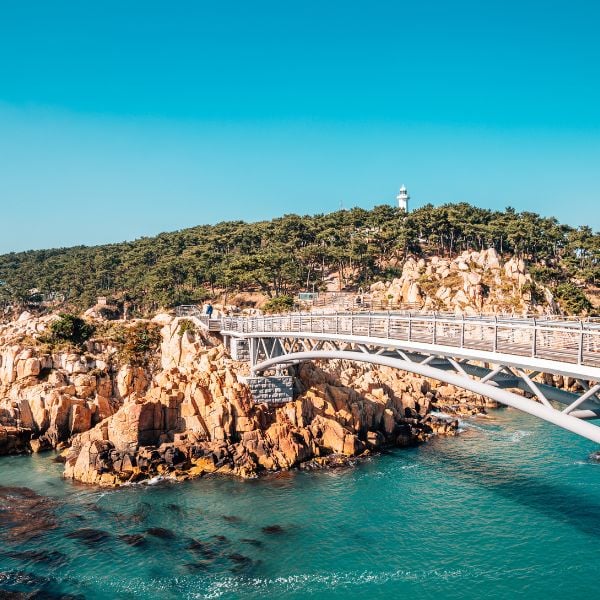
East Coast: Harbour Cities
Ulsan and Pohang are two industrial cities that don’t get enough attention, but are ideal for a weekend visit once you’ve explored other top sights. These coastal cities both have good beaches, coastal walks, and green spots, including a pretty bamboo forest in Ulsan. In Pohang, you can see the dizzying Space Walk , which looks out over the city and ocean. There’s also a former Japanese district with old buildings, and the famous Homigot Sunrise Square where you can watch the first sunrise of the year. Ulsan is famous for whaling and visitors should check out the charming Jangsaengpo Whale Museum and Daewangam Park.
What To See On The East Coast
Here are 5 great places on Korea’s East Coast:
- Yeongildae Beach & Space Walk
- Ilsan Beach & Daewangam Park
- Jangsaengpo Whale Museum
- Homigot Sunrise Square
- Taehwagang National Garden
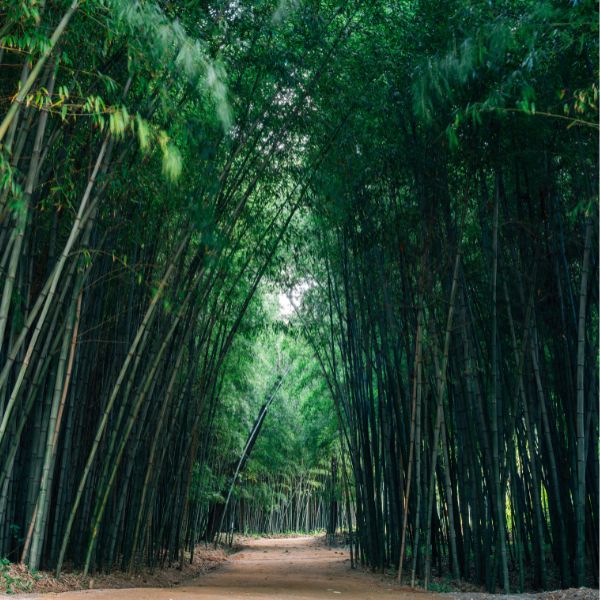
South-West: Iconic Rural Destinations
South-west Korea is a long way from most travellers’ typical route, but this area is worth visiting if you have time. Gwangju , one of Korea’s largest cities, is hidden away down here and surrounded by natural beauty, including the Juknokwon Bamboo Forest , Boseong Green Tea Fields, and Suncheon Bay Nature Reserve. If you plan to hire a car , these spots will show you a completely different side to Korea. Gwangju, too, which is a fun city and the birthplace of Korean democracy. Hidden in the far corner of Korea is Mokpo, a lovely coastal city that has a new cable car carrying you over the ocean.
What to See In The South-West
Here are 5 great places in south-west Korea:
- Damyang Juknokwon Bamboo Forest
- Boseong Green Tea Fields
- Gwangju Culture Park & Penguin Village
- Suncheon Bay Nature Reserve
- Mokpo Marine Cable Car
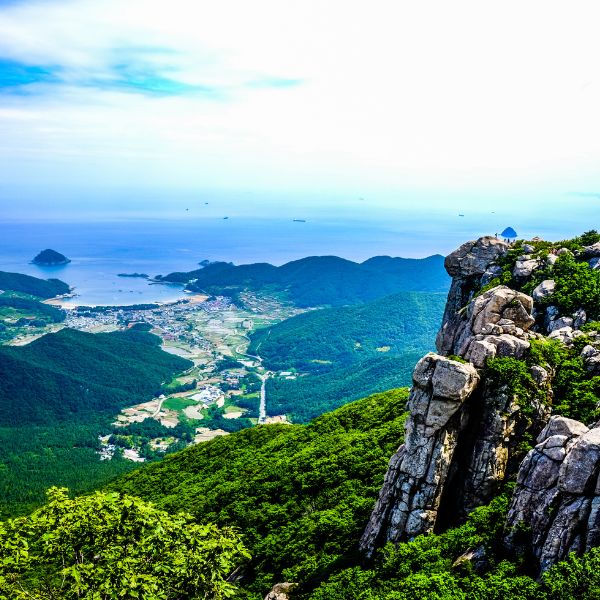
South Coast Islands: Summer Getaways
Best explored during the hot summer months and early autumn, the south coast islands in Korea, which span from Busan to Mokpo, are where Koreans spend their summer holidays. The most popular destinations here are Geoje, Tongyeong, Yeosu, Namhae, and Goheung and each offers winding coastal paths, beaches, natural beauty, and fun summer activities. The best way to see these islands is with a rented car or by bike, riding around the coast visiting a few different beaches and attractions. Don’t expect too many cultural sights, instead you’ll find luges, gardens, water sports, and lots of fun.
What to See On The South Coast
Here are 5 great places on Korea’s South Coast:
- Dolsan Park & Cable Car
- Namhae Geumsan Boriam Hermitage
- Hallyeohaesang National Park
- Oedo-Botania Botanical Garden
- Skyline Luge Tongyeong
As you can see, there are many great places to visit in Korea. Korea is truly a country of undiscovered wonders that people aren’t aware of. Seoul is an incredible place to visit, but there’s so much more to see. That’s why I try to include lesser-known places in this South Korea travel guide.
The list above covers a lot of the most popular or tour-worthy destinations in Korea, but there are still more places I could recommend, such as Andong (home to the mask dance festival), Gunsan (port town with a retro vibe), Daegu (big city with historic sights), Daejeon , and many more.
Besides cities and towns in Korea, there are also 18 national parks to explore, thousands of mountains, Buddhist temples, beaches, bike routes, campsites, and so much more. I’ll include a few of each of these in the next few sections of this South Korea travel guide.
Best Day Tours From Seoul In 2024
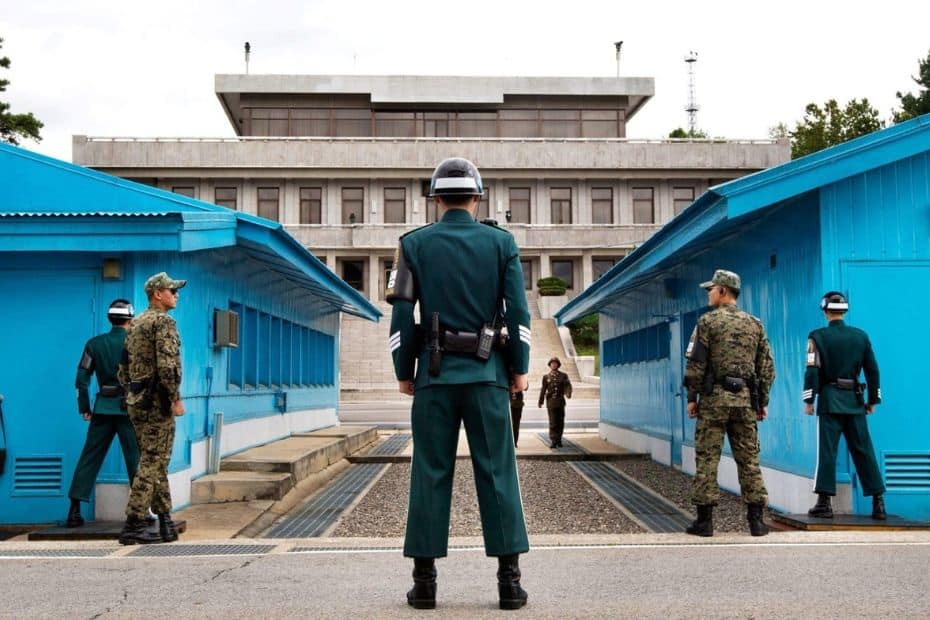
Taking a day tour while you’re staying in Seoul is a great way to see more of Korea’s top attractions without the hassle of moving hotels to somewhere new. The 10 day tours from Seoul below can all be done in a day or less and can even be combined with other activities in the same day.
I don’t want to include every day tour available in this South Korea travel guide as there isn’t enough room to talk about them all. If you want to find more day tours, I recommend looking at the options available through tour providers such as Klook , Viator , and Get Your Guide .
Please note : There are many day tours from Seoul and they come with various prices. I recommend avoiding the very cheapest as these will often waste your time by taking you to some overpriced gift shop area and pressuring you to buy souvenirs or rushing you through too many attractions.
Here are 10 great day tours from Seoul:
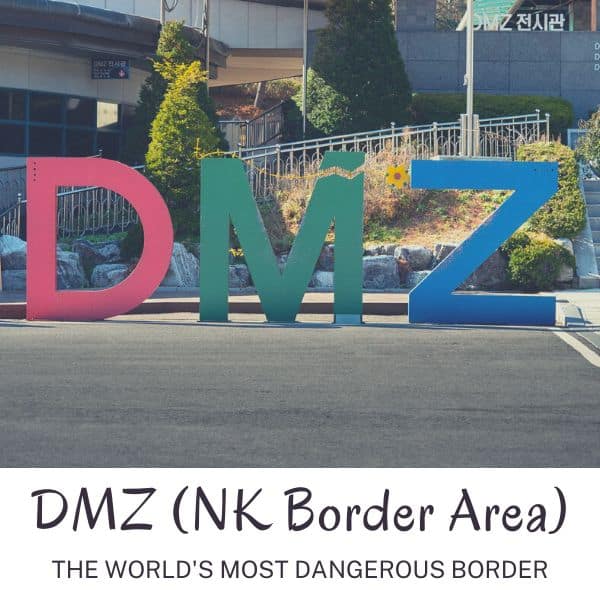
Why Visit The DMZ
The DMZ, the demilitarised zone between North & South Korea is a truly unique place to visit when you’re in Korea. There are several different locations to see in this area, each reflecting the bitter struggle between the two Korea’s in the ongoing Korean War. Some of the highlights are the 3rd Tunnel, Dora Observatory, Dorasan Station, Gamaksan Suspension Bridge, and the Imjingak Park. There’s also the Panmunjom Truce Village where you can walk into North Korea, but this is currently closed. Tours are required to travel to certain parts of the DMZ.
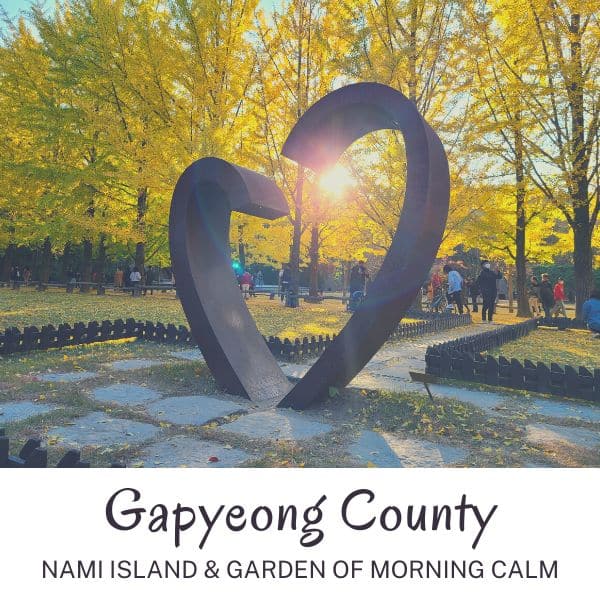
Why Visit Gapyeong County
Gapyeong County is home to Nami Island, the Garden of Morning Calm, Petite France, Gapyeong Rail Bike Park, and several other fun attractions. Nami Island and the Garden of Morning Calm are the most popular and can both be visited in a day. You can witness beautiful scenes at these destinations, especially during cherry blossom season (April) and autumn foliage season (October). Tours from Seoul to Gapyeong County are convenient and can take you to multiple places in one day without the hassle of buses and finding your own way.
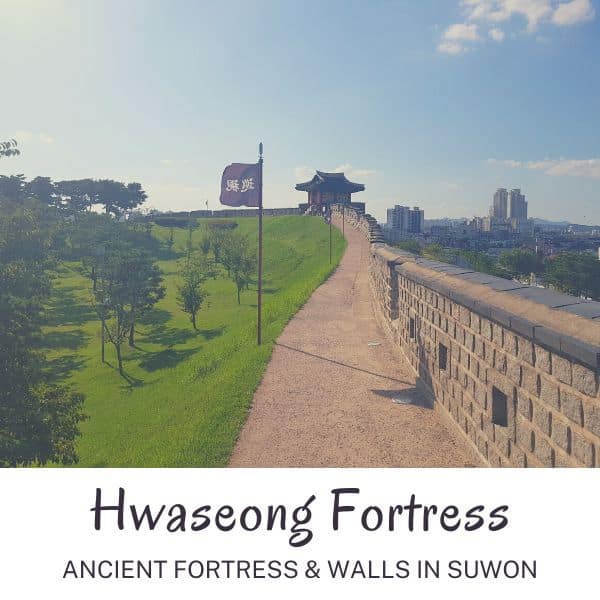
Why Visit Hwaseong Fortress
Hwaseong Fortress and its fortress walls offer a unique chance to see what life was like in Korea 200 years ago. Not only can you walk the full length of the walls around the city, you can also try archery and other traditional activities in the fortress grounds. There are many museums, fortress buildings, and exhibitions showing how people lived in this period. You can also enjoy the beautiful ponds and streams that run through the palace with traditional Korean restaurants and cafes looking out over these areas.
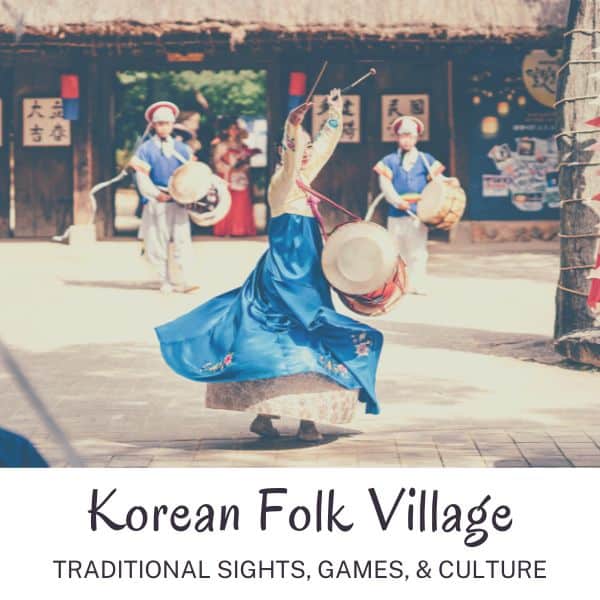
Why Visit Korean Folk Village
Discover traditional Korean life at the Korean Folk Village in Yongin during a day trip from Seoul. Walk through dozens of recreated farm buildings, government offices, academies, shops, smiths, schools, and other traditional buildings from Korea’s past to get a feel for how people lived at this time. Actors dressed in traditional Joseon-era costumes bring the scenes to life. You can try fun activities, such as mask carving, horse riding, and archery. Witness exciting festivals and cultural performances, too.
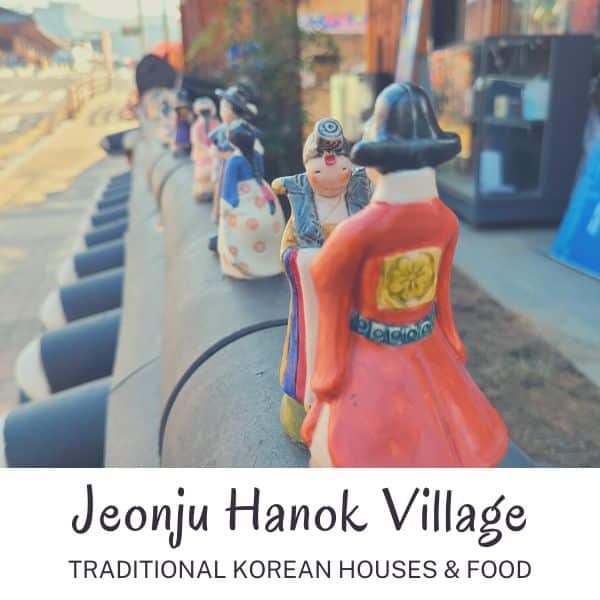
Why Visit Jeonju Hanok Village
A day trip to the Jeonju Hanok Village in Jeonju is a great way to experience various traditional Korean cultural activities in a beautiful setting. This sprawling hanok village has over 700 traditional buildings for you to explore, dine in, or even stay in. Make sure you rent hanbok in Jeonju so you look like Korean royalty and make memorable photos during your trip. Whilst you’re in Jeonju Hanok Village, you can try local delights such as Jeonju bibimbap and PNB chocopies. Also check out the traditional Nambu Market and Jeongdong Catholic Church.

Why Visit Alpaca World
When you travel to Korea, you may not think about seeing alpacas, which are from an entirely different continent. But Korea’s love of all things cute means that these furry friends have become very popular in Korea and have their own theme park a few hours from Seoul. There are dozens of cuddly alpacas to see, feed, and play with at Alpaca World , as well as hundreds of other cute critters such as ponies, rabbits, deer, goats, fennec foxes, and more. There are 17 separate areas to explore in Alpaca World and it’ll provide hours of fun for the whole family.
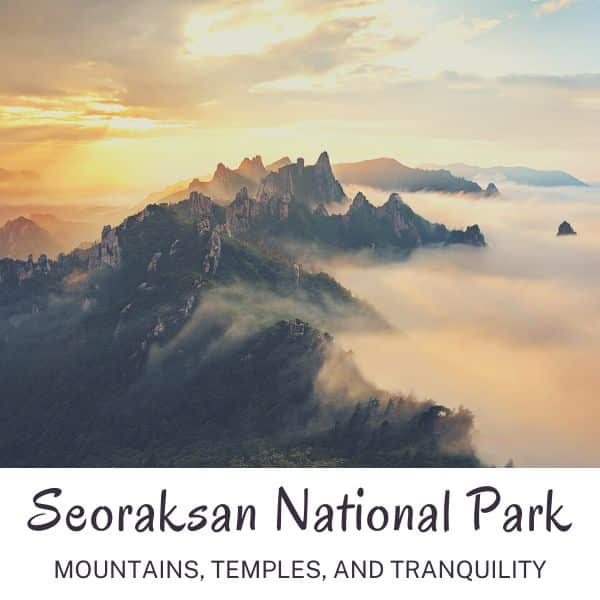
Why Visit Seoraksan
Seoraksan National Park on Korea’s east coast is a great day trip from Seoul for those who want to see mountain peaks, leafy valleys, stony rivers, and a gigantic Buddha. Even if you’re not a keen hiker, you can explore lots of the park’s valley pathways easily, or reach the top thanks to the convenient cable car. See the sights from the observatory and check out the small temple in the clouds. Make sure you try haemul pajeon (seafood pancake) and makgeolli (rice wine). It’s the traditional meal Koreans enjoy after hiking.
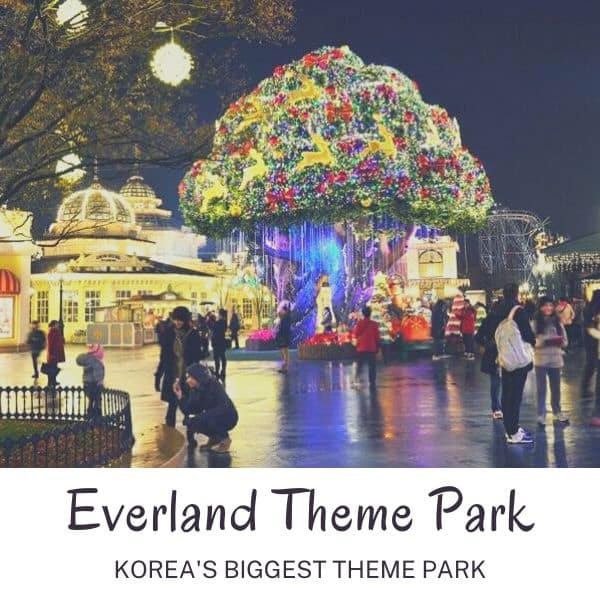
Why Visit Everland
Everland is Korea’s biggest theme park and is packed with attractions for everyone to enjoy. Thrill seekers will love the rollercoasters, such as T Express (the world’s 4th steepest rollercoaster) and many more exciting rides. Check out the Zootopia section to see wild animals and wild rides, or the Plantopia section for floral beauty, romantic walkways, and seasonal delights. There are plenty of attractions, cultural performances, entertainments, and seasonal events to keep you amused all day long.
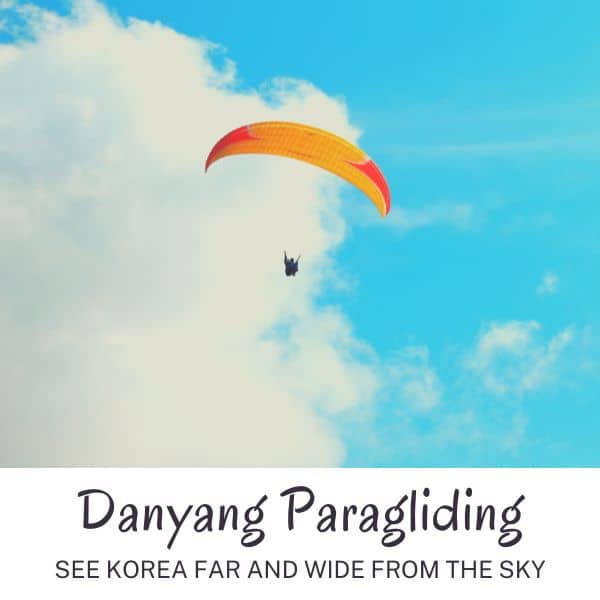
Why Visit Danyang
A great way to see Korea’s countryside is with a day trip to Danyang to enjoy the rush of sailing over valleys and beside mountains while tandem paragliding. Feel the wind in your face and the sensation of riding the air currents as you pass over the many delightful views of Danyang. You can enjoy other activities in this area, such as the Mancheonha Skywalk , a clifftop lookout with incredible views, riding an alpine coaster, and zooming along a zip line. The perfect day tour from Seoul for thrill seekers.
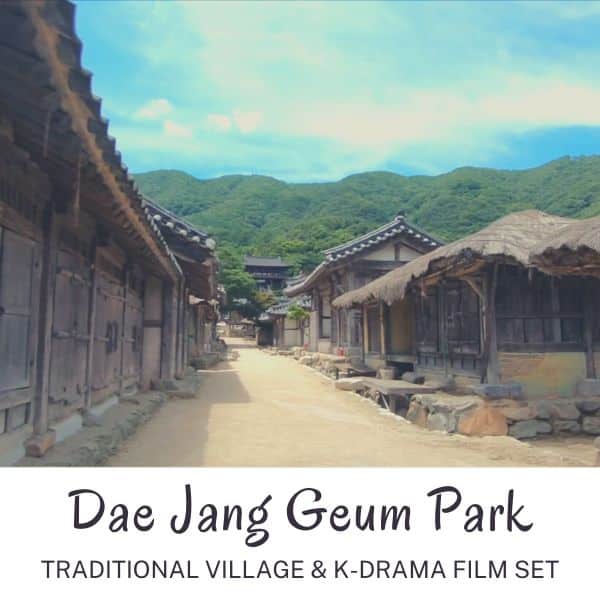
Why Visit Dae Jang Geum Park
Fans of Korean period dramas and movies will love a day trip to Dae Jang Geum Park in Yongin. This is the largest historical drama filming set in Korea and was used to film MBC productions such as ‘Wind in the Palace’ and ‘The Great Queen Seondeok’, as well as K-Pop videos including Daechwita by Suga from BTS. If you’re lucky, you may see filming going on here. But even if you don’t, it’s a fun place for those who want to learn more about Korea’s history and take some cool pictures in a real movie set.
I’ve linked to tours provided by reliable tour companies in Korea. If you would rather book a tour through a local guide, contact Jerry Heng or Andrew Chung Hanbyul . They’re freelance guides with years of experience offering tours in Korea and both offer amazing service.
These places are accessible by public transport, but may take much longer than a tour would do, wasting your precious time. Check out my guide for getting to Nami Island to help you navigate Gapyeong County. For other destinations, I would recommend a tour – it’s more practical.
Best Sights To See In Korea In 2024
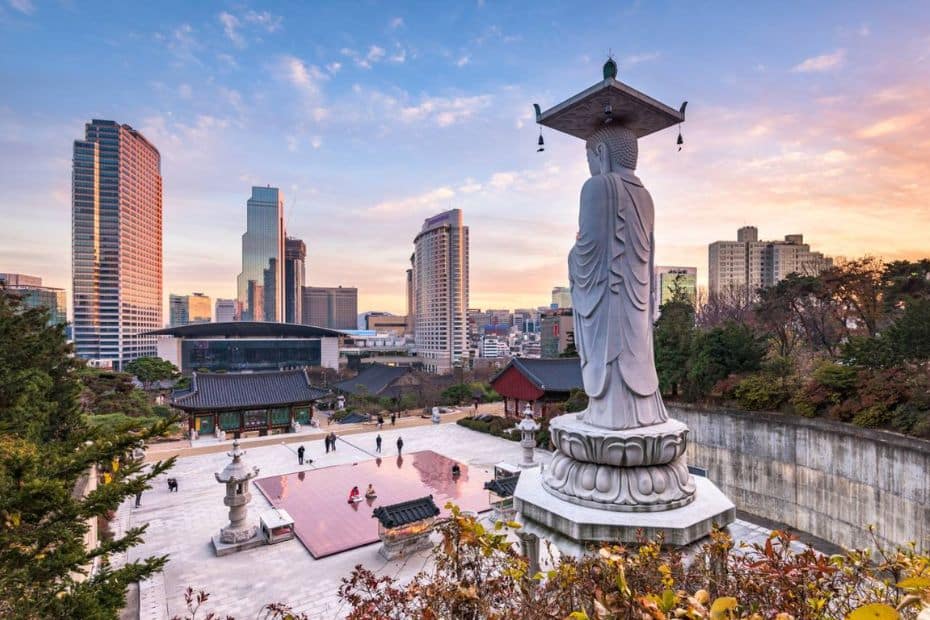
South Korea truly has something for everyone. There’s so much I want to include in this South Korea travel guide, which is why this section is full of different sights to see and explore. However, to keep things short and simple, I’ll just list them, not give full details about each one.
Whether you’re travelling to Korea to learn about Korean culture or history, to see Korea’s impressive landmarks, to enjoy family fun attractions, to hop from cafe to cafe, to immerse yourself in nature, or simply to eat and shop, then you’ll definitely find something for you in this section.
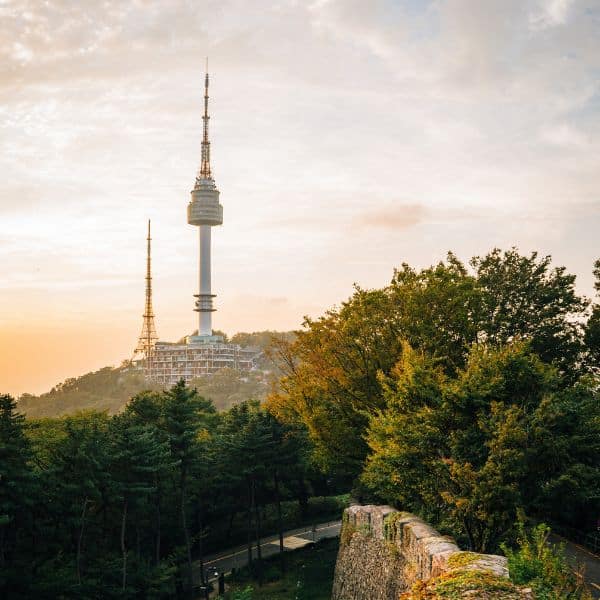
Famous Landmarks In Korea
Landmarks and iconic buildings are often top of a traveller’s bucket list for Korea as they provide great photo opportunities, showcase the best of the country, and offer fantastic views. Seoul has many top landmarks, but you can see plenty of other sights outside of the capital, too.
Here are 10 famous landmarks in Korea:
- Lotte World Tower (Seoul)
- N Seoul Tower (Seoul)
- Dongdaemun Design Plaza (Seoul)
- Cheonggyecheon Stream (Seoul)
- DMZ Area (near Seoul)
- Nami Island (Gapyeong County)
- Gamcheon Culture Village (Busan)
- Seongsan Ilchulbong (Jeju)
- Homigot Sunrise Square (Pohang)
- Banwol Purple Island (West Coast)
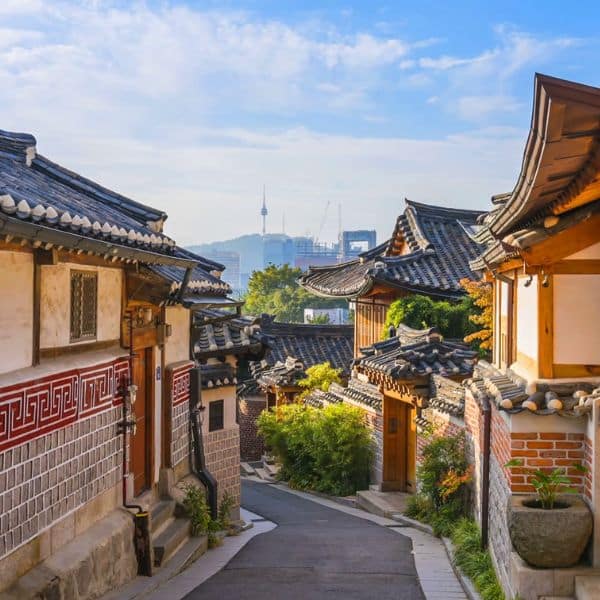
Historic Sights In Korea
Discover life in the Joseon period and before in Korea’s many captivating historic sights, including royal palaces, Buddhist temples, fortresses, and hanok villages. There are so many amazing historic sights to see in Korea, with each city having something to see.
Here are 10 historic sights in Korea:
- Bukchon Hanok Village (Seoul)
- Gyeongbokgung Palace (Seoul)
- The Secret Garden (Seoul)
- Seoul Fortress Walls (Seoul)
- Hwaseong Fortress (Suwon)
- Bulguksa Temple (Gyeongju)
- Gyeongju Historic Area (Gyeongju)
- Jeonju Hanok Village (Jeonju)
- Haedong Yonggungsa Temple (Busan)
- Andong Hahoe Village (Andong)
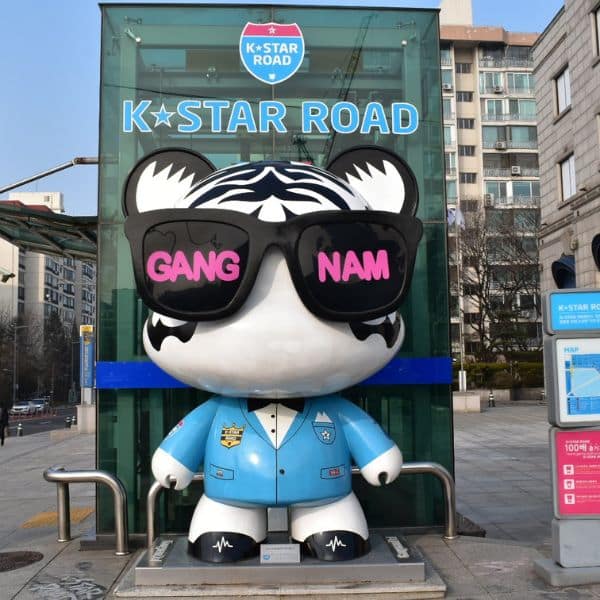
Korean Modern Cultural Sights
Fans of BTS, K-Dramas, Korean movies, and modern Korean culture in general have a lot to see and do in Korea. As well as famous filming locations across the country, these modern cultural sights will entertain, inform, and provide great destinations to visit.
Here are 10 modern cultural sights in Korea:
- Hallyu K Star Road (Seoul)
- K-Style Hub (Seoul)
- Hongik Uni. Station Area (Seoul)
- COEX Artium (Seoul)
- Asia Culture Centre (Gwangju)
- BIFF Square (Busan)
- Dae Jang Geum Park (Yongin)
- Sunshine Studio (Nonsan)
- Kim Gwang-Seok Street (Daegu)
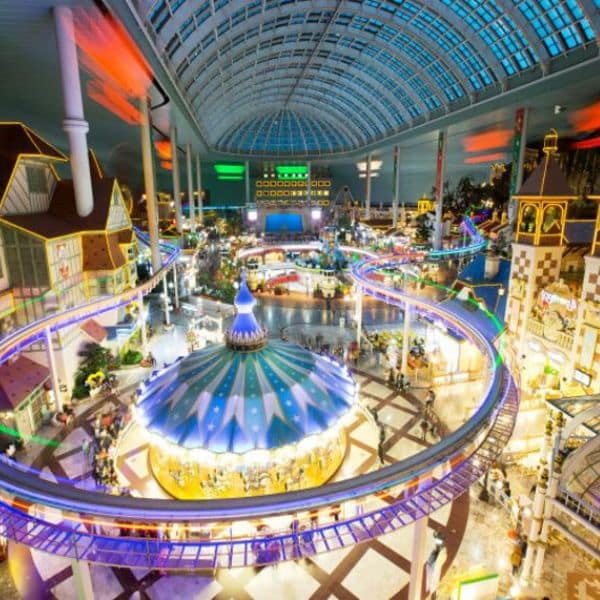
Family Fun Attractions In Korea
Families travelling to Korea have plenty of things to see and do and ways to enjoy spending time together. There’s no Disneyworld or Universal Studios in Korea, but there are plenty of great alternatives, as well as places for children to explore, learn, and discover.
Here are 10 family fun attractions in Korea:
- Lotte World Adventure (Seoul)
- Everland Theme Park (Yongin)
- Seoul Grand Park & Zoo (Seoul)
- Alive Museum & Dynamic Maze (Seoul)
- Seoul Children’s Museum (Seoul)
- Zoolung Zoolung (Seoul)
- Sea Life Busan Aquarium (Busan)
- Jeju Dinosaur Island (Jeju Island)
- Alpaca World (Gangwon Province)
- Skyline Luge & Lotte World (Busan)

Korean Museums & Galleries
Travellers to Korea who want to learn about Korea’s history, culture, and art will love Korea’s impressive museums and galleries. These are great places to visit when the weather is bad and you might be surprised at how much there is to learn about Korea’s past.
Here are 10 museums & galleries in Korea:
- National Museum of Korea (Seoul)
- War Memorial of Korea (Seoul)
- Seoul Museum of Art (Seoul)
- Seoul Museum of History (Seoul)
- Seodaemun Prison Museum (Seoul)
- Museum Kimchikan (Seoul)
- National Folk Museum of Korea (Seoul)
- Gyeongju National Museum (Gyeongju)
- National Maritime Museum (Busan)
- Daegu Art Museum (Daegu)
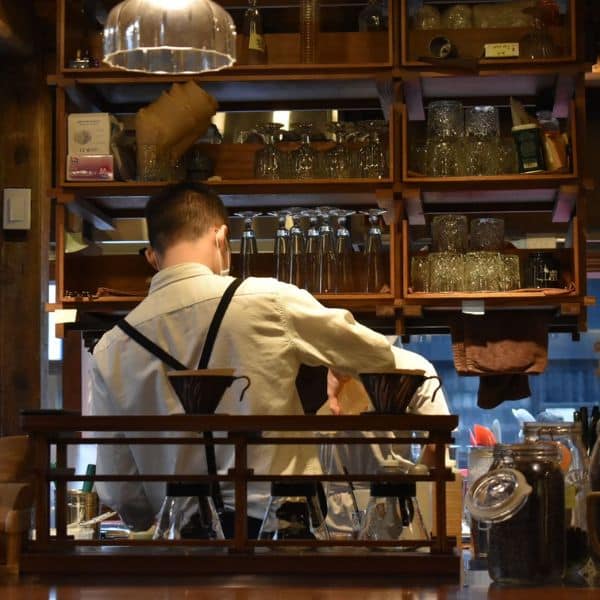
Cafe Areas In Korea
When you need a break from travelling in Korea, visit one of these cosy cafe areas and take time to relax and recharge. Although Korea was traditionally a tea drinking country, cafes are now everywhere and you’ll find photogenic cafes everywhere these days.
Here are 10 cafe areas to visit in Korea:
- Ikseondong Hanok Village (Seoul)
- Gyeongui Line Parks (Seoul)
- Samcheondong Cafe Street (Seoul)
- Sinsa-dong / Garosugil Road (Seoul)
- Jukjeon Cafe Street (Seoul)
- Jeonpo Cafe Street (Busan)
- Haeridangil (Busan)
- Hwangnidangil (Gyeongju)
- Hwaseong Haenggung Area (Suwon)
- Gangneung Coffee Street (Gangneung)
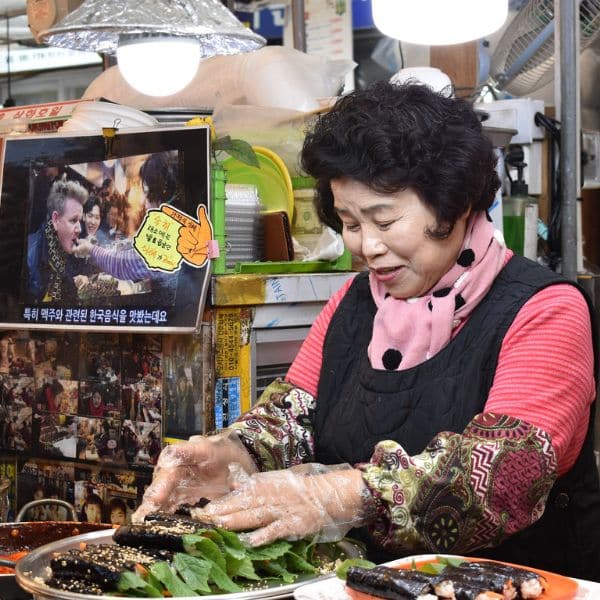
Korean Markets & Malls
If you want the best selection of street food, souvenirs, and bargain shopping options, be sure to visit Korea’s many traditional markets. It’s a cultural experience itself. Korea also has some of the world’s largest malls with a wide variety of Korean and international goods.
Here are 10 markets & malls in Korea:
- Gwangjang Market (Seoul)
- Dongaemun Market (Seoul)
- Hongdae Shopping Street (Seoul)
- Starfield COEX Mall (Seoul)
- Jagalchi Fish Market (Busan)
- Seomyeon Underground Mall (Busan)
- Centum City Mall (Busan)
- Seogwipo Maeil Olle Market (Jeju)
- Nambu Market (Jeonju)
- Paju Premium Outlets (Paju)

Korean Natural Wonders
Korea is a country covered in mountains, waterfalls, valleys, rice terraces, and beautiful natural sights. Make time to visit some of these natural wonders when you visit Korea and you’ll be amazed at the incredible views you can find. The national parks are truly breathtaking.
Here are 10 natural wonders to see in Korea:
- Hallasan Mountain (Jeju)
- Jirisan National Park (Southern Korea)
- Seoraksan National Park (Gyeonggi)
- Garden of Morning Calm (Gapyeong)
- Juknokwon Bamboo Forest (Damyang)
- Boseong Green Tea Fields (Boseong)
- Udo Island (Jeju Island)
- Seongsan Ilchulbong Sunrise Peak (Jeju)
- Hyeopjae Beach (Jeju)
- Suncheon Bay National Park (Suncheon)
These 100 ideas are just the tip of the iceberg for what you can enjoy when travelling to Korea. There’s so much more to discover and I recommend you add some time to your travel plans to explore without a plan. Sometimes the best travel memories come from unexpected discoveries.
Best Activities To Try In Korea In 2024
Often the most memorable moments when travelling come from the experiences we have, not just the places we visit. Visiting a palace is interesting, but visiting a palace while dressed in traditional Korean hanbok , pretending you’re Joseon-era royalty with your friends or family is much more fun.
This section of the South Korea travel guide offers 10 fun activities you can try when you visit Korea. These will give you a good introduction to Korean culture, food, history, and nature. If you want more ideas, check out my list of 50 unique Korean experiences you can only do in Korea.
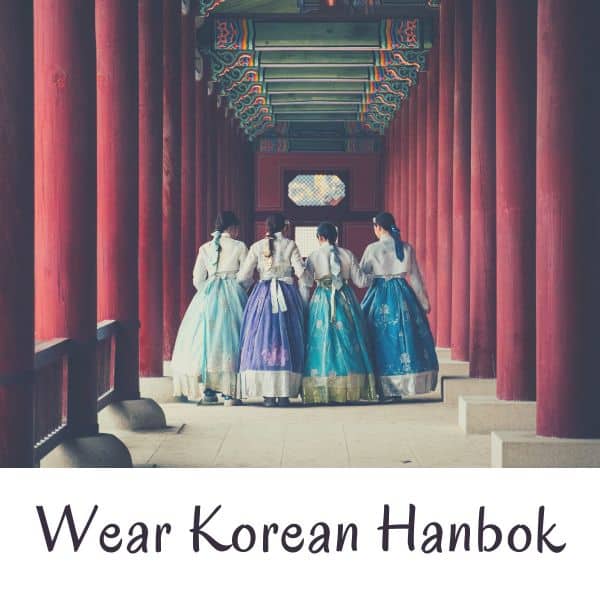
One of the top experiences to try in Korea has to be wearing Korean hanbok. It is available for all members of the family (even pets) and you can rent hanbok near most palaces or hanok villages. The hanbok easily fit over your regular clothes and come in a variety of colourful or traditional designs. You can get hair styling, accessories, and even have a hanbok photoshoot . Rentals can be as short as one hour or up to a full day.
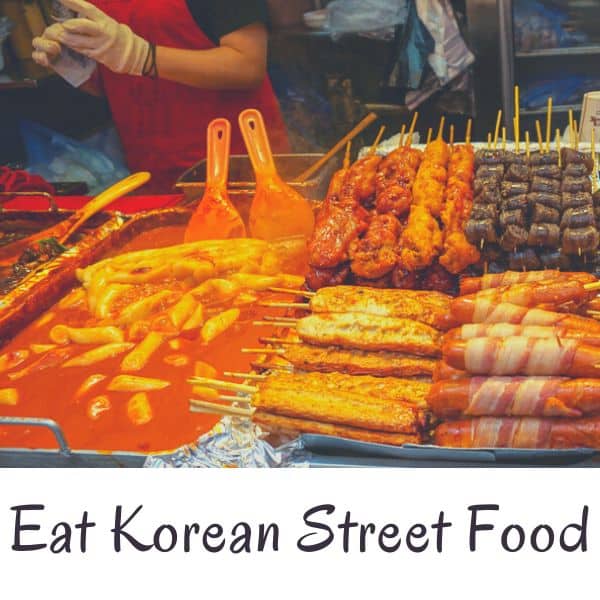
Travellers to Korea can’t say they’ve truly tried Korean cuisine until they’ve eaten Korean street food from a market stall or street vendor. There are many types of Korean street food to sample in Korea, such as savoury snacks like tteokbokki and eomuk , to sweet treats like hotteok and bungeo-ppang . Korean street food is cheap and delicious. It’s usually not that healthy, but always leaves you feeling great. Give it a try.
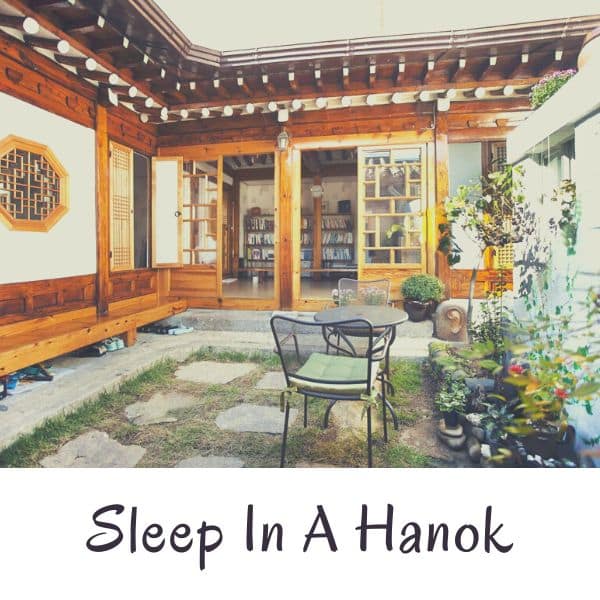
Experience life as a Korean would have in the Joseon-era with a night in a traditional hanok house. A hanok stay is very different from sleeping in a hotel and allows you to try a night on a futon (with underground heating keeping you warm in winter). Slide the doors aside in the morning and walk out onto the wooden decking to enjoy traditional Korean tea at a low table and the sight of the ornately decorated garden. Don’t forget to take your shoes off before you enter.

Seoul and other cities in Korea still have fortress walls you can walk or hike along that will offer incredible views of cities and mountains. As you walk along the fortress walls, you begin to imagine what life would have been like as a soldier keeping the city safe from invaders. Nowadays, you can enjoy exercise and sightseeing at the same time. Seoul’s fortress walls are a good place to start, but you can find fortress walls in many other places.
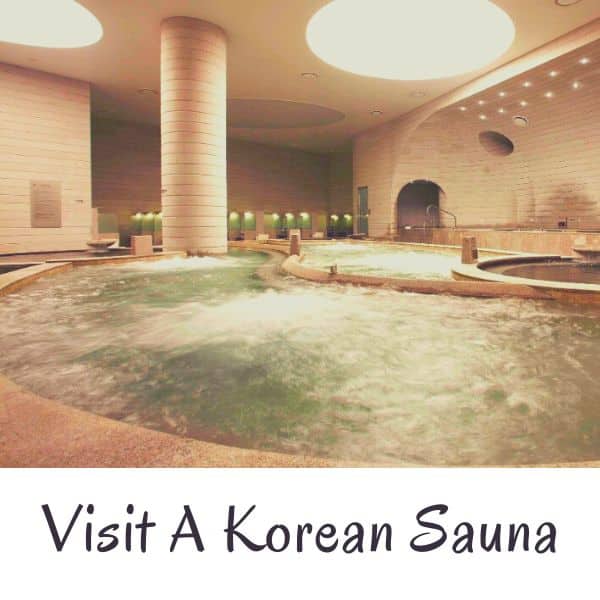
Visiting a Korean sauna might be a bit shocking for first-time travellers to Korea, but it’s a great way to relax and is especially good in winter. When you enter a Korean sauna, you should take off all your clothes, have a shower, and then enter one of the hot baths. Being naked in front of others can be scary for some, but you soon overcome that fear. Korean saunas sometimes have a communal resting area called a jjimjjilbang . These areas require pyjamas and offer snacks, drinks, and places to rest.
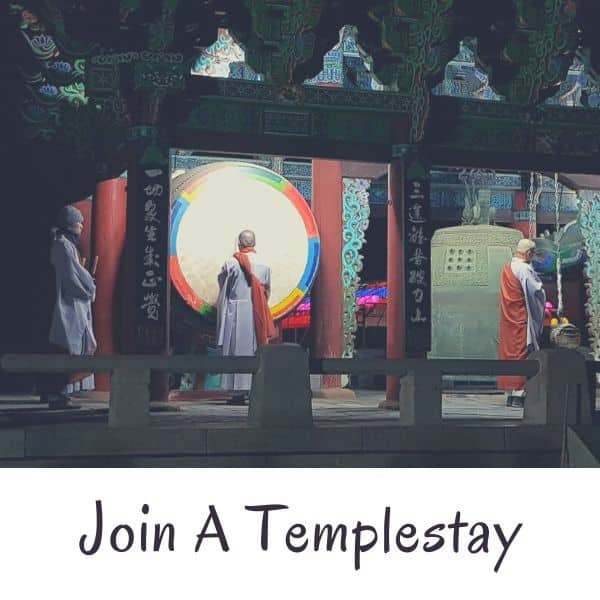
The Cultural Corps of Korean Buddhism have set up a templestay program at dozens of temples across Korea where you spend a day or two at the temple and join in various activities. This is truly a unique experience that you should try in Korea as you get to see customs performed by the monks that aren’t normally shown to the public. You also get to stay overnight at the temple and experience a hanok stay at the same time. Guests can also eat healthy vegan temple food, learn a lot, and chat with the monks.
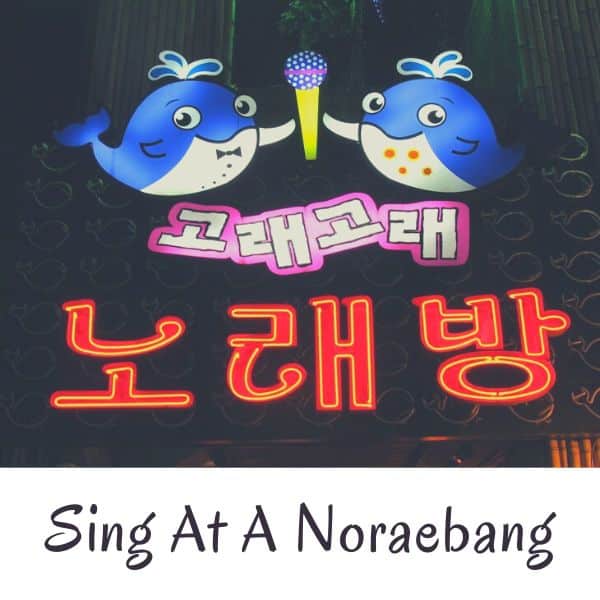
A noraebang is the Korean version of a karaoke room, but is more popular in Korea and is commonly visited by locals and tourists alike. This is a great place to visit in the evening after a big Korean bbq meal and a few drinks. Everyone can relax and belt out their favourite Korean or international tunes together (or alone), shake some tambourines in support, or just watch and enjoy the atmosphere with some drinks. You can find these in every town and city in Korea and they provide a cheap night of fun and drinks.
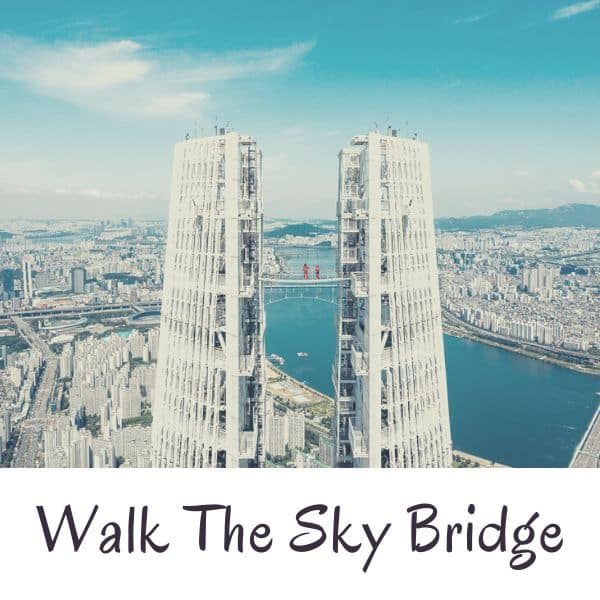
Open since 2020, the Sky Bridge at Lotte World Tower offers unbeatable views of Seoul and a nerve-racking trip above the city. Walk between the two towers at the top of the Lotte World Tower and peer down the 541 metre drop to the city streets below. It’s actually very safe and you’re strapped into a harness as you walk from one side to the other, but this definitely isn’t for the faint-hearted. If you’re not sure you can handle the height, check out the Seoul Sky Observatory on the 117th floor instead.

Koreans love to drink coffee and also love cute, unusual things, which is probably why theme cafes have become so popular in Korea. Besides the many cat cafes, there are theme cafes where you can stroke sheep, pet dogs, and see other animals. There’s more to Korea’s theme cafes than just drinking coffee with animals, you can also try drinking from a toilet at the Poop Cafe , paint pictures, build lego, go camping, practice being a wizard, and more. Hongdae in Seoul is the best place to find theme cafes.
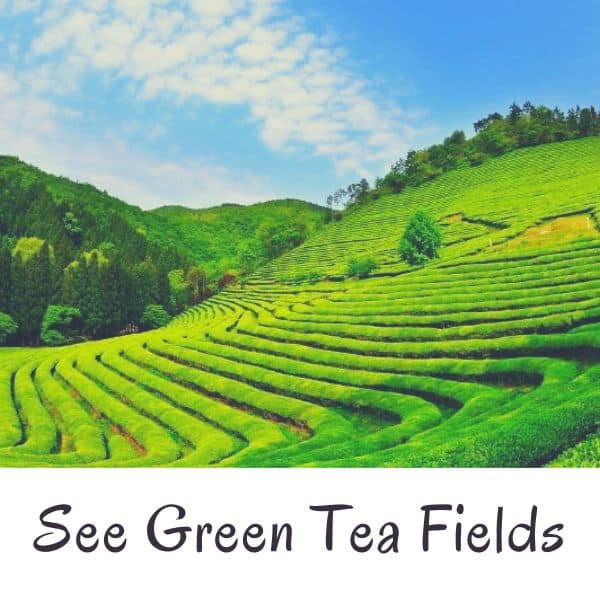
Although cafes are replacing Korean tea houses, Korea still grows and drinks lots of tea, especially green tea. You can visit these tea fields in areas such as Boseong and on Jeju Island, both of which have visitor centres and attractions to teach you about the wonderful world of Korean tea. The Daehan Dawon Tea Plantation in Boseong has lush green fields all year round and has been used as a filming location for several Korean shows. The O’sulloc Tea Museum on Jeju Island also has lovely views.
I recommend trying at least a few of these unique activities, they’ll really make your trip to Korea more memorable and offer insights into Korean culture and life. My advice is to be brave when visiting Korea and try new things, even if they seem a bit unusual at first. The same applies to Korean foods.
Best Korean Festivals To Join In 2024
There are dozens of festivals held in Korea each year celebrating the seasons, local products, traditions, culture, and often just for the sake of having fun. Visiting a festival in Korea will offer you a glimpse of how locals celebrate life, culture, and nature and let you join in the fun.
Whenever you visit Korea, there’ll be festivals going on. However, the biggest festivals occur in spring or autumn. As mentioned previously in this South Korea travel guide, these are the best seasons to visit Korea as the weather is pleasant and people are celebrating the end of summer or winter.
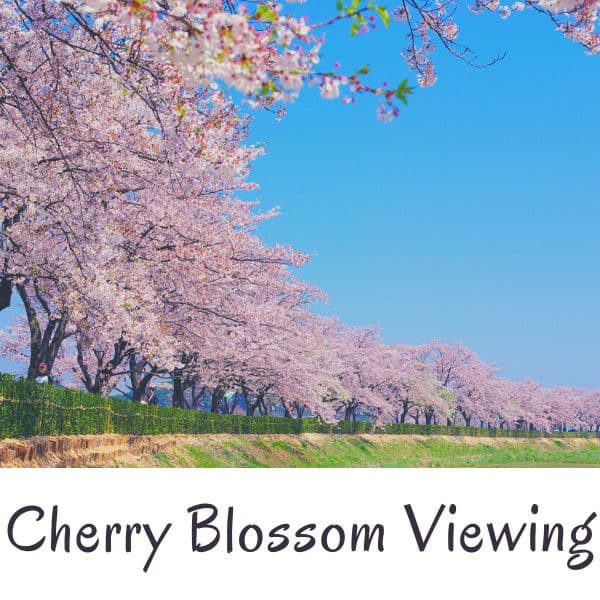
Cherry Blossom Festivals
The cherry blossom festivals in Korea occur in late March and early April and are some of the biggest festivals in Korea. People flock to forests, lakes, and rivers to see the pretty blossoms. The Jinhae Cherry Blossom Festival has over 2 million visitors each year, and even more people visit Seokchon Lake and Yeouido Hangang Park in Seoul. There are many festivals and tours to see cherry blossoms in Korea so you should be able to find a quiet place to enjoy the view.
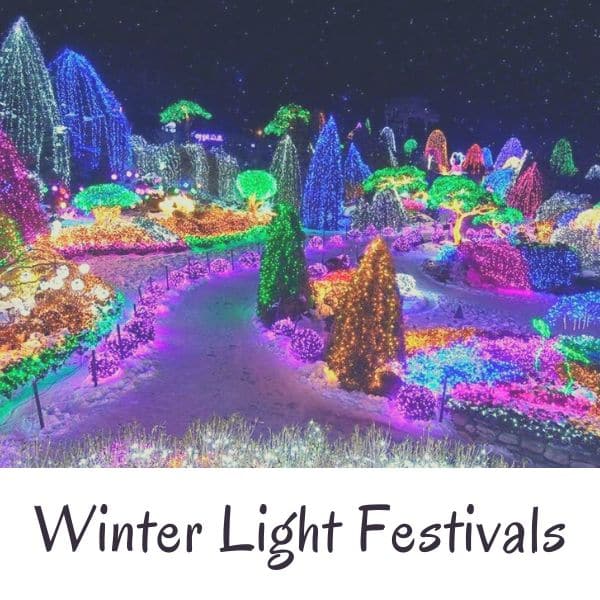
Winter Light Festivals
During the cold, dark days of winter, attractions such as Nami Island, the Garden of Morning Calm, and Herb Island transform into sparkling winter wonderlands with millions of bright lights illuminating them. There are also winter illumination festivals in Korean cities, such as the Haeundae Lighting Festival in Busan, Cheonggyecheon Stream Winter Lights in Seoul, and the Busan Christmas Tree Cultural Festival. When it snows in Korea, these festivals look even more magical.
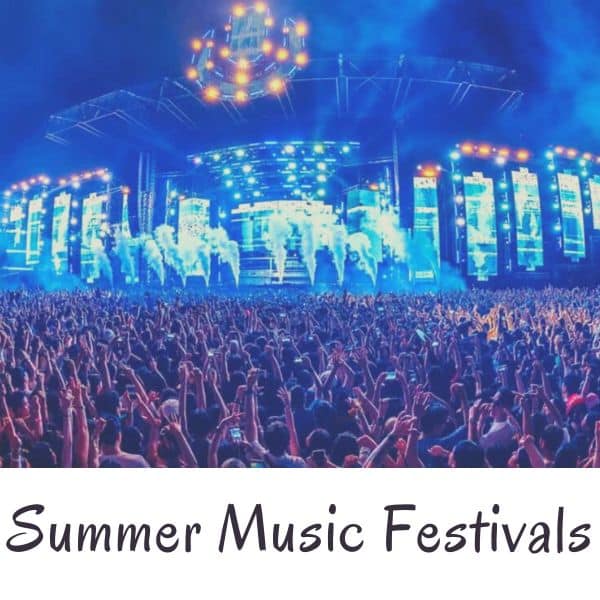
Summer Music Festivals
Summer in Korea is hot, but that doesn’t stop people enjoying day-long music festivals across the country. From chilled jazz festivals like the Seoul Jazz Festival , to action-packed concerts like Psy’s Summer Swag , there are music festivals to suit everyone. This is a popular summer activity in Korea , so be sure to book in advance for ticketed events. If you can’t get tickets, just go to a popular beach in the evening and you’ll usually find musicians performing.
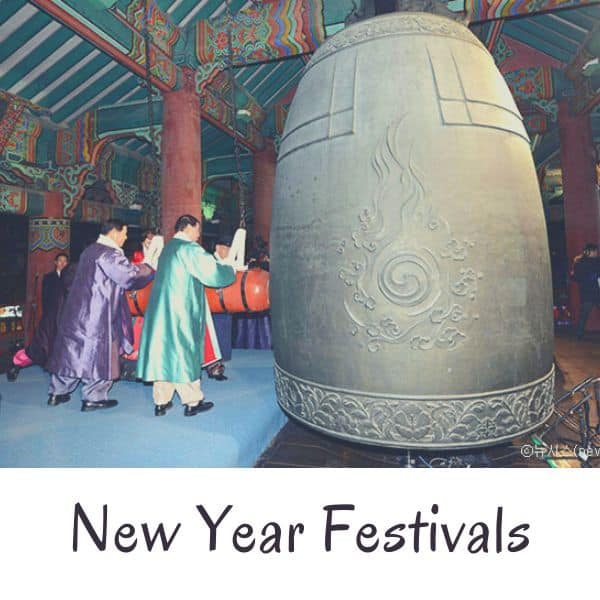
New Year Festivals
There are various festivals in Korea to celebrate the solar new year. New Year’s Eve festivals involve a bell-ringing ceremony where a giant bell is rung at midnight to welcome in the new year. Fireworks festivals are common events in cities across Korea, starting at midnight, too. Koreans celebrate the start of the new year by visiting the East Coast to see the first sunrise of the year at places like Homigot Sunrise Square or Seongsan Ilchulbong on Jeju Island.
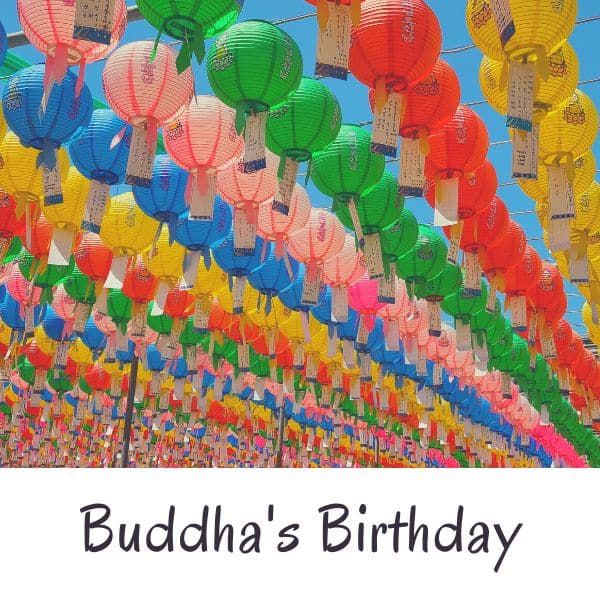
Buddha’s Birthday Festivals
Buddha’s Birthday is like Christmas for the Buddhist world, but celebrated very differently. It also falls on changing dates each year as it follows the lunar calendar, just like Korean New Year. Korean Buddhist temples across Korea will celebrate by putting up colourful lanterns and decorations for at least a month before the actual date. The biggest festival celebrating Buddha’s Birthday is the Yeon Deung Hoe Lantern Festival , which features thousands of lanterns and a lantern parade through central Seoul.
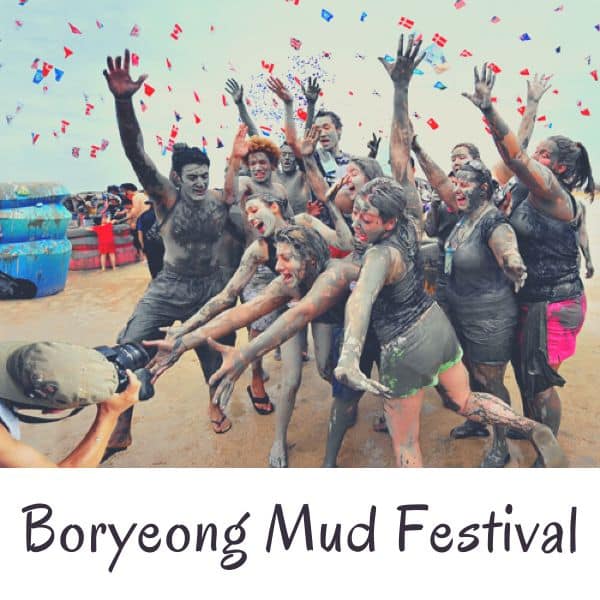
Boryeong Mud Festival
The Boryeong Mud Festival is one of Korea’s largest festivals and attracts visitors from around the world. Running for 2 weeks during rainy season, this is the best way to see a Korean festival even when the weather is bad. There’s a lot to see and do at this festival, including getting dirty in the mud with mud sports, mud wrestling, mud tug-of-war, and other mud-filled events. Boryeong is famous for the high-quality mud found in nearby waters and, by joining this festival, you’re getting a free mud facial.
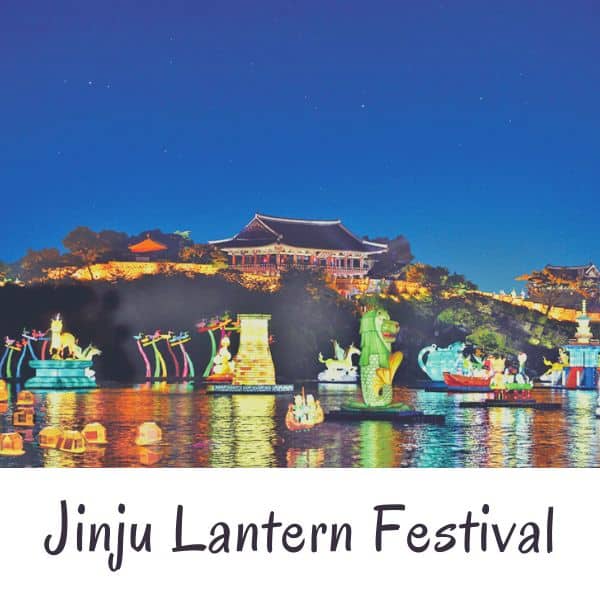
Jinju Lantern Festival
The visually stunning Jinju Lantern Festival is held in October each year in Jinju City and runs for several weeks. During the day, watch cultural performances and enjoy exploring the central fortress grounds of Jinju. Once it gets dark, see the city transform as thousands of lanterns, some as big as trees, come to life. There are so many weird and wonderful lanterns to discover at this festival. You can also set your own lanterns to float down the river with your wish inside.
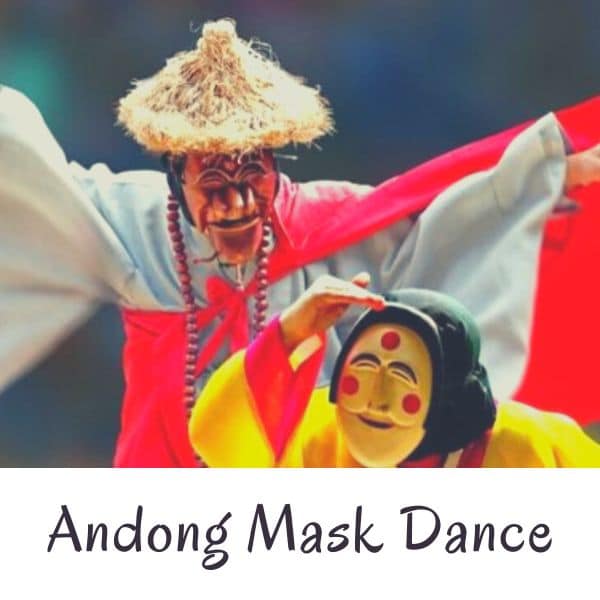
Andong Mask Dance Festival
The Andong Mask Dance Festival in Andong, home of the Andong Hahoe Village, is a great opportunity to witness traditional Korean dance and music performances. Not only can you see traditional Korean performances during this 4 day festival, there are also international performers displaying their own culture’s dancing. Get hands-on with traditional Korean culture at this festival. Explore Andong and learn about its contributions to Korea’s cultural development.
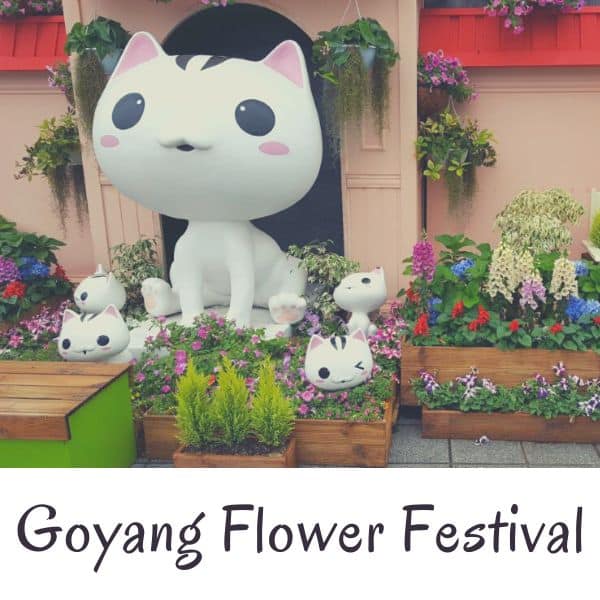
Goyang Flower Festival
The Goyang International Flower Festival runs twice per year, once in spring and once in autumn. It’s a beautiful celebration of floral beauty mixed with Korean cuteness and creativity. At this flower festival you can stroll through a maze of different displays, with each section focusing on certain flowers and plants. There are indoor displays with vividly coloured roses, nature-based outdoor photo zones, and the lovely Ilsan Lake Park in the background.
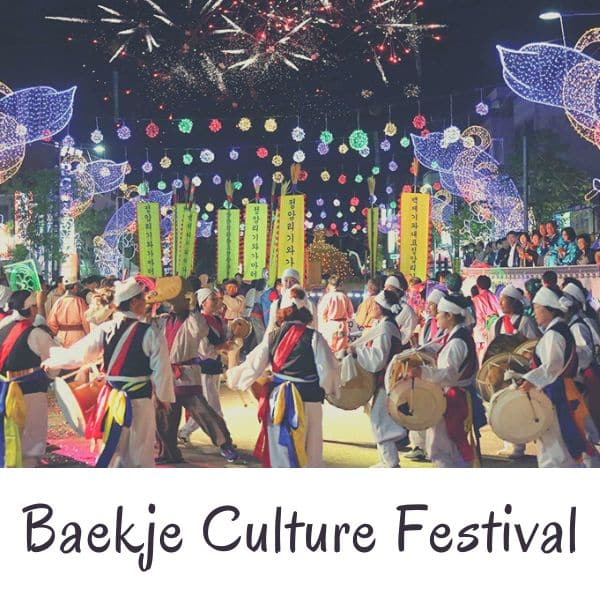
Baekje Culture Festival
The Baekje Culture Festival probably isn’t one that first-time travellers to Korea would know about. Held in Gongju and Buyeo, the two former capitals of the ancient Baekje Kingdom, this 10-day long festival held around Chuseok (Korean mid-autumn harvest festival), is packed with unique events and sights and is set in historic locations in each city. There’s local food to try, musical & cultural performances, fun photo zones, lantern displays, and much more.
Knowing when you plan to visit Korea will help you research what festivals are on and what the weather will be like. There are certainly a lot more than just the ones mentioned above, including some others mentioned previously in the seasons part of this South Korea travel guide.
I recommend using a tour company to see out of the way festivals like the Jinju Lantern Festival and the Jinhae Cherry Blossom Festival. These are often far from typical tourist destinations and can take hours to get to by public transport. Tours are worth the cost to save you time and avoid hassle.
Recommended Itinerary For Korea In 2024
In this section of this South Korea travel guide is my recommended first-timer itinerary for South Korea. This introduces you to two of Korea’s biggest cities, as well as a couple of day trips to highly rated destinations in Korea. There’s a mix of history, culture, nature, sights, and experiences.
This itinerary starts in Seoul as that’s where most people arrive to Korea after flying into Incheon Airport. If you arrive in Busan, you can change the route to start and end there instead. For travellers to Korea with only 2 or 3 days, I recommend using the first few days of this itinerary instead.
The itinerary lasts for one week, which isn’t enough time to see all of Korea, but enough time to get a feel for the country. If you have more time, use this itinerary and add in or replace extra destinations as you like. Jeju Island is certainly worth visiting if you have an extra 2 or 3 days.
Classic Sights Of Korea Itinerary
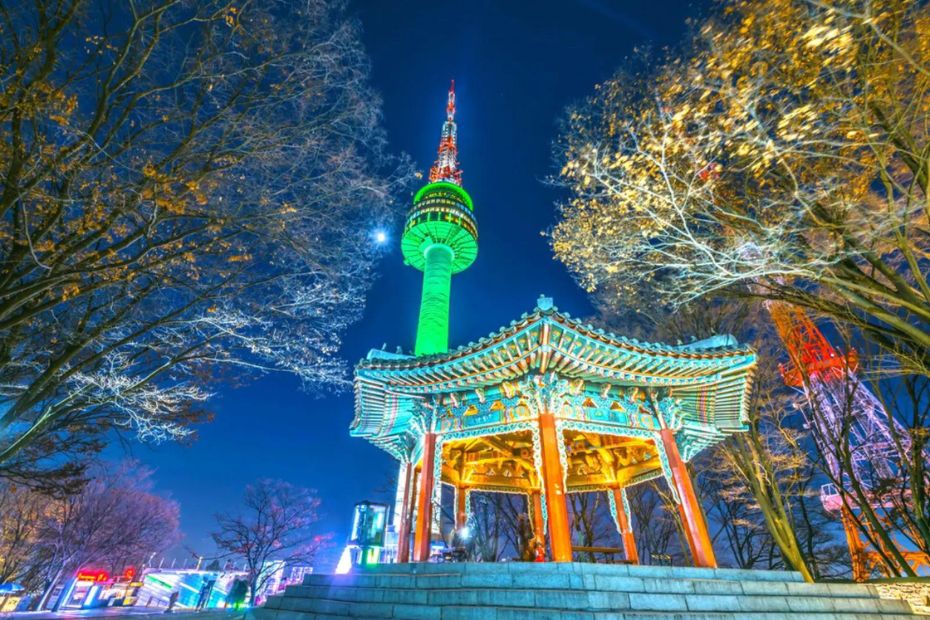
This itinerary covers a few must-see sights in Korea, including the two largest cities, the history city of Gyeongju, and some popular day trip destinations from Seoul.
Day 1 : Arrive in Seoul and explore Gyeongbokgung Palace, Bukchon Hanok Village, Insadong Art Street, Jogyesa Temple, and Cheonggyecheon Stream. Get dinner at the Jonggak Avenue of Youth for authentic Korean food that’s better than the touristy places in Myeongdong.
Day 2 : Learn about Korean history at the War Memorial of Korea or National Museum of Korea, explore Seoul’s traditional Gwangjang market in Dongdaemun, take the cable car to the N Seoul Tower for sunset & night views, then head down to Itaewon or Myeongdong for dinner & drinks.
Day 3 : Take a day trip to Gapyeong and visit Nami Island, the Garden of Morning Calm, and the Gapyeong Rail Bike Park. Return to Seoul for dinner and rooftop drinks in Myeongdong and then walk along the fortress walls from Dongdaemun Station if the weather is good.
Day 4 : Take the KTX to Busan, drop your bags, and take the subway to Nampo-dong for Jagalchi Fish Market, Bosu-dong Book Alley, and traditional sights. Take a taxi to Huinnyeoul Culture Village. End the day in Haeundae for evening dinner & drinks and a walk along the beach at night.
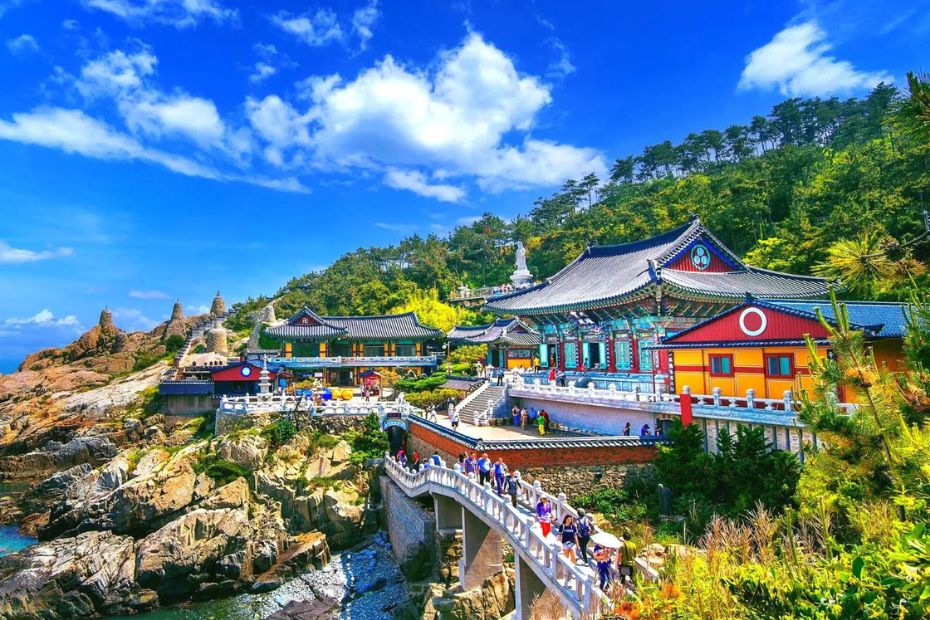
Day 5 : Take the bus to Haedong Yonggungsa Temple, then a taxi to Songjeong Beach. Relax in a beachside cafe, then take the Haeundae Beach Train to Cheongsapo, change to the Sky Capsule, and end up in Haeundae. Take a bus to Gamcheon Culture Village and get dinner at Songdo Beach.
Day 6 : Take a day trip from Busan to the UNESCO World Heritage City of Gyeongju. Visit the Gyeongju Historic Area, then Gyeongju Gyochon Traditional Village for traditional food and sights of Woljeonggyo Bridge. See tranquil night views of Wolji Pond before getting dinner at Hwangnidangil.
Day 7 : Head back to Seoul on the KTX for a final day of shopping and sightseeing in Hongdae. Walk along the Gyeongui Line Forest Park or Book Street or visit a theme cafe. Take the subway directly to Incheon Airport from Hongdae or spend a night here and check out the lively night scene.
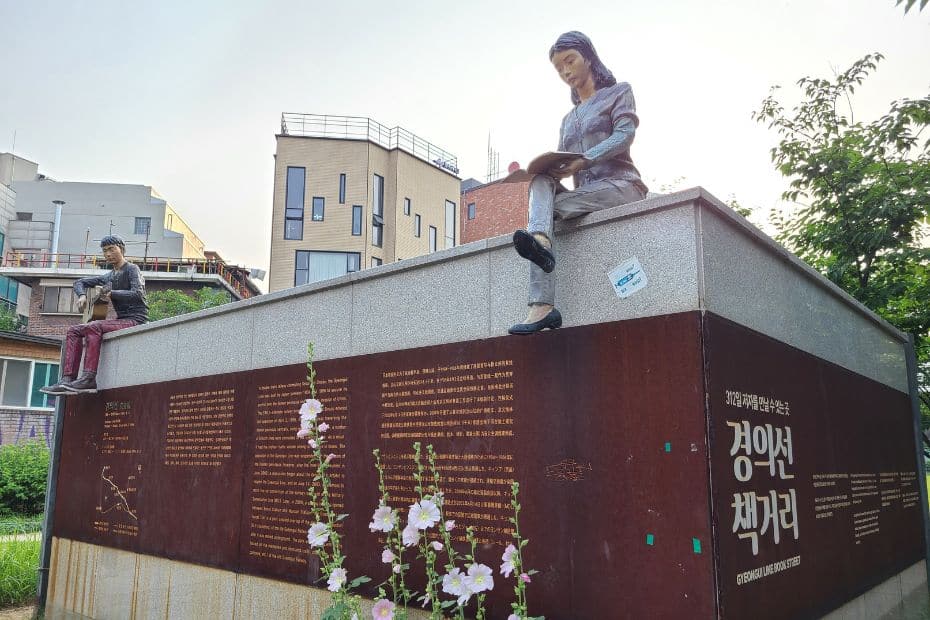
Please note : I recommend trying not to cram too much into your itinerary. You may want to see as much as possible, but people often end up rushing past sights and not appreciating them. Plan for less and see more if you have time. It gives you a chance to be spontaneous.
To plan a realistic itinerary for South Korea, it is important to factor in transportation, meal breaks, and rest times. Use Naver Maps to plan your route and work out travel times. A short journey on the map might take much longer if there’s no direct route. Also consider breaks if you plan to walk a lot.
Cultural Issues When Visiting Korea

The next few sections of this South Korea travel guide will provide answers to some of the most common questions first-time travellers to Korea have in regards to cultural, language, and safety issues. Korea is a culturally unique country with customs and traditions you might not be aware of.
Korea is a society that places a strong emphasis on social image, respect for others, and social harmony. This means Koreans will often try to avoid conflict, especially in public. To show respect for Korean culture and to avoid being rude, try to respect social harmony and always avoid conflict.
If you follow these tips, you’ll find it easier to avoid accidentally upsetting someone in Korea. There’s far too much to cover in this South Korea travel guide, so if you’d like to know more, check out my detailed guide to Korean etiquette and culture , it’s packed with tips and insights to understand Korea.
What is considered rude in Korea? It is considered rude to point with one finger or with chopsticks, give and receive with one hand, cross your legs when sitting, and to walk inside with your shoes on. Things considered rude in other countries such as swearing and spitting are also rude in Korea.
What is considered unlucky in Korea? It is considered unlucky to write someone’s name in red ink and to stand chopsticks upright in rice. Both are used in rituals for deceased people. The number 4 is also unlucky as the word is the same as the word for ‘death’.
Do you need to tip in Korea? It’s not necessary to tip in Korea and most restaurants and cafes won’t expect or allow you to tip. There is no service charge added to bills in Korea, with the exception of some upmarket restaurants, bars, and hotels in touristy areas of Seoul. Tipping guides is okay.
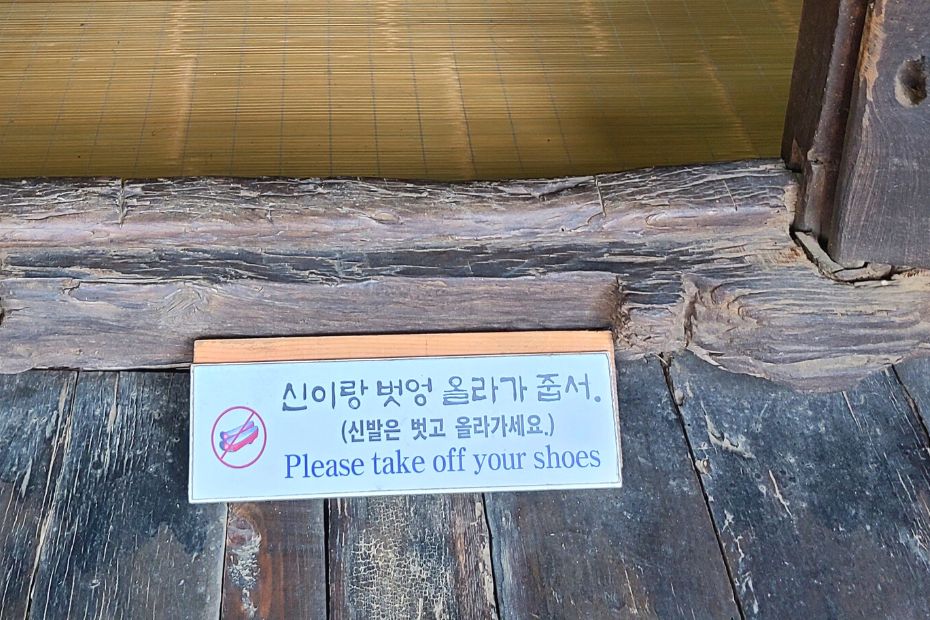
Do you need to take off shoes when going inside? If you enter someone’s house in Korea, you should take off your shoes. This rule also applies to temples, traditional restaurants, and other places in traditional buildings. Most cafes, shops, and restaurants won’t ask you to take off your shoes.
When should you use two hands in Korea? You should use two hands when giving and receiving things in Korea, such as money, a gift, a business card, or food. When you shake hands, use both hands, not just one. The same applies to pouring drinks, both pouring and holding a glass.
Do I have to act like a Korean in Korea? You don’t have to follow Korean customs and traditions when you visit Korea. You are a guest in the country and Koreans won’t expect you to know every rule. However, showing cultural awareness in Korea will help you make friends and impress locals.
The best tip for being culturally sensitive in Korea is to first consider all the things that you’d consider rude in your own country – spitting, swearing, shouting, physical violence, etc. Show the same acts of kindness you’d show at home – help others, give up your seat for those in need, be polite, etc.
Furthermore, remember that social harmony is really important in Korea and try not to cause a scene. Keep your voice down in public, don’t talk or act aggressively, be polite, and don’t force things when people are reluctant. Koreans may feel obliged to do things, even when they don’t want to.
Language Issues When Travelling Korea
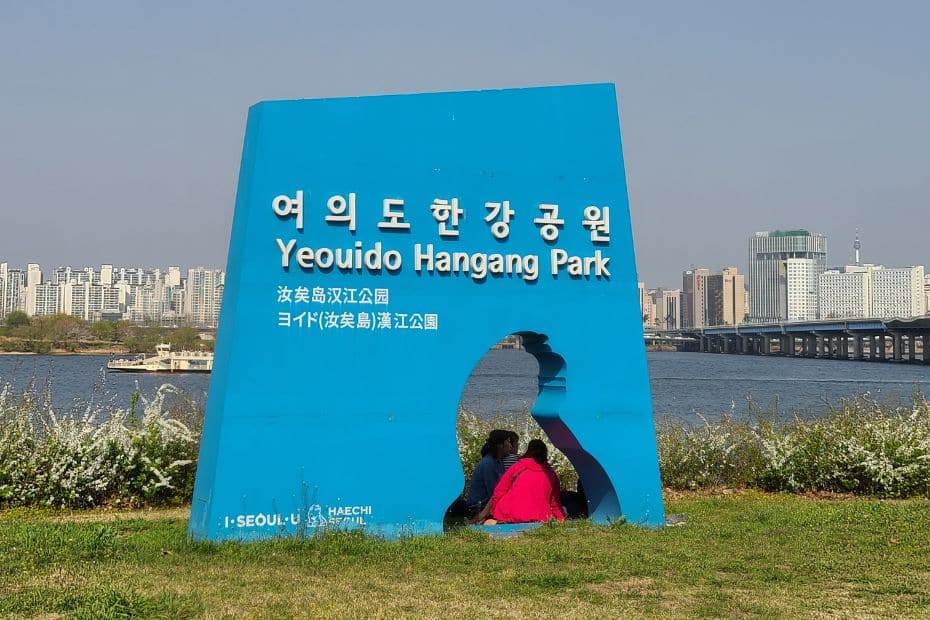
Language issues can be a big concern for first-time travellers to Korea as Korean is a very different language from English and has a unique alphabet. Korean is also one of the most difficult languages to learn for English speakers, ranked alongside Japanese, Chinese, and Arabic.
However, as a tourist to Korea, you don’t need to worry about mastering the language. English is used for signs and announcements in most places that you’ll need it, such as on public transport, at the airport, at attractions & tourist sites, on menus, and most other places. It’s common across Korea.
If there is a sign or notice that isn’t in Korean, I recommend using the Papago app to take translate it. Use the image translation function in the app to scan the sign and Papago will translate it into English for you. It’s really convenient and the way I translate things I can’t read in Korean.
Do Korean People Speak English?
Speaking in English to Korean people is different from being able to read and translate signs. English is taught from elementary school until the end of high school. That doesn’t mean everyone will remember it, but there’s a good chance some people will know English, especially younger Koreans.
It is best to ask if someone speaks English before trying to have a conversation. You can do this in Korean by asking “영어 할 수 있어요?” (Yong-oh hal su iss-o-yo?) or just ask it in English. Tour guides and people in the tourism industry will probably be able to speak English, but it’s not guaranteed.
Shyness is an issue in Korea and locals may be reluctant to speak English at first for fear of making a mistake. As an English teacher in Korea, I know that Korean students are usually quite competent in English, but lack confidence to use it. Be patient and encouraging when talking in English.
Although some Koreans may be too shy to use English, other people may be enthusiastic about speaking English to you and want to practice it. I’ve been asked random questions in English by strangers in the street in Korea who want to practice English and find out about my life.
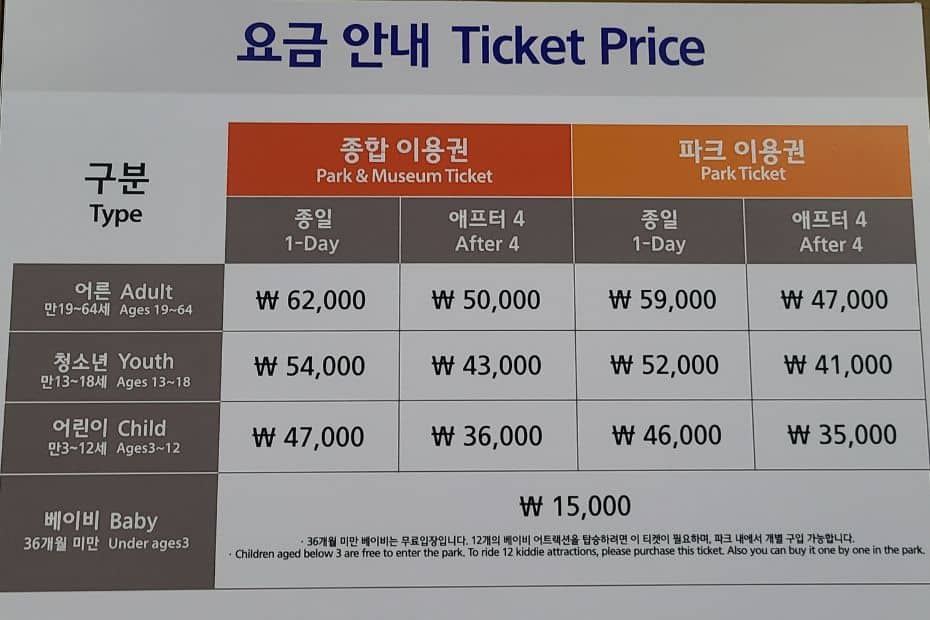
Should You Learn Korean Before Visiting Korea?
If you do want to learn some Korean before you travel, I recommend you start by learning the Korean alphabet , or at least learning some basic Korean travel phrases . Knowing how to introduce yourself, discuss prices, ask for directions, and ask for help will make your trip to Korea a lot easier.
You can learn Korean online through courses such as 90 Day Korean and Korean Class 101 , or with self-study textbooks like the excellent Talk To Me In Korean series. There are lots of resources on YouTube, too. I particularly like Learn Korean with GO! Korean Billy as he explains things clearly.
Another way to prepare to move to Korea is to read some Korean novels in English . Although these books won’t teach you any Korean, they’ll offer up valuable insights into Korean culture, both traditional and hidden under the surface. Literature is a good way to gain an understanding of a culture.
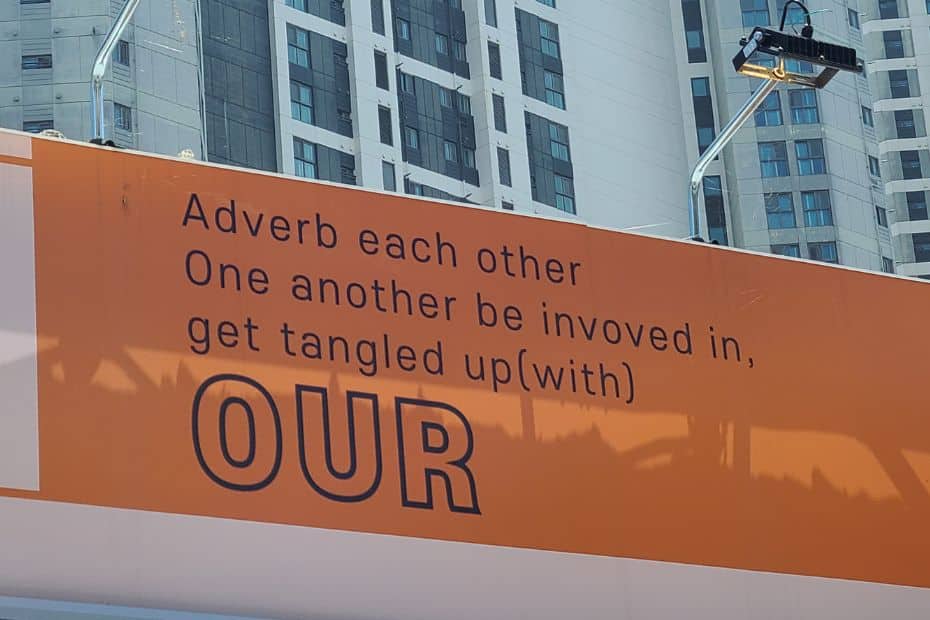
A warning about Konglish : Although Korea uses English in many useful ways, there’s also a lot of Konglish. The sign above is a good example of random English words being used to look cool, but ending up being confusing. There’s a lot of this in Korea and it’s mostly harmless, so don’t worry.
Health And Safety Issues In Korea

First-time travellers to Korea may be worried about health and hygiene issues, such as if certain foods are available and if they’re safe to eat. Other issues include vaccinations, personal safety, and how easy it is to contact emergency services. These issues are addressed below.
Is Korean Street Food Safe To Eat?
Korean street food is generally safe to eat and won’t give you any health issues unless you have an intolerance to the food. Korean street food can be spicy or contain a lot of salt, be aware of your own personal tolerances and dietary requirements before trying it.
Also be careful when ordering food with meat or seafood and check that it is cooked thoroughly. Korean street food that has been left out for a long time is more likely to cause food poisoning problems, so ask for freshly cooked food if you’re concerned.
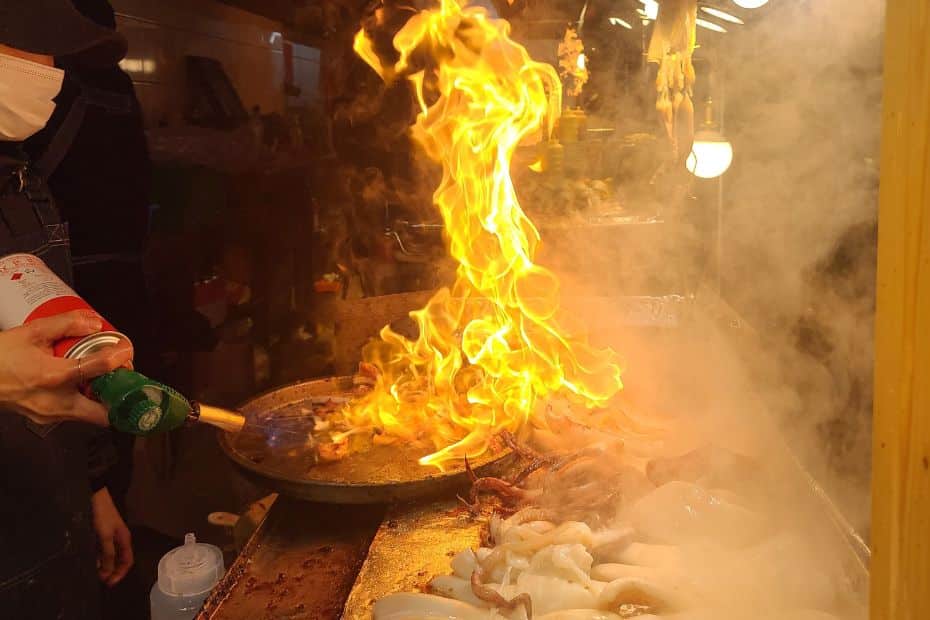
Is It Easy To Find Vegan-Friendly Food In Korea?
There are many vegan-friendly Korean dishes , such as gimbap , japchae , pajeon , bibimbap , ramyeon , and tteokbokki . However, some restaurants may use non vegan-friendly ingredients when preparing these foods, so be careful. Kimchi isn’t vegan-friendly due to its seafood ingredients & sauces.
Vegetarianism and veganism aren’t common in Korea with fewer people following these diets than in countries such as the USA or UK. Vegetarians in Korea account for 3% of the population, while vegans in Korea are only 0.2% of the population as of 2022. The UK is 10% and 2% respectively.
However, the number of vegan-friendly restaurants and bakeries is increasing each year in Korea, especially in areas such as Hongdae and Itaewon. Korean Buddhist temple food is vegan-friendly and a good option for vegans who want to enjoy vegan food while learning about local Korean culture.
If you’re concerned about accidentally ordering non vegan-friendly food, or want to know how to tell someone about food allergies or requirements, check out my guide to Korean phrases for ordering food . This has a whole section about special requests when ordering food in Korean.
Is It Safe To Drink Tap Water In Korea?
Korean tap water is potable and safe to drink. Korea ranks 23rd for water hygiene, which is above the USA, Canada, and Australia. However, many Koreans don’t drink tap water , preferring to use water purifiers and bottled water instead, claiming that tap water smells strange or water pipes are bad.
Personally, I don’t like drinking tap water in Korea as it tastes a bit stale, but it’s perfectly fine to drink and doesn’t cause any problems. Bottled water is very cheap in Korea and costs 600 KRW for a 500ml bottle from a convenience store. Buying water from a supermarket is a cheaper option though.
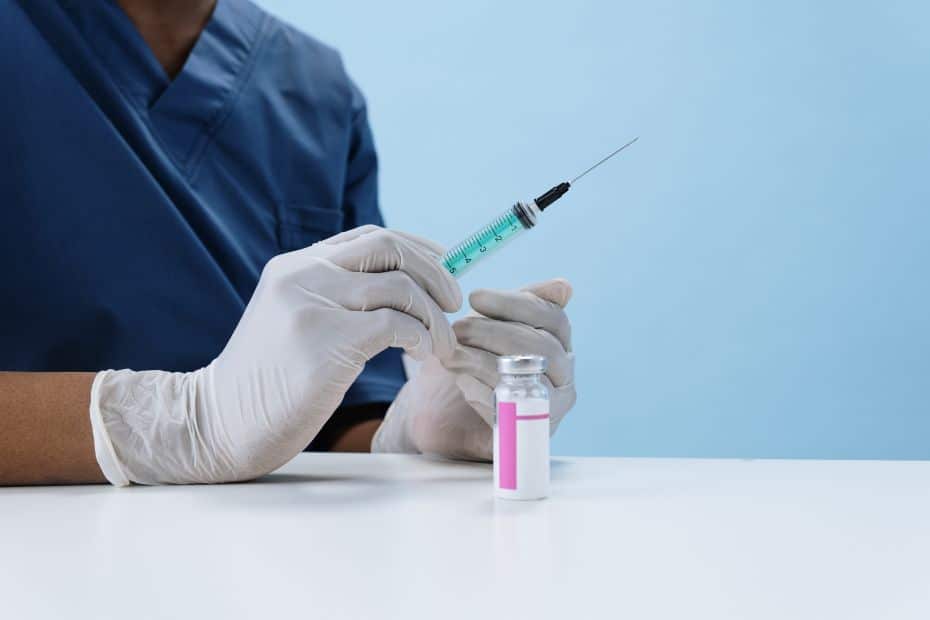
Do You Need Any Vaccinations To Travel To South Korea?
There are no mandatory vaccinations required to travel to Korea , but it is suggested you should have at least routine vaccinations such as tetanus, MMR, and polio. Hepatitis A & B, typhoid, and Japanese encephalitis vaccinations are also recommended.
Is Korea Friendly To Tourists?
Korea is generally friendly and welcoming to tourists. The Korean government spends a lot of money and effort to promote Korean tourism to the world and there are many incentives to bring people to the country. Korean people are also mostly polite and welcoming, especially in the tourism sector.
Is Korea A Dangerous Country To Travel In?
South Korea is a safe country to travel in and the crime rate in Korea is low, comparable to Norway or the Netherlands. Public crimes, such as theft and assault, are rare. Pickpocketing and purse snatching aren’t common and unattended goods are generally left alone or reported to the police.
How safe is Korea? I regularly see people leave their phone or handbag on a cafe table to reserve it before going up to order a drink. People even leave their laptops open while they pop out for lunch or go to the toilet. Stealing disturbs social harmony and is one of the reasons it’s rare in Korea.
Physical violence is also rare, but still occurs in Korea, as it does in all countries. This is most often found in areas with lots of bars and when people are drunk. However, visiting bars in Korea is a lot safer than I’ve experienced in other countries and trouble is not common, even in busy places.
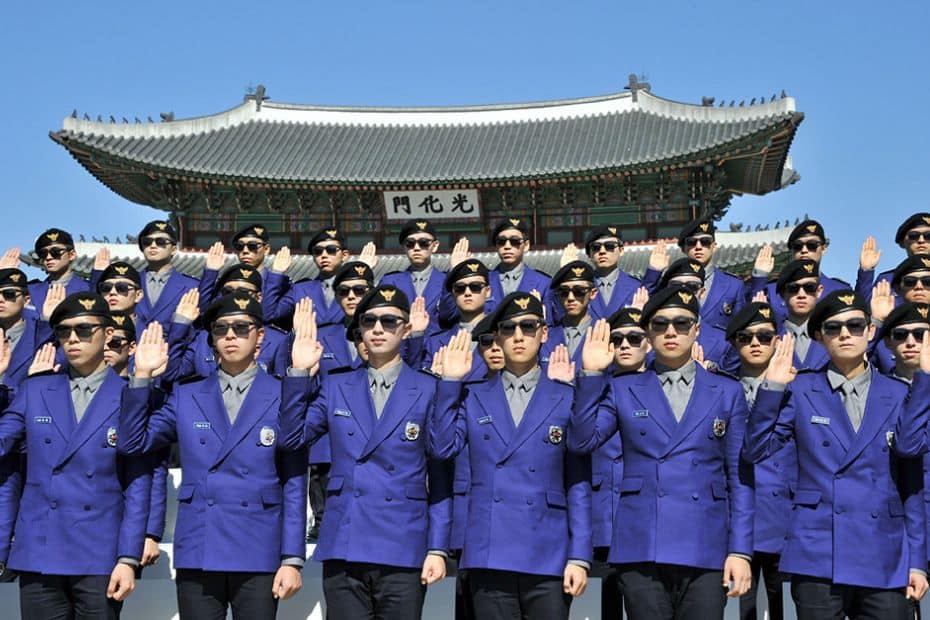
How Do You Contact Tourist Information Services In Korea?
Call 1330 in Korea to contact the Travel Helpline . The Korean Travel Helpline provides the following services free of charge to tourists in Korea.
- Tourist Information : Find out about attractions, opening hours, prices, and other information.
- Tourist Interpretation : Access travel information in several languages.
- Tourist Complaints : Report rip-offs and problems you encounter when travelling in Korea.
- Tourist Police : Report minor crimes in English and other languanges.
There are tourist police patrolling the streets of Seoul, dressed in purple uniforms as shown in the picture above. In popular tourist locations like Myeongdong and Bukchon Hanok Village, you’ll also find friendly tourist information staff dressed in red shirts with matching red cowboy hats.
What Should You Do If You Have An Emergency In Korea?
If you need to report a fire or medical emergency in Korea, you should call 119 from any phone. To contact the police in Korea, call 112. You will need to select an option to report an emergency in English or another language. It may take some time to be redirected to an English speaker.
- 119 – Medical Emergency & Fire Rescue
- 112 – Police
When you use medical services in Korea, you have to pay the cost of treatment, but there is no fee for the ambulance ride as this is covered by the Korean government. Travel insurance should cover the cost of medical bills, so if you’re worried about a large medical bill, insurance is recommended.
Fortunately, the cost of treatment in Korea is quite reasonable and Korea has advanced medical facilities, which is why it’s a popular medical tourism destination . Many people travel to Korea for minor and major surgery, including laser eye surgery, cosmetic surgery, and internal medicine.
Is Air Pollution A Problem In Korea?
Air pollution is an issue in Korea, especially in spring & summer. Winds blow yellow dust from Central Asia, field burning spreads fumes across Asia, and fossil-fuel burning contributes to higher levels of air pollution. Some days there’ll be very low visibility and health risks for people with lung problems.
My Personal Travel Tips For Korea
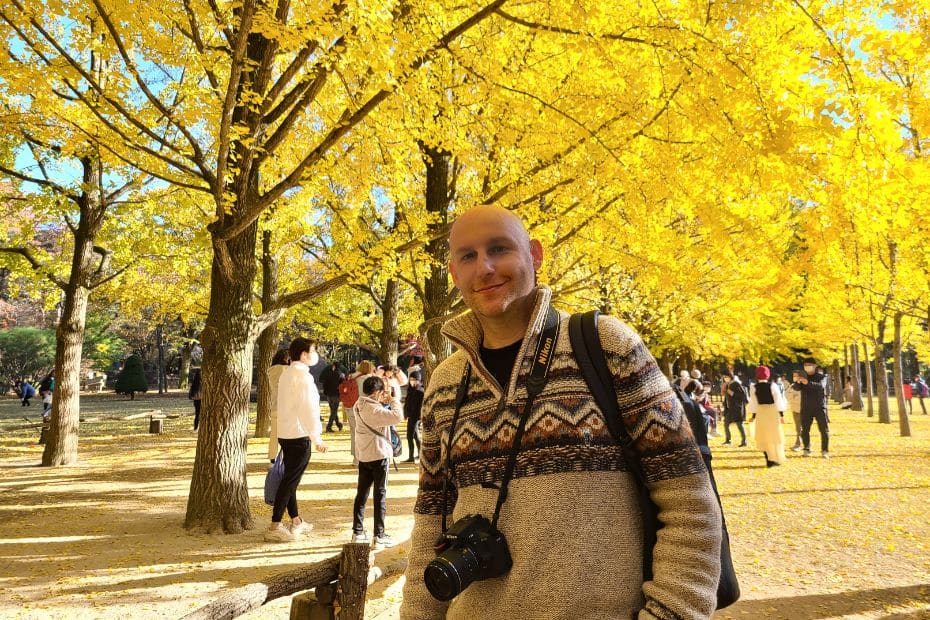
This South Korea travel guide is a collection of information I’ve researched and learned since moving to Korea in 2015 and blogging about Korean travel since 2019. I hope the provided information and insights are useful and assist you plan your dream first-time, or even tenth-time, trip to Korea.
This section includes my personal tips that didn’t really fit anywhere else and reflections built from travelling all over Korea in all seasons. These are tips I would offer to first-time travellers to Korea and people who might have some worries about visiting the Land of Morning Calm. I hope they help.
The Real Korea Isn’t What You See On TV
Korea is a developed country that went from being a 3rd world country in the mid 20th Century to a high-tech country in a short time. Despite the many high-rises and modern K-Pop stars, there are still shadows of the former Korea seen in both run-down slums and people with ‘traditional’ values.
The image created by selective K-Culture can distort people’s reality when dreaming of a trip to Korea in the same way Korean people can suffer from Paris Syndrome when visiting France. There are many wonderful things about Korea, but don’t travel thinking that everything is as shown on TV.
Be Prepared For Culture Shock
One of the best things about travelling is seeing a country and people that act and behave differently to how you do in your own country. This is known as culture shock and can be both a blessing and a challenge for first-time travellers to Korea. Things you might be used to can be different in Korea.
Some examples of culture shock in Korea include the way age determines hierarchy in Korea and how older people can be rather pushy, especially on the subway. Younger people also typically don’t question the decisions of older people in Korea as it is considered rude and disrespectful.
Less extreme cultural differences that might confuse some first-time visitors to Korea include having to shout to call someone to take your order in a Korean restaurant or not giving a tip. Koreans might similarly look at you strangely if you do something culturally different, such as walking while drinking.
Don’t Overpack When You Travel To Korea
First-time travellers to Korea may be worried about visiting a country like Korea without taking everything they need from home, even the kitchen sink. My advice is to pack as light as possible and leave yourself some space in your suitcase. There are two reasons for this.
- You can buy most things you need in Korea . This includes sun cream, heat packs, clothes, shoes, cosmetics, travel accessories, etc. They’re also probably cheaper in Korea, too.
- You will want to take home lots of things . From weird Korean snacks to beautiful hand-crafted pottery and woodwork, there are so many things to buy in Korea.
(1) The only exception is if you might have a problem finding correct-fitting items. Korean shoes and clothes are slightly smaller than what you’d find in Western countries and the sizes are also differently labelled. I’m a medium in the UK but a large (sometimes XL!) in Korea. Be careful when shopping.
(2) It’s hard to fit everything you buy in Korea into an already full suitcase. Fortunately, you can buy extra suitcases at low prices. Check out Namdaemun Market for cheap luggage options, as well as shops like the one pictured below (this is in Busan) in places like Hongdae and Dongdaemun.
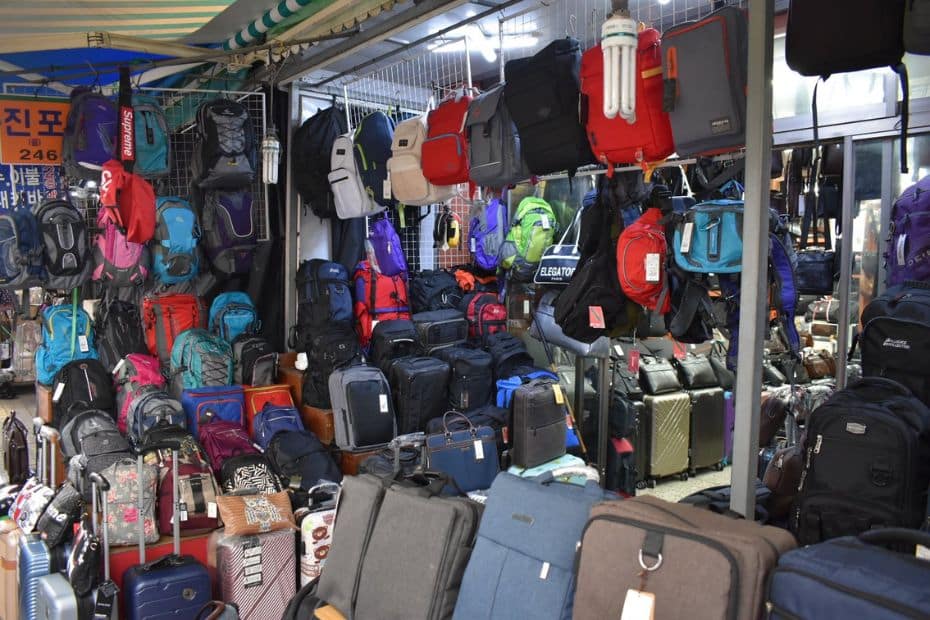
Electricity In South Korea
Be careful with electric items when travelling to Korea. Korea uses type C and F plugs , which are used in Europe, Russia, and other parts of Asia. The standard voltage is 220V with 60Hz frequency. Anything designed for a standard voltage between 220V and 240V should be fine in Korea.
Laptops, mobile phones, and other portable devices will be fine when you travel in Korea as long as you use a travel adapter with a USB or socket connection. Hairdryers, shavers, curlers, and similar devices might have problems charging in Korea and run out of power very soon. My shaver did.
Go With The Flow And Go Quickly
Korea is a very busy country and you might hear people mutter ‘빨리빨리’ ( ppalli ppalli ) if you walk slowly, especially in the subway. Koreans work long hours and are eager to get home or go out for dinner. Don’t take it personally if people push past you and don’t feel like you have to rush.
Know Where To Throw Away Rubbish
It can be difficult to find a bin to throw away rubbish in Korea, even in urban areas. The best place to dispose of rubbish in Korea is at a convenience store. You can find recycling and trash bins in these shops. If you go hiking or explore the countryside, expect to carry your rubbish home with you.
South Korea Travel Guide FAQs
Finally, here’s a few FAQs about this South Korea travel guide, in case the above information didn’t cover enough for you.
What is the best month to visit South Korea?
The best months to visit South Korea are April and October. April is warm and you can see cherry blossoms in Seoul at the start of the month. October is warm with clear skies. During October you can see autumn foliage across Korea.
How much money is enough for South Korea?
The amount of money you need to travel in South Korea depends on your travel style and desired level of comfort. A rough budget for South Korea is 50-100,000 KRW per day for budget travellers, 100-200,000 KRW per day for mid-range travellers, and 200,000+ KRW per day for luxury travellers.
Is South Korea friendly to tourists?
South Korea is a welcoming country and friendly to tourists. There are many services to welcome tourists to South Korea, including free transit tours from Incheon Airport, cultural performances in tourist destinations, low entry fees to traditional attractions like Gyeongbokgung Palace, and tourist information and signs in multiple languages.
What do I need to know before travelling to South Korea?
It’s important to know about the weather before travelling to South Korea as this can impact your day to day travel and affect what clothes you’ll need. You should also research what festivals are on before you travel, what seasonal events are happening, such as cherry blossom viewing, and also how to use public transport and get connected to the net.
What is the cheapest month to visit South Korea?
January and February are two of the cheapest months to visit South Korea and are considered low season as the weather is cold. Hotel prices and flights to Korea will be lower in these months. Winter is a good time to travel to Korea to see snow and enjoy winter sports and festivals, however, some attractions will be closed during this time of year.
Do I need a South Korea travel guide?
It is good to check a South Korea travel guide to research your trip, especially for first-time travellers to Korea. Korea has a unique culture, language, and customs that might be confusing for new travellers. A South Korea travel guide will help you prepare for these factors and give you ideas to create your perfect trip to Korea.
Can you drink tap water in Korea?
Korean tap water is potable and safe to drink. You can drink water from hotels and apartments in Korea. Restaurants and cafes will provide you with free drinking water, which usually comes from a water cooler. Bottled water is available from convenience stores and is reasonably priced.
Is South Korea safe for first-time travellers?
South Korea is a safe country for first-time travellers to visit. Personal crimes, such as theft, mugging, and physical violence are rare in Korea and it is safe to walk the streets of Seoul, even at night. First-time travellers can prepare for a trip to South Korea by being aware of potential scams, such as taxi drivers over charging them or being ripped off in the traditional markets.
What are the best apps for travelling in South Korea?
The best apps for travelling to South Korea are Papago, Kakao Taxi, Naver Maps, and Seoul Subway. These apps will allow you to translate between Korean and English, hail taxis, and navigate as you travel. All of these apps have English language options and are free to use.
Support In My Korea Thanks for reading. If you want to help me to create more great content in the future, why not buy me a coffee? A strong coffee helps me write more and is a simple way to show gratitude for this free content.

Liked This? Pin It For Others
If you enjoyed reading this article, then please share this with your friends on Pinterest.
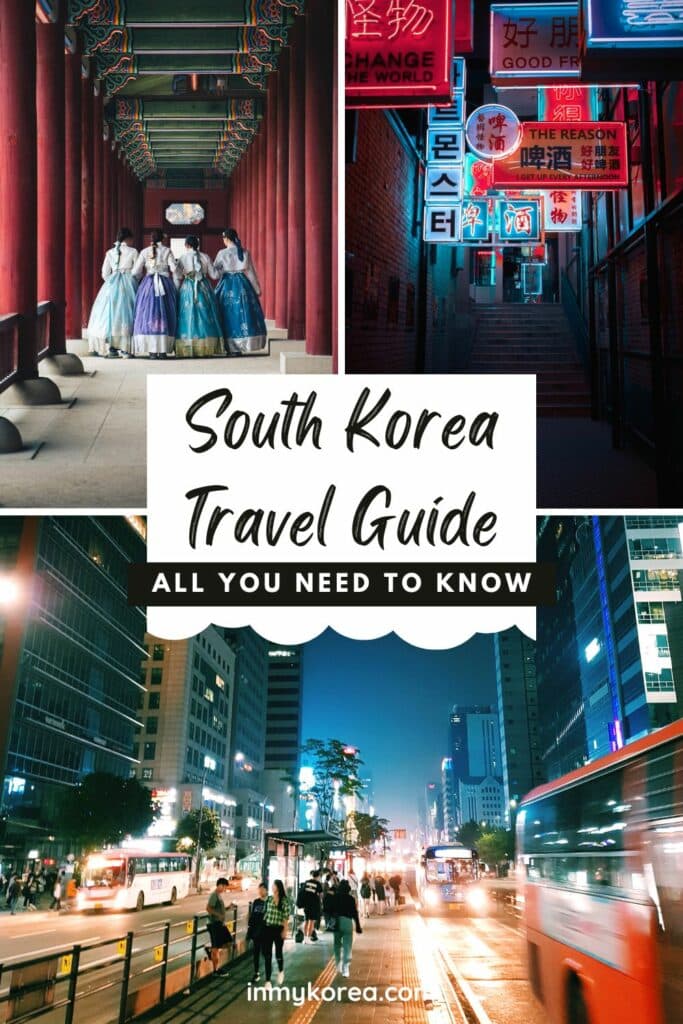
Related Articles
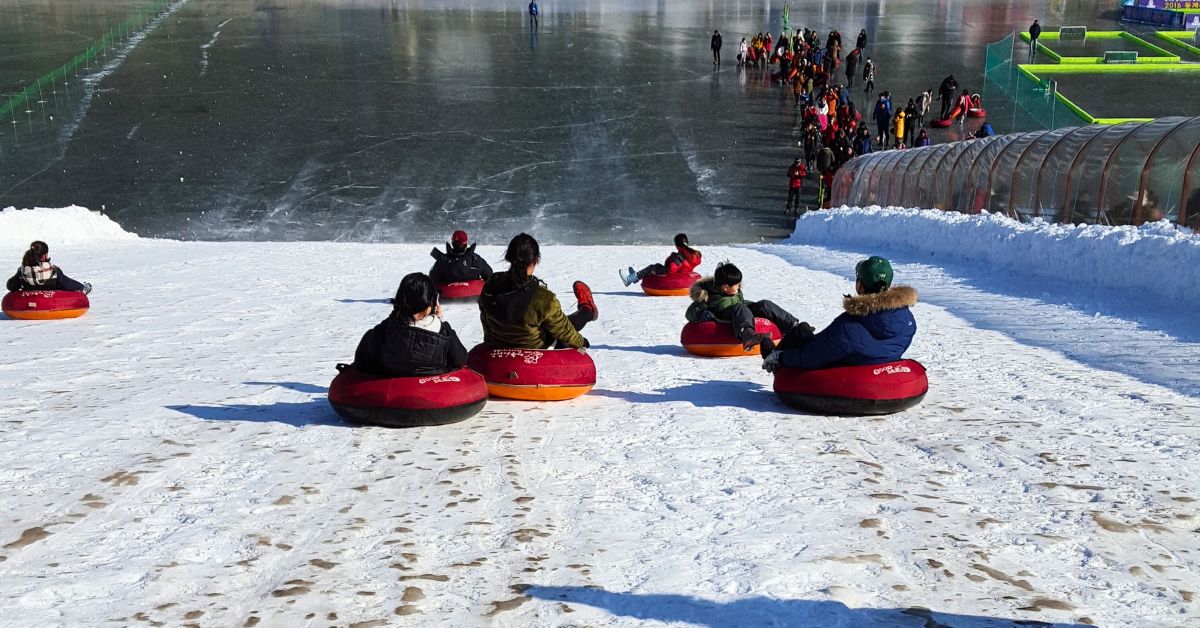
Hwacheon Sancheoneo Ice Festival 2024: Korean Ice Fishing Fun

The EPIK Teaching Experience: What To Expect On EPIK 2024
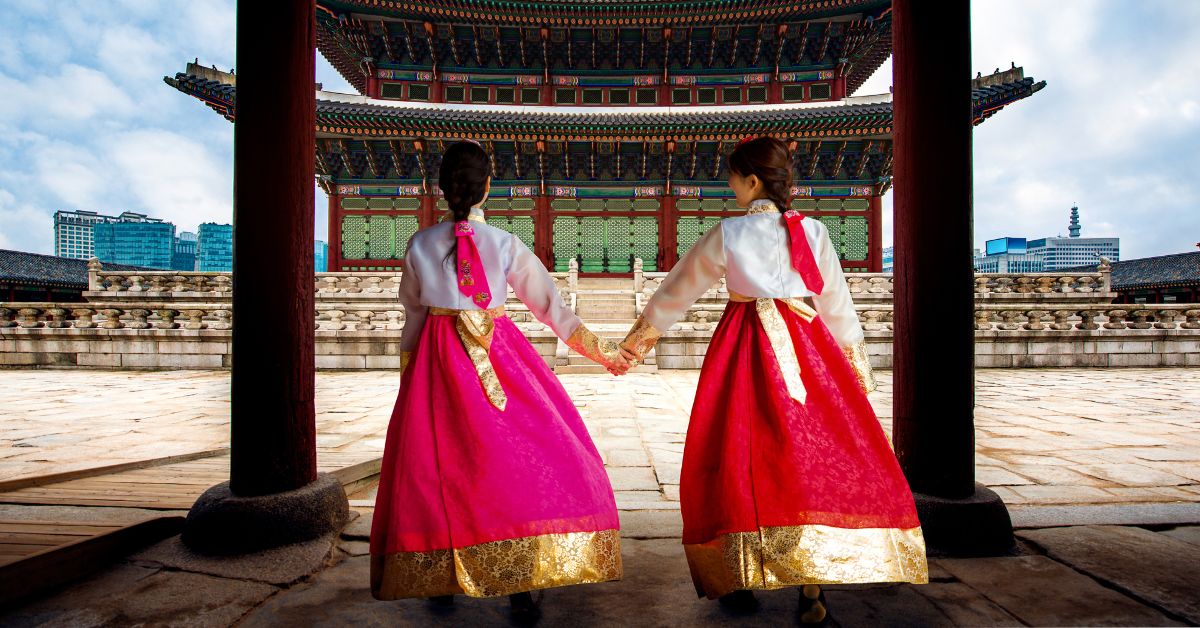
Discover Seoul Pass Itineraries That Save You Money 2024
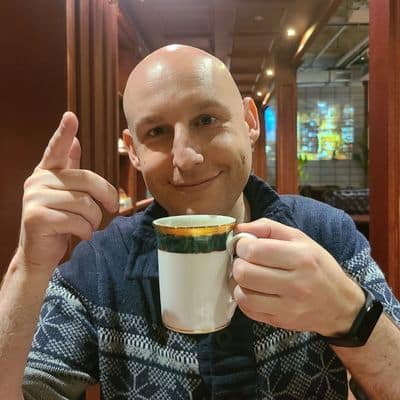
Hi! My name is Joel, I'm the author of In My Korea and writer of this article. I've lived, worked and travelled in Korea since 2015 and want to share my insights, stories and tips to help you have the best experience during your trip to Korea.
I love learning more about Korean culture, hiking the many mountains, and visiting all the coolest places in Korea, both modern and traditional. If you want to know more about my story, check out the ' about me ' section to learn why I love living in Korea.
4 thoughts on “Complete South Korea Travel Guide 2024: Korean Travel Tips”
This South Korea travel guide is a comprehensive resource for anyone planning a trip to Korea. It covers everything from entry requirements and travel tips to accommodation options and places to visit. Whether you’re a first-time traveler or have been to Korea before, this guide has something for everyone. The inclusion of the latest travel news and COVID-related updates adds to its relevance and usefulness. I appreciate the detailed breakdown of sections and the inclusion of quick links for easy navigation. Overall, this guide is a valuable tool for anyone looking to explore the wonders of South Korea.
Moderator – Nice Article! In My Korea
Thank for the great info! Could you please recommend any tours agency for a few day trips around Korea? I found a few , but they are pretty pricey!
Hi, thanks for reading. Klook and Viator have a good selection of tours in Korea with some of the best prices on the market. I’m not sure which tours you’re looking for, but they usually do day trips for less than $100 per day that cover popular tourist sights.
Leave a comment Cancel reply
Save my name, email, and website in this browser for the next time I comment.

Sep 1 - Sep 15 Bucket list available during this period
Sep 16 - Sep 30 Bucket list available during this period
Oct 1 - Oct 15 Bucket list available during this period
Oct 16 - Nov 10 Bucket list available during this period
How can I participate in the campaign?
I plan to visit korea multiple times during the campaign period. can i also participate in the campaign multiple times, i participated in the 2023 korea bucket list last year. can i participate again this year.

KOREA BUCKET LIST Management Office
Copyrights (c) Korea Tourism Organization. All Rights Reserved.
- Skip to primary navigation
- Skip to main content
- Skip to primary sidebar

South Korea Travel Requirements: Complete Guide
Last Updated: Jun 16, 2024 by Max · This post may contain affiliate links · 4 Comments
Whether planning a trip to South Korea or getting ready for a layover in Incheon Airport , it's important to understand the travel requirements for visiting Korea.
Before you book your ticket, make sure all of the necessary documents are in check, including a K-ETA or visa for Korea. In this post I discuss the important travel requirements for South Korea to make your trip planning a lot smoother.
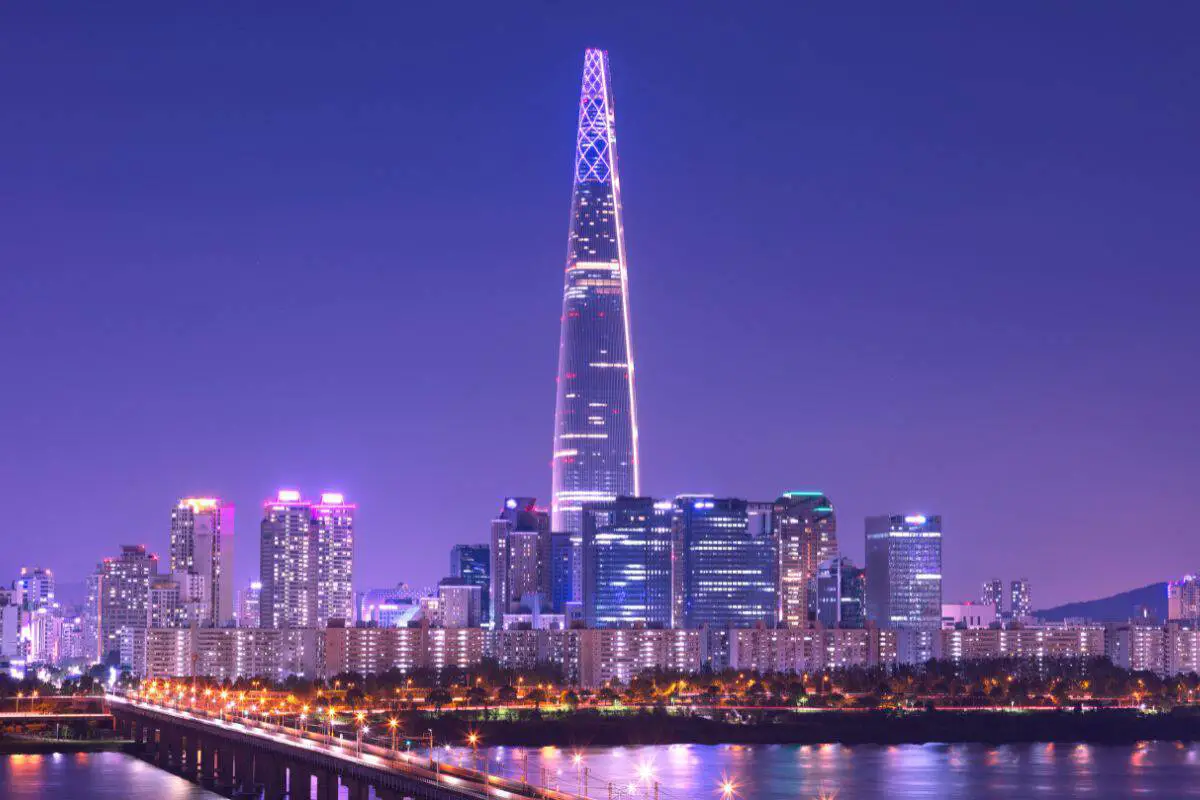
- ✈️ Basics of Travel in South Korea
- 📝 South Korea Entry Requirements
- ✍️ How to Apply for K-ETA: Step-by-Step
- 🚌 Public Transportation and Safety
- ✅ Travel Advisory and Checklist
- 🙋 Frequently Asked Questions
✈️ Basics of Travel in South Korea
Visa: Most travelers will need a K-ETA ( Korean Electronic Travel Authorization ), applied for at least 72 hours before departure. If you needed a visa before, you'll need a K-ETA now. Note that from April 1, 2023, to December 31, 2024, passport holders from 22 countries, including the US, UK, Canada, and several EU nations, can visit visa-free – no K-ETA required!
Currency: South Korean won ( KRW or ₩ )
Arrival in Korea: all international flights arrive at Incheon Airport (ICN), one of the best-rated airports in the world. It usually takes about 1 hour to get through security & pick up checked bags.
Getting Around: Korea has an extensive & reliable public transport system. A refillable T-Money card is your ticket to buses and trains across the country; you can buy and refill yout TMoney card at any subways station or convenience store in Korea.
Internet & SIM Cards: Rent a Wi-Fi egg or purchase a prepaid Korean SIM card at the airport, available for up to one month of connection.
Travel Insurance: always recommended, though some credit card companies offers limited coverage when booking.

📝 South Korea Entry Requirements
Visa categories and conditions.
When you plan a trip to South Korea, you must be aware of the various Korean visa categories and conditions . Each South Korean visa category differs depending on the purpose and duration of one’s stay, but the most common categories are for tourist, business, and student visas.
Most foreigners I encountered when living in Korea happened to be citizens of a primarily English-speaking country (like Australia, Canada, England, Ireland, New Zealand, South Africa, and the U.S.A.) who have an E-2 visa.
This visa lets you stay in the country to teach English for 13 months - if you’re curious about teaching English in Korea and want to know more, please visit the English Program in Korea (EPIK) website.
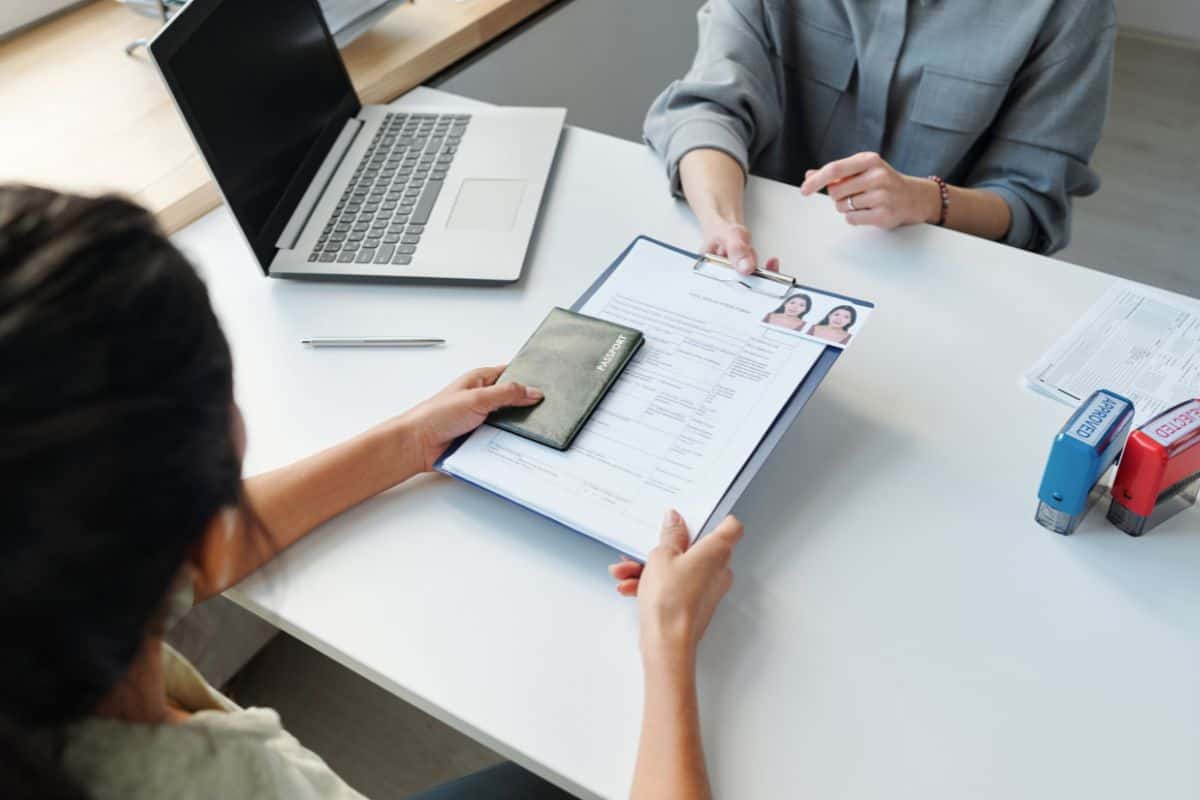
Korean Electronic Travel Authorization (K-ETA)
A Korean Electronic Travel Authorization (K-ETA) may be required for some nationalities, and a visa is needed for others. To check your eligibility and find out how long you can stay in South Korea, please use the official K-ETA Application Eligibility Guide .
Make sure to apply for a K-ETA at least 72 hours (or even earlier) before travel. Most travelers recommend acquiring this as soon as possible because it may take a while to process, or you may need to reapply, though one month in advance is generally enough time.
Visa-Free Travel and Visa Waiver Countries
For some nationalities, visa-free travel to South Korea is possible under specific conditions. If you come from a designated visa-free or visa-waiver country, you may enter South Korea without a visa for short-term tourism or business purposes .
Still - this benefit doesn’t exempt you from the K-ETA requirement, so be sure to secure one before you arrive in South Korea.
Note: Always check the current visa policies for your specific nationality before making your travel arrangements . For a list of South Korea’s visa-free countries, please refer to this site .
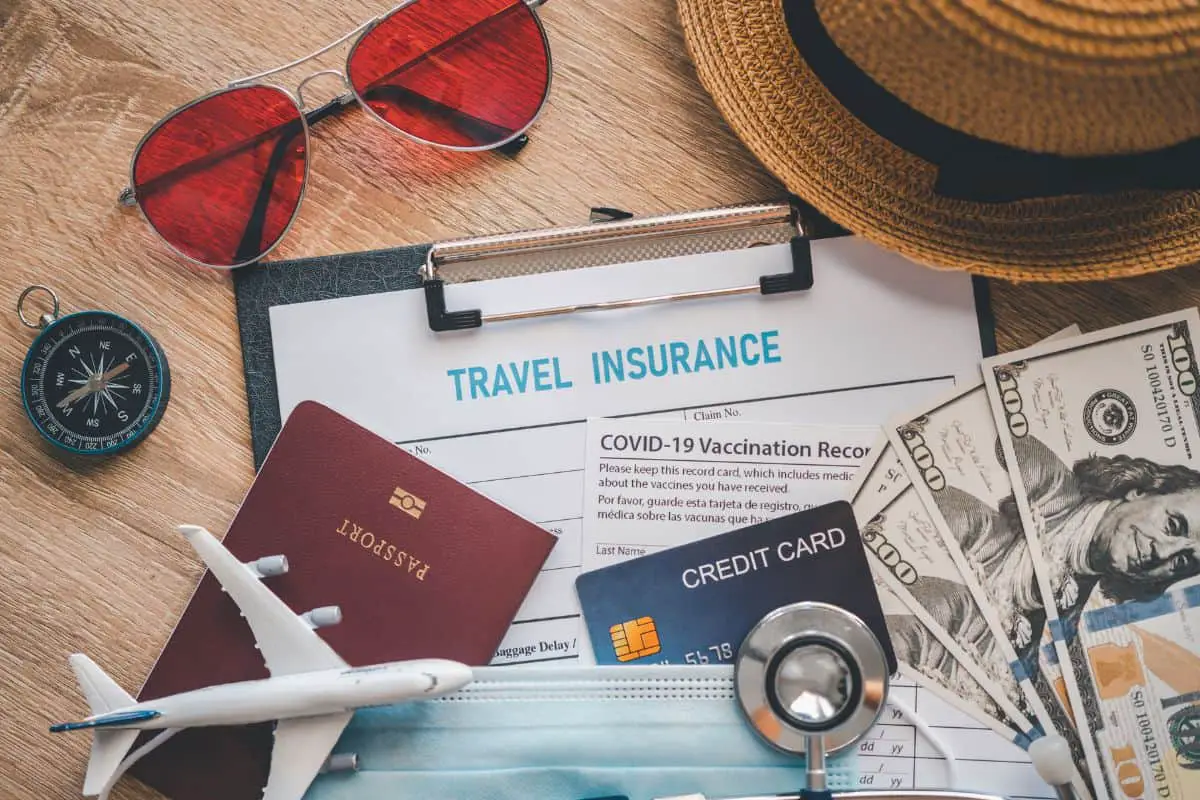
Documents and Passport Validity
Depending on your nationality and the type of visa you have, you may still need to provide other supporting documents, such as a return or onward ticket or proof of sufficient funds for your stay (and you may also need an itinerary if you are planning to venture Korea as a tourist).
Also, it's important that you check if your passport is valid at the time of entry and that it has at least one blank page for a stamp. Besides the passport, you can refer to HandyVisas to learn what requirements you need to enter South Korea.
Culture enthusiasts will love the idea that most of the tourist sites in Korea can also be visited for a small fee or free if they meet certain conditions (like wearing a hanbok in any of the five Seoul palaces ).
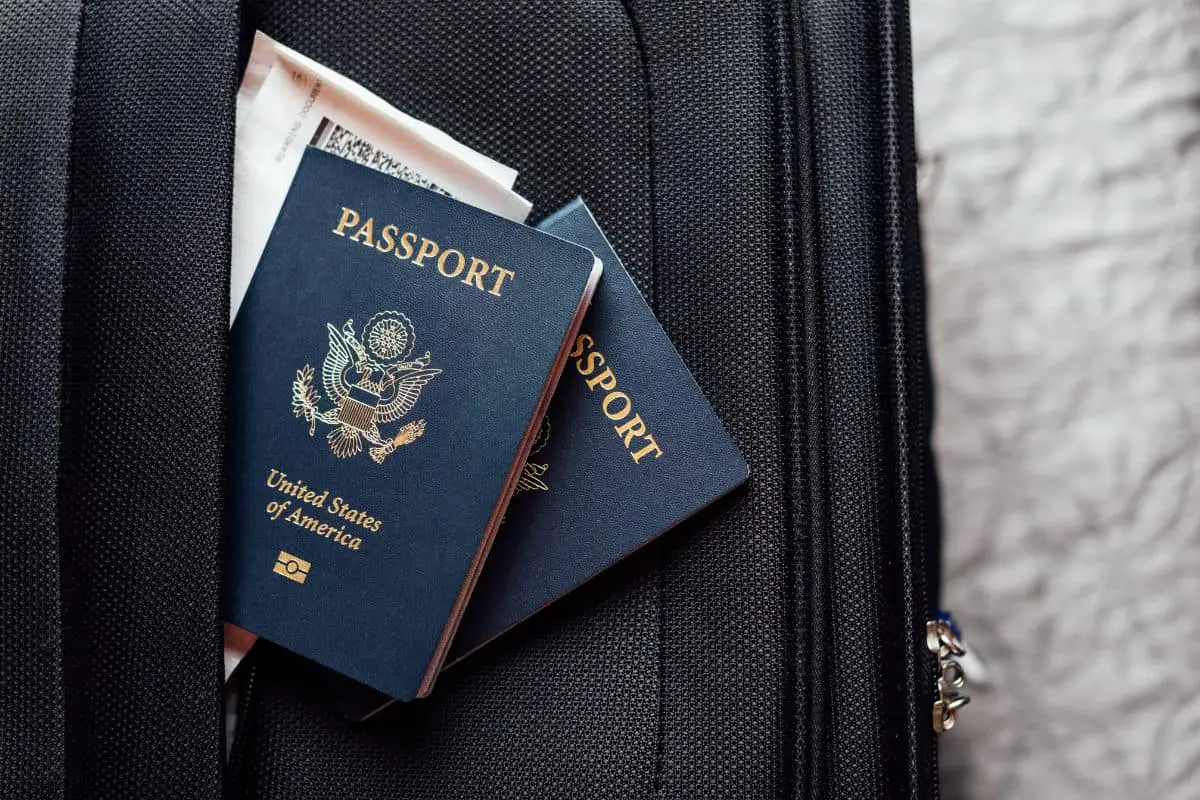
✍️ How to Apply for K-ETA: Step-by-Step
Before starting the process, you have to make sure that you have the following: a valid passport, an ID photo following the K-ETA conditions, dual nationality information (if applicable), travel agency information (optional), and an address in Korea .
There’s also a ₩10,000 fee (~$8USD) for the application process, and additional fees depending on your online payment method may apply. Be sure to check everything carefully before you hit send because once you pay this amount, you can never get it back.
You must also be willing to disclose a history of disease-related information and state past criminal records. For more information regarding this process, please visit the Application Requirements page of the K-ETA website.
Applying for a K-ETA is very simple. First, you must apply for K-ETA through the K-ETA official website or download the mobile app (in Google Play or Apple App Store ) at least 24 hours before boarding an airplane or ship bound for Korea.
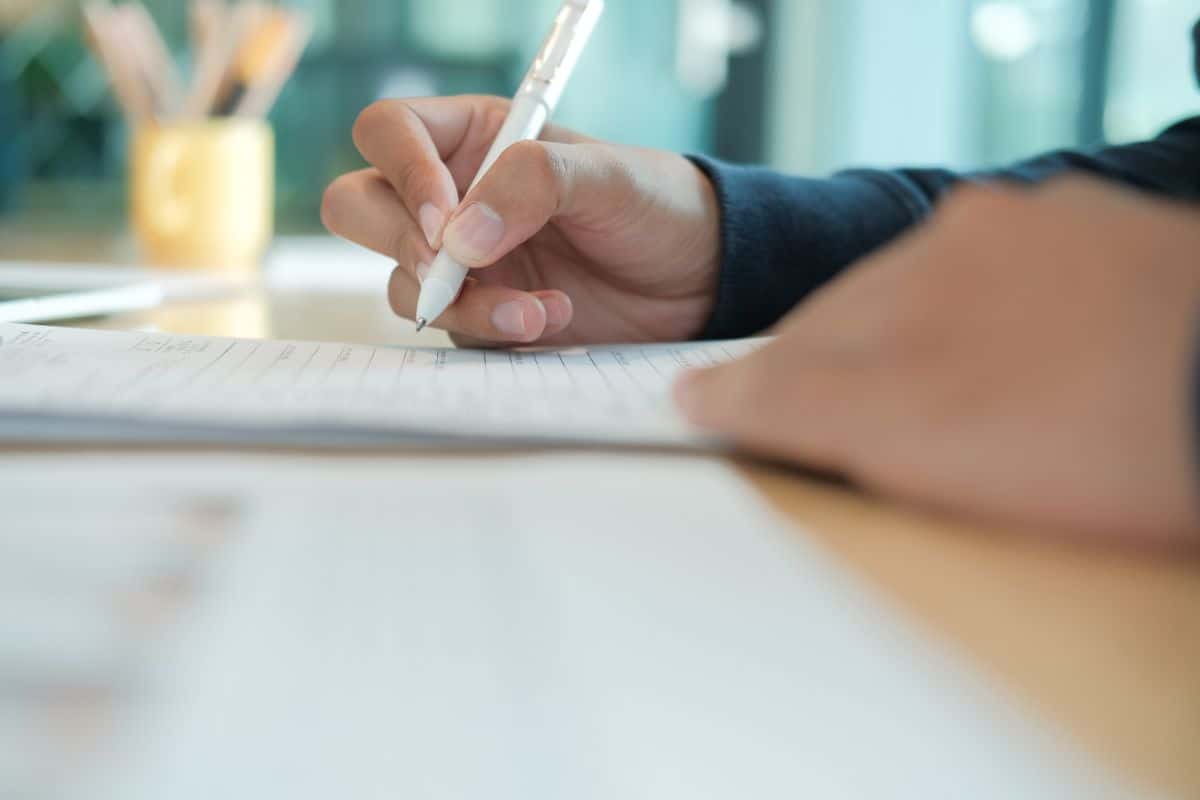
Once you have chosen your mode of application, here’s a step-by-step guide to the whole process:
1. Choose your preferred language and service type on the upper left corner of the site. The website offers multiple language options.
2. Click the two bars in the upper right corner, and press “ K-ETA Apply .”
3. Answer the Terms and Conditions Agreement. Select your continent/region, and then select the country/region listed on your passport. Read the following agreements on the collection and use of personal information, and make sure you agree to everything before moving forward.
4. Fill in your passport number and submit your email address. Provide a valid and active email address, as you will receive confirmation and updates regarding your K-ETA application through this email.
5. Enter your personal and travel details. In this step, you are asked to upload a passport bio page image file. Fill in your personal and passport information, including your full name, date of birth, passport number, and passport expiry date.
6. If you are a dual citizen, kindly indicate “YES” once you see this option.
7. Upload your phone number. If you don’t have a personal phone number, make sure that it is a contactable and reachable line.
8. Indicate if you have ever visited Korea before, select your purpose of entry, and enter the address where you will be staying in Korea. Toggle between the Korean or English option depending on the address given to you.
You can search using the postal code search or the address search. Hit the find button on the search engine and choose the address generated by the search results. Then, you provide the full address in the space below to include specifics like the floor and room number.
9. Provide your contact number in Korea. If you don’t have a mobile phone number yet, you can input the number of your hotel, guesthouse, company, or acquaintance. Afterward, choose your occupation type.
10. Please declare if you are currently sick with an infectious disease and if you have faced any criminal charges in the past.
11. Upload your photo. You must upload a recent passport-sized photo of yourself with a plain white background. It should be in color, saved as an image file (preferably in .jpg format), and its size should be under 100 KB with a pixel density of less than 600x600.
Avoid wearing accessories like hats, scarves, or sunglasses in the picture, and opt for simple clothing. Remember that Korean identification rules require a full face, facing forward, eyes open, and looking directly at the camera.
12. Review and confirm your information. Before submitting your application, double-check all the information you entered to ensure everything is correct. If everything is accurate, proceed with submitting your application.
13. Pay the K-ETA fee. You will be prompted to pay the K-ETA application fee online using the provided payment options. Complete the payment process to finalize your application.
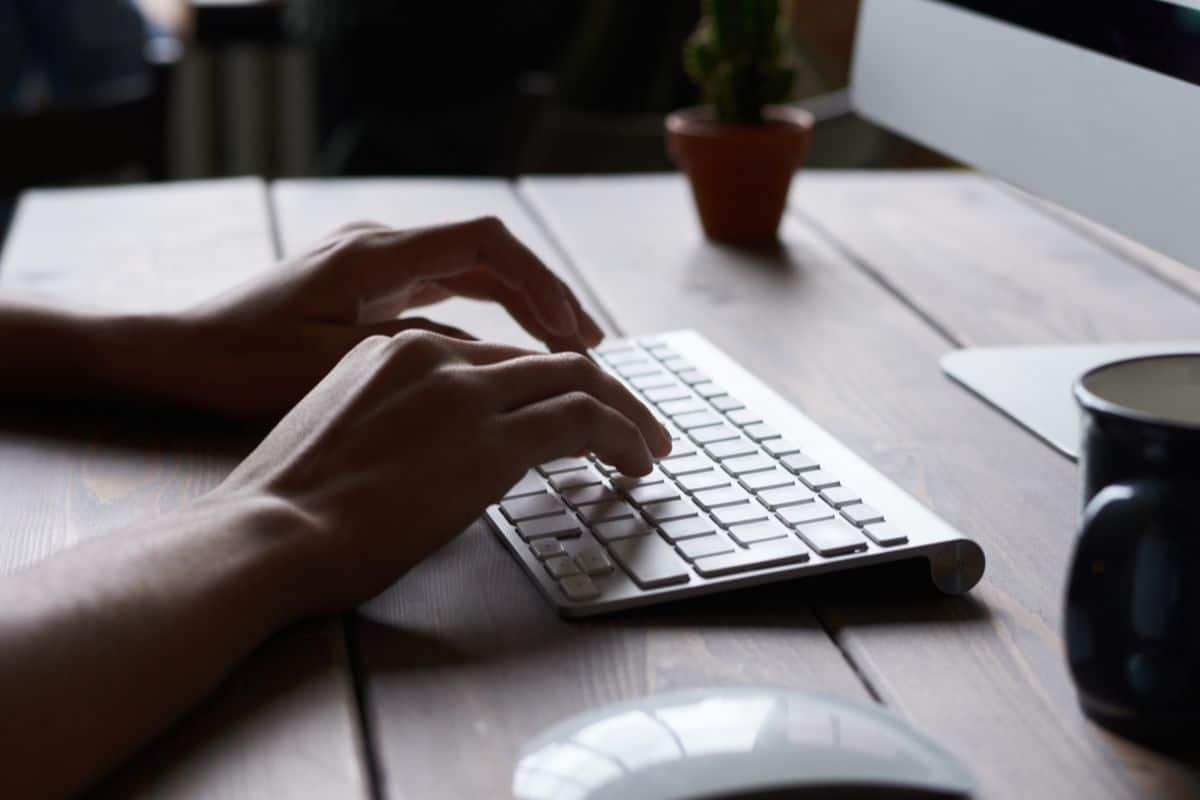
After completing these steps, you'll receive a confirmation email with your K-ETA application number. Once approved, the K-ETA will be sent to your email. Remember to print it out and carry it with you when traveling to South Korea.
Take note that your K-ETA is valid for 3 years (or 2 years if you applied before July 3, 2023) from the approval date. But, if the passport you used for the K-ETA application expires in less than 2 years, then the K-ETA approval will only be good until your passport’s expiration date.
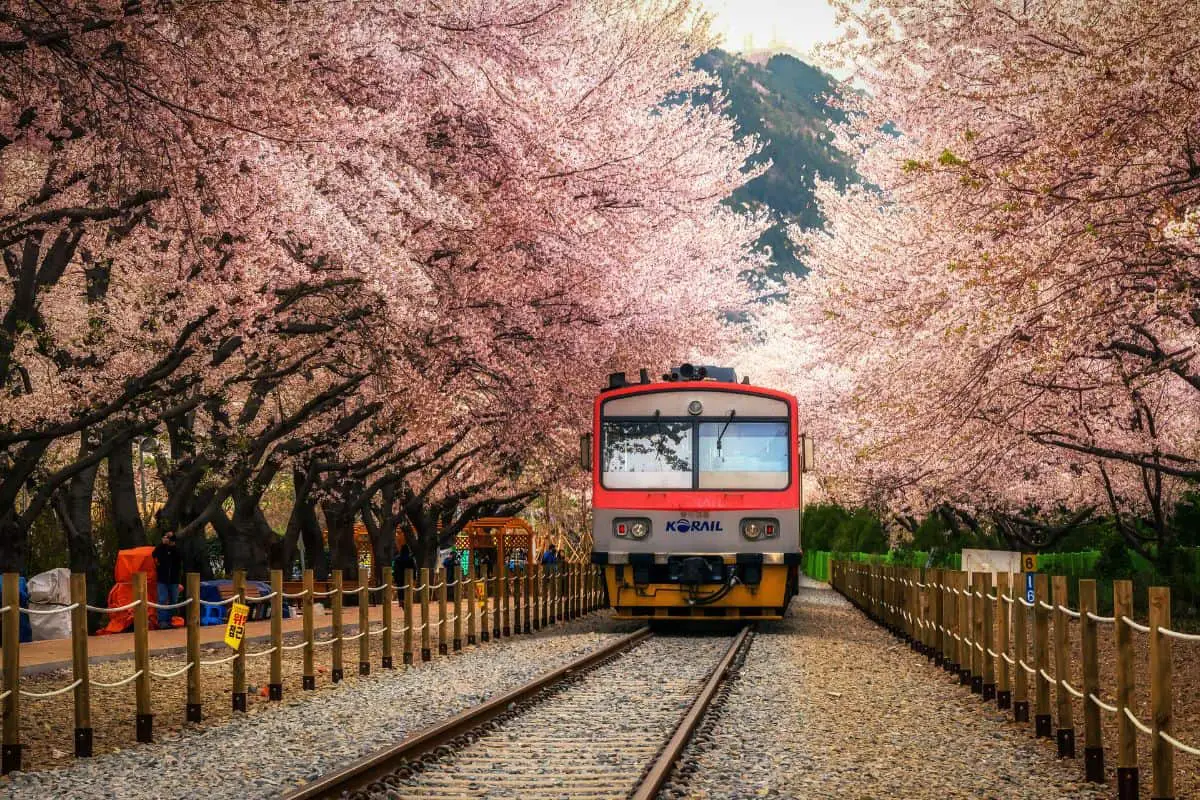
🚌 Public Transportation and Safety
Using public transportation.
Public transportation in South Korea is known for being efficient, reliable, and relatively easy for foreigners to navigate, especially the Seoul Subway . When visiting for tourism or business purposes, you'll find that most transportation systems have English signage, albeit sometimes intermittently, making it simpler to find your way around.
Keep in mind that it's always a good idea to plan your routes in advance to avoid any confusion. To plan routes, download applications like Kakao Map ( Android | Apple ) or Naver Map ( Android | Apple ) to help you with your travel planning.
Medical Care and Emergency Assistance
In case you need medical care or emergency assistance during your time in South Korea, it's important to be aware of the available resources. You can dial 1339, which is the Medical Assistance Call Center, if you need help finding medical facilities or understanding the local healthcare system.
Additionally, make sure to visit your doctor at least a month prior to your trip to get any vaccines or medicines you might need.
Alcohol and Drug Regulations
It's essential to be aware of and adhere to the country's alcohol and drug regulations. South Korea has strict laws when it comes to drug possession and usage, with severe penalties for violations.
For alcohol consumption the rules aren’t as strict, considering that they only have stipulated the legal drinking age (19 years old) and the regulation of online alcohol sales.
This doesn’t mean that you should go crazy on your drinking. Keep in mind that despite the cultural drinking expectations , you must know your limits to keep yourself safe in a different country.
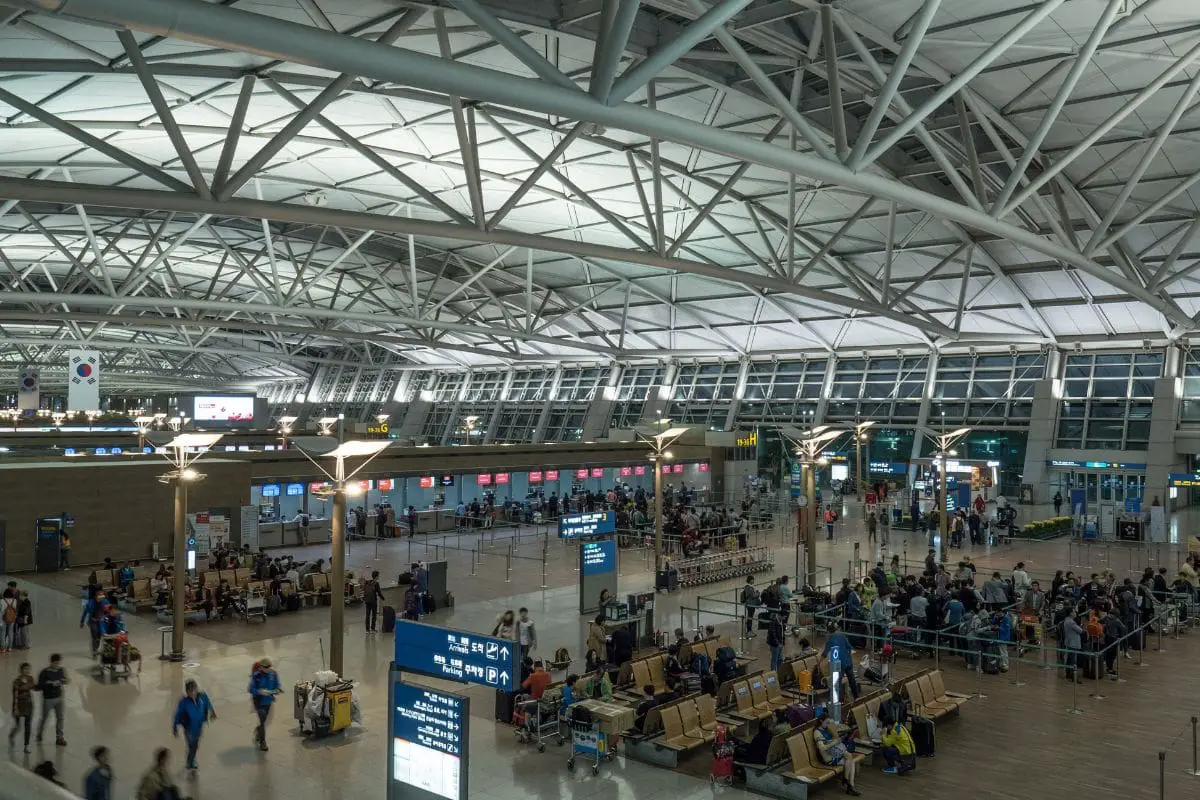
✅ Travel Advisory and Checklist
Covid-19 advisory.
Before traveling to South Korea, it's important to stay updated with the latest travel advisories. Read the Department of State's COVID-19 page and the Embassy's COVID-19 page for country-specific information.
Currently, the Republic of Korea doesn’t require incoming visitors to undergo COVID-19 testing, show proof of vaccination, or fulfill quarantine requirements for entry to Korea.
However, they still need you to present a QR code from the Quarantine Information Advance Input System . If you haven’t accomplished this, then upon arrival, airport staff will have you fill out a yellow form.
The rules and regulations are always subject to change, and you should always visit the Korea Disease and Control Prevention Agency for updates regarding this matter.
If you’re required to do a PCR test upon arrival, please refer to this list of COVID-19 Screening Clinics . Even though the restrictions on COVID-19 have been lifted, it’s still essential that you abide by the local COVID-19 guidelines and protocols to ensure your safety and the safety of those around you.
Q-Code System
When traveling to South Korea, you should be aware of the Q-Code system , which handles the management of incoming travelers. The Q-Code system is an electronic health declaration that helps Korean authorities monitor the health condition of travelers entering the country.
Upon arrival, you must download and install a mobile app on your device and register your personal information, including your vaccination status and PCR test certificate, if applicable.
The Q-Code system will assign you a unique code to track your health while you’re in Korea. You should carry your phone with you at all times during your stay in the country, as you may be required to present your Q-Code at any public health center or facility for monitoring purposes.
Last-Minute Checklist
To help prepare for your trip, create a checklist to ensure you have everything you need. Consider including the following items on your checklist:
- Valid passport with at least 6 months of validity remaining
- Travel insurance that covers your entire duration in South Korea (try WorldNomads and Visitors Coverage if you don’t have one yet)
- Copies of important documents, such as your passport and travel insurance policy
- Adequate local currency for your trip
In addition to these essentials, preparing for your health and safety while visiting South Korea is important. If you need assistance locating a facility that provides specific vaccines or medicines, visit the CDC's Find a Clinic page .
Furthermore, Americans may enroll in the Smart Traveler Enrollment Program (STEP ) to receive alerts and help the embassy locate you in case of an emergency. Lastly, familiarize yourself with local customs, etiquette , laws, and norms to ensure a smooth and enjoyable trip.
🙋 Frequently Asked Questions
Currently, pre-departure negative PCR test certificates are no longer required to enter South Korea since September 3, 2022. However, upon arrival, travelers exhibiting symptoms like fever or cough need to undergo COVID-19 testing at their own expense.
There are no specific COVID-19 vaccination requirements for travel to South Korea. But, vaccinated visitors do benefit from not having to quarantine upon arrival. Remember that the situation can change in the future, so it is essential to stay updated on any new regulations regarding vaccination and entry.
US citizens traveling to South Korea for short-term business or tourism purposes don’t need a tourist visa from April 1, 2023, to December 31, 2024. The Korean Electronic Travel Authorization (K-ETA) is also not required during this period. However, your passport must be valid at the time of entry, and you need at least one blank page for entry stamps.
Foreign nationals entering South Korea won’t be required to undergo a 7-day mandatory quarantine. However, travelers must still obtain a valid visa or K-ETA before their trip. Moreover, I advise you register your travel and health information through the Quarantine COVID-19 Defense (Q-Code) system before traveling to streamline the airport arrival process.
More South Korea Travel
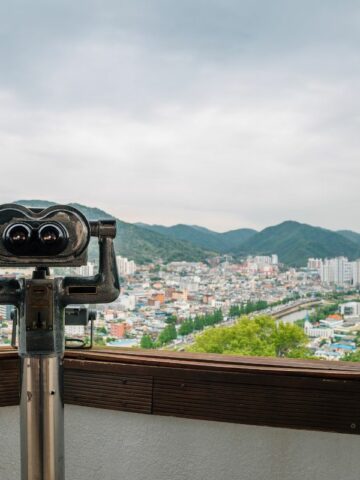
Sharing is caring!
Reader Interactions
August 16, 2024 at 11:30 am
This was very helpful thank you
August 18, 2024 at 6:40 pm
My pleasure, Katya; I'm glad you found it helpful!
Dear Max This is very useful information thank you! One question as a solo female traveller what might be the obstacles if any? Second question do you know if there are any rules when bringing medicine for personal use; do I need a proof from my doctor what they are used for? I would only stay 2 weeks maximum as a tourist. Thank you and have a good day!
August 18, 2024 at 6:45 pm
No problem, Pia! I'm glad to help. The main obstacle as a female alone in Korea will be finding places where you can eat alone, paying for the same amount of hotel room, and people to take your picture, as some tasks are just harder to accomplish with just one person. I've travelled all across the country as a solo female traveler, even when I had just arrived and couldn't speak any Korean, and otherwise the travel obstacles would be the same as if you were in a couple or group (navigation, communication, etc.). And no, you shouldn't; I've never had issues coming back with my prescriptions, but you can bring the proof along if it would help your peace of mind.
Leave a Reply Cancel reply
Your email address will not be published. Required fields are marked *
Free your Seoul: 26 of the best no-cost things to do

Feb 10, 2024 • 10 min read

The annual Lantern Festival makes Cheong-gye-cheon park in downtown Seoul particularly delightful – and it’s always free © Mongkol_Chuewong / Shutterstock
A 24/7 city with something to do every hour of the day, Seoul isn't a cheap place to visit.
Going to famous observation decks, enjoying premium cuts on the Korean barbecue and partying until dawn can definitely do some damage to your credit card. But if you veer a bit away from the typical must-do list, you'll find that many of the best things to do in the capital of South Korea won't cost much at all – or even a single won.
Fill your hours with scenic walks, visit the city's most poetic sites and experience views money can't buy. Here are our favorite free things to do in Seoul.

1. Stage a photo shoot in Ihwa Mural Village
Located near Seoul's independent theater district, the Ihwa Mural Village is the place to go if you're seeking the perfect selfie. The alleyways are covered in vivid, colorful murals created by more than 70 local artists in an attempt to revitalize this once-neglected neighborhood. Popular murals include Angel Wings and Fish Swimming Upstream .

2. Savor the atmosphere at Yun Dong-ju Literature Museum
Built in honor of a beloved Korean poet, this three-room museum has occupied a former pressurization facility since 2012. Visitors can browse through old photos and first editions of Yun Dong-ju's poems – yet it's the design of the space and the moods it imbues that are the museum's real highlights. Take a stroll behind the museum on Poet's Hill and admire the N Seoul Tower from a distance – a view that could inspire lyrical musings from just about anyone.

3. Pay homage at the Jeoldusan Martyrs' Shrine
The hauntingly beautiful Jeoldusan Martyrs' Shrine commemorates the many Roman Catholics who were murdered during the Byeongin Persecution of 1866. The shrine houses a gallery and a museum displaying implements of torture that vividly evoke the site's tragic history. It's best to visit at dusk when the glow of votive candles lends an otherworldly dimension to the space.
4. Check out the contemporary art scene at the Seoul Museum of Art
One of the few free art spaces in Seoul, SeMA is a modern art museum housed in a historic building. While special exhibitions at the museum can be quite crowded and pricey, the permanent exhibitions are free and often overlooked. These include Chun Kyung-ja, Eternal Narcissist , a collection of works by the renowned Korean artist that highlight her global influences.

5. See traditional Korean homes in charming Bukchon Hanok Village
Hundreds of traditional Korean homes ( hanok ) make up Bukchon Hanok Village , a neighborhood that recaptures the atmosphere of Joseon-dynasty Korea. Although the authenticity of the neighborhood is often debated – some of the hanok are newly built while others are a century old – the verdict on the charm of the small alleyways and incredible views is unanimous.
6. Hang out by the river in Hangang Park
Seoul's most famous free site is this park along the Han River – one of the city's best – which zigzags through the city. Beautiful lookouts and pleasant walks can be found at any point in the park, yet it's the views from the Mangwon-dong neighborhood that are arguably the best and a firm local favorite. If you're here in summer, many free events take place as part of the Hangang River Festival ; the park's outdoor film screenings are terrific.

7. Soak up the arts at Oil Tank Culture Park
A cultural center created from five transformed 1970s-era oil tanks, the Oil Tank Culture Park plays host to free concerts, exhibitions and lectures. Even when there's nothing in particular happening, you can easily pass a few hours exploring the space's hidden nooks and watching musicians practicing in the outdoor amphitheater. The venue's unique curves make it a favorite among photographers.
8. Enjoy a good read at the Cheongun Literature Library
At the foot of Mt Inwang, the Cheongun Literature Library is undoubtedly one of the most beautiful libraries in Korea. The functional lower level is home to an average collection of books – but on the second level, the library's reading rooms are housed in a striking traditional Korean house, making for a unique place to settle in with a good read. Spacious and sunny, it's a bibliophile's dream come true.

9. Linger in the Gyeongui Line Forest Park
A park built on the route of 100-year-old train tracks that once led to North Korea, Gyeongui Line Forest Park is one of the highlights of Seoul's northwest side, and it runs through several trendy neighborhoods. On summer nights, you'll see plenty of picnickers having drinks and listening to buskers with guitars in the Yeonnam-dong portion of the park. In good weather, pianos are also set up outside for the musically inclined to perform for the public.
10. Learn about the city's past at the Seoul Museum of History
Even special exhibitions are almost always free at the popular Seoul Museum of History , near Gyeonghuigung Palace . While the museum boasts relics from the Joseon dynasty, the exhibition hall of donated items on the first floor makes the strongest impression, with everything from old computers, cassette tapes, T-shirts from the '60s and other household goods used by ordinary citizens. Free events showcasing Korean culture often take place during local holidays.

11. Take in heavenly vistas from Bukhansan's highest peak
With dozens of peaks in the area, Seoul has no shortage of mountains to climb. Yet ask any avid hiker for the best walk in the area, and you'll likely be sent packing up the slopes of 836m (2743ft) Bukhansan . Those willing to reach the mountain's tallest peak will be handsomely rewarded with heavenly views – and perhaps even some makgeolli (traditional Korean rice wine) from a friendly fellow climber: locals are known to share their mountaintop drinks with tourists at the summit.
12. Hike Inwangsan for easier city views
Less demanding than Bukhansan, 338m (1109ft) Ingwangsan still offers breathtaking views of Seoul for hikers, as well as a free history lesson. A series of ancient fortress walls are preserved here, and from the trail, you can spot Gyeongbokgung Palace in the distance. Be sure to check out the uncanny Seonbawi (Zen Rocks) and the Guksadang shamanist shrine on your way up.
13. See the sights for free on a free Seoul walking tour
Make a reservation three days ahead to take advantage of Seoul Tourism's free walking tour program, which is staffed by volunteer guides. While the quality of the tours varies, they are free and are offered in Korean, English, Japanese, Chinese and other languages, and cover a huge range of themes, from exploring local markets and historic sites to finding traces of the artists and writers who once lived in one of the city's oldest neighborhoods. Tours are limited to 10 people each (20 for some palace tours), and reservations must be made in advance .

14. Sample the wares at Seoul Station's Lotte Mart
Larger grocery stores in South Korea tend to offer incredibly generous samples, but few are as munificent as the Lotte Mart inside Seoul Station. Sample-givers usually speak basic English, Japanese and Chinese – and aren't afraid to give you seconds. Try the instant noodle aisle at 6pm on a weekday, and you might be able to skip dinner. (Though we wouldn't recommend it .)
15. Take a breather at Bongeun-sa
Anyone staying south of the Han River and looking for some culture after shopping in the packed COEX Mall should check out Bongeun-sa , a temple that traces its history to 794 CE, during the Silla kingdom. Even though much of the original site was destroyed by a fire in 1939, the temple's air of serenity, woodblock carvings of the Avatamsaka Sutra and a library of 3479 Buddhist scriptures make it worth a visit.
16. Window shop at Dongmyo Flea Market
Many of Seoul's markets are free to check out and well worth exploring – and the collection of used goods at the Dongmyo Flea Market is more about browsing and less about buying. This random assortment of everything from electronic massagers to old Korean coins and piled-up hills of cheap T-shirts is most active on warm, dry weekends. It's located near Dongmyo Park (84, Nangye-ro 27-gil, Jongno-gu).

17. Rise above the fray at Seoullo 7017
Often compared to the High Line in New York City , Seoullo 7017 is a "sky garden" that runs from Seoul Station to Namdaemun Market. Converted from a former highway overpass in 2017, this 1km (0.6-mile) park boasts more than 20,000 plants and fine city views and plays host to a plethora of public events. The brave can stand on glass-covered holes through the overpass and look down at the cars whizzing below.
18. Channel European vibes at Seoul Anglican Cathedral
Although Myeong-dong Cathedral is Seoul's most famous – and perhaps most historically significant – church, it could be argued that the Seoul Anglican Cathedral is the capital's most beautiful. Designed by English architect Arthur Dixon and built in the Romanesque Revival style, this distinctly European edifice is a sight to behold, inside and out. You can visit the church for free, and regular English-language services are held on Sundays at 9:30am in the crypt chapel.

19. Unwind streamside at the Cheong-gye-cheon
One of the city's ecological marvels, the Cheong-gye-cheon is an artificial stream that runs through downtown Seoul. Walking the pleasant, greenery-lined pathways that run along the water is a great way to unwind in the evening, and the stream is even more dazzling during the famous Lantern Festival every November. The Cheong-gye-cheon Museum is also free if you'd like to learn about the site's complex history.
20. See the Moonlight Rainbow Fountain's water show
From April to October, people come to the Banpo Bridge section of the Han River Park to see the Moonlight Rainbow Fountain water show. Choreographed with lights and music, 380 water jets put on a show soundtracked by everything from classical music to pop and rock. Call the Korea Travel Hotline (+82-2-1330) to check the fountain's schedule on the day of your visit.
21. Browse the National Museum's permanent collection
Displaying more than 12,000 artifacts that span from prehistory to modern times, the National Museum of Korea is South Korea's largest museum. While special exhibitions carry an entrance fee, you won't be left wanting after browsing the free permanent collection. Be sure to see the photogenic 10-story pagoda from Gyeongcheon-sa Temple at the center of the museum. There's also a children's museum , which is free but requires an online reservation.

22. Learn about Buddhism at Gilsang-sa
Although Jogye-sa in the heart of downtown is Seoul's best-known temple, perhaps its most beautiful shrine is Gilsang-sa , located off the beaten path in Seongbuk-dong. A restaurant-turned-temple, Gilsang-sa only opened in 1997. Its idyllic natural surroundings and wealth of English-language programs make it a must-visit for anyone interested in Buddhism – or those just seeking a (free) place to get away from it all.
23. Take a mini-break at Seonyudo Park
Repurposing a former water purification plant, this green island in the middle of the city is the first park of its kind in the country. Locals and visitors come to picnic or sunbathe in the botanical gardens and green spaces.
24. Bring a date for a stroll along Seoul City Wall
Originally built in 1396, Seoul City Wall is a national treasure and a wonderful place to hike. For locals, it's also a popular date spot. Try an evening stroll along the portion of the wall in Naksan Park , near Hyehwa Station: it's hard not to be seduced as the warm glow of the ancient fortress's lights and the panoramic city views sparkle in your lover's eyes.

25. Admire the futuristic architecture at Dongdaemun Design Plaza
A draw for anyone who loves cutting-edge architecture, the multifunctional Dongdaemun Design Plaza is one of architect Zaha Hadid's greatest works. Exhibitions, fashion shows and other events are held regularly; not all of them are free, but the edifice itself is free to walk around – and it's definitely worth a (long) look.
26. Celebrate Culture Day at venues across town
On the last Wednesday of every month – aka Culture Day – performance centers, museums and cultural sites across Seoul open for free or at a discounted rate. The city government works in collaboration with venues to create this extensive list of freebies that includes everything from the five grand palaces to the National Museum of Modern and Contemporary Art and Seoul Performing Arts Company . Discounts for most major movie theaters are also available on Culture Day.
This article was first published May 28, 2019 and updated Feb 10, 2024.
Explore related stories

Jun 19, 2024 • 8 min read
Jjimjilbang – literally "heated rooms" – are an essential part of South Korean culture. Here's how to experience a Korean bathhouse like a local.
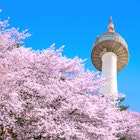
Jun 18, 2024 • 8 min read

Feb 27, 2024 • 6 min read

Feb 4, 2024 • 8 min read

Jan 2, 2023 • 12 min read

Aug 19, 2022 • 8 min read

Aug 15, 2022 • 9 min read

Jul 6, 2022 • 5 min read

Jun 9, 2022 • 6 min read

Apr 18, 2022 • 6 min read

13 Free Things to Do in Seoul
If you’re on a super strict, shoestring budget, then you’re going to love Korea’s capital city. While I’ve easily burned through $200+ on a crazy weekend, it’s entirely possible to visit and tour around for next to nothing. Here’s a list of 13 free things to do in Seoul and some super budget tips to help you out!
Keep in mind, Korea is pretty cheap if you know what you’re doing. All of the things below are totally free, but that doesn’t mean other popular attractions are expensive. Most entrance fees are, at most, 3-4,000 KRW!
The only time costs start to build are if you’re going clubbing, drinking at trendy cafes or bars, eating at foreign restaurants, or taking taxis everywhere. Otherwise, you can keep costs low and see a lot of the city without blowing through your budget.
For posts related to Seoul and Korea trip planning:
- 50 South Korea Travel Tips
- How to Spend 2 Weeks in Korea: 4 Sample Itineraries
- Quick Guide to Seoul
I should note that these free things do not include areas that are mostly for shopping. I mean, sure, you could walk around Hongdae and listen to the buskers. However, if you’re not popping into the fun little shops, eating tons of street food, going clubbing, or visiting quirky places like the Trick Eye Museum, it’s kind of just another busy street. Same goes for Myeongdong and Dongdaemun Market! They’re known for being good shopping areas!

1. Walk around Ihwa Mural Village
Korea is full of these cute mural villages! The story for these places usually goes like this: the neighborhood is falling to disarray and the local government begins making plans to demolish the area.
Then local artists or students come together and begin painting cheerful murals all around the area. They paint them on homes (with permission), stairs, abandoned buildings, and more. Soon people come to take photos and wander around, small coffee shops and souvenir shops open up, and the once ailing neighborhood is now a must-see destination.
I wrote about Ihwa here if you want to know more.

2. Visit the Palaces on Seollal, Chuseok, or the last Wednesday of the month.
While the palaces are usually around 3,000 KRW entrance (or 10,000 KRW for a combined ticket), it is actually possible to see them for free without renting a hanbok.
I know for a fact when I first went to Gyeongbokgung , I went on Chuseok and it was free. I’m pretty sure it’s only the specific day, not the general holiday, which is 3 days long, but you can always call ahead to make sure.
They’re all also free on the last Wednesday of every month, so you can always plan your palace day for then! The only caveat is that Changdeokgung’s secret garden isn’t included.

3. Visit Jogyesa and Bongeunsa
I’m used to temples having a small entrance fee, so I was surprised that Jogyesa and Bongeunsa were both totally free. If you’d like to see a Buddhist temple, then these are the two you’ll want to wander around. If you visit in late May, then you’ll be able to see them all decorated for Buddha’s Birthday!
Bonus: If you visit on Buddha’s Birthday, you can get bibimbap from any of the temples for free. This goes for any temple in Korea according to my students. Just know it’ll probably be you plus about a hundred or more other people!

4. Walk around Seokchon Lake.
Seokchon Lake is such a pretty area, especially during cherry blossom season . It’s near Lotte World and Lotte Tower, the tallest building on the peninsula. While Lotte World costs money to get into, if all you want to do is see it, you’ll be able to see plenty of views from the lake.

5. Walk around Bukchon Hanok Village.
Bukchon Hanok Village is one of my favorite places to wander around. Hanoks are traditional style Korean houses, and Bukchon is easy to visit because it’s right next to Gyeongbokgung.
You can get some really pretty views of Seoul, and on a clear day, you should be able to see straight to Namsan Tower.
**Please, please, PLEASE be respectful of residents in both Bukchon and Ihwa. There have been complaints recently of tourists disrespecting residents (both Korean and foreign) by being too noisy or taking photos where they’re not allowed. Don’t ruin these lovely places! **
6. Hike Bukhansan
Yup, Korea’s hiking trails are, in general, free! Granted, you’ll probably want to bring water and food with you, but the actual trails don’t cost a thing.
I have yet to do Bukhansan, but my friends went a while back and made a video of it (above). They also included it in their picks for the best fall foliage destinations, so definitely go if you’re here in autumn!

7. Hang out by the Han River at night to see the water show from Banpo bridge.
I’ve really only done this once when I was still a student, but I remember it being a fun way to relax at night with friends! If you plan to eat around here, order some fried chicken or jjajangmyeon!

8. Walk along Cheonggyecheon Stream
Cheonggyecheon is Seoul’s big manmade stream, and it’s just a lovely place to walk along. There are always some sort of fun installations or small performances to enjoy. On a hot summer’s day, it’s just nice to sit and dip your feet in the water to relax. If you visit Jogyesa first, it’s an easy walk from the temple.

9. Visit the many free museums in Seoul.
Many of Korea’s more traditional museums are totally free!
I visited the War Memorial of Korea as a student, and it was absolutely incredible. While it mostly covered the Korean War, it also went into Korea’s entire military history spanning back centuries.
Other popular museums that are free: National Museum of Korea , National Folk Museum of Korea (inside Gyeongbokgung), and the Seoul Museum of History .

10. Go to the area around Namsan Tower.
While the actual observatory costs money, the area below with the locks has no entrance fee. I actually prefer this part to the observatory anyway because you get the beautiful views of Seoul without the annoying blue-tinted window.

11. Try to go to a music show.
Yup! Technically, going to one of the big music shows is free! Granted, there are a ton of hoops you’ll need to jump through to get in, and it’s also not guaranteed.
I know for a lot, you have to get up and wait at 5 a.m. You also might need some sort of proof that you’re a fan — memorabilia, fandom merchandise, or the newest CD. Even then, it might be difficult. BTS, for example, is going to be a lot harder to see than a debut group from a small company.
Luckily when I was a student, my university arranged a special visit to Inkigayo for like 20,000 KRW. I didn’t have to wait in lines or anything, but I also think it was only the dress rehearsals. Either way, they were pretty fun!

12. Walk around Dongdaemun Design Plaza.
Dongdaemun Design Plaza is one of the coolest structures in Seoul. It was designed by the late, great architect, Zaha Hadid, who designed the building to represent the neighborhood’s constant change.
If you’re a drama fan, you’ll definitely recognize the LED flower garden from dramas like “The Producers.” It’s also where Seoul’s spring and fall fashion shows are held each year.
13. Go on a free walking tours
The Seoul city government actually offers a lot of different free walking tours, and many include some of the places I listed above. Check out the website and make a reservation for one that fits your schedule.
Some Budget Tips for Seoul
If you’re really looking to save money, here are some quick tips. Hey, I was a broke college student living in Seoul for a summer, so I figured out quickly how to stretch my money.
Eat and drink at the different convenience stores.
I don’t know if you’ve ever stepped into a GS25 or a CU, but when I say convenient, I mean convenient. You could easily make a whole ramen meal and get drunk for cheap. Like, to spend 10,000 KRW, you really need to try.
While I don’t think it’s going to give you the best culinary experience, I also ate sandwiches from 7-11 in Kyoto for most of my trip, so I’m not one to judge.
Also! Check out the university dining options.
Check out the nearby university and see what the dining options are if you’re looking for another cheap-eats option. I remember the cafeteria in Yonsei was maybe 2,000-3,000 KRW for a full meal, and even the shops nearby were super cheap.

Stay at a jimjilbang overnight.
If you don’t have much with you, stay at a jimjilbang overnight! Shower, soak in the tub and sleep in the jimjilbang area. It’ll cost you around or under 10,000 KRW. Again, not the most luxurious accommodation options, but it gets the job done! I believe it’ll be cheaper than most hostels, even the big mixed-dorm ones.
Download the Subway and Bus Apps.
They’re free, of course, and they can help you plan out where to go without needing to take a taxi. Public transportation is beyond convenient in Seoul, so definitely take advantage of it. Plus there’s Wi-Fi almost everywhere, so if you want to skip getting a SIM card, it’s possible.
Ediya has the cheapest coffee
If you told me Korea had more cafes than it did convenience stores, I’d believe you. However, the coffee here isn’t exactly a cheap affair!
If you do want to get your coffee fix from a cafe, then Ediya has the cheapest menu. I usually get vanilla lattes, so to me, it tastes just as good as the fancier changes or bespoke shops. You also get a small discount if you bring your own reusable tumblr (which you should have anyway!).
I think that just about covers it! I know this list is probably not the most complete, so if you have more places in mind that are totally free, let me know!

want to support?
I’m always grateful when friends and readereach out wanting to support There She Goes Again . Truthfully, I’m just happy my posts are helping people travel! If you’d like to support the blog, here are some companies and brands I’m affiliated with. Simply click the links, and I receive a small commission at no extra cost to you!
- Booking (Hotels)
- Sixt (Car Rental)
- Klook (Tours)
- Viator (Tours)
- Get Your Guide (Tours)
- Trazy (Korea Tours)
- Tiqets (Entrance Tickets)
BLOGGING / SOCIAL MEDIA
- WPX Hosting (Advanced)
- Bluehost (Beginners)
- Lezé the Label (Clothing)
- Printfresh (Pajamas, etc)
- Promptly Journals
- Encircled (Clothing)
- Girlfriend Collective (Athleisure)
- Birkenstock (Sandals)
- Bookshop (For Local)
- Amazon Books
I’m so excited to try out some of these free attractions in Seoul! The street food markets and traditional villages sound like a lot of fun. Thanks for sharing these recommendations 😍
Going to Visit Seoul next week as I don’t know much about it so I was looking for a blog to know the best things to there thanks for this information. As Know I know What to do there.
Leave a Reply Cancel reply
Your email address will not be published. Required fields are marked *
This site uses Akismet to reduce spam. Learn how your comment data is processed .
Living and traveling in Korea
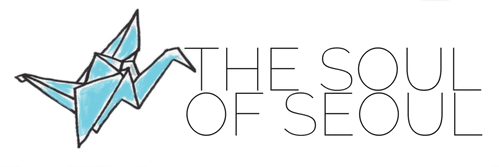
How To Visit The Blue House In Seoul: A Guide To Cheongwadae
Did you know you can visit the Blue House in Seoul now? Actually, there were tours before, but now you can see more. Formerly the president’s home, the newly elected Korean president no longer lives there, so they’ve opened it for people to see for the first time in 74 years. If you’re interested in seeing Korea’s government buildings, you should go take a tour of The Blue House, or Cheongwadae (청와대) as it’s called in Korean.
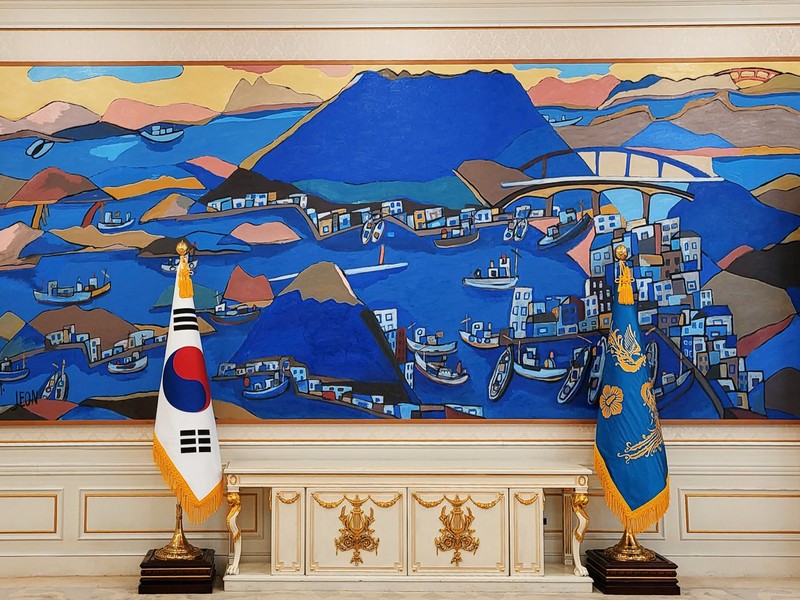
Citizens and tourists can see the Blue House but the process to see it is a bit different, so make sure you read carefully. If you’ll be visiting downtown Seoul soon, this is definitely something you should see. Who knows? Maybe the next president will move back in and it won’t be public anymore. It might be your only chance!
How To Get There
The importance of cheongwadae opening, notable south korean presidents, what to see, what to do nearby.
(This post contains affiliate links, which means I receive a certain percentage of a sale if you purchase after clicking at no cost to you. Thank you for your support.)
Situated snuggly behind Gyeongbokgung Palace with Bugaksan behind it, you can easily add this to a day in downtown Seoul.
Address: 1 Cheongwa-daero, Jongno-gu, Seoul (서울 종로구 청와대로 1) By Public Transportation: Take Line 3 to Gyeongbokgung station, exit 4. Then, take bus 1711, 1020, 7018, 7016, 7022, or 7212 to Hyoja-dong, and it’s a short walk from there.
Alternatively, you could walk through Gyeongbokgung Palace and exit out the back gate to find the Blue House as well. Make sure to check when you buy tickets that the back gate will be open by the time you get there though.
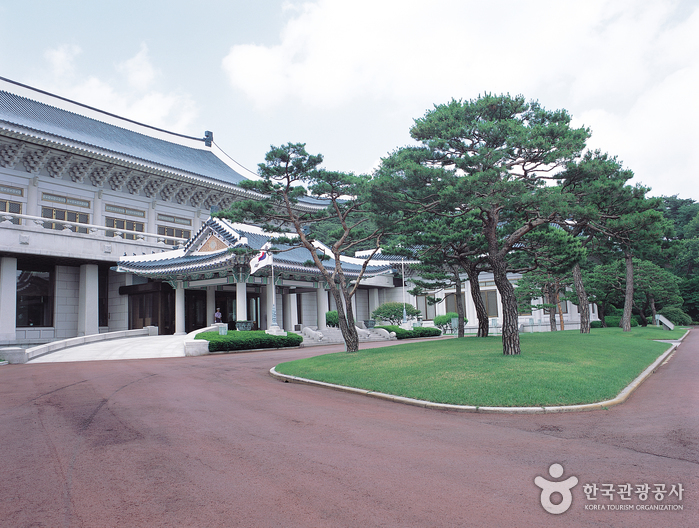
Days: Wednesday – Monday
Hours: 9:00am ~ 6:00pm
Admission: Free
How to visit: Currently, reservations are required to visit the Blue House. However, if you’re a tourist you cannot make a reservation on the website. Keep reading though because you CAN still visit.
If you’re a citizen of South Korea or a resident of South Korea:
- You can register on the Cheongwadae website in order to visit.
- Registration can be made up to four weeks in advance.
- Up to 6 people can be registered per reservation.
- A local mobile number is required to verify your identity.
- Website: https://reserve1.opencheongwadae.kr/
If you are a tourist visiting South Korea:
- There are two times a day when 500 walk-ins are allowed to enter and this is when you can get in.
- Walk-in times: 9:00am & 1:30pm
- Note that you should arrive at least a half hour in advance. On popular days, the line can get long fast.
- You must bring your passport to show at the ticket booth to enter.
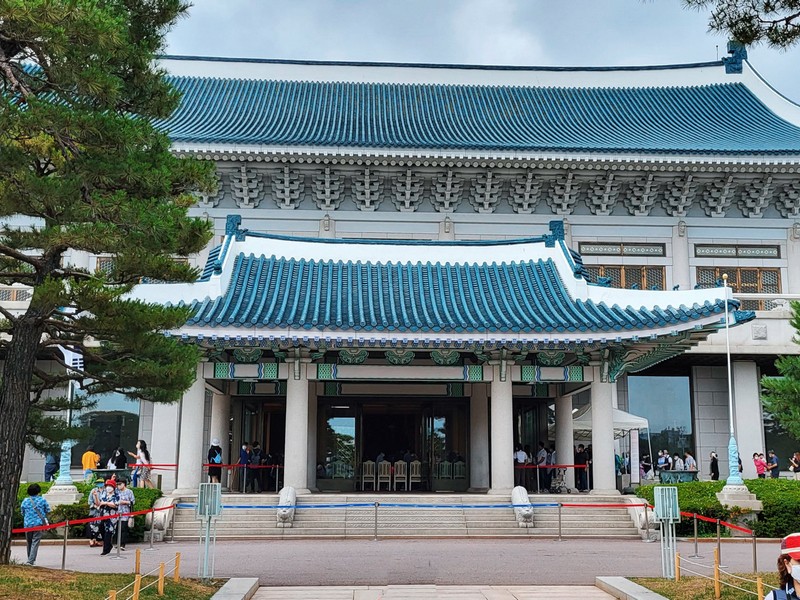
Because every South Korean president lived here, The Blue House was always pretty closed off to the public. There were special events held sometimes, but it was much like the American White House where few people have seen the interior. The new President Yoon Suk-Yeol, who was elected in 2022, decided not to live there and opened the residence up to the public.
Opening up Cheongwadae was a controversial decision but President Yoon strongly voiced his opinions that the Blue House was a symbol of Korea’s legacy of imperial presidencies. He vowed to return the compound to the public and move his office to the defense ministry building in Yongsan. It could be that this tourist attraction is limited to this president’s 5-year term though, so you should go see it while you can!
History of the Blue House
The land that the Blue House is on was originally a royal villa in Hanyang, the capital of the Goryeo Dynasty. Once Joseon took over and Gyeongbokgung Palace was built, it became the back garden of the palace. During the Japanese occupation, they built a government administrative building there.
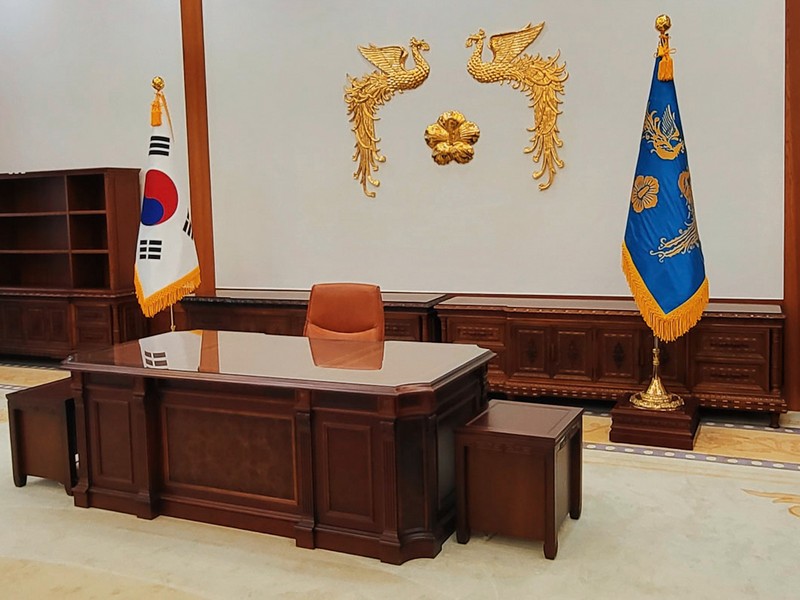
When the Republic of Korea was established in 1948, the first president Syngman Rhee renamed the building to “Gyeong Mu Dae” and he used it as an office as well as a place of residence. The fourth president of South Korea, Yun Bo-seon, changed the name to Cheongwadae, which literally means “The Blue House” after the signature blue tiling on the roof.
All of the Korean presidents have used this for both their residence and official offices until the latest one, President Yoon Suk-Yeol. After a Presidential decree, The Blue House was declared a public park this year, 2022, and opened to the people for the first time since it was built. You can imagine how excited citizens and tourists have been to visit. There is a limit of 6,500 people that can enter every two hours by reservation for this reason.
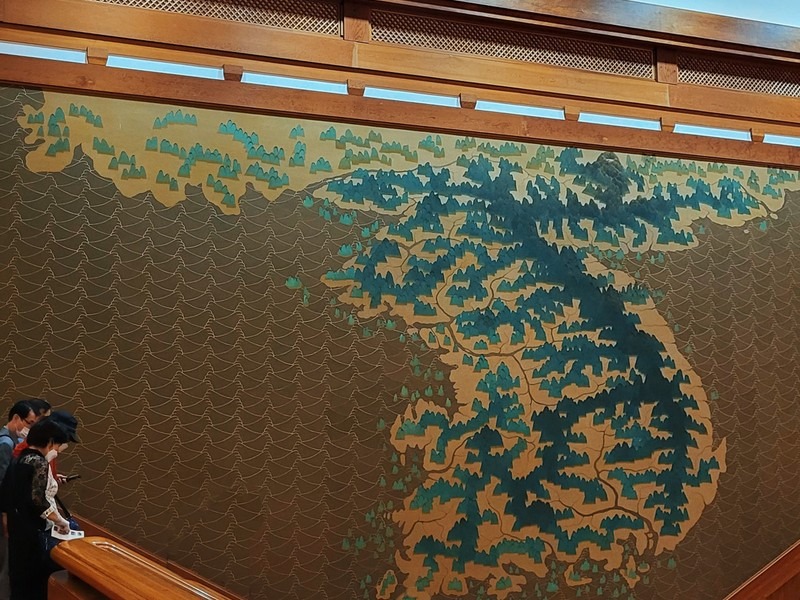
- Rhee Syngman (이승만) – The first president of South Korea
- Yun Bo-Seon (윤보선) – President with the shortest term at 1 year and 224 days.
- Park Chung-Hee (박정희) – The longest-serving president at 15 years, 10 months, and 10 days. This is about 3 times the length of a current presidential term in Korea.
- Roh Tae-Woo (노태우) – The first president of the sixth and current Republic of Korea.
- Park Geun-Hye (박근혜) – The first female president of South Korea, also inspired the largest weekly protest in South Korean history with 10 million people joining.
- Moon Jae-In (문재인) – Stepped over the demarcation line at JSA and similarly welcomed Kim Jong Un to step into the south marking the first time since the Korean War a North Korean leader had entered South Korea.
Walking into Cheongwadae, you can feel the excitement of everyone there to see a building that’s been closed for so long. It feels like an incredibly fancy building, and it’s always cool to see cultural sites because you can feel all of the history in a place when you walk around.
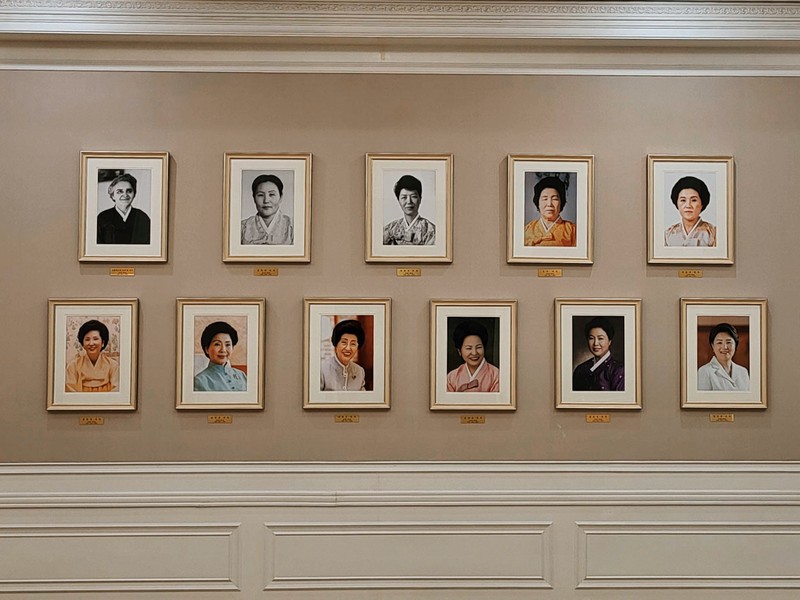
Main Office Building (청와대 본관)
This is probably the most recognizable place in all of Cheongwadae. It’s the building that has the blue tiles on the roof that gave the property its name. It has been used as the official presidential office since it was built in 1911 to 2022. Since it’s been opened to the public, it’s been made into a museum of the lives of presidents while they used this space.
Each room in the building shows a different purpose for it, while at the end there’s a display of all of the First Ladies of South Korea. This is also the most popular building, and the line tends to be long. If you want to see it, it should be either the first or last thing you visit while at Cheongwadae.
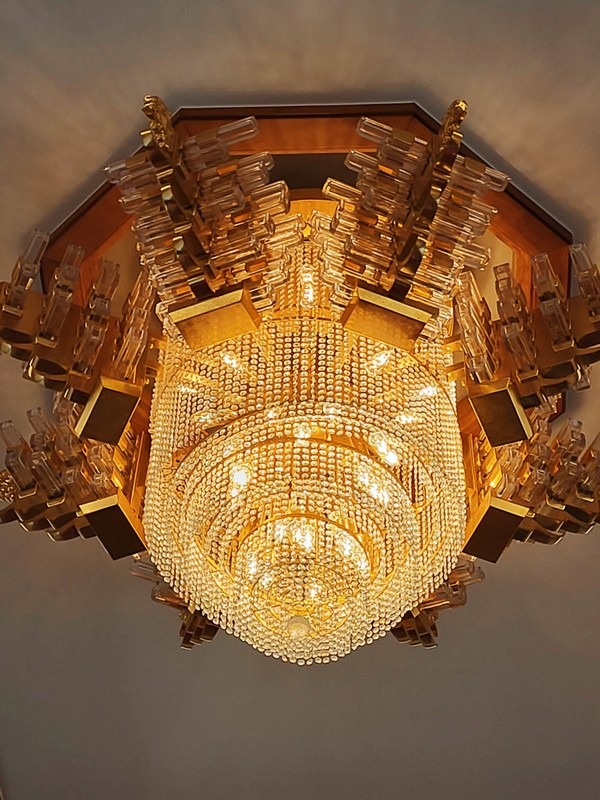
Yeongbingwan (영빈관)
Yeongbingwan is the state reception hall. This was the place where the president would host guests from other countries. There would be traditional dance performances and banquets here to welcome other heads of state.
Presidential Residence (대통령관저)
This was the home of presidents and their families while they were in office, kept separately from the main building. It includes three sections: Bonchae, which is the actual living space; Byeolchae, which is the reception space, and Sarangchae. This last room is traditionally used as a study by the men of the house.
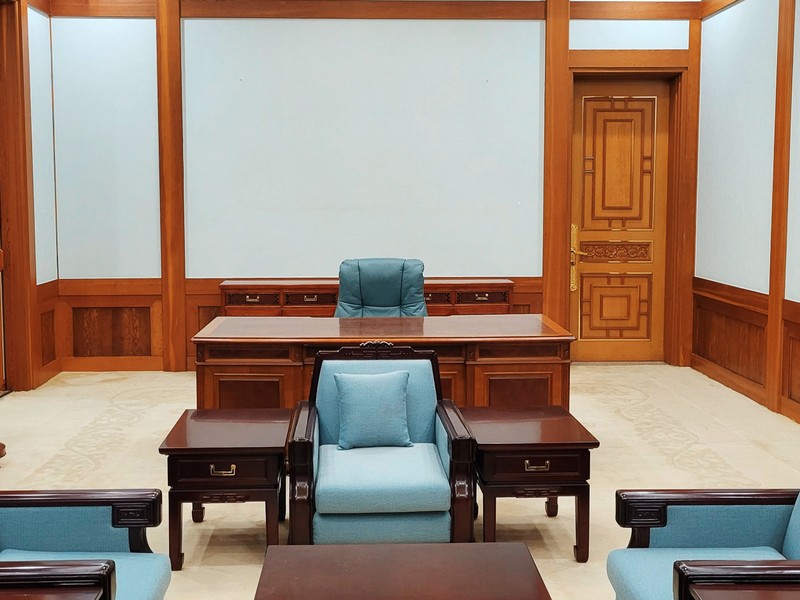
Sangchunjae (상춘재)
Designed similar to the Presidential Residence, Sangchunjae is a place where traditional Korean artwork is displayed to guests. It’s also a place where receptions and unofficial meetings are held.
Nokjiwon (녹지원)
This is a massive outdoor space that’s perfect for sitting with a picnic blanket and relaxing on a nice day which they might start allowing any day. There are a lot of different trees here, including commemorative trees planted by each president.
Chunchugwan (춘추관)
Built in 1990, this building is the newest addition to Cheongwadae. It’s used for official presidential announcements and for the Press Secretary to give news briefings. The name comes from the record-keeping office of the Goryeo Dynasty.
Chilgung Palace (칠궁)
The name of this building literally means “Seven Palaces”. It’s the place where the spirit tablets of the seven concubines who birthed kings of the Joseon Dynasty are enshrined. According to Confucian beliefs, it’s incredibly important to respect your elders in life and honor them in death, so it’s a necessity for their spirits to be preserved in tablets like this. If you’re wondering where everyone else’s spirit tablets are, you can visit Jongmyo Shrine , which is nearby. That is where all of the kings and queens of the Joseon dynasty’s spirits are preserved.
So you made it out to the Blue House and you want to spend the day in the area. Well there’s plenty to do!
Tongin Market
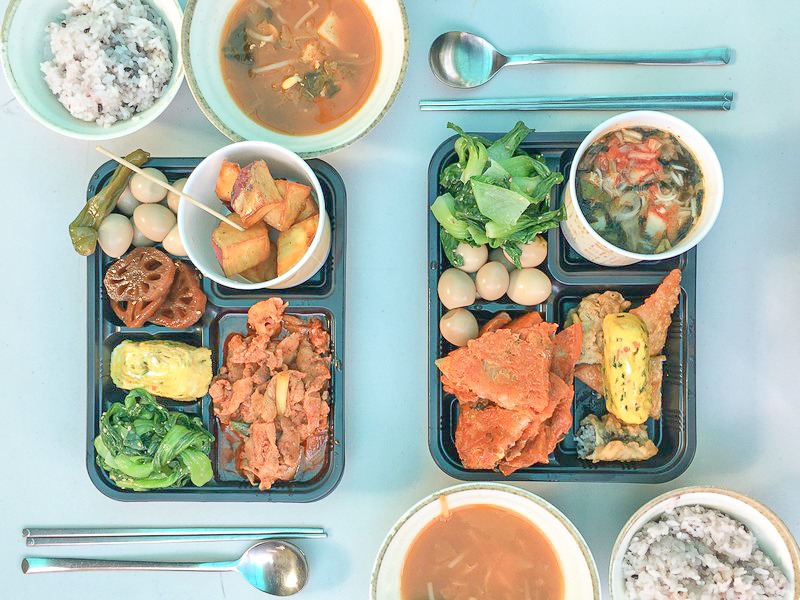
This is a really fun traditional market with a bit of a twist. You can buy traditional style coins and then shop around from vendor to vendor getting food but instead of getting big bowls of soup and platefuls of chicken, you get mini-versions of everything which is ideal if you want to sort of taste test the goods and just see what you like. Most markets serve up great food but it’s big serving sizes and if you don’t know what you’re getting, you might be afraid to try new things. This is a great way to try a lot of tiny dishes of Korean market food. See what you like!
Find out more about Tongin Market
Gyeongbokgung Palace

The largest of the Korean palaces sitting right in front of the Blue House can’t be overlooked of course. Where the Joseon Kings sat and where the presidents of Korean history sat? See them both in the same day if you can. Or the same night. Throughout the year, there are special night viewings of the palaces downtown which can’t be beat. If you’ve seen Gyeongbokgung by day, try to see it by night this time.
Find out more about Gyeongbokgung Palace
Seoul Museum of Modern and Contemporary Art

The Seoul MMCA is a fabulous art museum just east of Gyeongbokgung Palace. There are always amazing exhibitions there and the layout itself and buildings that make up the museum are also really interesting too. Stop in and see what’s going on when you’re in the area.
Find out more about the Seoul Museum of Modern and Contemporary Art
Did you like this post? Pin IT!
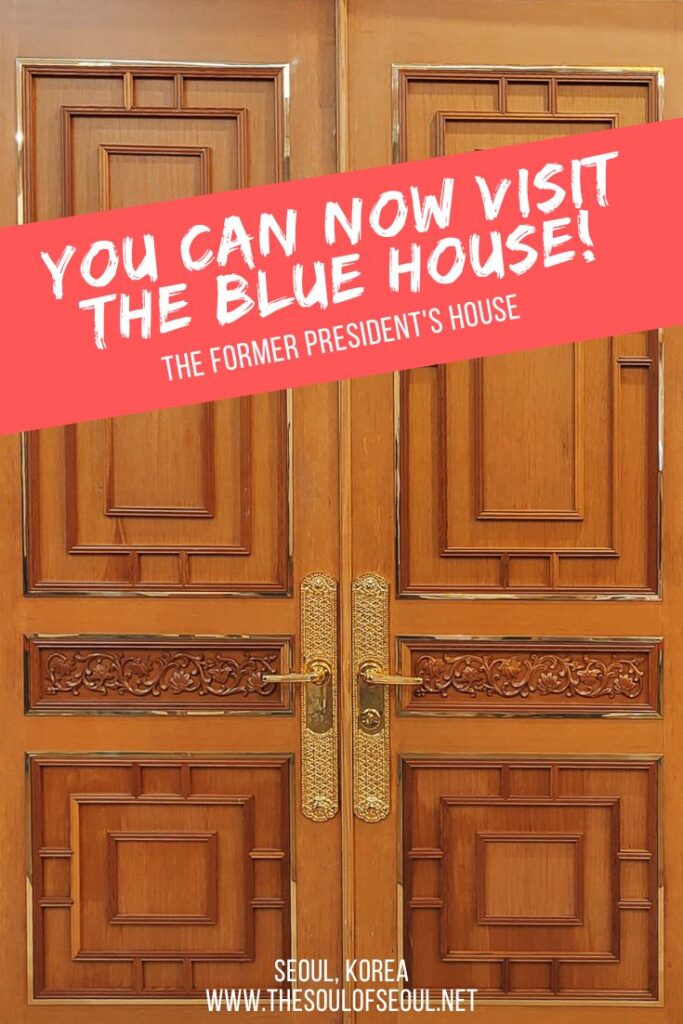
You May Also Like
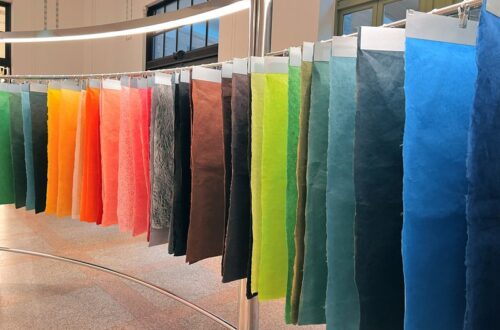
Culture Station Seoul 284: Free Art Exhibitions and Experiences
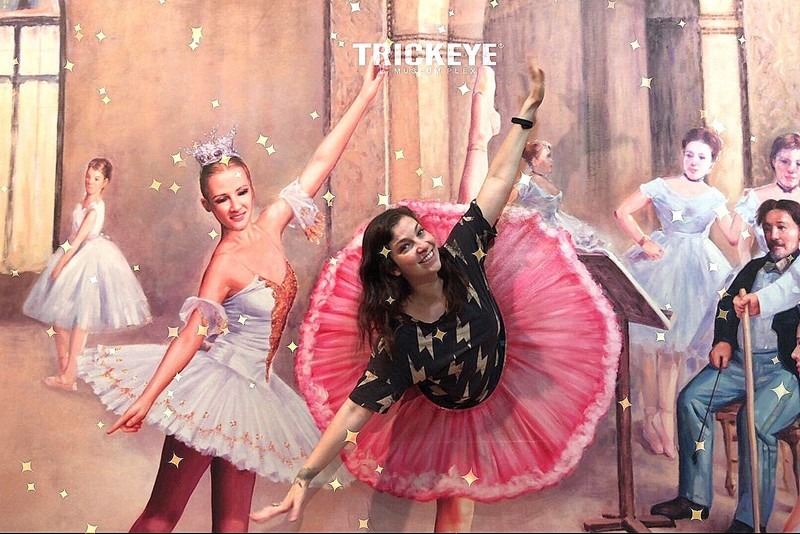
The Trickeye Museum: Augmented Reality

Korea Kids Cafes: Tayo The Friendly Bus
Thanks for providing the online reservation link for residents. Very helpful!
Stephanie von Wellinghoff
Many thanks Alexis, I am so grateful for this very insightful story which helped me a lot. I was lucky to get in, and can only warmly recommend visiting the Blue House. What a wonderful house, and what a proud and culturally rich nation!
Thank you for the info inside your article. Do vistors still need to make online reservations for visiting Blue House now? Where is the gathering place, at the Cheongwadae gate or at the east parking lot besides Gyeongbokgung ? Thank you. Vera
Leave a Reply Cancel reply
Your email address will not be published. Required fields are marked *
Sign me up for the weekly updates newsletter!
This site uses Akismet to reduce spam. Learn how your comment data is processed .

- Jeju Island
- Sejong City
- North Chungcheong Province
- South Chungcheong Province
- North Jeolla Province
- South Jeolla Province
- North Gyeongsang Province
- South Gyeongsang Province
- Restaurants
- Cafes & Bars
- Adventure & Outdoors
- Festivals & Events
- Travel Tips
- Best in Korea
- Weekend Getaway
- Tours & Packages
- Visiting Korea
- Transportation
- Weather & Seasons
- Emergency Situations
- K Drama & Film
- K Beauty & Fashion
- K Tradition
- Expat Services
- Work and Study
- Where to Live
- Shopping Basics
- Foreign Language Hospitals
- Various Issues
- Latest News
Free things To Do In Korea – Top 5 Destinations

South Korea has several beautiful destinations that attract thousands of tourists from around the globe. From mountains and gardens to towers and palaces, every beautiful place in Korea is a must-visit for every travel enthusiast. But what if you are a broke travel lover. Travelling to destinations in a different country can be quite expensive. What if we told you that you don’t necessarily have to spend money to visit beautiful South Korean places. There are several free things to do in Korea. You can enjoy your trip without emptying your bank account.
Scroll down and get to know about free things you can do in Korea.
Gyeongbokgung Palace
Gyeongbokgung Palace is located in Seoul, the capital of South Korea. It was built in 1395 and was renovated several times after that. Now, it is the most beautiful palace out of the five palaces built by the Joseon dynasty. The palace is a complete insight into the magical culture of South Korea. The palace is open to the general public at a very low cost. Furthermore, it is one of the most scenic locations in Seoul.
The palace has 6 gates. Built traditionally, it also has an outer court and an inner court. It also has 2 bridges and 2 pavilions. The palace also holds the National Palace Museum and the National Folk Museum. The guard changing ceremony is a truly majestic sight. Moreover, it is one of the tourist’s favorite things to witness in Seoul. Tour programs take place, especially for foreign visitors. You can also see visitors wearing the traditional Hanbok of Korea. It is an amazing place to get to know more about the royal history of South Korea.
Bukchon Hanok Village
This South Korean traditional village is located in the city of Seoul and on top of the free things to do in Korea. The village has been preserved for 600 years. It clearly shows the 600 old urban village environment. This village has a lot of crooked alleys and traditional Korean houses, Hanoks. With free entry, the village hosts places such as Bukchon Traditional Culture Center, Seoul Intangible Cultural Heritage Center, Donglim Knot Museum, Gahoe Museum, Han Sangsu Embroidery Museum, Bukchon Asian Art Museum, and Owl Museum. If you are interested in culture and history, this is the perfect place to visit for you. Furthermore, the streets of the village transport you back to 600-year old Korea. The whole village has such an antique art feeling about it.
Myeong-dong
Different from the above-listed choices, Myeong-dong is a shopping street in Seoul. The word ‘Myeong-dong’ translates to ‘bright tunnel,’ which is exactly what Myeong-dong is. It is a 0.99 km long, lighted, and lavishly decorated street. The street is one of the most expensive shopping streets in the world. The street features all sorts of shops. From mid-level retail shops to luxury brands, everything can be found here. Around 2 million people visit Myeong-dong every day. Festivals and parades happen at Myeong-dong to attract more tourists. The festival has music, dance, and fashion shows. A lot of brands announce a sale at the time of the Myeong-dong festival, twice a year. The street also has Myeongdong Cathedral and the Myeongdong Nanta Theatre. Although buying stuff from here is costly, you can just visit this street for free, as it is a sight to remember.
Don’t forget to visit Seoul City Wall while you are in Korea.
Cheonggyecheon Stream
Another popular site among tourists, Cheonggyecheon is a 10.9 km long space on a stream in Seoul, South Korea. The site was open to the public in 2005 and ever since then, it has attracted tourists from across the globe. The government created a natural habitat with clean water, which increased natural species in the Cheonggyecheon stream. The place is the perfect affordable spot for friends and family picnics. It is also a good place for a date night for couples. There are several food trucks and booths that are selling cheap and tasty food. There are plants and fishes in the stream. An artificial waterfall is also at one end of it. The whole place is serene and magical.
War Memorial of Korea
This War Memorial of Korea is located in Seoul, the capital of South Korea. The memorial was built in 1994 in place of the previous army headquarters. The purpose of building the Memorial was to promote the idea of peace and avoiding wars. The War Memorial of Korea was built in the hope of establishing peace between North Korea and South Korea after the Korean war. The memorial also pays tributes to all of the people who lost their lives in the Korean War. If you are a fan of visiting emotional destinations, this one’s for you. The free to visit memorial also has displayed several aircraft and weapons.
Check out these top 5 apps to learn Korean.
Satisfy your inner tourist without having a dent in your wallet by doing these free things in Korea.
Related Post
- Royal Palaces Open for Special Evening Admission
- New moms in Seoul to get KRW 1M subsidy for postpartum care
- E-mart Gwangju to be closed in September
SEOUL - north | SEOUL - south
Day Trips from Seoul | Busan | Best Collections
🥁 Festivals ( Seoul • Busan )
5-9 Days Trip Itinerary for First Timers to Seoul, Korea
KoreaToDo has put together a step-to-step detailed trip itinerary for first timers (or any busy travellers with little time for planning) to Seoul , Korea .
It offers ONE central page of information for all your key travel needs to Seoul . They include, where to stay , important mobile apps to use, how to get from Incheon International Airport to your hotel in Myeongdong (the most popular and central place to stay in Seoul ), day-by-day itinerary with detailed transport/walking guides on getting from one attraction to another, recommended tours, shops and restaurants .
The itinerary covers 8 out of 9 Korea's Top 100 Must-Visit Places in Korea (2023-2024) in Seoul (e.g. N Seoul Tower , Gyeongbokgung Palace , Hongdae ), as released by Korean Tourism Organization . It also covers previous attraction winners like Myeongdong .
Itinerary Highlights

🎖 Present/Past Top 100 Must-Visit Destinations in Korea
Before Departure
1. Recommended Activities, Tours & Tickets to pre-purchase before trip (optional)

N Seoul Tower Observatory Ticket
enjoy breathtaking views

Namsan Cable Car Round Trip Ticket (weekdays only & min. 2 pax)
beautiful scenery of Seoul

4G SIM Card (KR Airport Pick Up) - KT OLLEH (3/5/10/20/30 days options)
data, calls & texts/24 hrs pick up

4G Pocket WiFi (KR Airport Pick Up) - SK TELECOM (Unlimited Data)
max 3 devices / 24 hrs pick up
2. Recommended Hotel Location: anywhere near Myeongdong Station , preferably on the same side of the road as ' Nine Tree Hotel Myeongdong ' (i.e. 2 mins walk to airport limousine bus drop off/pick up bus stop , near exit 8 of Myeongdong Station )

★★★ | 8.5 Review Rating

★★★★ | 8.8 Review Rating

★★★★ | 8.6 Review Rating

★★★ | 8.4 Review Rating

★★★ | 8.8 Review Rating

★★★★ | 8.7 Review Rating
3. Download Mobile Apps
a) Korea Subway Info App - Metroid HD (/ KakaoMap/Naver Map )
b) Location/Walking Direction Map - KakaoMap or Naver Map
more travel tips ....
Day 1: Arrived Seoul / Check in / Namsan Seoul Tower / Myeongdong
At Incheon Airport - Arrival Hall (public area after collecting luggage)
Pick up pre-purchased WIFI Router & SIM Card at Incheon Airport (where applicable).
Recommend to purchase T-money Card at any convenience store at the arrival hall of Terminal 1 (T1) or Terminal 2 (T2). Card deposit is ₩4,000. Suggest to top up at least ₩20,000 to ₩30,000 as the airport limousine fare is ₩17,000.
( Th e card ca n be used on airport limousine bus to city, bus, taxi, subway and convenience stores. Top up at any downtown convenience stores or subway stations. More details ... )
💡If you can't get the card at the convenience store, you can walk a bit further to the subway station to purchase the card. Alternatively, you can get it at most convenience stores when you arrived in Myeongdong. Different stores carry different designs and you can pick your favourite too !

Take Airport Limousine Bus from Incheon Airport (T1/T2) to City (i.e. Myeongdong Station Bus Stop )
Bus #: 6015
Interval: 2-6 departures per hour
Duration: 80 mins
Fare: ₩17,000 (discount may apply when used with T-money Card)
No reservation required. Just join the queue and it is free seating on board.

Departing from T1 to Myeongdong Station :
First bus 05:40 | Last Bus 23:00
Walk outside of arrival hall (1F) at Gate 5, look for Bus #6015 to Myeongdong at bus platform 5B.

Departing from T2 to Myeongdong Station :
First bus 05:20 | Last Bus 22:40
Go to Basement 1 for platform No. 28
Tab the T-money Card on boarding.
alternatively, bus ticket can be purchased at counters/machines (recommended) outside arrival hall (T1, 1F), bus waiting area (T2, B1) or by cash to driver.

Refer to Incheon International Airport official website on the latest bus schedule and updates.
Alternative ways to get to Myeongdong from Incheon International Airport :
a) book your Private Airport Transfer by Car OR
b) take the non-stop AREX Airport Railroad express train from Incheon International Airport direct to Seoul Station (Terminal 1: 43 mins / Terminal 2: 51 mins, ₩11,000) and transfer to subway for Myeongdong Station (line 4, 3 mins, 2 stops, ₩1,400). Luggage carrying up/down the stairs might be required. There are taxi stands outside Seoul Station too.
Check into accommodation booked after alighting from Airport Limousine Bus at Myeongdong Station Bus Stop.

N Seoul Tower 남산서울타워

👉 How to get to N Seoul Tower
From N Seoul Tower, take the Shuttle Bus No. 01B to the last stop (i.e. Namsan Yejang Bus Transfer Parking Lot). 13 mins bus ride. From there, walk towards Myeongdong Station , 4 mins.
💡Myeongdong's main shopping area is right at Myeongdong Station's exit 5-8.

Food & Drinks

Street Food

Day 2: Seoul Plaza / Cheonggyecheon Stream / Gwanghwamun Square / Gyeongbokgung Palace / Tosokchon Samgyetang / Bukchon Hanok Village / Insadong
Depart 9:00 or earlier [ in time for the 10:00 changing of guard ceremony at palace]
Using KakaoMap or Naver Map , take an easy leisure walk from your accommodation to Seoul Plaza (15 mins) , located right next to City Hall Station (line 1, exit 5) and facing The Plaza Seoul (hotel). The very popular Lotte Department Store (main branch) and the established Lotte Hotel Seoul that every taxi drivers know even in English are located nearby too.
Seoul Plaza 서울광장

Walk along the straight road, Sejong-daero at the side of Seoul Plaza (passing by City Hall Station , line 1, exit 4/5) towards Gyeongbokgung Palace (20 mins) , bypassing Cheonggyecheon Stream and Gwanghwamun Square along the way . This is a nice, spacious and modern area in Seoul .

Cheonggyecheon Stream 청계천

Gwanghwamun Square 광화문광장

Gyeongbokgung Palace 경복궁
To arrive before 10:00 for the Changing of the Royal Guard Ceremony (20 mins) , followed by the optional Free English Guided Tour at 11:00 (1-1.5 hrs) . No reservation required.
The next Changing of the Royal Guard Ceremony is at 14:00.
For those who wish 'conserve' energy, you can take a taxi direct from Myeongdong to Gyeongbokgung Palace (20 mins, ₩7,200) or subway to Gyeongbokgung Station with 1 transfer (15 mins, ₩1,400). Use subway mobile app Metroid HD or KakaoMetro for the lines and transfer station.

Hanbok Experience (Hanboknam Gyeongbokgung Store)
incl. basic hairstyling & inner skirt

Hanbok Rental (& Photoshoot) Experience by Hanbok That Day
3 mins walk fr. Gyeongbokgung
Walk from Gyeongbokgung Palace to the popular Tosokchon Samgyetang (Ginseng Chicken Soup) Restaurant. 10 mins .
Tosokchon Samgyetang (Ginseng Chicken Soup) 토속촌 삼계탕 @Seochon Village

Seochon (Sejong) Village 서촌마을

Walk back to Gyeongbokgung Station (line 3).
Take the subway from Gyeongbokgung Station to the next stop, Anguk Station (line 3, exit 2). Walk to Bukchon Hanok Village ( 10 mins) .
Bukchon Hanok Village 북촌한옥마을

Walk from Bukchon Hanok Village back towards Anguk Station to Insadong . 3 mins walk from exit 6.
Insadong 인사동

Dinner at one of the quaint restaurants at Insadong .
After dinner, walk back to Anguk Station (line 3). Take the subway back to Myeongdong Station (line 4, 1 line transfer, 10 mins).
Alternatively, at any point along Insadong , you can take a taxi back to Myeongdong (11 mins, ₩5 ,600).
Day 3: Day Trip from Seoul
1. Recommended Day Tours from Seoul

DMZ 3rd Invasion Tunnel & Korea Traditional Boat Voyage Day Tour
river flowing out of North Korea

Everland Day Tour (Admission, Tour Guide & Round Trip Transfer)
Eng./Mandarin speaking guide

Nami Island, Petite France, Italian Village & The Morning Calm Day Tour

Nami Island, Alpaca World & Samaksan Mountain Lake Cable Car Day Tour
longest cable car in Korea!
2. or Pick a Day Trip from Seoul under 3 hours

Day 4: Gwangjang Market / Hongdae / Ikeongdong Hanok Village
Gwangjang Market 광장시장속박물관
Take the subway from Myeongdong Station to Euljiro 4-ga Station (line 2/5, 1 line transfer, 11 mins, exit 4). 5 mins walk to Gwangjang Market .

Take the subway from Euljiro 4-ga Station to Hongik Univ. Station (line 2, 14 mins journey, exit 9).

Hongdae / Kakao Friends Hongdae Flagship Store / Line Friends Hongdae Flagship Store

Seoul Personal Color Group Consulting Experience Using Self-Tester
Hongdae/Garosu-gil Branch

Nail Art & Hairstyling Experience at OLRANG, Hongdae
onsite English translation

Seoul Personal Color & Make-up Analysis in Hongdae
with English speaking expert

Nanta Show Seoul @Myeongdong / Hongdae
Korea's longest running show
Walk back to Hongik Univ. Station. Take the subway to Jongno 3-ga Station (line 1/3/5, 1 line transfer, 23 mins, exit 4/6).

Ikseondong Hanok Village
After visiting the hanok village, take the subway from Jongno 3-ga Station back to Myeongdong Station (line 4, 1 line transfer, 8 mins).
Day 5... : Self-explore based on your interest

Korean Folk Village, Suwon Hwaseong & Suwon Nammun Market Day Tour
Authentic cultural experience

Incheon Day Tour (Ganghwa Luge, Rail Bike, Wolmido & Fairy Tale Village)
enjoy the best of Incheon!

Alpaca World, Nami Island & The Garden of Morning Calm Day Tour
walk with adorable alpacas

Legoland Korea & Samaksan Mountain Lake Cable Car Day Tour
longest 3.61km cable car ride!
2. or Pick a Day Trip from Seoul under 3 hours

3. or Explore more on North of Han River / South of Han River (i.e. Gangnam)

Day before departure: last minute shopping / chilling out
Last Minute Shopping
or Chill Out...

Buy your favourite Korean goodies back home!

Duty free shops, food court & supermarket.

Largest underground mall in Seoul with over 600 shops (GOTO MALL).

For those who must see Gangnam & its underground shopping mall.

cluster of shopping malls that open past midnight.

12 floors of shopping, dining & entertainment experience.

Hairstyling at Franck Provost in Myeongdong
premium hair salon

O HUI & WHOO SPA Myeongdong
25% off skin care kits

Art De La Peau Massage Shop in Myeongdong
K-beauty by the professionals
Last Day: Getting to Airport...
Take the Airport Limousine Bus, #6015 (or #6001) from the same drop off stop ( Myeongdong Station ) to Incheon Airport (T1/T2)
Bus stop location: near exit 8 of Myeongdong Station and right in front of KB Bank.
Duration: 80 mins (T1) / 90 mins (T2)
Fare: ₩17,000 (discount may apply when used with T-money Card)
First bus 04:35 | Last Bus 20:15 ( refer to the information at bus stop for the latest schedule )

Alternatively, you can book on a private car transfer to Airport as well .

Private Transfer: Incheon Airport (ICN) to Seoul (1-3 or more pax/car)
Myeongdong, Hongdae, etc

🎵 SEASONAL HOT PICKS 🎶 Handpicked Experiences from Seoul

2024 KOREA Waterbomb
3 Aug - 31 Aug 2024
live performances, water shows, fun & food!

2024 Songdo Beer Festival (Foreigner VIP Ticket, 1-4 pax)
23 - 31 Aug 2024
draft beer 5,000cc & food

The 61st Suwon Hwaseong Cultural Festival Day Tour
4 - 6 Oct 2024
UNESCO World Cultural Heritage event
♔ KoreaToDo recommends Klook.com , Asia leading in-destination service provider.
Other KoreaToDo Collection that you may like:
Seoul & busan travel itinerary, cherry blossoms & spring flowers travel itinerary in seoul, autumn foliage itinerary, still looking explore koreatodo handpicked collection of:, seoul - north of han river, seoul - south of han river.
I've been to North Korea more than 180 times. Here's how tourists can stay out of trouble.
- Simon Cockerell, a tour operator, has visited North Korea more than 180 times.
- North Korea is opening partially to tourism for the first time since the COVID-19 pandemic.
- He said visiting can be full of pitfalls, like mentioning religion or South Korea.

This as-told-to essay is based on a conversation with Simon Cockerell, a manager at the travel agency Koryo Tours. It has been edited for length and clarity.
The first time I went to North Korea, I thought I knew what to expect.
I was living in Beijing at the time, which was near North Korea. I figured it would be a bit like China or a bit like Russia.
There are definitely those elements, especially if you look for them; but the reality is that it is its own place.
In the two decades since then, I've visited North Korea more than 180 times on various tours and trips — perhaps the most of any Westerner.
North Korea has been closed to visitors for almost five years, but is partially opening up to tourists at the end of 2024.
I've shown hundreds of visitors around the country over the years, and if you've ever thought of visiting, this is how to get the most out of a trip to North Korea.
Careful what you talk about
Interacting with the local people and tour guides in the country is not like meeting aliens — it's actually one of my favorite things to do. The fact remains though, that when you're allowed to interact with them, you need to watch what you talk about.
You don't have to go around praising North Korea's leaders, but openly criticizing Kim Jong Un is a definite no-no.
I'm technically allowed to talk about what I want because I'm not a North Korean, but I am also aware that people there don't have that freedom.
Related stories
So if I go over there and say, "Oh, hey guys, I want to tell you the truth about your leaders, they're actually quite terrible," I'm putting them in a very, very dangerous position.
Tourism is important to some people there, but nothing is more important than the perception of national security.
You can find some common ground to talk about, but you have to work at it because your cultural references are all completely different. So you can't say, "Oh my gosh, did you see 'Deadpool & Wolverine?'" because they will have no idea what you're talking about.
Absolutely no religious talk
This is the most common reason foreigners get detained in North Korea.
Most of the ways tourists get into trouble in North Korea is for acts that have been pre-meditated, like leaving a Bible behind, handing out religious material, or bringing in other contraband.
Don't take in or leave behind contraband
South Korean cultural products like Korean dramas or K-pop songs should definitely be left behind before coming into North Korea.
Other things on the list include religious material and any material about North Korea published abroad, whether it's literature, guidebooks, or videos.
Then you have the usual — no weaponry, no narcotics. North Korea is actually very permissive about alcohol consumption, so that's OK.
Steer clear of comparisons to South Korea
A lot of tourists who come to North Korea have experience in South Korea as well (it's not true that visiting South Korea makes it difficult to enter North Korea).
These people tend to think "Okay, this is where we will connect. Let me tell you about my life in South Korea!"
The problem is that comparisons between North and South Korea tend to favor the South, and you can imagine people don't like to hear it.
When we lead trips, we tell people "If this is your only conversation, maybe learn to have another conversation."
About 90% of the country is off-limits — so don't wander off
Part of my role as a tour operator has been to be a sort of guinea pig, visiting areas of the country the government is thinking of opening to tourism.
I've seen beautiful seasides with basalt columns and other places tourists still haven't been allowed to visit.
Something like 90% of the country is off-limits for tourists both legally and logistically. Horrific poverty means that there's not much infrastructure conducive to tourism outside approved areas.
There are also military bases and operations throughout the country that are off-limits for obvious reasons.
I would definitely advise that tourists stay with their guides at all times, and not wander off for some personal adventure.
Ask permission to take pictures
Everybody likes to take photos, it's quite understandable. As tour operators, we've seen everything you can imagine. Sometimes someone will take a picture when they're not supposed to.
People seem to think it's off to the gulag as soon as you do something wrong. The worst that I've seen is that they get asked to delete it and not do it again — but it's always best not to try to sneak pictures when you think nobody is looking.
At the end of the day, it's very simple — all you have to do is not break the law. In general, if you don't think you can go into any country without breaking their laws, you probably shouldn't be anywhere near that country — especially if the country is North Korea.
It's the most difficult, complicated, thankless, and endlessly fascinating country I've been to.
Watch: North Korea flies warplanes near South Korea border, triggering drills
- Main content
Security Alert May 17, 2024
Worldwide caution.
- Travel Advisories |
- Contact Us |
- MyTravelGov |
Find U.S. Embassies & Consulates
Travel.state.gov, congressional liaison, special issuance agency, u.s. passports, international travel, intercountry adoption, international parental child abduction, records and authentications, popular links, travel advisories, mytravelgov, stay connected, legal resources, legal information, info for u.s. law enforcement, replace or certify documents.
Before You Go
Learn About Your Destination
While Abroad
Emergencies
Share this page:
South Korea
Travel Advisory July 24, 2023
South korea - level 1: exercise normal precautions.
Reissued with obsolete COVID-19 page links removed.
Exercise normal precautions in South Korea.
Read the country information page for additional information on travel to South Korea.
If you decide to travel to South Korea:
- Enroll in the Smart Traveler Enrollment Program (STEP) to receive Alerts and make it easier to locate you in an emergency.
- Follow the Department of State on Facebook and Twitter .
- Review the Country Security Report for South Korea.
- Visit the CDC page for the latest Travel Health Information related to your travel.
- Prepare a contingency plan for emergency situations. Review the Traveler’s Checklist .
Embassy Messages
View Alerts and Messages Archive
Quick Facts
Must be valid at time of entry
One page per stamp
No – From April 1, 2023, to December 31, 2024, the Korean Electronic Travel Authorization (K-ETA) is not required for US citizens traveling for short-term business or tourism purposes.
Embassies and Consulates
U.s. embassy seoul.
188 Sejong-daero, Jongno-gu, Seoul 03141, Korea Telephone: +(82) (2) 397-4114 (from within Korea, dial 02-397-4114) DSN:721-4114 Fax: +(82) (2) 397-4101 Email: [email protected]
U.S. Consulate in Busan
Lotte Gold Rose Building #612, Jungang-daero 993, Jin-gu Busan 47209, Korea Telephone: (+82) 51-863-0731 Email: [email protected]
The Embassy and Consulate are closed on weekends and on American and Korean holidays . Emergency After-Hours Telephone: +82 (2) 397-4114.
Destination Description
Learn about the U.S. relationship to countries around the world.
Entry, Exit and Visa Requirements
- You must have a valid U.S. passport to enter Korea. From April 1, 2023, to December 31, 2024, the Korean Electronic Travel Authorization (K-ETA) is not required for US citizens for stays of 90 days or less that are for tourism or business purposes.
- Visa required for all other purposes, including employment, teaching English, and for stays longer than 90 days.
Exceeding your authorized stay or not possessing a valid visa may result in detention and fines.
- In the event of an overstay, apply for a visa extension from the Korea Immigration Service (KIS) before attempting to leave the country. Also consult with KIS regarding changes in visa category.
Military Personnel/DOD and their families on orders:
- Consult DOD Foreign Clearance Guide , and follow all instructions.
- Enter Korea with DOD identification and travel orders.
- Do not transit other countries such as China without a passport and appropriate visas.
- Family Members/Dependents of Military Personnel/DOD on orders must present upon arrival passports valid for at least six months .
U.S. Government Executive Branch personnel on official business and DOD personnel assigned to the U.S. Embassy (Including family members/dependents):
- Employes assigned to Mission Korea should enter Korea with a diplomatic or official passport and a diplomatic or official Korean visa obtained through their sponsoring agency. Check with your sponsoring agency about other requirements.
- TDY visitors traveling to Korea for up to 90 days on diplomatic or official passports do not require Korean visas and do not require a K-ETA. TDY visitors must obtain country clearance using Department of State's eCC system or DOD APACS system .
HIV/AIDS Restriction: The Department of State is unaware of any such entry restrictions for visitors or foreign residents in Korea.
- Visit the Embassy of Korea website for current visa information. Please read our Customs Information page .
COVID-19 Requirements :
- There are no COVID-related entry requirements for U.S. citizens.
- Travel regulations and restrictions are subject to change, sometimes with little notice. You should review the information available on your nearest Korean Embassy or Consulate’s webpage before traveling.
Safety and Security
Public Demonstrations: Demonstrations and rallies are common in South Korea, particularly near the U.S. Embassy, Seoul City Hall, and areas surrounding military installations. You should avoid areas where demonstrations are taking place and exercise caution in the vicinity of any large gatherings, protests, or rallies. Even demonstrations intended to be peaceful can turn confrontational and escalate into violence.
North Korea (The Democratic People’s Republic of Korea, DPRK): An armistice agreement, monitored by the United Nations, has maintained general peace on the Korean peninsula since 1953. Tensions occasionally flare up because of provocative acts by North Korea, including ballistic missile and nuclear tests and limited armed incursions into ROK-held territory. Some provocations have escalated into geographically limited skirmishes. South Korea routinely conducts military training exercises and civil defense drills. North Korea often issues strongly-worded and threatening messages, frequently in connection with these exercises. Please see our Fact Sheet on North Korea .
Weather-related Events: Heavy rains and flooding may occur during the June - August monsoon season or the May - November typhoon season. See general information about natural disaster preparedness at the U.S. Federal Emergency Management Agency (FEMA) website.
Enroll in the Smart Traveler Enrollment Program ( STEP ): To receive security messages by email and make it easier to locate you in an emergency, register in STEP.
If the Embassy becomes aware of any specific and credible threat to the safety and security of U.S. citizens, we will inform you through our website, social media, and email.
Crime: For most visitors, South Korea remains a very safe country. Common crimes occur more frequently in major metropolitan areas, tourist sites, and crowded markets.
- Take routine safety precautions.
- Pay attention to your surroundings.
- Report any concerns to local police.
Violent crime is not common; however, remain vigilant:
- Exercise caution in crowded entertainment, nightlife, and shopping districts.
- If traveling at night, consider traveling in groups.
- Use legitimate taxis or public transportation only.
Victims of Crime: Call 112 for emergency assistance or to report a crime to local authorities. Call 02-397-4114 to contact the U.S. Embassy. We can:
- Help you find appropriate medical care;
- Assist you in reporting a crime to police;
- Contact relatives or friends on your behalf;
- Explain Korean judicial procedures in general terms;
- Provide an emergency loan for repatriation to the United States and/or limited medical support in cases of destitution;
- Help you find accommodations and flight arrangements to the United States;
- Replace a lost or stolen passport.
Sexual Assault: The Embassy regularly receives reports of sexual assault from U.S. citizens. Most cases involved young women assaulted by acquaintances they met on social media, dating, or messaging apps. Alcohol is often involved, and Korea’s low overall crime can create a false sense of security. Specialized hospital units and police are available in South Korea to assist victims, however services in English and responsiveness to the crime are not always consistent. In general, sex crimes are not punished as harshly in South Korea as in the United States and the road to prosecution is a challenging one for victims.
Domestic Violence: Victim’s assistance resources or battered women’s shelters exist in Seoul and other urban areas but may be limited in rural areas. Most are government administered and require a police referral. Call 112 for emergency assistance or 1366 to reach Korea’s 24-hour domestic violence hotline. Victims may also contact the Embassy, tel. (+82) 2-397-4114.
Lost or Stolen Passports: If your passport is stolen, file a report at the nearest police station.
Don't buy counterfeit and pirated goods, even if widely available. It is against South Korean law to purchase these goods and against U.S. law to bring them into the United States. The Computer Crime and Intellectual Property Division in the U.S. Department of Justice has more information.
Avoid fraud and scams: See Department of State and FBI websites for more information.
Tourism: The tourism industry is generally regulated and rules with regard to best practices and safety inspections are regularly enforced. Hazardous areas/activities are identified with appropriate signage and professional staff is typically on hand in support of organized activities. In the event of an injury, appropriate medical treatment is widely available throughout the country. Outside of a major metropolitan center, it may take more time for first responders and medical professionals to stabilize a patient and provide life-saving assistance. U.S. citizens are encouraged to purchase medical evacuation insurance. See our webpage for more information on insurance providers for overseas coverage .
Local Laws & Special Circumstances
Criminal Penalties: While in Korea, you are subject to local laws. If you violate Korean laws, you may be expelled, arrested, or imprisoned. Be aware that:
- Immigration violations can lead to arrest, fines, and deportation.
- There is little tolerance for illegal drugs.
- If you mail illegal drugs to/ from Korea, you will be prosecuted.
- Commercial disputes may lead to criminal charges being filed under local laws.
Be aware that some crimes are prosecutable in the United States, regardless of local law. For examples, see our website on crimes against minors abroad and the Department of Justice website.
Arrest Notification: If you are arrested or detained, ask officials to notify the Embassy. See our webpage for further information.
SPECIAL CIRCUMSTANCES
Dual Nationality and Military Conscription: Dual national males (including U.S. service members) may be subject to compulsory military service. If you have family ties to South Korea, consult the nearest Korean Embassy or Consulate or the Korean Military Manpower Administration regarding potential citizenship obligations before entering South Korea .
Passport Seizures and Exit Bans: If you are involved in a criminal investigation or commercial dispute, authorities may seize your passport and/or block your departure. While we may reissue a passport, we cannot lift an exit ban.
Exit Permits: Exit permits are not generally required. However, if a parent requests a travel restriction on his/her child, Korean authorities may prevent that child from departing even when traveling with the other parent. As of June 1, 2020, foreigners who are long-term residents of the ROK are required to obtain a re-entry permit four business days prior to departure from Korea. The permits are available online through an e-application at the www.hikorea.go.kr website.
International Child Abduction: See our website for information related to the prevention of international child abduction .
Working in South Korea: If working, including teaching or modeling, you must enter with the appropriate work visa. It is not possible to change your visa status without leaving the country. If you begin work without the appropriate visa, you may be arrested, fined, and/or deported. If you are working without a valid work permit and get into a contractual dispute with your employer, you have little legal recourse.
Students: See our Students Abroad page and FBI travel tips .
Women Travelers: See our travel tips for Women Travelers .
ROK National Security Law: Authorities may detain, arrest, and imprison persons believed to have committed acts intended to endanger the “security of the state,” including statements deemed to praise the political system and/or officials of the DPRK.
Customs Regulations: There is strict enforcement of regulations on importing and exporting items such as firearms, narcotics and prescription drugs, non-prescription health supplements, radio equipment, and gold. Importation of materials deemed to be obscene, subversive, or harmful to the public peace is also restricted.
- Amphetamines are illegal in Korea. Do not bring amphetamines or other prescription narcotics into the country without obtaining advance permission in writing from the Ministry of Food and Drug Safety. See the U.S. Embassy Seoul, Health Information page .
- Traveling with Pets: See Korea’s Animal and Plant Quarantine Agency website.
See the Korean Customs Regulations website for complete information.
LGBTI Travelers: Consensual same-sex sexual activity is not criminalized. Korea is a conservative country in regards to LGBTI issues. However, there are an increasing number of LGBTI-oriented clubs, festivals and NGOs advocating for LGBTI issues. The ROK National Human Rights Commission Act prohibits discrimination against individuals because of their sexual orientation, but there are no laws specifying punishment for persons found to have discriminated on this basis. Same-sex marriages are not recognized. Korean citizens can legally change their gender identity.
See our LGBTI Travel Information page and section 6 of the Department of State's Human Rights report for further details.
Mobility Issues: Korean law mandates access to transportation, communication, and public buildings. Cross walks typically have audio and visual signals. Older buildings and streets are generally less accessible than modern ones. Metro cars and buses in Seoul offer priority seating for the disabled and most metro stations have elevators. Metro platforms include Korean Braille information. Contact individual bus companies and subway associations for specific information. Foreign residents are eligible for disability assistance from local ward offices; assistance varies by ward.
Quality of Care : Western-style medical facilities are available in most large cities. However, not all doctors and staff, are proficient in English. A list of hospitals and medical specialists who speak English is available on our website. For emergency ambulance service dial 119. Ambulance services are widely available. For information on medical evacuation from South Korea, please see the State Department’s brochure on Air Ambulance/MedEvac/Medical Escort Providers .
We do not pay medical bills. Be aware that U.S. Medicare does not apply overseas. Verify your health insurance coverage before traveling overseas. See our webpage for information on insurance providers for overseas coverage . In most cases, health care providers will require payment in advance of treatment or will not release a patient until hospital bills are paid. We strongly recommend supplemental insurance to include coverage for medical evacuation.
Medication: Carry prescription medication in original packaging, along with your doctor’s prescription. Most prescription medications, except psychotropic types, can be obtained at Korean pharmacies (brand names often differ). Local pharmacies will require a prescription from a Korean doctor.
Update vaccinations recommended by the U.S. Centers for Disease Control and Prevention.
For further health information go to:
- World Health Organization
- U.S. Centers for Disease Control and Prevention (CDC)
Travel and Transportation
Road Conditions and Safety: Roads are well-paved, traffic signals functional, and most drivers comply with basic traffic laws. South Korea has a significantly higher traffic fatality rate than the United States. Causes of accidents include excessive speed, frequent lane changes without signaling, running red lights, aggressive bus drivers, and weaving motorcyclists. It is recommended that you photo document any traffic accidents.
Be aware that motorcyclists may drive on sidewalks, and drivers do not always yield to pedestrians in marked crosswalks.
Traffic Laws include:
- International driving permit (or ROK license) is required for all drivers.
- Left-hand turns prohibited except with green arrow.
- Seat belts and car seats are mandatory.
- Motorcycle passengers must wear helmets.
- Automobile drivers are presumed to have some fault in accidents involving pedestrians.
- Expect long waits at police stations while police investigate any incidents.
- Police may take your passport or detain you during an investigation.
- Even if negligence is not proven, criminal charges may be filed.
- Blood-alcohol content of 0.03% or higher is considered legally intoxicated.
- Police regularly set up DUI checkpoints. Drivers are required to submit to breathalyzer tests; refusal can result in cancellation of your license.
For information about driver's permits, vehicle inspection, road tax, and mandatory insurance, refer to our Road Safety page . You may also visit the Korea Tourism Organization (KTO) website.
AVIATION SAFETY OVERSIGHT: The U.S. Federal Aviation Administration (FAA) has assessed the Government of the Republic of Korea's Civil Aviation Authority as being in compliance with International Civil Aviation Organization (ICAO) aviation safety standards for oversight of the ROK's air carrier operations. Further information may be found on the FAA's Safety Assessment Page .
Maritime Travel: Mariners planning travel to South Korea should check for U.S. maritime advisories and alerts at the U.S. Department of Transportation’s Maritime Security Communications with Industry Web Portal . Information may also be posted to the U.S. Coast Guard homeport website and as a broadcast warning on the National Geospatial-Intelligence Agency’s website .
For additional travel information
- Enroll in the Smart Traveler Enrollment Program (STEP) to receive security messages and make it easier to locate you in an emergency.
- Call us in Washington, D.C. at 1-888-407-4747 (toll-free in the United States and Canada) or 1-202-501-4444 (from all other countries) from 8:00 a.m. to 8:00 p.m., Eastern Standard Time, Monday through Friday (except U.S. federal holidays).
- See the State Department’s travel website for the Worldwide Caution and Travel Advisories .
- Follow us on X (formerly known as "Twitter") and Facebook .
- See traveling safely abroad for useful travel tips.
South Korea was cited in the State Department’s 2022 Annual Report to Congress on International Child Abduction for demonstrating a pattern of non-compliance with respect to international parental child abduction. Review information about International Parental Child Abduction in South Korea. For additional IPCA-related information, please see the International Child Abduction Prevention and Return Act ( ICAPRA ) report.
Travel Advisory Levels
Assistance for u.s. citizens, south korea map, learn about your destination, enroll in step.

Subscribe to get up-to-date safety and security information and help us reach you in an emergency abroad.
Recommended Web Browsers: Microsoft Edge or Google Chrome.
Check passport expiration dates carefully for all travelers! Children’s passports are issued for 5 years, adult passports for 10 years.
Afghanistan
Antigua and Barbuda
Bonaire, Sint Eustatius, and Saba
Bosnia and Herzegovina
British Virgin Islands
Burkina Faso
Burma (Myanmar)
Cayman Islands
Central African Republic
Cote d Ivoire
Czech Republic
Democratic Republic of the Congo
Dominican Republic
El Salvador
Equatorial Guinea
Eswatini (Swaziland)
Falkland Islands
France (includes Monaco)
French Guiana
French Polynesia
French West Indies
Guadeloupe, Martinique, Saint Martin, and Saint Barthélemy (French West Indies)
Guinea-Bissau
Isle of Man
Israel, The West Bank and Gaza
Liechtenstein
Marshall Islands
Netherlands
New Caledonia
New Zealand
North Korea (Democratic People's Republic of Korea)
Papua New Guinea
Philippines
Republic of North Macedonia
Republic of the Congo
Saint Kitts and Nevis
Saint Lucia
Saint Vincent and the Grenadines
Sao Tome and Principe
Saudi Arabia
Sierra Leone
Sint Maarten
Solomon Islands
South Africa
South Sudan
Switzerland
The Bahamas
Timor-Leste
Trinidad and Tobago
Turkmenistan
Turks and Caicos Islands
United Arab Emirates
United Kingdom
Vatican City (Holy See)
External Link
You are about to leave travel.state.gov for an external website that is not maintained by the U.S. Department of State.
Links to external websites are provided as a convenience and should not be construed as an endorsement by the U.S. Department of State of the views or products contained therein. If you wish to remain on travel.state.gov, click the "cancel" message.
You are about to visit:
- PRO Courses Guides New Tech Help Pro Expert Videos About wikiHow Pro Upgrade Sign In
- EDIT Edit this Article
- EXPLORE Tech Help Pro About Us Random Article Quizzes Request a New Article Community Dashboard This Or That Game Happiness Hub Popular Categories Arts and Entertainment Artwork Books Movies Computers and Electronics Computers Phone Skills Technology Hacks Health Men's Health Mental Health Women's Health Relationships Dating Love Relationship Issues Hobbies and Crafts Crafts Drawing Games Education & Communication Communication Skills Personal Development Studying Personal Care and Style Fashion Hair Care Personal Hygiene Youth Personal Care School Stuff Dating All Categories Arts and Entertainment Finance and Business Home and Garden Relationship Quizzes Cars & Other Vehicles Food and Entertaining Personal Care and Style Sports and Fitness Computers and Electronics Health Pets and Animals Travel Education & Communication Hobbies and Crafts Philosophy and Religion Work World Family Life Holidays and Traditions Relationships Youth
- Browse Articles
- Learn Something New
- Quizzes Hot
- Happiness Hub
- This Or That Game
- Train Your Brain
- Explore More
- Support wikiHow
- About wikiHow
- Log in / Sign up
- Destinations
- Asia Travel
How to Visit South Korea
Last Updated: August 13, 2024 References
This article was co-authored by Allyson Edwards . Allyson Edwards graduated from Stanford University with a BA in International Relations. Afterwards, she went on to facilitate International partnerships with agencies in over twenty countries, and has consulted for companies in industries across education, fintech, and retail. There are 18 references cited in this article, which can be found at the bottom of the page. This article has been viewed 58,121 times.
Planning to mark a trip to South Korea off your bucket list? You’ll need to plan ahead to make sure you have your passport ready and work to get the best rates on airline tickets. From there, you’ll need to know some basics about the country, like their currency, public transit, and some awesome places to visit. Once you have all that covered, you are ready for a memorable experience. Adventure awaits!
Preparing for Your Trip

- You’ll want to start on this early because it can take up to 8 weeks to receive your new passport. Even if you choose to pay the extra fee to have it expedited, it can still take 2-3 weeks to receive. [2] X Research source

- Online websites and videos are a good resource to help you get familiar with basic phrases. [4] X Research source
- Translator apps that you can download to your phone are a super helpful tool for more difficult conversations. [5] X Research source

- Summers are wet with monsoon rains, so you will want to bring your rain gear if traveling in July or August. [7] X Research source
- Winters are extremely cold but dry, with temperatures dropping below 0°. If traveling December - March, you won’t need snow boots, but may want to bring your parka! [8] X Research source
Booking Travel and Accommodations

- Airline companies often run special promotions, so booking directly through them during those times is a good idea.
- Don’t forget to check travel companies like Orbitz and Expedia because sometimes they end up having really good deals. They also offer special packages that include airfare, hotel, and transportation, which may save you some money. [10] X Research source

- If you want to stay somewhere more modern or upscale, like a luxury hotel or resort, you’ll want to book in advance. Don’t wait until the last minute as they usually book up fast or charge higher prices for late bookings. [11] X Research source
- For a uniquely Korean experience, stay in a hanok, which is traditional Korean housing. They feature privacy, incredible architecture, and beautiful gardens. [12] X Research source It’ll cost you a little more to stay here, but you’ll be glad you had the experience!
- If you just need a place to rest a little while you are on the go, check out a Jjimjilbang, which is basically a community sauna with a heated floor that will cost you the equivalent of just a few dollars to sleep on.

- Renting a car to drive yourself might not be a great idea--road systems are complex and traffic is dense. Plus, you have to be over 21 to have an international driver’s permit. [13] X Research source
Making the Most of Your Vacation

- The exchange rate is always changing, so check the current rate when you arrive to give you a good idea of how much money you should convert.
- Most major credit cards are accepted in larger cities, but be aware that you may be charged a foreign transaction fee for using them. [15] X Research source

- Entry will cost you 8000₩ for adults, 4000-6000₩ for youth, and children under 6 years old are free.
- Take a break to play and go on a ride on the ferris wheel for a small additional fee!

- For the most value for your money, try YongPyong Resort, which features over 15 miles (24 km) of slopes and 15 lifts. Day ticket prices are about 76,000₩ for adults and 61,000₩ for children.

- This outing will cost you about 2000₩ for adults, 1200₩ for teenagers, and 600₩ for children. They do offer group rates as well. [19] X Research source

- Doota shopping mall and 10 Corso Como offer super-trendy shopping, while Namdaemun Market is home of the biggest traditional Korean market for local and handmade goods.
Community Q&A
- Planning an international trip can be overwhelming, but don't worry! Creating a detailed plan and checklist, and marking items off as you go, will get you trip-ready in no time! Thanks Helpful 0 Not Helpful 0

- The DMZ (De-Militarized-Zone), the border to North Korea, is off-limits. It can only be visited through official DMZ tours that need to be booked. Thanks Helpful 0 Not Helpful 0
- Do not take pictures of or record military personnel. Thanks Helpful 0 Not Helpful 0
You Might Also Like

- ↑ https://www.worldtravelguide.net/guides/asia/south-korea/passport-visa/
- ↑ https://passportinfo.com/passport-renewal/
- ↑ https://www.fluentu.com/blog/korean/korean-travel-phrases/
- ↑ https://www.fluentu.com/blog/korean/online-korean-course/
- ↑ https://www.fluentu.com/blog/korean/korean-translator-app/
- ↑ https://www.selectiveasia.com/south-korea-holidays/weather
- ↑ https://www.cnbc.com/2017/05/11/whens-the-best-time-to-book-a-flight.html
- ↑ https://www.nytimes.com/2011/02/27/travel/27prac-vacationpackage.html
- ↑ https://www.smartertravel.com/stay-south-korea-lodging-tips/
- ↑ http://travel.cnn.com/seoul/visit/5-reasons-stay-hanok-while-traveling-korea-813242/
- ↑ https://www.worldtravelguide.net/guides/asia/south-korea/getting-around/
- ↑ https://www.worldtravelguide.net/guides/asia/south-korea/money-duty-free/
- ↑ https://www.nerdwallet.com/blog/credit-cards/foreign-transaction-fee/
- ↑ https://www.cnn.com/travel/article/south-korea-beautiful-places/index.html
- ↑ https://www.forbes.com/sites/davidbressan/2018/02/10/winter-olympics-geology-perfect-ski-slopes-are-the-results-of-250-million-years-of-earths-history/#50a3605e4a89
- ↑ http://www.art-and-archaeology.com/korea/gyeongju/an01.html
- ↑ https://thisiskoreatours.com/project/anapji-wolji-pond/
- ↑ https://www.cnn.com/travel/article/worlds-best-shopping-cities/index.html
About This Article

- Send fan mail to authors
Reader Success Stories
Maisha Thalia
Sep 30, 2018
Did this article help you?
Sep 5, 2018

Featured Articles

Trending Articles

Watch Articles

- Terms of Use
- Privacy Policy
- Do Not Sell or Share My Info
- Not Selling Info
wikiHow Tech Help Pro:
Level up your tech skills and stay ahead of the curve
Top Recommendation
- Shows & Concerts
- Sightseeing tickets & passes
- Airport transfer
Private Driver
- 1 Day Tours
- Multi-day tours
- Wifi, SIM card
- Around Seoul
- Chungcheong-do
- Family-friendly
- Nature & Adventure
- History & Culture
- Food & Shopping
- Kpop & Kdrama
- Beauty & Relaxation
- Sports & Wellness
- Under USD $50
- USD $50~USD $100
- Above USD $100
- Private Tour
INK KPOP Concert Ticket
Gangnam festival yeongdong daero ticket, upcoming k-pop concert, wifi, sim, esim card, stay communicated in korea, the best 1 day tours all around korea>, korean culture activities.
2024 Incheon KPOP INK Concert Ticket with Day Tour or 2D1N Tour (7th Sep Sat)

SBS MTV The Show KPOP Ticket Package (Every Tuesday)

Hidden Gems of Korean Gen-Z Premium Hanok Stay in Soyang Gotaek with K pop and K drama Filming Locations (Jeonju Wanju 2D1N)

K Beauty K POP Makeup and Hair Styling In Seoul Gangnam (Tue to Sat)

KPOP Dance Class – in Seoul (incl. video shooting & editing) (Mon ~ Sat)

SKT Pocket Wifi Egg Router Long Term Rental – 4G LTE Unlimited Data in Korea by SKT
Our recommendation, season activities.
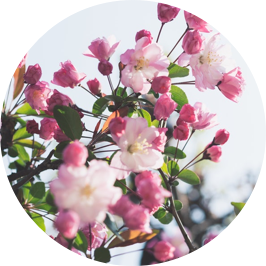
Watch Videos

Floral Design Class – in Seoul Biggest Flower Market

Pocket Wifi Egg Router Rental With 4G LTE Unlimited Data in Korea by SKT

KPOP Dance Class – In Hongdae Seoul (Mon,Wed,Fri)

Learn Traditional Korean Dance Seen in KDRAMA and KPOP

Kayak, Paddleboard, Windsurfing in Han River

Fun Ceramics Class In Seoul – Flute or Cup Making

Gangwondo Tour – PRIVATE Car and Driver – Gangneung, Mt. Seorak, Sheep Farm, PyeongChang (Tourguide option)

Incheon Airport from/to Ski Resort – PRIVATE Van (Vivaldi, Yongpyong, Alpensia, etc)

Around Seoul Tour – PRIVATE Car and Driver – Nami island, Paju DMZ and all around Seoul (Tour Guide option)

Everland and Caribbean Bay – PRIVATE Car and Driver (Pick-up, Drop-off)

Seoul City Tour – PRIVATE Car and Driver (Tour Guide option)

Gimpo Airport – Private Van Transfer to/from Seoul

Parasite Movie Filming Location Tour in Seoul

Make your own KPOP Song Recording in Studio Seoul

Nanta Drum Experience with KPOP in Seoul

Best of K-Pop Concerts in Korea 2024 (SBS Gayo Daejeon, INK, Yeongdong Daero KPOP concert and so on)

2024 K-World Dream Awards (22nd Aug) is coming

2024 INK Kpop Concert – Incheon K-POP Concert (7th Sep) is coming

2024 Gangnam Festival – Yeongdong Daero K-POP Concert (29 Sep) is coming

2024 Dream Concert (19th Oct) is coming

Top 6 Places to visit in Busan
Customer reviews, 2024 kworld dream awards kpop concert ticket (22nd aug).
Around Seoul Tour - PRIVATE Car and Driver - Nami island, Paju DMZ and all around Seoul (Tour Guide option)
Incheon Airport - Private Van Transfer to/from Seoul
2024 Coca Cola KWAVE KPOP Concert INKIGAYO Ticket Bus Package (June 2nd)
SKT Pocket Wifi Egg Router Long Term Rental - 4G LTE Unlimited Data in Korea by SKT
Follow KoreaTravelEasy

This Coupon will be send to email you entered.
- Meetings & Events
- Select Language 简体中文 繁體中文(香港) 繁體中文(臺灣) India (English) Bahasa Indonesia 한국어 ภาษาไทย Tiếng Việt Singapore (English) Philippines (English) Malaysia (English) Australia/New Zealand (English) Français Deutsch Italiano Español United Kingdom (English) Nordic countries(English) Canada (English) Canada (Français) United States (English) Mexico (español) Português العربية Japan(日本語) Global (English)
- India (English)
- Bahasa Indonesia
- Singapore (English)
- Philippines (English)
- Malaysia (English)
- Australia/New Zealand (English)
- United Kingdom (English)
- Nordic countries(English)
- Canada (English)
- Canada (Français)
- United States (English)
- Mexico (español)
- Global (English)
- Fujiyoshida
- Shimonoseki
- Ishigaki Island
- Miyako Island
- Kerama Island
- Tokyo Island
- Koka & Shigaraki
- Hida Takayama
- Ginza, Nihonbashi
- Beppu & Yufuin (Onsen)
- Ginzan Onsen
- Nagasaki Islands

- Kumano Kodo
- Shikoku Karst
- Amami Oshima
- Hachimantai
- Omihachiman
- Aizuwakamatsu

- Diving in Japan
- Skiing in Japan
- Seasonal Flowers in Japan
- Sustainable Outdoors
- Off the Beaten Track in Japan
- Scenic Spots
- World Heritage
- Home Stays & Farm Stays

- Japanese Gardens
- Japanese Crafts
- Temple Stays
- Heritage Stays
- Festivals and Events
- Theater in Japan
- Japanese Tea Ceremony
- Cultural Experiences in Japan
- Culture in Japan

- Local Cuisine Eastern Japan
- Local Cuisine Western Japan
- Local Street Food
- Japan's Local Ekiben
- Japanese Whisky
- Vegetarian and Vegan Guide
- Sushi in Japan Guide
- Japanese Sake Breweries

- Art Museums
- Architecture
- Performing Arts
- Art Festivals
- Japanese Anime and Comics
- Japanese Ceramics
- Local Crafts

- Scenic Night Views
- Natural Wonders
- Theme Parks
- Samurai & Ninja
- Iconic Architecture

- Wellness Travel in Japan
- Japanese Ryokan Guide
- A Guide to Stargazing in Japan
- Relaxation in Japan
- Forest Bathing (Shinrin-yoku)

- Experiences in Japan
- Enjoy my Japan
- National Parks
- Japan's Local Treasures
- Japan Heritage
- Snow Like No Other

- Visa Information
- Getting to Japan
- Airport Access
- COVID-19: Practical Information for Traveling to Japan
- Anime Tourism
- Countryside Stays
- Accessible Tourism
- Hokkaido Great Outdoors
- Scenic World Heritage in Tohoku
- Shikoku’s Nature and Traditions
- Southern Kyushu by Rail

- Traveling by Rail
- How to Travel by Train and Bus
- JR Rail Passes
- Scenic Railways
- Renting a Car
- Sustainable Travel in Japan
- Travel Brochures
- Useful Apps
- Online Reservation Sites
- Eco-friendly Accommodation
- Luxury Accommodations
- Traveling With a Disability
- Hands-free Travel
- How to Book a Certified Tour Guide
- Volunteer Guides

- Japanese Manners
- Spring in Japan
- Summer in Japan
- Autumn in Japan
- Winter in Japan
- Cherry Blossom Forecast
- Autumn Leaves Forecast

- Japan Visitor Hotline
- Travel Insurance in Japan
- Japan Safe Travel Information
- Accessibility in Japan
- Vegetarian Guide
- Muslim Travelers
- Safety Tips

- Visa Info for Canadians
- Tour Operators in Canada
- Brochure Request
- Know Before You Go
- JR Pass Retailers
- Regional Rail Passes
- Rail Travel FAQ
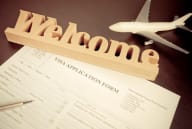
- Inspiration
- Travellers' Blog
- Japan Through the Eyes of Canadian Journalists
- Signature Journeys by Canadian Celebrities

- MICE Newsletter
- Notice of Campaigns
- What's New

My Favorites
${v.desc | trunc(25)}
Planning a Trip to Japan?
Share your travel photos with us by hashtagging your images with #visitjapanjp
Discover Hidden Gems ans Win a Round-trip to Japan with the "Find Japan's Treasures” Campaign!
Delve beyond what you already know about Japan! The “Find Japan's Treasures” campaign (August 20-October 20) is an initiative by the Japan Shopping Tourism Organization, which introduces the charm of local Japan. Simply read an article about one of Japan's lesser known cities and answer a questions, and you'll be entered for a chance to win a round-trip ticket to Japan with Japan Airlines!
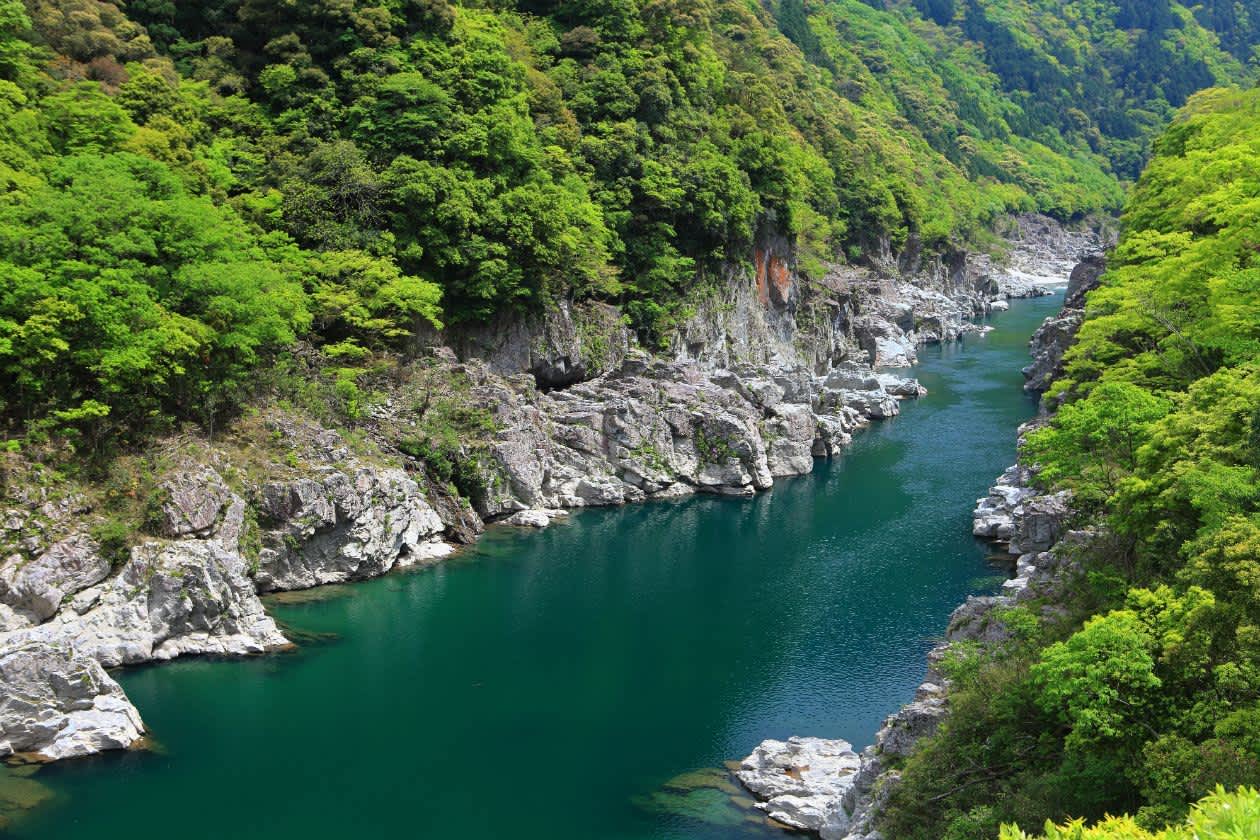
More details, including how to enter, can be found on the official campaign page , and in the press release (attached below).
[Partner's Information]
- Tradition & Culture (34)
- Festivals & Events (31)
- Nature (28)
- Winter (17)
- Transportation (16)
- Spring (13)
- Outdoor Activities (12)
- Food & Drink (12)
- Summer (11)
- Anime & Pop Culture (8)
- Accommodation (7)
- Sustainability (7)
- Relaxation (3)
- Relaxation (1)
- Previous Article
- Back to Overview
- Canada home
Please Choose Your Language
Browse the JNTO site in one of multiple languages

IMAGES
COMMENTS
Korea is one of the most famous tourist destinations in the world, thanks to the popularity of its pop culture (Hallyu). Almost everyone I know wants to visit, or live, in this country. However, once you're here, traveling around can really add up - but it doesn't have to. This is how you can travel around Korea for free.
Aug 10, 2023 2 min. Discover the incredible opportunities to travel for free in Korea. From long-term programs to short promotional trips, explore Korea like never before! Living in a new country offers an exhilarating adventure of discovering hidden gems and iconic landmarks. For foreigners residing in Korea, many fantastic tourism programs ...
There are plenty of free things to do in Seoul, and below are fifteen unique options to get you started. Jump to: ️ Basics of Travel in South Korea. Seoullo 7017. Ikseon-dong Hanok Street. National Museum of Korea. Dongdaemun Design Plaza (DDP) Yeouido Hangang Park. Cheonggyecheon Stream.
5. Take advantage of Korea's world-class public transportation. Korea's subways, trains and buses are clean, convenient and efficient. It can sometimes seem like a new station is added to the Seoul metro every month, and the rail and intercity bus networks will take you to every corner of the country.
The K-ETA (Korean Electronic Travel Authorisation) is an online travel authorisation that visa-free foreign visitors aged 18 to 65 must obtain before entering the Korea for tourism, visiting relatives, participating in events or meetings, and for business purposes other than profitable activities.
Free K-Culture Experience vouchers and gift cards for travelers visiting Korea from September to November 2024.Book your Ticket to Korea and JOIN NOW! ... In celebration of 'Visit Korea Year 2023-2024', the Ministry of Culture, Sports and Tourism and the Korea Tourism Organization present the KOREA BUCKET LIST Campaign. ...
This depends on your style of travel, but a mid-range budget for a solo traveler spending 10 days in South Korea would be about $65USD per day. If you're willing to stay in cheap hostels, stick to more free activities in Seoul, and eat local foods, then you could get it down to maybe $40USD per day.
A Korean Electronic Travel Authorization (K-ETA) may be required for some nationalities, and a visa is needed for others. To check your eligibility and find out how long you can stay in South Korea, please use the official K-ETA Application Eligibility Guide. Make sure to apply for a K-ETA at least 72 hours (or even earlier) before travel.
The Cheong-gye-cheon Museum is also free if you'd like to learn about the site's complex history. 20. See the Moonlight Rainbow Fountain's water show. From April to October, people come to the Banpo Bridge section of the Han River Park to see the Moonlight Rainbow Fountain water show.
Round-trip tickets to Korea, along with accommodation and travel insurance. A mandatory joint tour for one night on May 21. A customised package tour for three nights, tailored based on your story. The South Korea trip is scheduled from May 21 to May 24, 2024, with flexibility depending on current circumstances.
If you travel more like a local though, opting for subways and buses and eat local food, you can definitely have a pretty budget-friendly trip to Seoul. Most major historical or cultural attractions in Korea are either free or cost less than W5,000 to visit. Of course, amusement parks and tickets to K-pop concerts can again be expensive in Korea.
If you are planning Korea travel whether it's on a budget or not, it's such a good tip to experience free guided tours! There are several websites or blog posts introducing free tours on the Internet. However, they are tip-based tours. It's not a free tour unless you're a Scrooge who can ignore the guide asking for a tip at the end of the tour.
Other popular museums that are free: National Museum of Korea, National Folk Museum of Korea (inside Gyeongbokgung), and the Seoul Museum of History. The MANY love locks. 10. Go to the area around Namsan Tower. While the actual observatory costs money, the area below with the locks has no entrance fee.
Days: Wednesday - Monday. Hours: 9:00am ~ 6:00pm. Admission: Free. How to visit: Currently, reservations are required to visit the Blue House. However, if you're a tourist you cannot make a reservation on the website. Keep reading though because you CAN still visit.
This guide is a one-stop resource on traveling in South Korea. You'll get a sneak peek into my Korea SURVIVAL Travel Guide, essential travel tips in Korea, things to know for your trip and must-try activities to do in Korea including renting a traditional Korean dress and more [About the author] 🏻 As an Australian expat that has lived in South Korea since 2022, I know firsthand how it can ...
On each side of the waterfall, you'll find the Palseokdam Wishing Wells, which are made of stones from each one of South Korea's eight provinces. 6. Ihwa Mural Village. Getting to Ihwa Mural Village requires a bit of a hike, but this is one of the free places to visit in Seoul that you won't want to miss.
Bukchon Hanok Village. This South Korean traditional village is located in the city of Seoul and on top of the free things to do in Korea. The village has been preserved for 600 years. It clearly shows the 600 old urban village environment. This village has a lot of crooked alleys and traditional Korean houses, Hanoks.
Dinner at one of the quaint restaurants at Insadong. After dinner, walk back to Anguk Station (line 3). Take the subway back to Myeongdong Station (line 4, 1 line transfer, 10 mins). Alternatively, at any point along Insadong, you can take a taxi back to Myeongdong (11 mins, ₩5,600). Day 3: Day Trip from Seoul.
3. Unspoken conventions when travelling on the subway. Culture in South Korea puts a lot of emphasis on respect for the elderly - which has shaped the social norms on the use of elevators and seats on the subway. Try not to sit at the section on the subway which is demarcated for the elderly and pregnant women, even if there are empty seats.
Simon Cockerell, a tour operator, has visited North Korea more than 180 times. North Korea is opening partially to tourism for the first time since the COVID-19 pandemic. He said visiting can be ...
Read the country information page for additional information on travel to South Korea. If you decide to travel to South Korea: Enroll in the Smart Traveler Enrollment Program ... Call us in Washington, D.C. at 1-888-407-4747 (toll-free in the United States and Canada) or 1-202-501-4444 (from all other countries) from 8:00 a.m. to 8:00 p.m ...
3. Plan to utilize taxis or public transportation to get around. Taxis are abundant and affordable, and there is no need to tip your driver. Subways are inexpensive and convenient, and signs are posted in Korean as well as English. Use them if you are visiting Seoul, Busan, Daejeon, Daegu, Gwangju or Incheon.
Stops include Bukchon Hanok Village, Jongmyo Shrine, and Changdeokgung Palace or Gyeongbokgung Palace. Choose the full-day option for a visit to add in a visit to the magnificent Suwon Hwaseong Fortress. Half-Day Afternoon Seoul Tour: See some of the city's top sites with a private tour guide!
Online travel booking service for free and easy travelers to Korea. activity, entertainment, tickets, private car guide, airport transport, accommodation, tour. 0. Things to do. ... Your Korea Travel Made Easy. Search for: Discover Korea Search for your activities by categories, location, themes or popular Tickets, local & private tours, car ...
The "Find Japan's Treasures" campaign (August 20-October 20) introduces the charms of local Japan. Simply read an article about one of Japan's lesser known cities and answer a questions, and you'll be entered for a chance to win a round-trip ticket to Japan with JAL! Read on to learn more.